A majority of white people *still* don't believe in racial disparities in policing. This is just willful ignorance. https://twitter.com/MonmouthPoll/status/1267863862168162312
1/ "Officers are more likely to shoot Black suspects, even when race-based differences in crime are held constant."
2/ "We observe racial disparities in officer respect even in police utterances from the initial 5% of an interaction, suggesting that officers speak differently to community members of different races even before the driver has had the opportunity to say much at all."
3/ "We find a fairly large race disparity in local police officer stops and a very small one in highway patrol stops ... it is difficult for the highway patrol to identify the race of drivers because cars are moving at fairly high speeds."
4/ "Indeed, we found that when Whites were exposed to a 'Blacker' prison population, they became significantly more fearful of crime, which, in turn, increased their support of punitive crime policies."
5/ "blacks and Hispanics are more than 50 percent more likely to experience some form of force in interactions with police."
6/ "The dramatic increase in stop activity in recent years is concentrated predominantly in minority neighborhoods ... based on the neighborhoods in which they live rather than the crime problems in those areas."
7/ "We study speeding tickets and the choice of officers to discount drivers to a speed right below an onerous punishment... racial bias is due to 20% of officers."
8/ "The targeting of [marijuana] enforcement efforts toward blacks and Hispanics is dramatically out of proportion to national statistics that suggest comparable usage rates across racial groups."
9/ "Incidents of extreme violence against police officers can lead to periods of substantially increased racial disparities in the use of police force."
10/ "Individuals living in a neighborhood where a greater proportion of black or Latino stops involve force ... are more likely to perceive their own health as poor/fair, to be diagnosed with diabetes and high blood pressure, and to be overweight/obese."
11/ Black and Hispanic men that police officers perceive as "very large... had the greatest odds of having force used upon them."
12/ "Both Black and Latino suspects received higher levels of police force earlier in interactions... When Black and Latino suspects resisted, they received significantly more force than when White suspects resisted."
13/ "Incarceration rates may reach a certain tipping point, which...actually contribute to the social conditions that lead to, rather than control, crime... Enforcement-heavy, arrest-driven policing will continue to reinforce the community’s belief in police illegitimacy."
14/ Strict enforcement of drug laws, especially against Blacks, disrupts employment, increases marginalization, and increases crime rates.
15/ "African-American males are up to 8% more likely to receive a frisk during a traffic stop when compared to an equivalent Caucasian driver."
16/ "There is strong and robust evidence of discrimination against African-Americans for weapon and drugs related crimes."
17/ "Incidence- and severity-of-force are both increasingly employed as tools to maintain the existing social order as the Black population increases."
18/ Repeated unjustified encounters with police "correlates with dimmer views of law enforcement and [may lead to] ... police avoidance, or help-seeking behavior in the context of criminal victimization."
19/ Philadelphia police "may be using a lower bar for reasonable suspicion in their decisions to frisk Black residents... The proportion Black in an area was significantly associated with heightened odds of a person being subjected to an unproductive frisk."
20/ "Blacks/Latinos were significantly more likely to have been arrested and incarcerated [but] There were no significant differences in a circumscribed set illegal behaviors (i.e., sex for money or drugs, selling drugs) by race."
21/ "The police tend to concentrate on factors that have little to do with the presence of drugs in a car. Most importantly, the police focus on African American men and Hispanic men despite the fact that white men, and even white women, are more apt to have drugs in the car."
23/ "Our analyses indicate that the [Tampa] PD’s bicycle enforcement did not produce a community benefit in terms of crime reduction but did burden individual bicyclists, particularly Black bicyclists."
24/ "stop-and-frisk reduced turnout among registered voters in midterm and mayoral elections... Black, male, and older citizens were the most strongly demobilized by stop-and-frisk."
25/ "The bar for searching black and Hispanic drivers was lower than that for searching white drivers."
26/ "Officers’ accounts excuse, justify, or otherwise negate the role of race in routine police work, yet officers’ thoughts and actions are based on racialized and, at times, dehumanizing narratives about people and communities of color."
27/ "Black citizens were more likely than white citizens to be shot at when comparing the known race/ethnicity of citizens who discharged firearms against officers in California" (but fatalities were not significantly different nationally).
28/ "Results revealed that Black (vs. White) people were more likely to be frisked, searched, arrested, and have force used against them. Critically, these racial disparities were more pronounced for people stopped in groups (vs. alone)."
29/ "Black and Hispanic complainants are much less likely to have their allegations of police misconduct sustained. Black complainants are 4.2 times more likely that their misconduct allegation will culminate in the exoneration of the police officer."
31/ "Racial disparities in [Kansas City] police stops are concentrated in investigatory vehicle stops... The overwhelming majority of people stopped in this way are innocent, and the experience causes psychological harm and erodes trust in and cooperation with the police."
32/ "When officers were given no information other than a face and when they were explicitly directed to make judgments of criminality, race played a significant role in how those judgments were made."
33/ "Milwaukee’s neighborhoods, especially residents of black neighborhoods, were far less likely to report crime after [Frank] Jude’s beating was broadcast. The effect lasted for over a year and resulted in a total net loss of approximately 22,200 calls for service."
34/ Negative views of black people correlated with officers "shooting unarmed Black suspects on a shooting simulation... Officers with positive contact with Black people in their personal lives were particularly able to eliminate these biases with training on the simulation."
35/ "Responses to the simulation revealed that upon initial exposure to the program, the officers were more likely to mistakenly shoot unarmed Black compared with unarmed White suspects. However, after extensive training ... the officers were able to eliminate this bias."
36/ "Race shaped people's mistakes. They falsely claimed to see a gun more often when the face was black than when it was white. Under the pressure of a split-second decision, the readiness to see a weapon became an actual false claim of seeing a weapon."
37/ "Simply bringing to mind a Black (vs. White) juvenile offender led participants to view juveniles in general as significantly more similar to adults in their inherent culpability and to express more support for severe sentencing."
38/ "Black boys are seen as older and less innocent ... than do their White same-age peers. Further, ... the Black/ape association predicted actual racial disparities in police violence toward children."
39/ "This paper substantial evidence of racial disparities in justifiable homicide determinations... In addition, the recent expansion of Stand Your Ground laws in two dozen states appears to worsen the disparity."
40/ "Pleas attorneys felt they could obtain with a minority client contained higher sentences than those they felt they could obtain with a Caucasian client and were significantly more likely to include some jail time. Reasons ... were not due to increased perceptions of guilt."
41/ More police contact associated with higher levels of anxiety, trauma, and PTSD. "The burden of police contact in each of these cities falls predominantly on young black and Latino males."
42/ "[W]hile we do not find evidence of racial discrimination in the application of enhancements, they do act to pronounce the already large disparities in sentencing."
43/ Whether police label an area as "high crime" has more to do with its racial composition than its crime rate.
44/ "Policing, police departments, and individual police officers have a long history of reinforcing the boundaries of race" and "Racial comparisons of police trust thus miss the larger story of legal estrangement emanating in part from racial segregation."
45/ "Police homicide risk is higher than suggested by official data. Black and Latino men are at higher risk for death than are White men, and these disparities vary markedly across place."
46/ "The vast majority of killings of whites are committed by other whites, contrary to some folk wisdom ... but killings of black males by white people are labeled justifiable more than eight times as often as others." By @lathropd and @AnnaFlagg https://www.themarshallproject.org/2017/08/14/killings-of-black-men-by-whites-are-far-more-likely-to-be-ruled-justifiable
47/ "Using data from The National Longitudinal Survey of Youth, logistic regression analyses indicated that darker skin tone significantly increased the odds of suspension for African American adolescents." Lance Hannon et al, Race and Social Problems, 2013
48/ Minority defendants are much more likely to be wrongly convicted. "90% of all exonerated juvenile defendants were black or Hispanic, an extreme disparity."
49/ "Some have argued that this overrepresentation of youth of color in the justice system is simply a result of those youths committing more crimes ... a true analysis is much more complicated ... about two-thirds of the studies ... showed negative 'race effects.'"
50/ "Our investigation uncovered direct evidence of racial bias in the communications of influential Ferguson [PD] decision makers... The content of these communications is unequivocally derogatory,dehumanizing, and demonstrative of impermissible bias." - DOJ
51/ "Nonmoving stops are more discretionary and should be expected to be more prone to extralegal considerations on the part of officers. This expectation was generally supported as African American drivers were more likely to experience a nonmoving stop by local police."
53/ "Police brutality is of little concern for White respondents. Only 6.6% worry a lot. ... By contrast, experiencing police brutality is a major concern ... for nearly one-third of Blacks." ( @TCKulig
@CLeroJonson)
@CLeroJonson)
55/ https://twitter.com/willcarless/status/1268563776862732289?s=21 https://twitter.com/willcarless/status/1268563776862732289
56/ An oft-cited methodological issue with Fryer and others’ “whites are shot more often” argument. https://twitter.com/noahhaber/status/1268671152957739008?s=21 https://twitter.com/NoahHaber/status/1268671152957739008
57/ "The few studies that have controlled for the differential involvement of minorities in crime, or for race and crime at the neighborhood level, have found that stop, search, and arrest disparities for Blacks and Hispanics remain after crime rates are held constant."
58/ "Although our results do indicate that racial unevenness is associated with the arrest disparities for 'softer' crimes such as drugs and weapons violations, it is not entirely clear whether this effect reflects implicit or explicit biases rooted in race, class, or [both]."
59/ "Police were more likely to use physical force against Black and Hispanic males not in custody compared to White non-custodial males, even after controlling for citizen resistance and other theoretically important factors."
60/ More than 2/3 of Black *police officers* report being racially profiled with "dark-skinned” officers reporting even higher percentages.
61/ "Perceptions of racial profiling threaten to erode the legitimacy of the criminal, discouraging citizens from participation in the everyday interactions with police that contribute to crime control and public safety. "
62/ [an older article, but feels relevant now] "Although police brutality heightened white sensitivity to specific kinds of police brutality ... it did not lead more whites to conclude that racism is prevalent in America."
63/ "The use of arrest data as the denominator for racial profiling statistics was mostly popular among conservative journalists and pundits for a short time... Since a police 'stop' is often a precursor to an arrest, arrest records may be racially skewed."
64/ "Police used less force with highly stereotypical Whites, and this protective effect was stronger than the effect for non-Whites... Bias is a protective factor for Whites, but not for non-Whites."
65/ "Studying race entails more than exposing moments of bias; it also entails examining which behaviors are criminalized, how broad discretionary powers reflect and reinforce racial power, ... and why the rallying call to 'law and order' ... in the post–civil rights era."
66/ "Police and peace officers need to be retrained to understand their own racial biases and formulate more equitable approaches to the treatment of individuals who they have not readily encountered during their upbringing."
67/ "Differential policing and differential perceptions of the police may in turn be relevant to explaining crime differences between neighborhoods of different race/ethnic compositions... [and] further deteriorate the neighborhood’s capacity to address problems like crime."
68/ "Disparities between blacks and whites are prominent in most [Vermont] jurisdictions, with blacks facing a higher probability of being stopped, of receiving harsher penalties, and of being arrested and searched."
69/ "Using street stops [as the denominator], black citizens were approximately 2.5 times as likely to be fatally shot in 2015 and 2016, and about 2.4 times as likely to be fatally shot in 2017."
70/ "While both high and low performing [Cincinnati officer] groups disproportionately stopped Black drivers, the low performing group had a significantly higher rate of racial disproportionality than the high performing group."
71/ The authors find no disparities in the decision to "stop" as part of NY's stop-and-frisk program, but "find suggestive evidence of police bias in the decision to frisk."
72/ "In addition to the racial disparity in the numbers of children exposed to harmful school police practices, the nature of the harm is disproportionately severe and uniquely far-reaching for nonwhite students."
73/ https://twitter.com/bostaplisa/status/1269025549600436226?s=21 https://twitter.com/BostapLisa/status/1269025549600436226
74/ "Negative stereotypes of African Americans contribute to whites' support for police use of excessive force."
"Approval is higher among whites who belong to fundamentalist churches, who fear walking outside their homes at night, and who are male."
"Approval is higher among whites who belong to fundamentalist churches, who fear walking outside their homes at night, and who are male."
76/ "Policing and racism have been mutually constitutive in the United States. ... War on Drugs policing strategies... have created specific conditions conducive to police brutality targeting Black communities."
77/ A critique of Fryer: "If even a small subset of police have propensities to more frequently encounter black relative to white individuals, then analyses of pooled encounter-conditional data will fail to detect systemic anti-black racial disparities." ( @rlmcelreath)
78/ "White police are, indeed, more racially resentful, more likely to see blacks as violent, and more likely to minimize anti‐black discrimination than are white nonpolice."
79/ "The burden of [Marijuana in Public View] arrest has been falling disproportionately on blacks and Hispanics and that members of these minority groups, on average, have been receiving harsher treatment within the criminal justice system."
80/ "Minority citizens may be exposed to a racial or ethnic 'double jeopardy,' whereby they are subjected to both unconstitutional stops and disparate rates of force during those stops."
81/ Minority police officers "are less lenient. One plausible explanation for this is that these minority segments ... feel the need to prove themselves to the largest (and culturally and administratively dominant) group in the police force, namely the white-male officers."
82/ "Persons of African and Hispanic descent were stopped more frequently than whites, even after controlling for precinct variability and race-specific estimates of crime participation."
83/ "Beat cops generally show no evidence of SDT bias in our [simulated threat] task. The special-unit officers, however, showed robust bias."
84/ "It appears that Minneapolis police were using race in deciding whom to stop, but that this does not have any connection with whom they decided to search."
85/ "Agencies have historically been reluctant to make their use-of-force data public... Perhaps police leaders and politicians are concerned about the backlash that could result if their data uncover evidence of bias or excessive force."
86/ "Rather than addressing those underlying conditions, ... policy-makers have chosen to respond with a policy that [] stigmatizes minority residents, that has limited crime-control benefits, and that imposes large negative spillovers on disadvantaged neighborhoods." ( @aziz_huq)
88/ "Scrutiny may induce law enforcement officers to purposefully misreport their interactions with citizens to appear less biased." Finds 60% of troopers misreported a minority as white when a searched failed to yield any evidence of a crime. ( @eluhper)
90/ "Arrests and prosecutions in poor urban neighborhoods are cheaper for the government than arrests and prosecutions elsewhere."
91/ "Black individuals face heightened risks of being the victims of police force, regardless of whether they actually pose a threat and even when officers are consciously egalitarian." ( @LSongRichardson)
92/ "Instead of condemning all resistance, constitutional doctrine could and should protect certain forms of non-violent resistance both in police encounters and in later court proceedings. Embracing resistance could help ... mitigate racial disparities in criminal justice."
93/ (thread describing forthcoming work): https://twitter.com/robgillezeau/status/1266836012451299329?s=20
94/ "The research above highlights the potentially widespread effects of implicit racial biases in policing... [Police] may be more inclined to pay particular attention to non-White individuals when they are on patrol."
95/ "Forty years after the seminal report by the 1967 President’s Commission on Law Enforcement and the Administration of Justice, the black-white dichotomy remains one of the most prominent features of public sentiments toward and perceptions of the police."
96/ "Cases involving African‐American offenders and African‐American victims were 3.9% less likely to be cleared than similar cases involving white victims and white offenders... Racial disparities in police clearance of violent criminal cases remain troublesome." @VolkanTopalli
97/ "For a sample of Syracuse Police stop data... The odds of a black driver being stopped (relative to nonblack drivers) increase 15% in daylight [when race is more easily observed] as compared to darkness."
98/ "Police discretion enables officers to make decisions based partially on stereo-types and reputations, resulting in overselection of people of color in stops and arrests. In addition... White youth tend to receive more second chances [than] youth of color."
99/ "People of color receive more serious charges at the initial booking stage, reflecting decisions made by officers of the San Francisco Police Department."
( @emkerrison)
( @emkerrison)
100/ https://twitter.com/drabloyd/status/1268936026031972357?s=21 https://twitter.com/DrABLoyd/status/1268936026031972357
101/ ( @aaron_kupchik, @DrSamViano, @fchriscurran, @BenFisherUofL) https://twitter.com/BenFisherUofL/status/1268965060849868801?s=20
102/ "Minority group threat can, in part, account for police acquisition of military equipment... The value of militarized property received is consistent with social control responses in which overwhelming force is used toward both Black and Hispanic minority populations."
104/ (not U.S.) "Black people in England and Wales were six times as likely to be stopped and searched by the police in comparison with their white counterparts." and
"There is clear evidence that police officers routinely use skin colour as a criterion for 'stop and search'"
"There is clear evidence that police officers routinely use skin colour as a criterion for 'stop and search'"
106/ "Blacks are subject to much greater odds of search and therefore arrest. This is particularly true among men, and especially so among younger men. Further, the trends are growing, not disappearing, over time."
107/ "Perhaps the individual police officers do not intend to discriminate. ... The question of intent should be reframed. Do we as a nation intend to collectively consider the evidence, or will we exercise the collective intent to ignore the evidence?"
108/ A one-tweet break from the thread. This one is for white allies and our need to confront implicit biases. Must read.
"Self-presentation in interracial settings: The competence downshift by White liberals" by @CydneyDupree and Susan Fiske.
https://psycnet.apa.org/record/2019-12064-001
"Self-presentation in interracial settings: The competence downshift by White liberals" by @CydneyDupree and Susan Fiske.
https://psycnet.apa.org/record/2019-12064-001
109/ "By comparing the punishments given to black and white... students who fight one another... We find that black and poor students are, in fact, punished more harshly than the students with whom they fight." ( @ajmceachin @Jon_N_Mills @JonValant) https://twitter.com/_criminologist/status/1270001757595340800?s=20
110/ "Living in neighborhoods with large racial disparities in use of force is associated with an increased risk of illness."
111/ "Militarized police units are more often deployed in areas with high concentrations of African Americans, even after adjusting for local crime rates and other community traits. But I find no firm evidence that SWAT teams lower an agency’s violent crime rate."
112/ "Each additional police killing of an unarmed black American was associated with 0.14 additional poor mental health days (95% CI 0·07–0·22; p=0·00047) among black American respondents... Mental health impacts were not observed among white respondents." ( @drdrtsai @atheendar)
113/ "The Chicago case illustrates that predictive crime mapping does not incur more precise applications of police force but rather legitimizes the widespread criminalization of racialized districts."
114/ "We report with confidence that the results are not mixed. Race matters... Holding all other situational factors constant, the arrest risk on average is 30 percent higher for racial minorities than for Whites."
115/ "Whites’ fear of crime increase linearly as the relative size of the black population increases [which, for minority black areas, is then]... translated into additional police officers... These findings emerge net of a wide array of control variables."
116/ "This numbers‐driven system... leads to the intensification of existing inequities through differential police scrutiny... In 2010, 86 percent of those arrested in New York City for marijuana possession were black or Latino, but... whites use marijuana at higher rates."
117/ "The racial disparity that exists in prison sentencing is, for the most part, already in place at arrest. Therefore, research on the disproportionately high minority representation in prison should focus on understanding arrest practices by law enforcement."
118/ "Fram[ing] excessive force as a problem that derives from rogue police officers ... obscures the structural dimensions of police violence and ignores ... that conscious racial animosity likely accounts for a small percentage of racially-inflicted police conduct."
119/ "At some point, the disparities become self-fulfilling as the increased rates of incarceration of minority people will result in increased offending ... with disparities in imprisonment becoming a function of disparities in offending." https://twitter.com/MargaretKovera/status/1269093789794263040
120/ "While the adverse effects of stop-and-frisk on blacks and Hispanics are largely attributable to heavy use of the tactic in high-crime, predominately minority areas, there still appears to be an element of racial bias."
121/ "Increasingly, racial boundaries are maintained through deployment of law enforcement to police racialized boundaries... While the racially restrictive covenant and ... policing employ different strategies, the result ... [is] Black exclusion from white-identified enclaves."
122/ "The racial impact of this form of drug law enforcement was known to police, prosecutors, and city and county officials for years, but no remedial changes were made despite some significant pressure along the way."
123/ A majority of police officers agreed that "it is not unusual for police officers to 'turn a blind eye' to other officers' improper conduct." Majority observe excessive force.
124/ "Pressure to conform to the organization ... weighs heavily on black officers and affects their attitudes and ultimately their behavior. ... We provide evidence that institutional factors, such as socialization, can reverse the benefits of passive representation."
125/ "Police appear less able to make refined distinctions in their perceptions of neighborhood youth. Police have particularly harsh feelings about youth in minority neighborhoods, describing them with a wide range of negative attributes."
126/ "Another example is ... [the] phrase 'quality of life,' which is used to give a humanitarian gloss to ... urban policing... One might well question exactly whose quality of life is being protected. Young people of color are among the most affected by [more] policing."
127/ "Despite its label, the war on drugs is not a war waged on inanimate objects. It is a war waged on Black women, children, and men."
128/ "Bias-based policing impacts all aspects of policing, and many feel that it should be considered the most serious problem facing law enforcement today... Administrators often fail to recognize the true problems behind bias-based policing and respond only to symptoms."
129/ "[I was] a public defender, as ... [NYC] transformed [to] ... zero-tolerance policing that was confined almost entirely to communities of color and vulnerable populations..." and "This policing favors the rich and disfavors ... particularly poor people of color."
130/ "Gender nonconforming young women of color ... appear to be disproportionately affected by exclusionary discipline policies and policing in schools... exacerbated by the cumulative institutional betrayals they endure."
131/ "Victimisation by police appears to be widespread, inequitably distributed across demographic groups and psychologically impactful... Public health efforts ... may be needed, particularly in disadvantaged urban communities."
132/ "My study overcomes selection concerns by examining police officer behavior in automobile crash investigations... Officers issue significantly more citations to other-race drivers ... the findings serve as decisive evidence of systematic racial bias by police officers."
133/ "The overwhelming majority of SWAT raids it studied were for ... serving a search warrant in drug cases, not cases involving violence. [This] erodes public trust, particularly in communities of color, and turns what should be a peaceful encounter into a paramilitary raid."
134/ On implicit bias: "This process is a diffuse andlargely unconscious one. It does not require bigoted or mean-spirited officers. Nor does it require officers to even notice that they are stopping minorities at higher and unexplainable rates."
135/ "Black women are more likely to experience police use of force—including having a gun drawn on them—during a stop than White women, even after accounting for alternative explanations."
136/ "These racial disparities resulted in approximately 61,000 more cases of police force against Black civilians ... than would have occurred if Black civilians were treated identically to Whites, greater than the total number of Whites who were subjected to force."
137/ "Properly interpreted, ... Fryer’s analysis is that the racial disparity in arrest rates is larger than the racial disparity in police shootings. This is an unsurprising finding, and proves neither a lack of bias nor ... of systematic discrimination." https://scholar.harvard.edu/jfeldman/blog/roland-fryer-wrong-there-racial-bias-shootings-police
138/ For those who don't want to read the 136 papers above, @dean_c_knox, @conjugateprior, @jonmummolo
have a simple, two-panel explainer of just one of Fryer's methodological flaws.
have a simple, two-panel explainer of just one of Fryer's methodological flaws.
139/ (cont) "Replicating and extending ... Fryer (2019), ... the consequences of ignoring the selective process that generates police data are severe, leading analysts to dramatically underestimate or conceal entirely the differential police violence faced by civilians of color."
140/ "A spurious association showing no bias precisely because there is bias." @uri_sohn further explains by way of example the Fryer methodological issue.
141/ Further, much of Fryer's analysis relies on officers' self-reporting a suspect's race. As @eluhper has convincingly shown for traffic stops in Texas, "misreporting was used effectively to evade detection of bias."
142/ "Enacting a primary enforcement seat belt law in South Carolina led to a larger relative increase in the number of stops to Black drivers beyond that experienced by White drivers."
143/ "This finding reaffirms theories of colorblind and laissez-faire racism ... and shows that a subset of Americans may be cloaking their concerns about the racial order behind a superficially nonracial support of the police." ( @djohnsonphd)
144/ "Officers used neighborhood conditions and prior knowledge of problem areas to justify detaining otherwise law-abiding Black citizens." and "The pronounced pattern of arbitrary pedestrian stops ... is suggestive of racially biased policing." ( @DrShytierra)
145/ "After controlling for a myriad of factors, it is clear that certain racial, gender, age, and class groups are much more heavily targeted [for vehicle searches] than others. Racially, black and Latinx drivers are targeted most heavily."
146/ https://twitter.com/hoosierbluesman/status/1220354450331774979?s=21 https://twitter.com/hoosierbluesman/status/1220354450331774979
147/ Thread on why academic studies (in econ and most other fields) are biased against finding racial bias. https://twitter.com/marreguant/status/1267944963129651200?s=21 https://twitter.com/MarReguant/status/1267944963129651200
148/ "Interventions, such as inherent-bias training, aim to alter the way police officers interact with Black individuals. The empirical evidence ... suggests that training and interventions that change the way police interact with Black neighborhoods are needed."
149/ "Contrary to our expectation, police stops involving black suspects are more likely to result in frisk, search, use of force and arrest in tracts with higher levels of black-white segregation."
150/ "The special issue seeks to better understand the range of factors that create and maintain police violence against racial and ethnic minorities and assess the aftermath of this harm. Taken together, these contributions provide ... new recommendations, small and large."
151/ "Self-report surveys have indicated that hostility, violence, and criminality are commonly associated with Black Americans, even by egalitarian-minded White Americans." and "Officers were more likely to incorrectly choose a Black target with more stereotypical features."
152/ "This research qualitatively examines experiences with the police for 42 interracial mixed-status couples" and "The liability of a husband’s brownness transformed white citizen wives from seeing the police as helpers to harmers."
153/ We "should require white Americans to consider the consequences of summoning armed agents of the state to investigate black Americans, to think twice before making the phone call, and to assume the consequences of liability for weaponizing racial fear for frivolous reasons."
154/ "Because Black officers are disproportionately called on to work beats in poor, high-crime, majority-Black neighbor-hoods, the ecology of their day-to-day work routines puts them at risk for becoming resentful or even hostile toward the residents."
155/ "The general non-indictment of law enforcement in the murders of unarmed African Americans provides resounding evidence that little personal accountability exists for these murders."
156/ "The virtual absence of accounts of the police in the context of discussions of racial identity, or even discrimination, by White respondents underscores the gulf that separates Black and White Americans’ experiences of police encounters." ( @umichWS)
157/ https://www.propublica.org/article/deadly-force-in-black-and-white ( @ryangabrielson @esagara @ryanngro)
158/ "People hold subconscious beliefs that Black youth are perceived as adult-like, and Black male adults are subhuman, superhuman, criminal, and violent. ... Police work attracts individuals with ... high collective identity orientation, conformity and power values."
160/ "The findings here indicate a potential that [police] stereotype those they might encounter on the street. It is difficult ... to determine if this finding confirms that respondents are either 'profiling' the person described in the vignette or experiencing implicit bias."
161/ "Intertwined with the disparate treatment of same-sex couples is the issue of race. ... All other racial combinations were less likely to result in dual arrest than those in which both parties were White. ... police are taking incidents involving Whites more seriously."
162/ "In each of the past four reports, we have found evidence that minority motorists are subject to searches much more frequently relative to their non-Hispanic White counterparts despite those searches being far less successful."
163/ More evidence of health effects of racial bias and police violence. https://twitter.com/trevondlogan/status/1271635069669687297?s=21 https://twitter.com/TrevonDLogan/status/1271635069669687297
164/ "The initial approach of officers toward young Black males needs to reflect a nonoffensive tone of voice and language and a show of respect."
165/ "Black Americans were grossly over-represented in ... Newark’s drug arrests. When controlling for legally relevant factors ... Black arrests reflected racialized policing. ... [and] increased in communities with greater White ... populations." ( @DrShytierra)
166/ "Data show discretionary stops by police in Connecticut (sometimes called pretext stops) are twice as high for Blacks than Whites with no scientific evidence or information to justify the difference in rates." (Cato T. Laurencin @UConn)
167/ "A towering heap of studies suggest that US drug-control policies and practices are harmful, oppressive, or problematic, particularly for predominantly Black and Latinx communities."
168/ "[As of 2019], the intensive policing practices in poor Black communities show no sign of having been eased and have probably been reinstated in many places with federal support."
169/ "If it is simply 'driving while different' that explains the attention given to minorities in majority White places, one would expect to find equal[] ... police response for White people... in Black neighborhoods... Results imply bias that only runs... against Black people."
170/ "Citizens of black neighborhoods were far less likely to report crimes to the police" & "Cooperation of neighborhood residents with law enforcement, including crime reporting, turns on how police use their authority, and how fair the exercise of their authority is perceived"
171/ "People in the community used to think it was going to be great when Blacks and gays and women are in the
force. [But they were] teaching that institutional loyalty over personal integrity. If people show moral courage, we don’t give them awards. We ... call them 'rats.'"
force. [But they were] teaching that institutional loyalty over personal integrity. If people show moral courage, we don’t give them awards. We ... call them 'rats.'"
172/ "Profilers, whether they be police officers or lay citizens, invite the hand (and force) of law enforcement into a situation where there is no need for law enforcement... The object of the profiling—in this case African-Americans—are at the mercy of the officer’s judgment."
173/ "Grand jurors [must] contemplate the relevance of race in ... the officer’s decision to kill... Correcting a colorblind vision also will help grand jurors to understand what is often cast as the evasive and uncooperative actions of the black victim of police violence."
174/ "Whites, who make up 77.4% of the population, make up 50.7% of the individuals killed by police ... And Blacks are killed while unarmed at an even higher rate: 25.8% ... of Blacks killed by police in 2015 were unarmed, while that was true for only 17.9% of Whites."
175/ [UK] "In this paper we have discussed a series of Bayesian tools for application to the UK Stop-and-Search database... We find conclusively that racial bias are present within stop-and-searches and provide a tool for analysing this at Force by Force basis."
176/ "A large majority of black residents, 66.9%, either somewhat or strongly agree that the local police abuse their power." & "Even a majority of whites in the DC area agree that police treat blacks worse than whites."
177/ Black citizens prefer and view as more fair intersections regulated by red light cameras rather than intersections regulated by police officers when expecting white officers. Whites view police officers as more fair.
178/ "White officers are 1.28 times more likely to use higher levels of force on Black civilians in Dallas [than on white civilians]." & "Officers use higher levels of force on civilians as officer years of service increase."
179/ "Severe racial disparities [are] often an inevitable result of of the tactics the police adopt." & "When police are called to the scene they bring with them what they have been trained to do: deploy force and law. Yet, these are often the wrong responses to ... a situation."
180/ "Invasive police behavior has collateral effects on communities, effects that increase social fragmentation, civic disengagement, and economic problems that also harm health. ... Structural racism and discrimination are at the root of the ... increase in police violence."
181/ "The adverse effects of police violence on the physical and mental health of black people and the clear racial lines along which police violence occurs place it at odds with the overarching goal of public health." ( @DrChandraFord)
182/ "The race-based police stop is a primary gateway to police killings ... The conformist model represented in prominent versions of The Talk ... lowers the cost of the race-based stop, incentivizing race-based police stops of African Americans."
183/ "[Many] believe that black and brown youths buy, sell, and use drugs at a higher rate ... when in fact youths of all races buy, sell, and use drugs at roughly the same rate and the disproportionate incarceration ... owes to biases in legislation, policing, and sentencing"
184/ "While the majority of white respondents who read about a white victim blamed the officer (56.0%), white respondents who read a[n identical] story about an African American young man were almost 20 percentage points less likely to fault the officer (37.7%)." ( @ErnestMcGowen)
185/ "Although these numbers were small, white children with fractures of indeterminate origin were less likely to be reported to CPS [Child Protective Services]... Differential reporting of abuse to CPS by race was seen among toddlers with accidental and indeterminate injuries."
186/ Black and Latinx youth "expressed concerns about the way officers interacted with them during police encounters, citing the lack of respect as the primary issue, frequent harassment, feeling overpowered, fear, and an overall experience of being dehumanized during encounters"
187/ "Were the[y]... to protest, they risk being met with violent, racially disparate police responses ... Racially biased policing in the United States thus forces...African Americans ... to choose between their standing up for themselves and risking their personal safety."
188/ "Science proves that when people get racial cues, such as seeing black faces, we fill in blank spots with perceptions of fear..." & "When we train our officers that the possibility for deadly violence exists always ... they will ... begin to see it where it does not lie."
189/ "Tabloid newspapers are notorious for stereotyping crime as a disproportionately African American problem." & "It influences anyone who comes into contact with the screaming headlines and often provocative images, including law enforcement."
190/ "The longstanding practice of deferring to the reasonableness of police officers’ expertise fails to effectively protect persons of color by allowing racial bias to influence an officer’s use of deadly force." & "... [R]acial stereotypes [can] distort assessments of threat"
191/ 8.3% of black women who experienced sexual violence "reported to formal reporting sources. These numbers are less than the national average that indicates one third of people aged 12 or older report sexual violence to the police." Non-reporting corr. w/ "mistrust of police."
192/ "BLM activists in Canada face the formidable obstacle of a national identity and social consensus that seldom acknowledges the existence of racism... However, there is significant empirical evidence ... that Canadian racial inequality is both persistent and pervasive."
193/ "Those who... shared ... the belief that racially disparate policing practices are a problem were substantially less likely to vote for Donald Trump... On the other side... support for the police was only associated with vote choice among those with high racial resentment."
194/ "Students’ racialized experiences with campus policing were a part of an overarching racialized experience at the institution, and ... some students interpreted that campus police 'policed' racialized social norms within the university context."
195/ "We found no significant relationship between the racial identification of a suspect and ... the likelihood that the suspect was caught... Our findings suggest that crime reports that include race can prime stereotypes linking Black people with crime."
196/ "Police legitimacy and legal authoritarian attitudes significantly predicted [teachers'] belief that the Black student—but not the White student—should be punished [and] ... are particularly likely to condone police violence if the victimized student is Black."
197/ "Caucasians were not apprehensive of being harassed or wrongfully accused by police officers, but their African American counterparts were." & "Accused are innocent until proven guilty; however, my findings revealed that participants perceived this as being the opposite."
198/ "Whites can possess a gun ... and carry that gun freely without suspicion or scrutiny ... a privilege not afforded to black and brown Americans even when the gun they possess is a toy, or more hauntingly, even when the thing they possess is a cell phone or wallet."
199/ "The results in the current study demonstrate law enforcement contact among Black fathers have detrimental outcomes in familial relationships with their child’s mother... Police stops have a deleterious impact on familial relationships."
200/ "Police and law enforcement discrimination is common among Black [sexual minority men] as about 43% of participants reported it over the past year... Rates of police and law enforcement discrimination were ... associated with both psychological distress and sexual HIV risk."
201/ "As [a state's] liberal population increased 1% point, the likelihood of Black police killings decreased at a rate of 3.700% (0.963)... as the size of the Black population increases across states, there is a subsequent decrease in police shootings at a rate of 16.500%."
202/ "Black officers expressed concerns over the way in which different races and social classes are policed. Half of black officers did not believe police are impartial based on ... income status, and nearly two-thirds believe that there are racial differentials in treatment."
203/ "84% of black adults said that, in dealing with police, blacks are generally treated less fairly than whites. A much smaller share of whites—though still a 63% majority—said the same." https://www.pewresearch.org/fact-tank/2019/05/21/from-police-to-parole-black-and-white-americans-differ-widely-in-their-views-of-criminal-justice-system/
204/ "It can be tempting to equate racial disparities in policing with racist police officers and make the common mistake of singling out the 'few bad apples' ... Rather than a problem that only a few police officers face ... race affects the judgments and decisions we all make."
205/ The Supreme Court's Strieff decision "fails to recognize how the opinion encourages dragnet policing, including racially targeted dragnet policing, without fear of liability, civil or otherwise."
206/ "This study ... found racial disparities in drug arrests for 152 out of 198 police departments in Pennsylvania."
207/ "[Black officers] emphatically believe the blue shield impedes transparency and silences them from sharing their true feelings regarding the deadly force shooting involving their White counterparts... [One] feels the symbolic blue shield is meant to absolve police officers."
208/ "Chicago police were 20 to 50 percent more likely to give sticker citations to vehicles parked in black neighborhoods compared to vehicles parked in non-black neighborhoods. The effect is robust to controls for annual employment levels and is not driven by ... compliance."
209/ "Blue Lives Matter emphasizes that police officers are subject to violence from criminals. Shifting the vulnerability in this way suggests that police vulnerability trumps black vulnerability... it is a solipsistic 'put the focus back on us' move."
210/ "Suspect resistance exerts the strongest effects on the odds of [police] force being used... We also observed statistically significant differences in the application of force by suspect age, sex, race, and mental illness—above and beyond the effects of resistance."
211/ "The police are viewed negatively, or at best neutrally, but never positively, by young women of color... Findings of our study also emphasize that perceptions of the police held by women of color are influenced both by personal and vicarious experiences of police behavior."
212/ "Articles related to the BLM movement in... leading newspapers reveal[] a disproportionate focus on the negative effects... on police despite mixed findings about such effects in the scholarly research. Missing... is any discussion of the [movement's] positive consequences."
213/ "This finding comports with prior LIH ["Legal Intervention Homicide" by police] research that finds that black Americans are not only disproportionately likely to be killed by law enforcement but are disproportionately unlikely to present an objective threat of deadly force"
214/ "Compared with [police misconduct] allegations filed by white complainants, allegations from black complainants were 0.499 times less likely to be sustained. ... Allegations made by [police] were sustained at a rate 21.6 times higher than allegations made by outsiders."
215/ "[Chicago] PD has tolerated racially discriminatory conduct that not only undermines police legitimacy, but also contributes to the pattern of unreasonable force... illegal and unconstitutional patterns of force on minority communities." -- Department of Justice, 2017
216/ "Despite evidence of racial disparities ... officers described operating under a neutral policy of 'colorblindness.' ... Yet officers' thoughts and actions are based on racialized and, at times, dehumanizing narratives about people and communities of color."
217/ "Our analysis can reconcile the distinction Fryer Jr. (2016) documents between lethal and non-lethal force against civilians.... Black civilians should be disproportionately subject to non-lethal force but not necessarily ... [to] lethal encounters with police."
218/ (A better summary of the above paper) https://twitter.com/tom_s_clark/status/1240994542725316609?s=20
219/ "Our results strongly suggest that officers are more likely to conduct a search if the race of the motorist differs from the race of the officer... Preference-based discrimination plays a substantial role in explaining differences in...[searches of] different racial groups."
220/ "The number of deaths [by police] per million population among non-Hispanic Black and Hispanic males were 2.8 and 1.7 times higher, respectively, than among White males... Fryer’s assessment of disparities in the use of lethal force was possible for only 1 city."
221/ "Among those who had contact with the police, blacks (3.5%) were 2.5 times more likely than whites (1.4%) and 1.7 times more likely than Hispanics (2.1%) to experience the threat or use of nonfatal force."
222/ "Police stops could also involve psychological violence, typically in the form of name-calling, unnecessary physical threats, and ... gratuitous prolonged discomfort... Participants reported that officers referred to their 'black asses' and called local women 'bitches.'"
223/ "While most of our respondents said that police occasionally spoke harshly tot hem, they reported that officers were more apt to direct demeaning and offensive language toward blacks. For example, black study participants said that officers frequently used racial slurs."
224/ "Searches... showed a clear racial pattern. Blacks made up fifty-three percent of all those drivers subjected to consent searches... far higher than their representation among drivers on the road... despite evidence that the use of race... is not an effective police tactic."
225/ For black people, "police violence increased fragmentation and decreased cohesion and healthy social networks. Stress and worry, resulting from fear of police harassment and a sense of disempowerment, were reported as contributors to community fragmentation and poor health"
226/ "Police officers have been shown to possess implicit associations of race and crime and to exhibit spontaneous discriminatory behavior... There is little if any room for doubt that implicit stereotypes of race and crime influence police officers' decisions."
227/ Priming experimental subjects with pictures of apes makes them perceive police violence against Black suspects as more justified than against white suspects. "Participants who were primed with apes thought that the police were more justified in beating the Black suspect."
228/ "65.3% [of emergency physicians] estimated recognising two or more cases of suspected excessive use of force [by police] per year among their patients." & "EPs have legal responsibilities for reporting many types of assaultive injuries [but not] by police officers."
229/ "Whereas police fear seemingly triggers most police killings, some of them result from police officers deliberately putting themselves in situations where deadly force becomes reasonable or permissible." & "Forms of racism are likely important [but not]... the whole story."
230/ "Rationale and intent to harm by an assailant in general assaults differs substantially from those of law enforcement personnel [yet] the severity of the injuries suffered by the patients in both groups are nearly identical, [despite police]... training to minimize harm."
231/ "Female officers and same-gender female-female officer pairs generally use less force in police-citizen encounters than do their male counter-parts." & "Officer injury might be more likely to occur when officers engage in [above-average use of force]."
232/ "Hence our proposal that law-enforcement–related deaths be a notifiable condition, reported in real time by medical and public health professionals... It is time that public health agencies exercise their ability to report ... data on law-enforcement–related mortality."
233/ "Child abuse/interparental violence is significant in predicting officer stress and violence... Ironically, these negative early experiences may also influence the selection of law enforcement as a career for ... individuals that may seek employment in a helping profession."
234/ No evident correlation between police killings and level of violence. https://twitter.com/samswey/status/1265298792112365570
235/ "Similarities are presented throughout these cases of police violence... Police tried to justify their behavior by stating the victim looked suspicious. This suspicion the police refer to originates from stereotypes... created during the antebellum period to oppress Blacks."
236/ "The physical and psychological harm the young Black men in our study witnessed and directly experienced as a result of actual and potential police violence clearly fit within DSM-5 conceptualizations of trauma." ( @DrJocelynSmith)
237/ Another thread dissecting that horribly hackish WSJ editorial and that irresponsibly reported "Harvard study." https://twitter.com/SonjaStarr/status/1272566530723774464?s=20
238/ More segregated cities see a much higher disparity in fatal police shootings, controlling for crime rates, income, city demographics, and other factors. A 1 s.d. increase in racial segregation increased "the ratio of Black to White fatal police shooting rates... by 44.4%"
239/ Based on CDC data, "black people suffered over five times as many nonfatal injuries per capita from law enforcement as white people did cumulatively over the years 2001-2012."
240/ "The minority threat hypothesis states that the greater the percent minority in a city, the greater the employment of coercive control strategies by the police. That hypothesis is clearly supported in this study." & "We included control variables [for] violent crime rate."
241/ "OISs [Officer Involved Shootings] preceded by officer-initiated contacts are more likely to involve unarmed suspects than... e.g., call for service... Black OIS suspects are more likely to [be] stopped on the officer’s initiation than non-black OIS suspects."
242/ "An analysis ... found that 32% of black people killed by police in 2015 were unarmed, as were 25% of Hispanic and Latino people, compared with 15% of white people killed... The figures illustrate how disproportionately black Americans ... are killed by police."
243/ "Our results do not support the idea that resisting arrest reflects the social status of suspects. African Americans are no more resistant ... than Whites. This result is consistent with most prior research... Any tendency for Black suspects to be defiant is offset by fear."
244/ "Whites tend to stereotype black individuals and neighborhoods as crime-prone ... [and] tend to equate black neighborhoods with poverty and high crime rates and white neighborhoods with affluence and low crime rate without considering low-crime, affluent black communities."
245/ Finds citizens' compliance with specific police requests is highest when the officer is white and the citizen is black and lowest when the officer is black and the citizen is white.
246/ Of black civilians killed by police, 18% were killed because the officer inaccurately assumed that the victim had a gun. Such "errors" happen much less frequently with white citizens.
247/ "Officers... kill a substantial number of civilians who do not pose a lethal threat and these civilians are disproportionately people of color." & "Nearly half of the time that an officer kills a civilian, the civilian is either unarmed or armed with a [less lethal] weapon."
248/ "Racial profiling ... is not new; more to the point, it is not gone... It corrodes relationships between police and communities, leaving people of color knowing that they have been treated unfairly and understandably resentful of police... It does nothing to fight crime."
249/ Analyzing 7,000 protests, finds that police are more likely to intervene at anti-police protests than at similar protests with other themes. https://twitter.com/prof_heidi/status/1268924378978201600?s=20
250/ "For all complaints to the [Chicago] PD, African-Americans are less likely to see their complaints sustained... For officers, male African-American officers are more likely to have complaints levied against them sustained."
251/ In a study of French police recruits, find that (1) police recruits were more prejudiced and authoritarian than non-police—a selection effect, and (2) officers with one year of training were more prejudiced than new recruits—a socialization effect.
252/ "Having police in schools was associated with an additional arrest of 1.22 Black students, but only 0.38 White and 0.48 Hispanic students per 1,000... These findings may arise because school police... may be acting on their own implicit biases."
253/ "I find significant, negative effects of police violence on the educational attainment of black and Hispanic students... Police killings may have large long-run effects on local communities." https://twitter.com/karthik_econ/status/1270427715208753152?s=20
254/ "These studies have demonstrated that the decision to shoot may be influenced by a target person’s ethnicity. In four studies, [non-police] participants showed a bias to shoot African American targets more rapidly and/or more frequently than White targets."
255/ "In the neutral context... participants shot an unarmed Black target more frequently than an unarmed White... In the dangerous context, bias was not significant ... The reduction in bias was due to the fact that participants were predisposed to shoot everybody."
256/ "The Warrior officer may enter into encounters with low income, Black males with a mindset of control and an expectation of a lack of deference among the subject... The Warrior mindset could actually produce the lack of deference the officer expected."
257/ "White owned bars with exactly the same license and inspection violations as minority owned bars were treated differently... [Despite] numerous... shootings... and fights... [white owned bars] had never been subject to the hyper-scrutiny [and] ongoing police surveillance."
258/ "Asian, Black, and Latino students in this sample reported feeling less safe with the police in their communities. This trend was particularly pronounced for Black students... The presence of police in school was less likely to make ... Black students feel safer at school."
259/ "In an analysis of 2,278 municipal police departments between 1993 and 2007, [we] find[] evidence of a significant relationship between minority population share and reported forfeiture revenue." ( @IUONeillSchool @danyao_li @ASUPubAffairs) https://twitter.com/IPMJournal/status/1237803558973530112?s=20
260/ Historical context matters. A lot. Here's a thread of about twenty studies on historical racial disparities. https://twitter.com/EconZach/status/1267926101973700610?s=20
261/ A devastating critique of LAPD's explicitly racist measures to cease greater power and the many failed efforts to reform the department. https://twitter.com/mfkantor/status/991685940367253509?s=20
262/ "The excusability or justifiability of using lethal force... no longer apply once the victim is 'down' and obviously injured or disabled. The attitude underlying the officers' failure of concern... is precisely what the 'Black Lives Matter' slogan is meant to ... challenge."
263/ "Denial of race or racial prejudice as a factor in such incidents functions to further instantiate white supremacy... [When] race is successfully denied, then structural racism need not be challenged or eradicated... Denial of racism is... 'fundamental' to its persistence."
264/ "For Black people, it does not matter if they are uneducated or have a PhD, they have a similar likelihood of being killed by police because of their Blackness."
265/ "In the 1960s... A new race-neutral language was evolving that appealed to old racist sentiments, and supporters found they could implement a new caste system by demanding 'law and order' as opposed to 'segregation forever.'" https://twitter.com/realDonaldTrump/status/1272534307303755776?s=20
266/ "Fatal use of force against an unarmed, fleeing suspect is not justified under a constitutional test, or a benefit-cost test. Black people are disproportionately victims ... of these unjust police shootings."
267/ "We present evidence that under the most conservative estimates, 40% of black people recently shot by police were shot during a stop in which they were not suspected of committing a violent crime." ( @thewilliamryan @squig) https://twitter.com/thewilliamryan/status/1226987280142761984?s=20
268/ "Police were 1.65 times more likely to use the ECD [e.g., Taser] against Black subjects in non-high-violent-crime areas." & "Having a Black subject was positively related to police use of ECDs instead of soft hand control."
269/ "Racial disparities are found at virtually every point of criminal justice processing... Implicit racial bias can manifest itself not only in the discretionary decision making of criminal justice system actors... but also in otherwise well-intentioned crime control laws."
270/ "When officers received less sleep preceding each test session, they were significantly more likely to associate Black Americans with weapons compared with when they had received more sleep. In other words, sleep restriction appeared to increase anti-Black bias."
271/ When observing officer use of force, "Respondents who were exposed to a White defense eyewitness had a reduced odds of finding the defendant guilty of resisting arrest compared to respondents who were exposed to a Black eyewitness..."
272/ "[Homeless] participants... could not rely on the police for protection and support... Participants who identified as transgender and as youth of color in particular reported situations in which they believed they were targeted because of their intersecting identities."
273/ "As with the All Lives Matter narrative, Blue Lives Matter sought to construct [BLM] as selfish and ungrateful for the protections police courageously provide them." & "With few exceptions, these counter narratives framed those killed as at fault for their own deaths."
274/ "Police unions have fought to shield their members from public scrutiny and legal accountability. And police unions repeatedly have rallied behind politicians hostile to criminal justice reform, racial justice, and labor rights." [Proposes more nuanced discussion of unions]
275/ "Throughout American history, police have gravitated to right-wing, law-and- order politicians and ethnocentric groups... The FOP [Fraternal Order of Police] has a racially fraught history." & "[FOP] lodge density is associated with a... swing from Romney to Trump."
276/ "Baltimore’s police department... is 44% black, but its FOP has never had a black leader. The D.C. FOP chapter board is mainly white, even though the Metropolitan [PD] is predominately black. The Chicago FOP has no black officers on the executive leadership team."
277/ People with "more frequent and meaningful contact with Blacks and other minority groups," with "more favorability toward Whites than Blacks" or with greater "conservativism" were more likely to justify police brutality and to oppose BLM.
278/ The circulation of explicitly racist electronic media amongst police officers is widespread and well-documented... Images that depict Obama as a racial threat to police officers are pervasive throughout the digital sphere of police culture." ( @UNCDeptComm)
279/ In local television news stories of crime, "Whites are far more likely than blacks to be presented as victims. Only as alleged or identified perpetrators do African-Americans dominate newscasts. This reinforces racist stereotypes."
280/ "The ever-popular response [is] that 'Black on Black' crime justifies countless policing injustices... A similarly overwhelming number of crimes suffered by White victims are committed by White perpetrators... [but] the phrase 'White on White' crime has no social salience."
281/ "Predictive policing and actuarial justice tools—including algorithms that do not include race in their design—produce racially-disparate results that intensify policing of already over-policed communities." ( @FordhamULJ)
282/ A not-yet-released report finds that NYPD fails to report on a majority of police-related killings. Also, "six black New Yorkers and five Hispanic residents who died as a result of encounters with the police during this period were unarmed; no unarmed whites were killed."
283/ "Blue hate crime laws contain a racially divisive message that pits police and Black citizens against each other. Framing police as the victims of hate crime inevitably functions to indict Black citizens as the source of this violent persecution."
284/ "[Bureau of Justice Statistics] ARD program captured approximately 49% of law enforcement homicides, while the [FBI's] SHR captured 46%. An estimated 28% of the law enforcement homicides in the United States are not captured by either system."
285/ "Experience with community policing was positively associated with support for the practice... The second most consistent predictor of officer support... is officers' political ideology... More conservative officers were generally less supportive of community policing."
286/ "Tied to the oppressive nature of schools that over-police and and criminalize Black girls... During ages five to fourteen, Black girls are perceived by adults to be less innocent and more adult-like... and therefore increasingly experience unfair punishment."
287/ "Over the past thirty years, the most severe effects of criminal justice policies and practices have been concentrated in staggering proportions on one group—young African American males from inner cities and low-income communities."
288/ "We find that post-litigation affirmative action increased the shares of black officers, and substantially reduced both racial disparities in crime victimization, and rates of black crime victimization, without increasing rates of white crime victimization."
289/ "Criminal justice practitioners cannot eliminate all disparities from the system alone... Minority overrepresentation in the criminal justice system is the end result of disparate treatment in ... education, jobs, sustainable income, and affordable housing."
290/ "There is a significant history in the United States of white people calling the police on innocent people of color... [One explanation is that] these individuals are... utilizing law enforcement as their own personal race police."
291/ "Probation officers consistently portray black youths differently than white youths... attributing blacks' delinquency to negative attitudinal and personality traits. Their depictions of white youths more frequently stress the influence of the ... social environment."
292/ "What is self-evident is that the potential for racialised policing to become hardwired, codified and concealed within police and law enforcement technology tools is alarmingly high, increasing further the reality of racialised criminalisation."
293/ "Even when there were black slave owners and black plantation owners, it didn’t undermine the racist nature of slavery. Black police chiefs and black mayors exist within a social and political context in the united states today that has been racially defined."
294/ "Recent work on race and policing, including some by public administration scholars, has tested the community violence hypothesis but has failed to find evidence that violent crime rates correlate with police-involved homicides of Black citizens."
295/ A PNAS paper finding no racial bias confuses (i) probability of black person being shot by police with (ii) probability of shooting victim being black. "Johnson et al.’s analysis cannot recover these shooting rates because all observations in the data involve shootings."
296/ Same PNAS paper fails to control for population, demographic, and suicidality rates. "Contrary to [Johnson et al.'s] claim, their data are entirely consistent with the public perception that young male victims of fatal use of force are disproportionally Black."
297/ "When asked to what degree various racial groups are 'prone to violence,' whites rank people of color as more violence-prone than their own race.... Whites ... significantly overestimate the proportion of crime committed by blacks and Latinos."
298/ "Most white Americans believe racism is yesterday’s dragon, valiantly slain during the civil rights era... This, in turn, greatly frustrates efforts to mobilize support for policies aimed at combating continuing racial injustice."
299/ "Black [Canadian] youth are more likely to be charged and less likely to be cautioned than White youth. ... Racial discrimination may play a role in how police select youth to be diverted from the formal court system for minor offenses in Canada."
300/ "In this book African-American police officers provide much evidence of everyday racism in the routine operation of policing... The racial hostility and discrimination ... are commonplace, recurring... and damaging to... both officers and civilians." ( @JoeFeagin)
301/ "Racist ideologies and the ideology of individual responsibility thus enjoy a symbiotic relationship, together forming a worldview in which racial disparity in incarceration is explicable, justifiable, and necessary."
302/ "Racial factors demonstrably influenced rape judgments... Participants judged women raped interracially as more blameworthy than those raped intraracially. Men recommended harsher sentences for Black ... strangers. Racism scores positively predicted men’s victim blaming."
303/ "Camera-friendly policing suggests that raising police visibility may not reveal undisciplined police work, but offer the police a sophisticated mechanism with which to 𝒄𝒐𝒏𝒄𝒆𝒂𝒍 undisciplined police work... to 𝒂𝒄𝒕 more disciplined."
304/ "Compared to other women, Black rape survivors are judged as less truthful and more to blame for their rapes. Black rape survivors are also less likely to seek supportive interventions and to disclose or report their rapes."
305/ "The findings suggest that when African American police executives reach the very pinnacle of their careers and are at the most public of positions, they experience dramatically increased resistance from whites about their commands." ( @sbcountysheriff)
306/ "The black-on-white homicide rate is a significant predictor of officer-involved killings whereas black-on-black homicides and measures for political and economic threat are unrelated to police killings... consistent with a body of ... evidence of police discrimination."
307/ When police respond to domestic violence calls, "where both parties in the couple were White, the odds of arrest decreased by just less than .8 times." ( @utoledolaw)
308/ "Incidents with white statutory rape victims had higher arrest odds irrespective of the offender’s race, whereas incidents with minority race/ethnicity victims tended to have fewer arrests."
309/ "Our analysis shows that the risk of being killed by police is jointly patterned by one’s race, gender, and age... Young men of color face exceptionally high risk of being killed by police. Inequalities in risk are pronounced throughout the life course"
310/ Finds significant under-reporting of "legal intervention homicides" in several national systems, but finds from available data that "the annual rate of police homicide (0.24/100 000) varied 5-fold by state and 8-fold by race/ethnicity."
311/ "[Journalists'] recycled metaphors and modifiers such as jungle, predator, epidemic, infested, viral, and bred or breeding tell us that the places and people we are encountering are somehow bestial, pestilent, or otherwise uncivilized... conditions that 'breed' crime."
312/ Externalities of police killings on neighborhoods: "Women living in lethally surveilled neighborhoods [more police killings] face a greater risk of morbidity than comparable women living in less lethal neighborhoods." (forthcoming @ERSjournal; @aasewell @DrKLG4Health)
314/ "Health care systems ... should take a clear position that the disproportionate killing of black (and indigenous and Latinx) people at the hands of police runs counter to their commitment to ensuring the health, safety, and well-being of patients." https://www.nejm.org/doi/full/10.1056/NEJMp2021072?query=featured_home
315/ "Persons who identified as Black (or Black British) were over 3 times as likely to be arrested than those who identified themselves as White" and "In the year ending March 2019, those who identify as Black or Black British were 9.7 times as likely to be stopped."
316/ "Across almost all counties, individuals who were unarmed and shot by police had a much higher probability of being black or hispanic than being white... [Those] shot by police had a higher median probability of being unarmed black individuals than being armed white[s]."
317/ "Young black men are 21 times as likely as their white peers to be killed by police... The black boys killed can be disturbingly young. There were 41 teens 14 years or younger reported killed by police from 1980 to 2012. 27 of them were black."
318/ "Black male drivers are two to three times more likely to experience a search than white males, even when controlling for other predictors of search. ... Thus, racial disparities in traffic stop searches cannot be 'explained away.'"
319/ "Across all crime benchmarks in all years, there is substantial evidence of anti-Black racial disparities in the killing of unarmed noncriminals by police. Here, we fail to recover the principle findings of Cesario et al. (2019)." https://twitter.com/mindismoving/status/1274073023793037312?s=20 ( @rlmcelreath)
320/ "Negative sentiments toward Blacks were observed frequently during gatherings of White [police] recruits... leading officers to believe that ... inclusion of African Americans in policing represent a decline in standards."
321/ "Hispanics have a worse relationship with the police than whites but better than African Americans… Rather than a single ‘minority group’ orientation to the police, the general pattern is a racial hierarchy taking the form of a white/Asian/Latino/black continuum."
322/ "Between 2013 and 2017, a Black person in Toronto was nearly 20 times more likely than a White person to be involved in a fatal shooting by the Toronto Police Service (TPS)." & "The more serious the police conduct and lethal the outcome, the greater the over-representation."
323/ Fryer (finally) shows *some* regret that his results have been the racists’ favorite rallying cry. https://www.wsj.com/articles/what-the-data-say-about-police-11592845959
324/ By focusing traffic stops on actual moving violations rather than officer "investigatory" stops, "Both measures of Black non-Hispanic traffic stop disparities were reduced" & "All three measures of negative traffic outcomes [crashes, injuries, fatalities] were also reduced."
325/ "When considering Black drivers being stopped for seatbelt violations, Black drivers are 398 percent more likely than White drivers to receive a citation as opposed to a written warning, or nearly four times as likely." ( @DeniseLRdz)
326/ "Police agencies in Missouri have indeed changed their behavior regarding traffic stops in the post-Ferguson era, most likely as a result of the intense public scrutiny... Yet, such a pullback in police activity has not led to more crime." ( @Scott_Wolfe_MSU)
327/ "Concerns about [police officers] being killed on the job, although serious, have been greatly over exaggerated to warrant dramatic increases in police shootings and killing of unarmed suspects of color."
328/ "Narratives of... students of color reveal that campus policing is an emerging issue... Without critical examination... [universities] will continue to reproduce a hostile environment based on law and order rather than safety and care." https://twitter.com/itsjustcobretti/status/1270544289244893184
329/ "Police recruits spend 7x as many hours training to shoot than they do training to de-escalate situations." & "Black people were more likely to be killed by police, more likely to be unarmed and less likely to be threatening someone when killed." https://policeviolencereport.org/
330/ "Relevant research ... debunks the correlation of crime rates and excessive use of force tactics against people of color." & "No correlation between the level of violent crime in a city and that city’s rate of fatal police shootings." - @davekladney @CatherineLhamon @Dlanolin
331/ "We can document very clearly the extent and nature of those [law enforcement] racial disparities that do exist. These are substantial, growing, and unjustified by the crime-fighting value of the policies that lead to them."
332/ "These findings demonstrate disproportionate rates of incarceration among transgender women, especially among women of color [who]... were not only incarcerated at higher rates than White non-Hispanic transgender women, but also experienced higher rates of victimization."
333/ Finds that Black mothers, despite negative experiences with police, "felt obligated to present police as positive figures to prevent their sons from responding to police in negative ways."
334/ "Our comparison of fruitless searches to arrest rates also allows us to assess the efficiency or accuracy of whatever demographic targeting the police may be doing. In all this, we find that White male officers are in a category of their own [often searching fruitlessly]."
335/ "Many African Americans have ties to the police that would appear to be informal and friendly... living in an urban area with crime decreased the chances of knowing an officer. ... [W]here the need for informal ties ... is most pressing, they are least likely to exist."
336/ "Our analysis demonstrates wide geographic variation in the incidence of fatal police violence... areas of the count[r]y with low rates overall tended to also exhibit the most severe Black-White inequities." ( @jaquelynjahn
@gabegabeyeah) https://twitter.com/gabegabeyeah/status/1275852280311549953?s=20
@gabegabeyeah) https://twitter.com/gabegabeyeah/status/1275852280311549953?s=20
337/ "School Police Officers represent a workforce seemingly underprepared to achieve the goals of their work but who also possess relatively high authority and discretion." & "No support for the assumption that SPO presence deters negative behavior."
338/ "State mandatory expulsion laws predict a 0.5 percentage point increase in suspensions and a nearly 3-times larger increase in the rate of suspension of Black students than White students... while, in the view of principals, not reducing overall levels of misbehavior."
339/ "Results of this study raise grave concerns that African Americans and Hispanics are over-stopped, over-frisked, over-searched, and over-arrested... after controlling for the violent and property crime rates in the specific reporting district and a host of other variables."
340/ "Hassling by the police that is perceived as being racist also appears to promote ... illegal behavior for some Black adolescents, especially those who are high in RP [racial pride]... In the absence of police discrimination, RP is associated with less illegal behavior."
341/ "Data being used in the predictive policing analysis is based on previous policing patterns... We know poor black and Latino communities are over-policed. Thus 'predictive' ... policing will likely serve to further associate blackness with criminality." - @NatalieByfield
342/ "We found that the frequency of police stops [of black and Latino adolescents] predicted more frequent engagement in delinquent behavior 6, 12, and 18 mo later, whereas delinquent behavior did not predict subsequent reports of police stops."
343/ "Implicit biases, stereotyping, and other cultural factors may... contribute to perceptions by decision makers that a Black girl has run afoul of institutional norms, and that punishment, rather than restorative or therapeutic responses, is warranted."
344/ "Christian nationalist ideology influences Americans to draw sharper ethnic boundaries such that they are more likely to see black Americans as outsiders and deviants and therefore deserving of whatever treatment they receive from the police."
345/ "Black male [offender]s were... less likely to have been diagnosed with ADHD, than White males, despite controlling for... behavioral indicators, and prior offending... Black males were approximately 60% as likely to receive psychiatric treatment."
346/ Suburban Black citizens face mistreatment from police "defending" Whites. They are "not protected by suburban status but rather became more vulnerable as a result of it... It is where black and white spaces overlap... that the true rigidity of inequality becomes apparent."
347/ "When Black men challenged the police, it proved harmful for them, as they were often... jailed, or assaulted. Black women... challenging officers’ actions... were generally freed... Compliance toward the police led to favorable outcomes for men...and unfavorable for women."
348/ "The current study findings lend support to the notion that transgender people, and particularly transgender [Latina] people of colour, are frequent victims of verbal, physical, and sexual abuse perpetrated by law enforcement officers."
349/ "At present, however, the perceptions captured by survey data indicate that policing in the USA does protect and serve white communities, while often oppressing minority communities."
350/ "Results revealed that black citizens were no more likely than white ones to display noncompliance, and the strength of their resistance did not vary across officer race. White officers used higher levels of force against black suspects (controlling for resistance)."
351/ "There is continuing large-scale resistance by elite and ordinary white Americans to contemporary black protest movements... Many commentators in the... mainstream media and in the white public have continued to delegitimize ... #BLM protests." ( @CarlyJennings Joe Feagin)
352/ "After controlling for available incident and officer characteristics... black and Latino complainants [of Chicago police misconduct] were 87 percent and 51 percent less likely, respectively, to see their allegations sustained... the disparity... widens in black... areas."
353/ "A unique paradox for Black women [victims]: the fear of unjust harm to their partners through... [a] racially motivated police response and the simultaneous sense of futility in a justice system that may not sufficiently prioritize [Intimate partner and sexual violence]."
354/ "Big data policing must acknowledge that race is still part of modern policing... This admission pushes back against the facile claim that the issue of race can be removed by 'objective,' data-driven policing or that new big data technologies avoid racially biased effects."
355/ A ten-minute in-home "positive, non-enforcement police–public interaction" improves attitudes toward police, especially "among racial minorities and those who held the most negative views toward police at baseline. [This] underscores the power of positive contact."
356/ "Poorly performing police were evaluated more positively when operating in a predominantly African American community than when... operating in a predominantly White community... It may be that participants expect less... from police... [in] African American communities."
357/ "News coverage did not emphasize the peaceful [BLM protest] activities; instead, activities were most often covered when conflict occurred." & "It is much harder for peaceful protests... to get any media attention... Media gave less space to the... agendas of protesters."
358/ "Racial discrimination in school discipline is a real problem." & "A police officer’s regular presence at a school is predictive of greater odds that school officials refer students to law enforcement for ... lower-level offenses that ... teachers should handle themselves."
359/ "Whites have long been overrepresented in ... white-collar crime such as corporate crime, investment fraud, and securities fraud." & "We have... a view of race as having a single impact on crime based on disadvantage, without examining... crime... [based on] advantage."
360/ "Readers' memories of Afrocentric features are significantly more pronounced when the news stories concern ... violent crime... [In reconstructing photos displayed in crime stories] Afrocentric features were significantly more pronounced than the actual photograph depicted."
361/ "[We] examine the effects of a lethal force incident on ... assessments of police... The police shooting and [its] handling civil unrest... resulted in no major initial shifts in attitude by non-Black residents... African Americans felt considerably more distrustful."
362/ "Despite stereotypes to the contrary—black mixed-race men do not experience any privilege on the basis of their proximity to whiteness and extended white sociality, in the context of police contact."
363/ "Stereotypes appear to be leading to a systematic distortion in the perception of a neighborhood’s crime rate." & "Measures of crime based on official reports ... cannot explain all, or even most, of the influence of racial composition on perceptions of neighborhood crime."
364/ ""African Americans and other disadvantaged minorities are highly unlikely to be charged with such white collar crimes as antitrust or corporate wrong-doing."
365/ "African-Americans... are also disproportionately subject to the types of white-collar crime that target the poor and disadvantaged... Some of these are the most serious forms of white-collar crime, including environmental offenses and workplace safety regulations."
366/ "There are significant potential psychological and emotional effects that may be experienced and felt by Black men in the United States who have seen, heard or read about by police induced trauma...72%... worried about being fatally shot by law enforcement on a daily basis."
367/ "In many ... shootings, police officers did not know who they were encountering or know their criminal background... After deadly force encounters involving black people, the media consistently called into question the criminal histories placing blame solely on the victim."
368/ "We present the first causal evidence suggesting that [broken-windows policing], which emphasizes extensive police contact at low levels of suspicious behavior, can lower the educational performance of African American boys, with implications for ... racial inequality."
369/ "Police data generated by the unlawful or biased practices and policies of a specific police department or division can corrupt practices and data in other jurisdictions ... [who] incorporate such data into their own predictive policing systems." ( @Lawgeek @katecrawford)
370/ "Race is not a causal factor for [middle school] disciplinary findings... Reporting racial statistics, in isolation without proper context, is misleading and reinforces a perspective that may... lead to over-policing schools with high numbers of Black... students."
371/ "In most states black, Latino and special-needs (disabled) students get referred to police and courts disproportionately." ( @susanferriss) https://twitter.com/publicintegrity/status/1209579502386515971?s=20
372/ "Black middle and high school students are over three times more likely [than white students] to attend a school with more security staff than mental health personnel." @KHarper_edulove @DrDebTemkin
373/ "60 percent [of black adults] reported that they or a family member have been unfairly stopped or treated by the police because they are black... 31 percent reported that they have avoided calling the police because of concerns of discrimination."
374/ "I find that low-level policing in suburbs diminished between 1990 and 2014, but such policing was more common and more racially disproportionate there than in cities by the end of the study period." ( @BrendenBeck)
375/ "If [policing] data ... was collected and produced in a racially biased fashion, then the predictions that are generated by the algorithm will reflect these biases." & "Predictive policing depends on a closed, racialized past and produces a closed, racialized future."
376/ "Though body-worn cameras may go some way to curbing racial bias in policing, they are almost certainly not the panacea that some people initially hoped they would be... What is needed is change in recruiting, organizational culture, training, and accountability mechanisms."
377/ "Among Black victims, the probability of reporting crime declines as their perceptions that the police are ineffective increases. Additionally, ... perceived police ineffectiveness is more pronounced among Blacks, resulting in a reluctance to seek police intervention."
378/ "A female offender's race/ethnicity was the strongest predictor of a [news] story's overall tone... Stories about white female offenders were more likely to have neutral or favorable tones than stories about minority female offenders."
379/ "Media outlets tend to focus on the victimization of White women." & "There were fewer stories about Latina/Black female victims... and the narrative content tended to be unsympathetic (e.g., bad person, risk-taker/complicit, bad environment)." ( @DSlakoffPhD)
380/ "The over-policing that criminality (real and perceived) is used to justify... supports the notion that [Black people] are inherently crime-prone, and saddles many with the markers of a criminal record, thus ... hampering future economic prospects."
381/ "US policing as liberal pacification" --> "US policing in particular ends up maintaining and reinforcing substantive intersecting racial and class divisions, precisely because of its avowed formal neutrality." https://twitter.com/MKienscherf/status/1268058700855554048?s=20
382/ "Distinguishing between participants who approved of police violence and those who did not... race was the strongest predictor... In addition, participants were twice as likely to attribute disparities... to... less in-born ability to learn ...rather than to discrimination."
383/ "The two studies provide[] compelling evidence that blacks in highly segregated cities experience greater exposure to police violence... Large cities are divided into 'free-fire zones' where police violence is prevalent and acceptable, and 'sleepy hollows' where it is not."
384/ "Algorithms are capable of racism." & "Machine learning endows an algorithm with the ability to learn, mimic, and refine patterns that exist in the real world. In ... policing, machine learning allows an algorithm to associate race and criminality, and thereby discriminate."
385/ "White individuals...tend to view criticism of police...as threats to their...dominant status." & "White youth who identified as Republican consistently reported more positive perceptions of law enforcement than [those] who identify as Democratic." @Adam_D_Fine @ZRRowan
386/ "Unraveling how and why racialized crime management became a political priority alongside urban crisis and changing residential property regimes is essential for theorizing contemporary crises in policing."
387/ "Being older and more conservative correspond with more support for police militarization, whereas being Black reduces support for militarization." & "Opposition to militarization...cannot...be reduced to anti-police mentalities... They are largely a function of legitimacy."
388/ "The contemporary constitutional law framework for police violence ['framing it as a series of...individual disputes'] is part of the web of law ... that enables police violence to remain an ingrained ... form of structural harm that communities of color are subjected to."
389/ "Implicit and explicit bias in policing are important problems that need to be addressed. ... However, the contemporary focus on implicit and explicit biases obscures another significant contributor to police violence: legal doctrine."
390/ "Overall, it is clear that the ostensible aim of technologies to quell uneven practices such as racial profiling, can end up misaligning with those stated aims or being directly inimical to them; instead further racializing vulnerable groups under the cloak of impartiality."
391/ "Confronting our complicity in perpetuating racism is much more difficult than simply acknowledging our implicit bias...sacrificing true progress on the altar of smug self-congratulation.... Condemn tiki-torch Nazis but...fail to take on...substantive programs for...justice"
392/ "State self-defense laws provide a legal mechanism through which residents of a neighborhood can...intimidate, punish...effectively allowing residents of White neighborhoods to police people who stand out...because of their race and ensuring that [they] never fully belong."
393/
12% of local police officers are black
4% of local police chiefs are black
12% of local police officers are female
3% of local police chiefs are female
https://www.bjs.gov/content/pub/pdf/lpd16p.pdf
12% of local police officers are black
4% of local police chiefs are black
12% of local police officers are female
3% of local police chiefs are female
https://www.bjs.gov/content/pub/pdf/lpd16p.pdf
394/ "Controlling for the severity of the offense... law enforcement is significantly less likely to take a report and significantly less likely to make an arrest when the crime is hate motivated." & "Police response to hate crime...[is] very differently from non-hate... crimes."
395/ "Vicarious experiences clearly play an important role among African Nova Scotian women: despite rarely having confrontations with the police... awareness of the negative experiences faced by the Black men and boys in their lives shaped how participants perceived the police."
396/ "These results raise the possibility of a particularly vicious cycle ... it is easy to imagine how an erosion in public trust could lead to increased unreasonable force, further eroding public trust." https://twitter.com/DrPhilGoff/status/1151599909457580032?s=20
397/ "White Americans tend to believe that the police and the courts are fair... Consequently, White Americans are less likely to endorse protests as helpful or positive, and are quicker to label those engaged in collective action as 'thugs' or 'criminals.'"
398/ "An officer's testimony that he/she feared for his/her life, that he/she was in a high-crime area, that it was late at night, and that he/she thought the suspect had a gun, will often be enough to support the conclusion that the officer acted reasonably."
399/ "Our results suggest that transfers of military equipment to police departments has a fragmenting effect on civic engagement. Black households reduce charitable giving. The relative impact of police militarization is consistently worse for black households." ( @minsler)
400/ "For whites , anti-black racial stereotyping was a significant positive predictor of approval for the use of both reasonable and excessive force against a black offender, but had a negative or non-significant effect when the offender was white." ( @djohnsonphd)
401/ In a review of 75 police departments' use-of-force guidelines, finds:
- 51% mention mental health
- 31% require exhaustion of non-force alternatives
- 27% require intervening in excessive use of force
- 17% require force to be proportional to threat
- 12% mention bias
- 51% mention mental health
- 31% require exhaustion of non-force alternatives
- 27% require intervening in excessive use of force
- 17% require force to be proportional to threat
- 12% mention bias
402/ "Police...have become the primary vehicle through which the state responds to social deprivation"
Yet even police officers complain that the system expects them to play an outsized role in poor people's daily lives, ... work ideally done by ... social services."
Yet even police officers complain that the system expects them to play an outsized role in poor people's daily lives, ... work ideally done by ... social services."
403/ Criminalizing black youth by outlawing music genres popular with Black youth in Britain.
@lfatsis https://twitter.com/TheSocReview/status/1278367855382351872?s=20
@lfatsis https://twitter.com/TheSocReview/status/1278367855382351872?s=20
404/ "Black Lives Matter does not focus on a binary and absolute understanding of victimhood... Rather, they emphasize the humanity of each person—victim or potential victim, criminal or not—derived from discourses of human rights... deaths [the] consequence of a social problem."
405/ "Young [Black] men... made frequent reference to officers' inability to apprehend...assailants... Study participants also ascribed the small probability that suspects would be arrested to their prevailing view that police did not care about making communities of color safe."
406/ "This string of constitutional precedent ... expand[s] the concept of 'driving while black' to include 'parking while black' ... the effect of it being next to impossible to limit seizures based on racial profiling justified by reasonable suspicion of a parking violation."
407/ "The [DOJ] reports demonstrate that officers frequently subjected [African Americans] to verbal abuse... Investigators found that officers' use of racially-charged language and crude jokes created a culture where blacks were dehumanized." ( @RonWeitzer)
408/ "We find that racial prejudice has a positive effect on the beliefs that police violence is justified. Finally, we find that among white respondents with higher levels of racial prejudice, police violence against black citizens is perceived as more justified."
409/ "Vicarious police contact among blacks and personal contact among Hispanics both shared a stronger inverse association with self-reported health than among whites. ... Police contact is more strongly linked to worse self-reported health among nonwhites."
410/ Contact with police is a key vector through which children...come under the scrutiny of child welfare systems" & "Disparities originating in criminal justice may drift across organizational boundaries to reinforce the deep racial inequalities...of American child protection."
411/ Frivolous race-based police calls "are particularly dangerous for Black people because they are rooted in private acts of force that are given legitimacy by law when White citizens enlist the police to enforce racial boundaries."
412/ "Using a sample of 12,376 sworn law enforcement officers in 98 agencies... Officers perceiving [low public support of police] ... become much more distrustful of the public, and are more likely to justify the use of coercive tactics in the course of police work."
413/ "Our findings indicated a consistent and statistically significant phenomenon that privileges light-skinned adolescents in their encounters with the police. Light-skinned teens were significantly less likely to be stopped by the police than other teens." ( @EllisMonk)
414/ "The toxic stress caused by racism...the need for new rules and standards to reduce extreme racial disparities in arrests for low-level offenses—disparities that are a cause of so much stress and trauma for African Americans."
https://www.healthaffairs.org/do/10.1377/hblog20200701.242395/full/
https://www.healthaffairs.org/do/10.1377/hblog20200701.242395/full/
415/ [Brazil] "Controlling for all the considered individual level characteristics, verbal and physical victimization probability is statistically ... higher for darker skin tone individuals... This pattern confirms ... discrimination in the use of police force."
416/ "Social liberals perceived more racism in violent police encounters with Black civilians. And, an intervention that led people to think about systemic racial inequality increased perceived racism in these situations regardless of political ideology."
417/ "When school districts expand resources for school police, minority students are disciplined more intensively." & "Relative to White students, Black and Hispanic students are less likely to graduate high school and enroll in college" as a result of school police funding.
418/ "This project brought 24 young Black men and 14 police officers together for a three-week... intervention." & "Data failed to capture any significant perception change ... by the officers... average 'neutral' response when asked about their trust towards young Black men."
419/ "Unlike arrests for Whites, officers reported a larger and varied set of factors that motivated their contacts and eventual arrests of Blacks." & "They invoked case law to justify these stops and surveillance on a lower legal basis than that for Whites." ( @DrShytierra)
420/ "Asserting one's rights and symbolic resistance were uncommon strategies for both [Black] male and female respondents. This finding is expected given what we know about 'the talk'—a set of instructions traditionally passed down from black parent to child." ( @bfoxwilliams)
421/ "Of the officers responsible for the roughly 13,000 police killings between 2005 and 2018, only about 0.002% were ever convicted of a crime." ( @a_finner)
422/ "Journalists' tweeting generally sided with police... When they themselves were subject to police action, tweets from the journalists took a more sympathetic turn; breathing the same tear gas seemingly inspired greater sympathy for the protesters and their cause."
423/ "Most official records of who commits crime are really statistics on who gets arrested and convicted. If, as we will show, the police are more likely to arrest some people than others, these official statistics may tell us more about police behavior than about criminals."
424/ "Collectively ... results ... provide suggestive evidence that it is an urge to provide a socially desirable response, not a desire for racial justice, that makes whites less likely to state that shooting is justified when explicit racial cues are present." ( @EdwardLawsonJr)
425/ "In the last decade, approximately 76% of [Oakland's] homicide victims were black. During that time period, police made arrests in approximately 40% of Oakland homicides involving black victims and approximately 80% of homicides involving white victims."
426/ "Black victims were less likely than white and Hispanic/Latino victims to have received any given service. Among those who were unaware of services, black victims were much more likely to be interested."
427/ "African American women may need more extensive resources to maintain their safety... Funds may do more good if directed toward improving ... shelter-based organizations, rather than focusing solely on criminal justice system response to domestic violence."
428/ "Black drug arrests are likelier in predominantly White ... neighborhoods. Unlike their White counterparts, ... Black drug offenders [don't] travel to White neighborhoods to engage in drug offending... Officers' raised suspicion of Blacks in White areas..." ( @DrShytierra)
429/ "A criminal suspect with a prior record is substantially more apt than a suspect without a criminal record to be arrested by police." & "Black suspects with a prior criminal history also fail to have an elevated likelihood of arrest unless they target White victims."
430/ "Arrest-driven aggressive order maintenance strategies directly affect people of color. Greater race, class, and gender inequality was associated with higher order maintenance arrest rates of Black residents even after ... crime rates, and other ... factors were controlled."
431/ "Police killings were positively and significantly associated with syphilis and gonorrhoea rates among Black residents. Each additional police killing in 2015 was associated with syphilis rates that were 7.5% higher and gonorrhoea rates that were 4.0% higher in 2016."
432/ "The science tells us that if you hire from the human race, you’re going to be hiring biased individuals. There’s an extensive and growing body of research across all professions—... yes, police as well... [But] the stakes for policing are so incredibly high."
433/ "Pervasive stereotypes linking Blacks and Latinos with violence, crime, and even specifically weapons are likely to cause [police] to make misattributions in...the intentions and behaviors of citizens. This can lead to racially disparate rates of...arrests and use of force."
434/ "Blacks were more likely to be stopped compared to both their Census and accident data estimates. This is the only racial/ethnic group in this analysis that is consistently stopped in greater proportion than their driving population would indicate."
435/ "[Bias] training may actually normalize stereotyping by promoting the notion that implicit bias is common and expected, thereby decreasing trainees' guilt and motivation to overcome it. ... This possibility could have catastrophic implications for law enforcement."
436/ "When trying to understand...behaviors of individuals who are in a position to discriminate... one cannot rely on explicitly espoused attitudes alone, but...may need to understand...the motivation of the individuals to conceal their prejudice and certain implicit attitudes."
437/ "Reading about Black criminals dramatically increased ... tendency to make a stereotypic pattern of errors (shooting unarmed Blacks, failing to shoot armed Whites)... When information reinforced ... the stereotypic link between Blacks and danger ... errors increased."
438/ The more "stereotypically Black" a black murderer looks, the more experimental participants were willing to punish the offender, but only when the victim was white.
439/ "Police officers correctly responded more quickly to guns, but more slowly to nonguns, held by Black targets than by targets of any other race." & "Reaction time bias to shoot Black targets increased as a function of ... prejudice reported on the discrimination scale."
440/ "Everything else being equal, Black males were more likely to be questioned and searched by the police; once stopped, they were more likely to be arrested; once arrested, they were more likely to be held for trial rather than being released on bail; once tried, they were..."
441/ "Governments paid approximately 99.98% ... [Police] almost never contributed anything to [civil rights violations] settlements or judgments—even when indemnification was prohibited...and even when officers were disciplined, terminated, or prosecuted for their conduct."
442/ "Black lives are systematically undervalued even when governments do compensate victims of police violence... Courts use race-based actuarial tables to calculate... lower damages valuations for Black lives since the tables estimate that they will live shorter lives."
443/ "Virtually all white officers (92%) but only 29% of their black colleagues say that the country has made the changes needed to assure equal rights for blacks. ... The views of white officers differ from those of their black colleagues ... [and] from those of whites overall."
444/ "From a statistical point of view, focusing on one racial group more than another consequently serves as a self-fulfilling prophecy, skewing the crime stats towards that particular racial group, regardless of the 'true' crime rate associate with that group."
445/ "The fact that many of the officers ... minimize the problem of race-based disparities, place blame on external actors, including members of the media and the interested public, or deny it outright, suggests an unwillingness to recognize the legitimacy of the ... problem."
446/ "We need not sit around and wait for proof of racial discrimination per se to draw conclusions about how police power is racialized. The fact that police–civilian encounters can be routinely and predictably disproportionate, racially, should be noteworthy, end of story."
447/ "Policing practices may have directly increased... the risk that individuals become infected with COVID-19... forced crowding—on streets, in police cars, on buses, and in jails—and the use of 'riot control agents' ... cornering protesters in tight spaces ... ('kettling')..."
448/ "The homicide of McDonald was also notable for what it revealed in the internal workings of the Chicago Police Department—a culture of silence that protects, rather than roots out, 'bad apples.'"
449/ "Police militarization is linked disproportionately to disadvantaged racial/ethnic groups. An examination of thousands of SWAT deployments found that ... the disparity was even greater in deployments conducted for the purpose of serving a drug-related search warrant."
450/ "Officers...with a greater proportion of colleagues previously named in use of force complaints were more likely to be named in subsequent... complaints." & "Must move beyond a focus on individual officers... [toward] deviant police networks." ( @ML_Ouellet @sadaf_hashimi)
451/ "Through our study findings, we can paint a clear picture of the declines in dangerousness [of policing]... We can also provide an important historical context for the... perceived 'war on cops' in recent years, and our...findings reveal no evidence to support those claims."
452/ "Police work attracts people who endorse color-blind racial beliefs" & "Color-blind racial beliefs are considered a contemporary form of racism ... people who endorse these beliefs can use them to minimize the racial biases present in the criminal justice system."
453/ Implicit racial bias "drives the increased scrutiny of young African-American males because of a subconscious and automatic association between this group and danger. ... In fact, it affects even the most race conscious among us."
454/ "Astoundingly, implicit stereotypes ... often conflict with an individual's consciously held beliefs... When one considers the shift from overt racism to colorblind racism, the effects of these biases within the criminal justice system are often obscured." @nvancleve
455/ "Research suggests that Black males are often perceived not only as older but more physically threatening...heavier, taller... regardless of their actual height, weight, and musculature. These perceptions then led to justification for more aggressive measures by police."
456/ "When higher short-run revenue is necessary, officers shift their limited resources of time to increased targeting of white drivers. ... police focus ... on people of color in the absence of fiscal distress, despite lower hitrates among these motorists than white drivers."
457/ "Like previous research I find clear evidence of bias in police-caused killings using data from 2015 to 2018. ... Latinos were 1.26 times as likely as whites ... Blacks were 1.38 times as likely as whites to have been unarmed prior to getting killed by police."
458/ "What should be done by those who... want to 'make blue lives matter'? Unfortunately, those who originally trumpeted this slogan... appear to be blind to useful approaches... due to a myopic preoccupation with vilifying Black Lives Matter... motivated by defensiveness."
459/ "Police officers, comedians, and white supremacists all frame their use of racist jokes as an attack against 'political correctness.'" & "Racist humor facilitates bonding...among white officers, at the same time...they engage in the dehumanization of nonwhite [citizens]."
460/ "Higher‐income African Americans report being stopped at about 1.5 times the rate of higher‐income white Americans" & "African Americans are nearly twice as likely as white Americans to report a police officer swearing at them." & "65% think police ... racially profile."
461/ The Supreme Court's "Whren decision allows police to use race as a basis for a stop while hiding behind the traffic violation, no matter how minor, as the pretext for the stop... Vice officers ... enforce ... one as trivial as stopping too long at a stop sign."
462/ "African Americans and Latinos who had been stopped and disrespected by the police were less willing to assist them and less likely to believe that the police care ... Contact with the police, by itself, had no negative effects on attitudes... police treatment [did]."
463/ "Policing of blacks has been disproportionately aggressive for crimes associated with high levels of police discretion... Racial profiling [is] not limited to...unwarranted searches, but extend[s] to a higher propensity to arrest blacks given a marginal amount of evidence."
464/ "More than half of the black-white sentence disparity that is unexplained by the arrest offense and offenders' prior traits can be explained by...prosecutors' decision to file charges that carry 'mandatory minimum' sentences...65 percent more often against black defendants."
465/ "Racist blue humor plays a role in rendering non-white officers more 'blue' than Black, Latino/a, Asian American, and so on...non-white police endure, and appear to adapt to...dominant police cultural norms... as officers of color either assimilate, or are rendered targets."
466/ "Civil asset forfeiture was originally proposed to halt large criminal enterprises... but... disproportionately affected poor communities and communities of color and focuses too often on ... low-level offenses—such as a $60 marijuana sale or a minor traffic infraction."
467/ "Operation Impact...quickly increased the number of police officers in specific high-crime areas designated as 'impact zones'" Found significant negative impact of these policies on standardized test scores of black youth in affected areas.
468/ "People who attribute the cause of racial disparities to blacks committing more violations ... engage in motivated reasoning." & "Only a predictable subset of the population is responsive to information about racial disparities in the criminal justice system."
469/ "While the trends in the total-number of capital-eligible homicides show slight differences for Black and White victim events, the clearance rates are dramatically different. ... White victim homicides are more likely to be cleared by arrest."
470/ "The police... save white communities from the evils of inner-city crime... They are the heroes who keep Compton in Compton and Chicago in Chicago... This is not something that all white Americans explicitly think or say, but it is the overwhelming narrative of our culture."
471/ "The FBI 'detailed the threat' of white supremacist groups infiltrating police departments....cautioned that...it would be a significant threat to national security... Despite these warnings, police departments do not have plans in place to out these types of officers."
472/ "White supremacist groups have historically engaged in strategic efforts to infiltrate and recruit from law enforcement communities."
- FBI Counterterrorism Division Intelligence Assessment
- FBI Counterterrorism Division Intelligence Assessment
473/ "Protestors... in opposition to white power activity were perceived by police as 'disobedient' ... In contrast, white power mobilization was viewed as nonthreatening even though some of the organizing groups have a history of ... domestic terrorism." ( @TaimiCastle)
474/ "Findings of this research are...deeply morally disturbing... Victims of sexual violence, controlling for whether the assailant is a stranger and whether the attack is a rape, are most influenced in their reporting by the color of the body that attacked them." @ProfessorNati
475/ "The law-and-order policy of the United States... focused only on the visible delinquency of the lower class... as opposed to the veiled criminality of the well-to-do... [targeting] retail sales and consumption of drugs in segregated Black and Latino neighborhoods."
476/ "Restrict[ing] the federal transfer of military equipment to local police departments...gives the surface appearance of answering the radical challenges presented by insurgent protest [but] it clearly does not actually address the racism and...brutality which sparks revolt."
477/ "Police officers are not the only ones who derive pleasure from racial domination" & "Whenever Whites have felt too socially or economically close to Blacks, they have lashed out... Trump connects with the White masses by offering them emotional appeasement."
478/ "White male participants viewed the Black victim as more promiscuous than the White victim when the perpetrator was White." & "The [incorrect] stereotype of the Black male sexual predator of White women was prevalent for the majority of the sample."
479/ "The criminalized poor of color are characterized as either products of violent environments that should be heavily policed or as irrational people incapable of moral agency who need to be under police surveillance... held responsible today for crimes they may never commit."
480/ "Police officers often use the charge of 'resisting arrest' to criminalize black people who try to defend themselves from brutal, punitive, and often illegal police actions. They also do so to justify the violence it takes to compel compliance—even ... in taking a life."
481/ "Police officers in the United States killed at least 104 unarmed Black people in 2015... Moreover, unarmed Black people were killed at five times the rate of unarmed Whites in 2015. " ( @Professor_Boyd @KCDumpson)
482/ Geographic information systems [GIS] focus on "microspatial 'hotspots' of crime" & "Contrary to official rhetoric about the objectivity and precision of GIS, there is no evidence that they have had meaningful implications for the racialized character of policing."
483/ Regarding causes of right wing extremism in Canada, "the majority of key informants in our study claimed that the most obvious factor was a weak law enforcement response... Law enforcement were neither well trained nor motivated to confront the movement."
484/ "Protesters’ claims of structural exclusions and state violence threatens the reality and core ideas of the white frame... Instead of engaging with a non-white reality, patriarchal patriots instead focused on the threats and the harms *they experienced* from the protests."
485/ "The us-versus-them orientation of this policing paradigm manifests in decidedly punitive approaches... Such aggressive policing converges on minority communities already distrustful of police."
486/ "Simply frequenting an area where gangs are known to assemble has landed individuals in a gang database." & "NYPD officials have acknowledged that as many as 95 percent of the people in its gang database are Black or Latinx. ( @AngelSDiaz_)
487/ "Black people were more strongly associated with weapons, even if violent crime rates were higher for White people than Black people. Thus, the stereotype that Black people are violent reflects more than just an awareness of differential crime rates among Whites and Blacks."
488/ "Officers who exhibited high levels of occupational stress reported stress as a consequence of ethnic or racial bias. Moreover, officers reported considerable time and energy was spent helping co-workers deal with this prejudice and bias."
489/ "Analysis of 911 calls in a major metropolitan area reveals that black people are less likely to dial 911 immediately following the highly publicized assault or death of a black person at the hands of police."
490/ "Decades of criminology research have shown that crime reports... primarily document law enforcement’s response to the reports they receive... rather than [a]... complete record of ... crimes that occur... As a result, current systems reinforce bias and sanitize injustice."
491/ Though the police often view police militarization favorably...there is little support for the idea that militarization improves policework... At the same time, ecological studies find that factors like racial demographics... influence some militarizing behaviors from LEAs."
492/ "Racism can impact health via several recognized pathways [including]... contact with police." "Racism is significantly related to ... poor mental health." & "This study is the most comprehensive meta-analysis on racism and health to date."
493/ "Dealing with bias... was most predictive of stress when other variables were controlled. Officers reporting high stress said they felt stress from racial or ethnic bias and they spent considerable time and energy dealing with and helping other officers deal with prejudice."
494/ "The perpetrator's skin tone ... significantly affected evidence judgments. Participants who saw the photo of the perpetrator with a dark skin tone judged ambiguous evidence to be significantly more indicative of guilt than participants who saw ... a lighter skin tone."
495/ "In three recent surveys of forensic evaluators [who render reports for judges used for, e.g., criminal responsibility and sentencing decisions], 91–95% of respondents were White."
496/ "African Americans are disproportionately arrested for drug delivery offenses... These disproportions are not due to any extraordinary characteristics of those African American arrestees, the behaviors they engaged in, or the communities in which they were arrested."
497/ "In the current political climate...ethnic and racial groups are prevented from using recreation resources by overt racism...law enforcement being called on youth of color recreating in pools... African American couples barbecuing in parks or Latinos speaking Spanish."
498/ For urban teens "direct police contact (arrests and stops that do not result in arrest) are associated with reductions in GPA. Second, we find that experiencing vicarious police contact is also associated with reductions in GPA."
499/ "We exploit quasirandom variation in supervisor assignment and find that white supervisors are less likely to nominate black officers [for an award] than white... officers... control[ling] for officer characteristics, including experience, arrest record, and misconduct."
500/ "We find that the use of force against African American subjects significantly increases the week after an African American individual injures the officer's peer... Surprisingly ... force against a White suspect falls ... after a White assailant injures an officer."
501/ "We observed no impact on changes in racial disparities of use-of-force incidents in the three sites that provided data on that outcome. Finally, changes in racial disparities associated with pedestrian stops, traffic stops, and arrests are site-and outcome-specific."
502/ "Even though there was no racial disparity in the change in recovery rates, the increase in stops of nonwhites implies that the burden of this policy shift occurred primarily for blacks and Hispanics in impact-zone areas" where the NYPD increased "stop and frisk" policing.
503/ "Prosecutors joining police unions would also, likely, bolster the view that prosecutors collude with the police to prevent criminal justice reform from taking root even with reformist elected prosecutors in office and that such offices are usually systemically racist."
504/ "Between 900 and 1,000 people are killed each year by on-duty police across the United States, but relatively few officers are criminally charged." When charged, the conviction rate is low, even though a majority (69%) of those charged killed unarmed suspects. @chloewentzlof
505/ "[British] Black and minority ethnic officers report finding it more difficult to be promoted or to join specialisms, to have claims of discrimination taken seriously, and to fit into police social circles."
506/ "[In Paris,] direct discrimination on the basis of physical appearance is coupled with indirect discrimination based on a set of distinguishing features which... [are] distributed in such a way that ... they result in disparities between the different ethnic groups."
507/ "Higher levels of everyday discrimination were associated with shorter telomeres [marker of premature morbidity] among women who reported that they kept experiences of racism to themselves. There was no association among women who discussed their experiences...with others."
508/ "Black Londoners were 2.5 times more likely to be searched than whites. This disparity was even greater for drug searches... The overall search success...rates were 0.7 p.p. lower for black persons...consistent with preference-based or inaccurate statistical discrimination."
509/ "The models consistently demonstrated that more educated [BA] and White [Texas police] chiefs identified the maintenance of law and order as more important, whereas less educated and non-White chiefs emphasized the maintenance of relationships and adoption of innovations."
510/ "Getting cover... [is] the appearance of intimacy with young women—for communicating innocence to onlooking officers. If lesbian and gay youth hope to avoid police scrutiny, they must...conform to the standards of heterosexual romance...regulation over gender and sexuality."

 Read on Twitter
Read on Twitter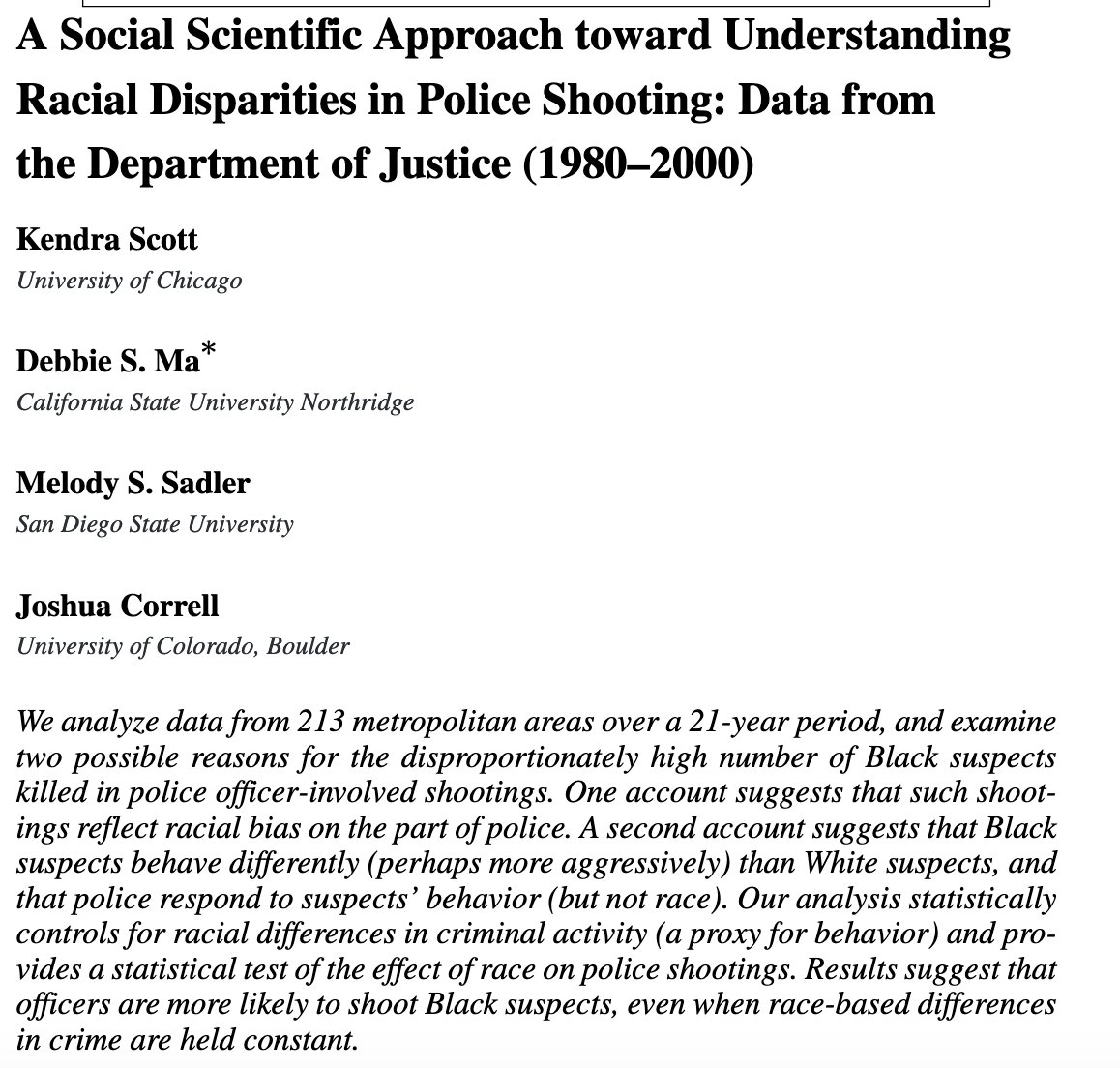

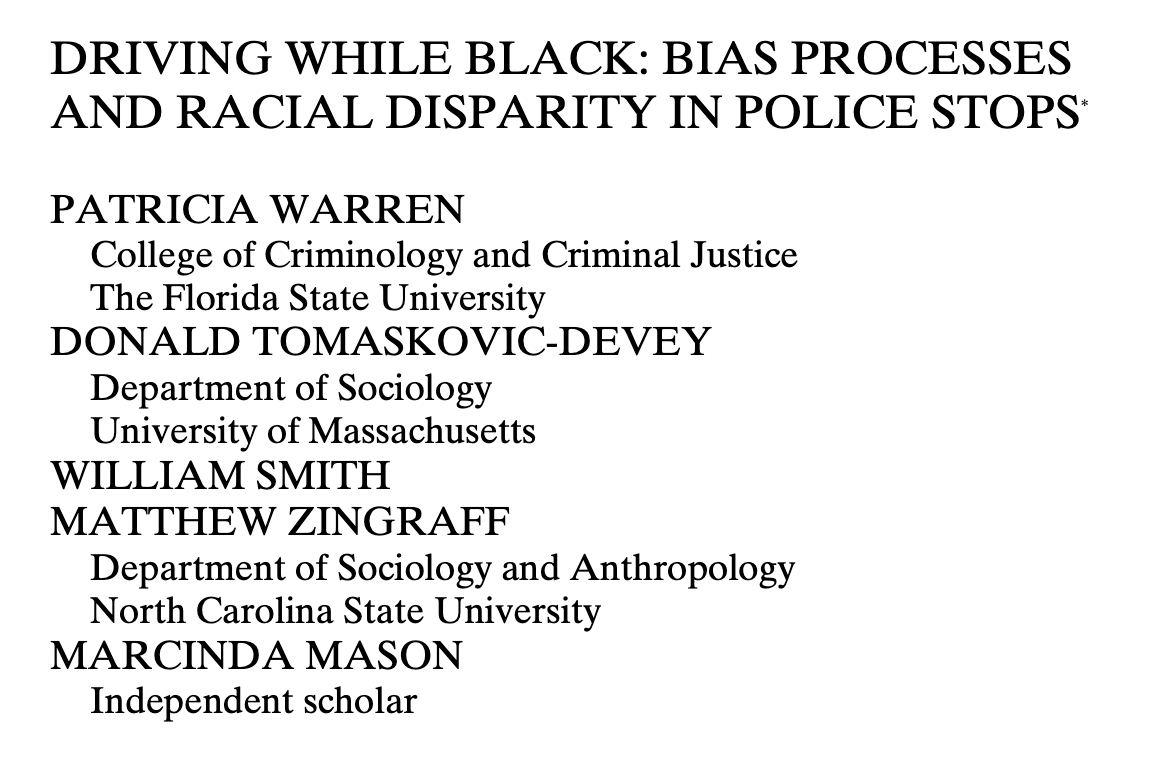

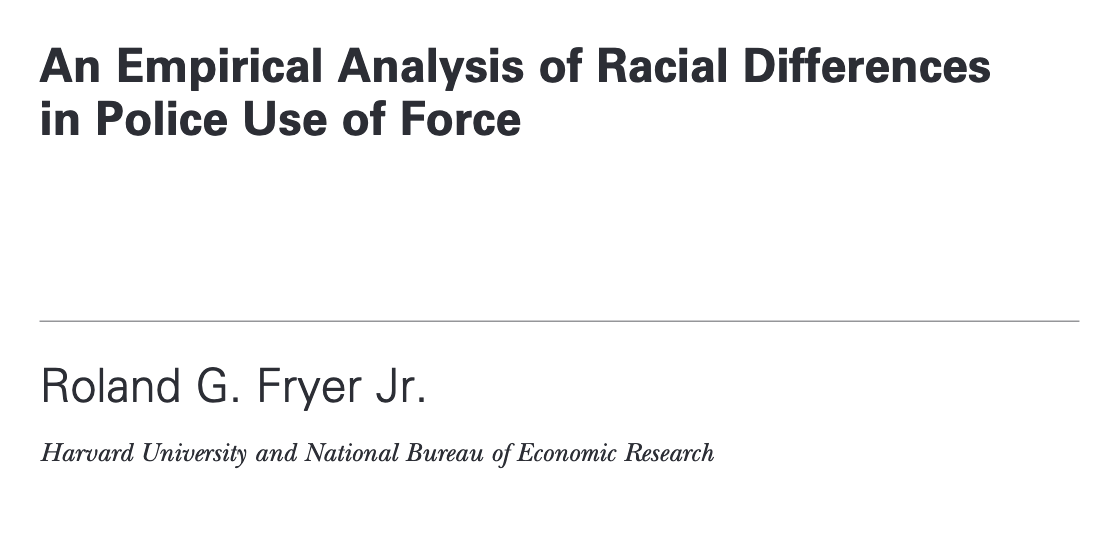


![8/ "The targeting of [marijuana] enforcement efforts toward blacks and Hispanics is dramatically out of proportion to national statistics that suggest comparable usage rates across racial groups." 8/ "The targeting of [marijuana] enforcement efforts toward blacks and Hispanics is dramatically out of proportion to national statistics that suggest comparable usage rates across racial groups."](https://pbs.twimg.com/media/EZmtk2MWAAQOyBv.jpg)
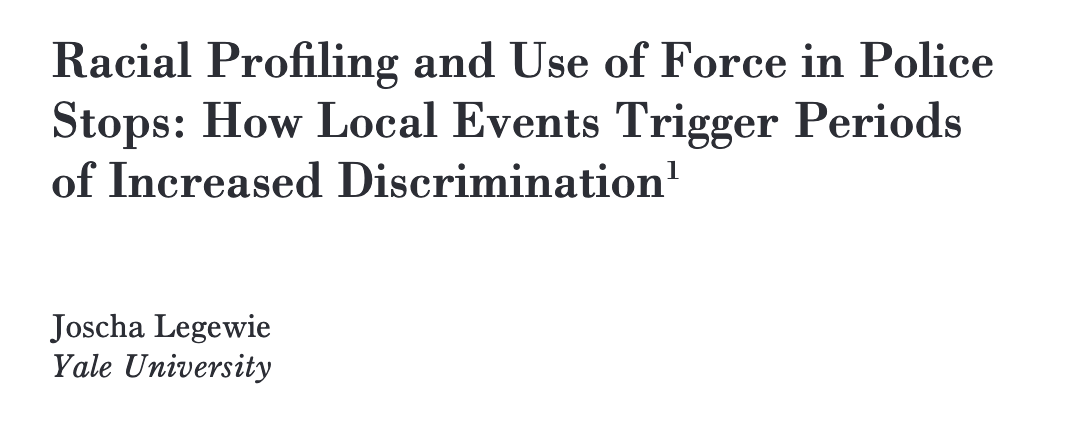
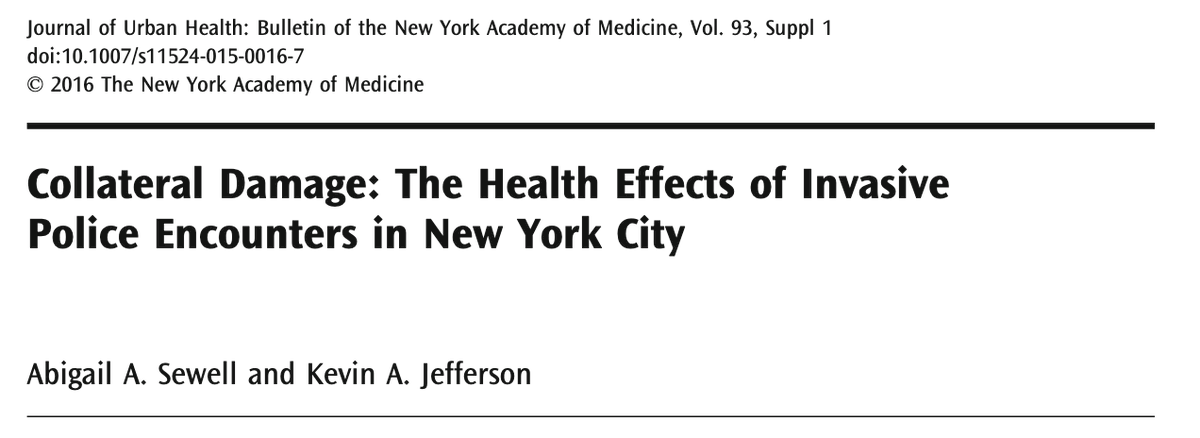
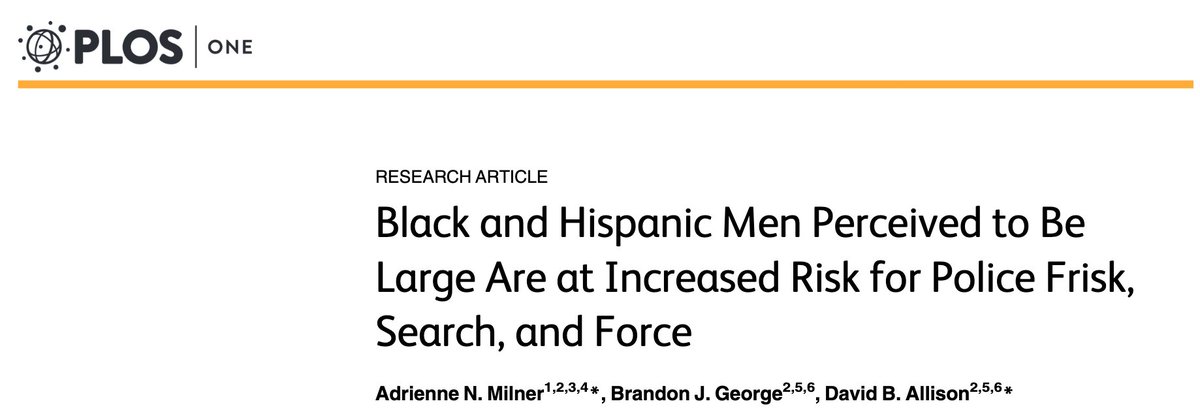

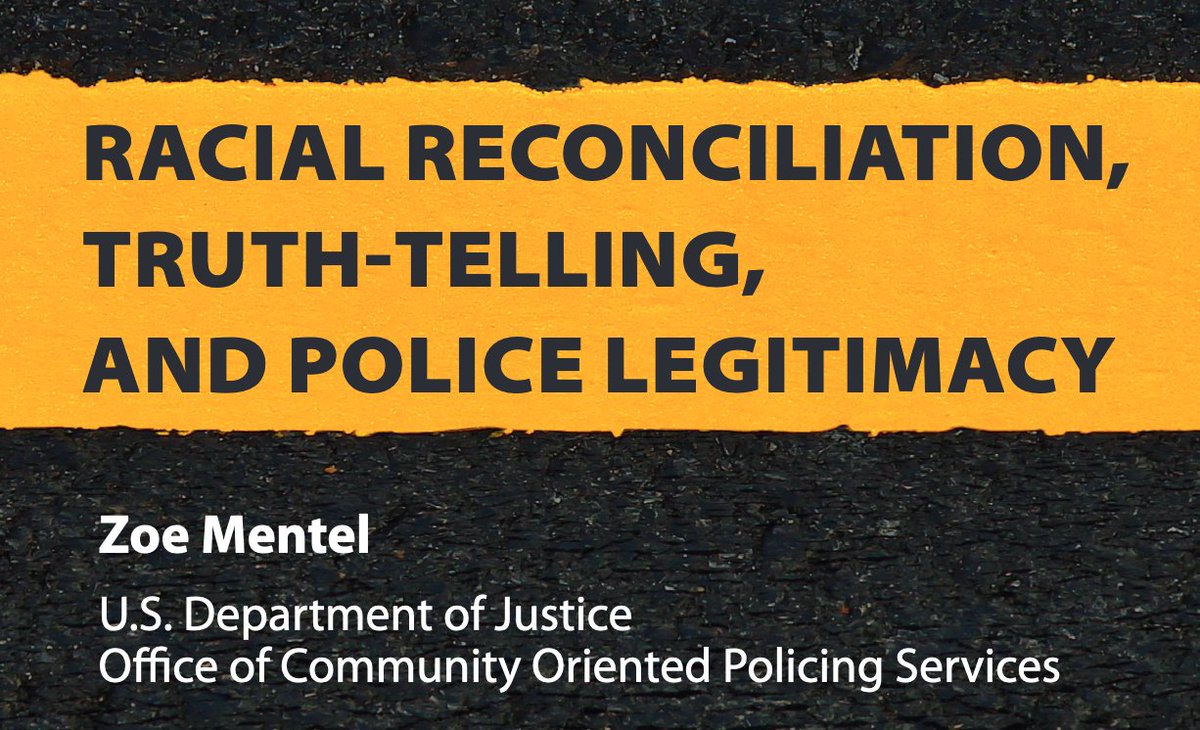
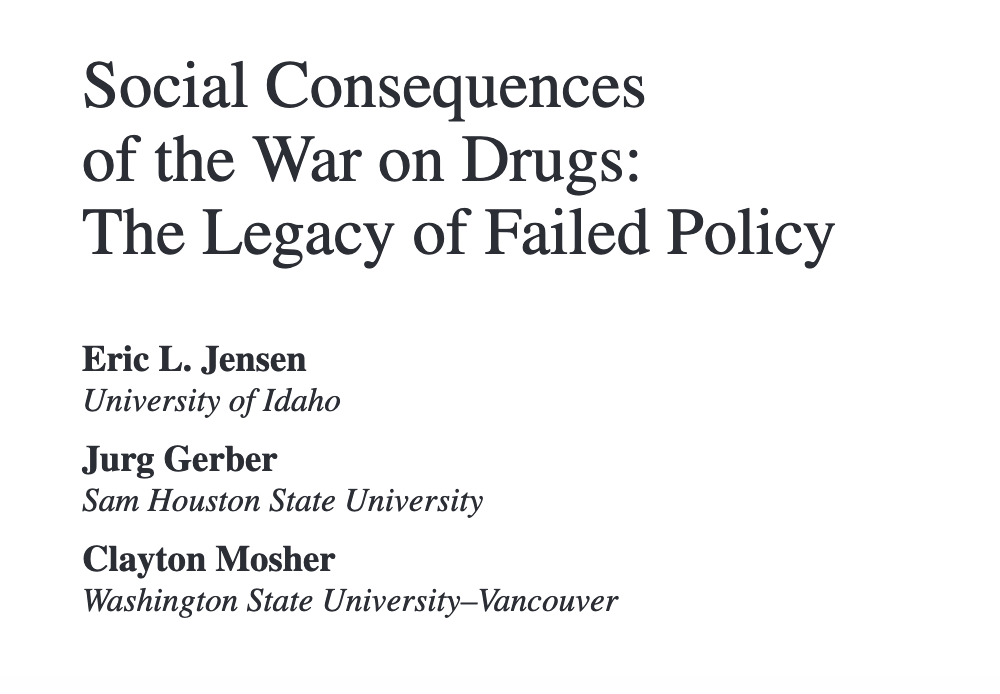
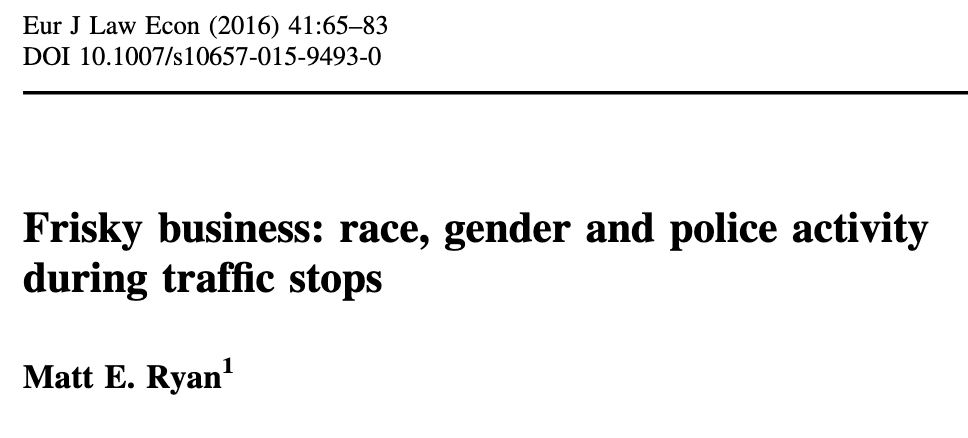
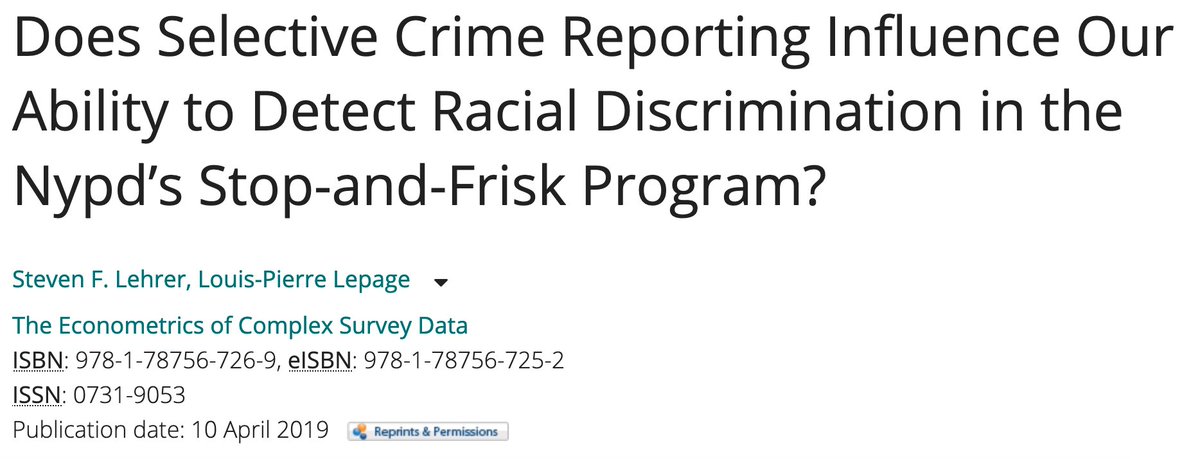
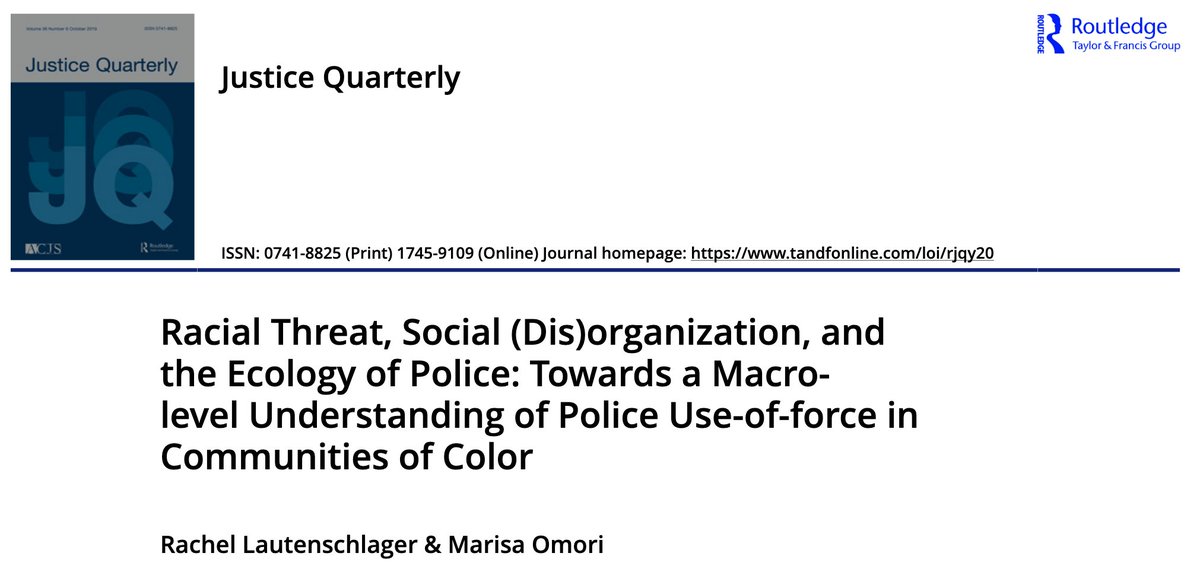
![18/ Repeated unjustified encounters with police "correlates with dimmer views of law enforcement and [may lead to] ... police avoidance, or help-seeking behavior in the context of criminal victimization." 18/ Repeated unjustified encounters with police "correlates with dimmer views of law enforcement and [may lead to] ... police avoidance, or help-seeking behavior in the context of criminal victimization."](https://pbs.twimg.com/media/EZnAWYNWoAQcfuG.jpg)
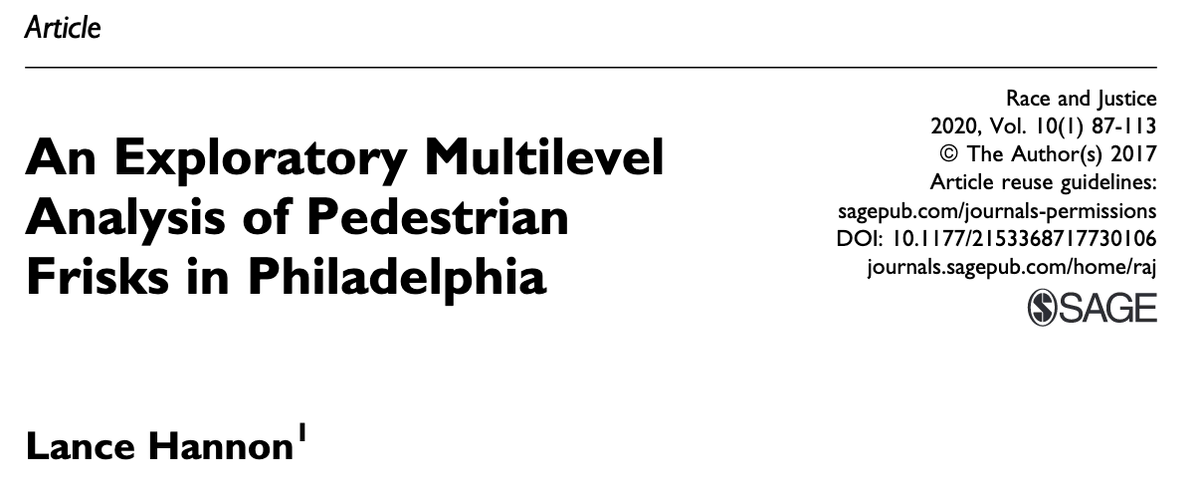
![20/ "Blacks/Latinos were significantly more likely to have been arrested and incarcerated [but] There were no significant differences in a circumscribed set illegal behaviors (i.e., sex for money or drugs, selling drugs) by race." 20/ "Blacks/Latinos were significantly more likely to have been arrested and incarcerated [but] There were no significant differences in a circumscribed set illegal behaviors (i.e., sex for money or drugs, selling drugs) by race."](https://pbs.twimg.com/media/EZnBdfcWkAAFRyJ.png)
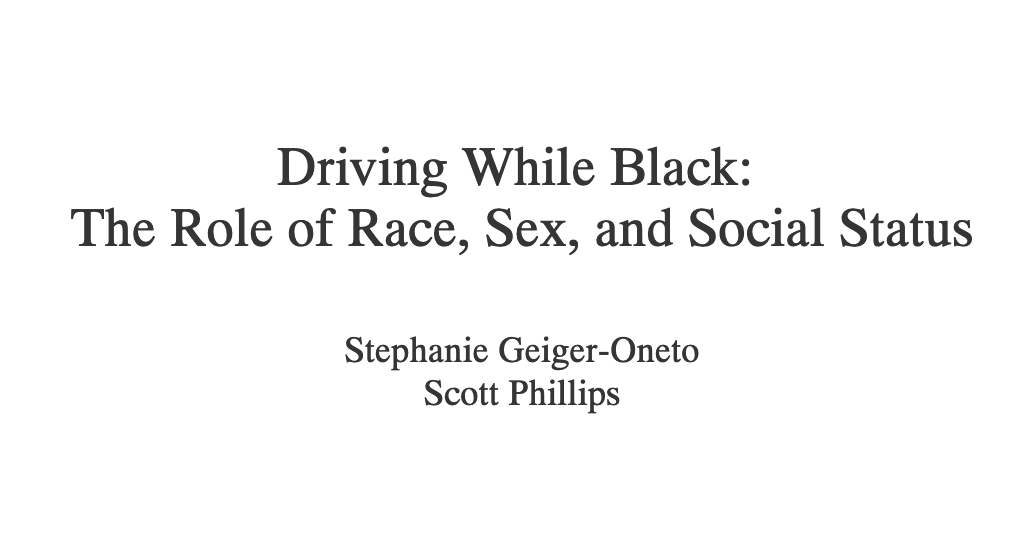
![23/ "Our analyses indicate that the [Tampa] PD’s bicycle enforcement did not produce a community benefit in terms of crime reduction but did burden individual bicyclists, particularly Black bicyclists." 23/ "Our analyses indicate that the [Tampa] PD’s bicycle enforcement did not produce a community benefit in terms of crime reduction but did burden individual bicyclists, particularly Black bicyclists."](https://pbs.twimg.com/media/EZnH-EDWsAM9MA6.jpg)


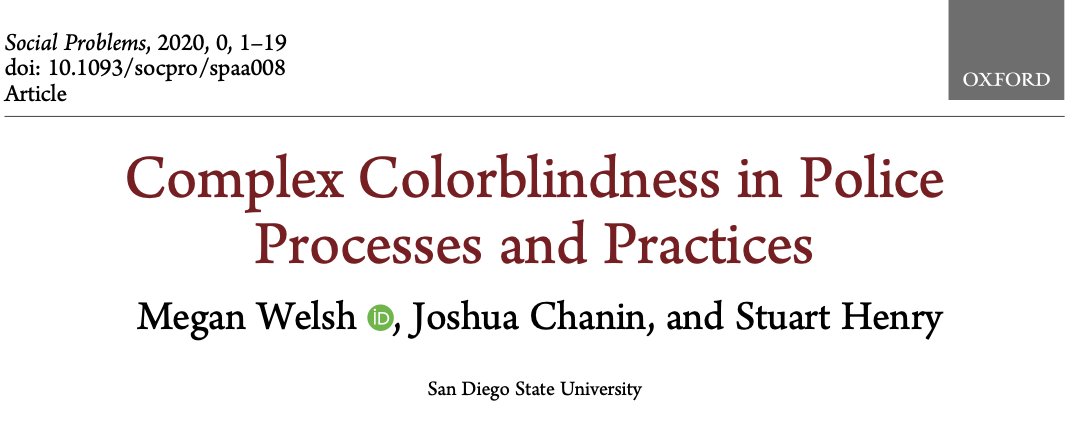


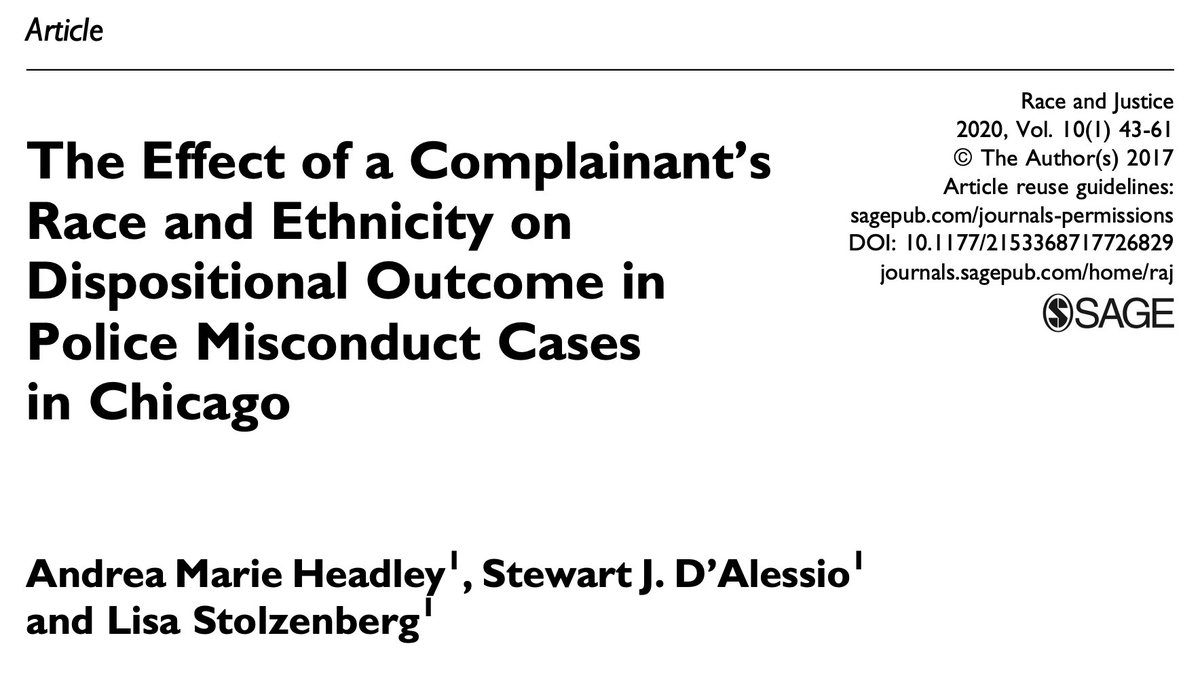
![31/ "Racial disparities in [Kansas City] police stops are concentrated in investigatory vehicle stops... The overwhelming majority of people stopped in this way are innocent, and the experience causes psychological harm and erodes trust in and cooperation with the police." 31/ "Racial disparities in [Kansas City] police stops are concentrated in investigatory vehicle stops... The overwhelming majority of people stopped in this way are innocent, and the experience causes psychological harm and erodes trust in and cooperation with the police."](https://pbs.twimg.com/media/EZoHY9DXgAAjNh0.jpg)

![33/ "Milwaukee’s neighborhoods, especially residents of black neighborhoods, were far less likely to report crime after [Frank] Jude’s beating was broadcast. The effect lasted for over a year and resulted in a total net loss of approximately 22,200 calls for service." 33/ "Milwaukee’s neighborhoods, especially residents of black neighborhoods, were far less likely to report crime after [Frank] Jude’s beating was broadcast. The effect lasted for over a year and resulted in a total net loss of approximately 22,200 calls for service."](https://pbs.twimg.com/media/EZoNvI0WAAAptTx.jpg)
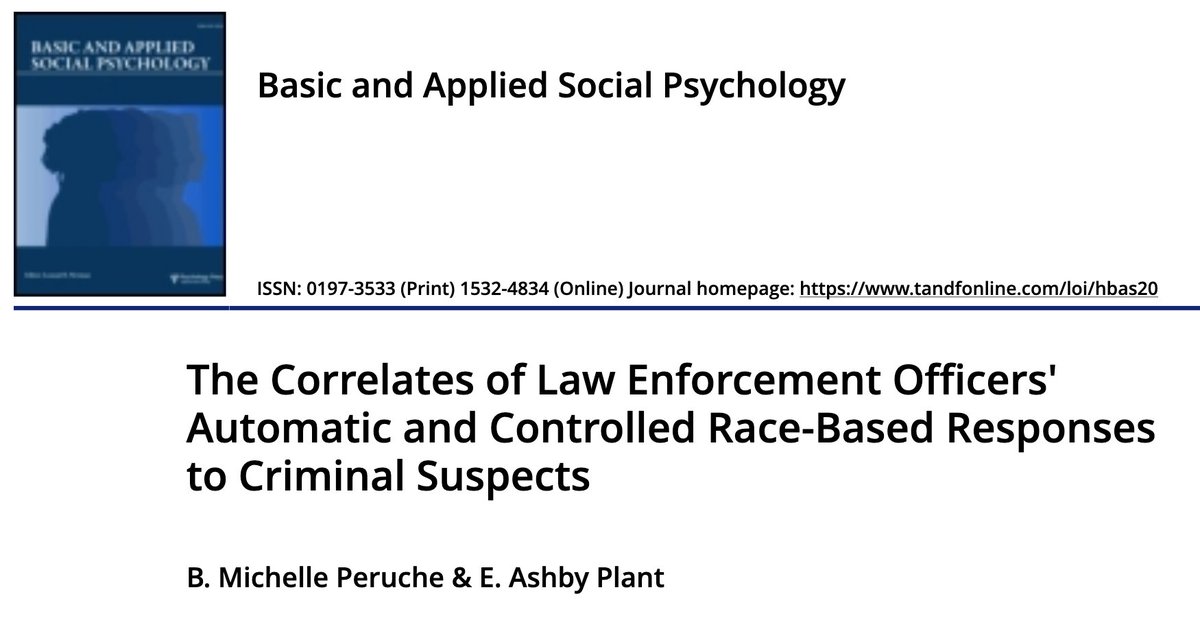
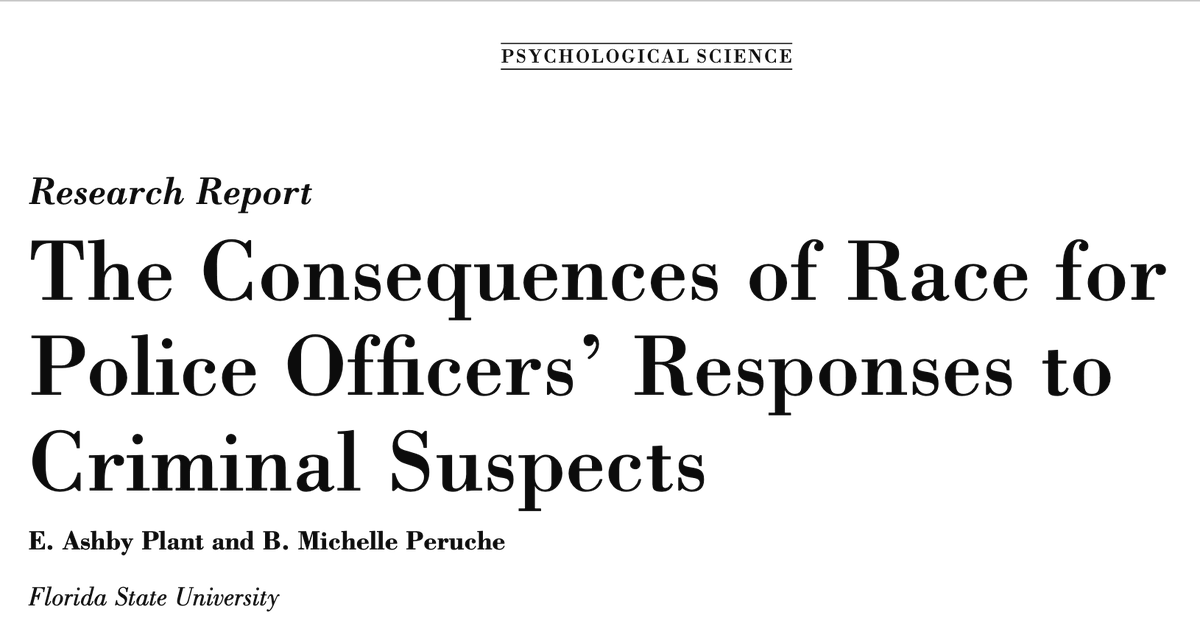
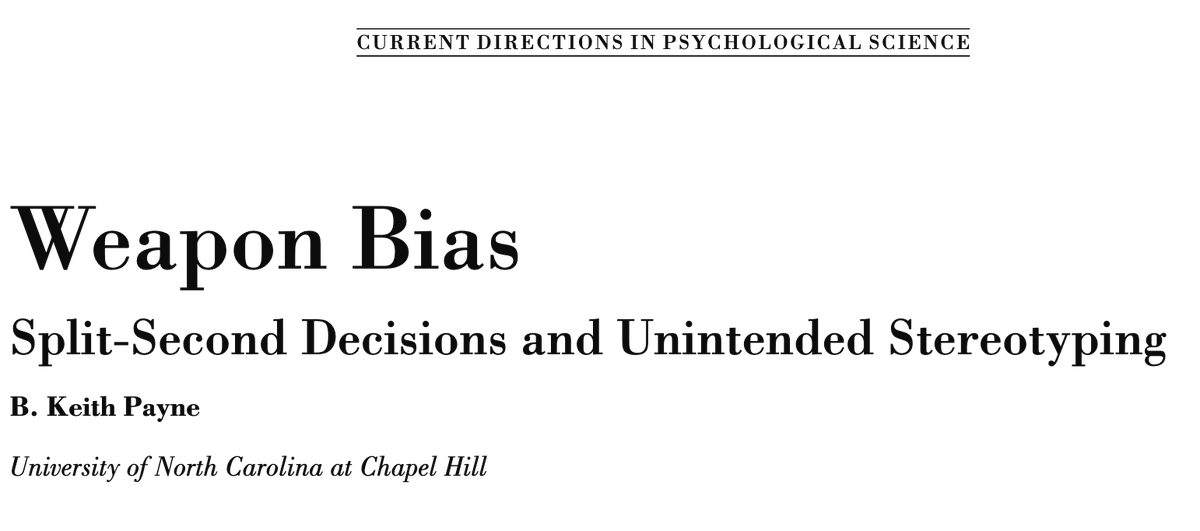



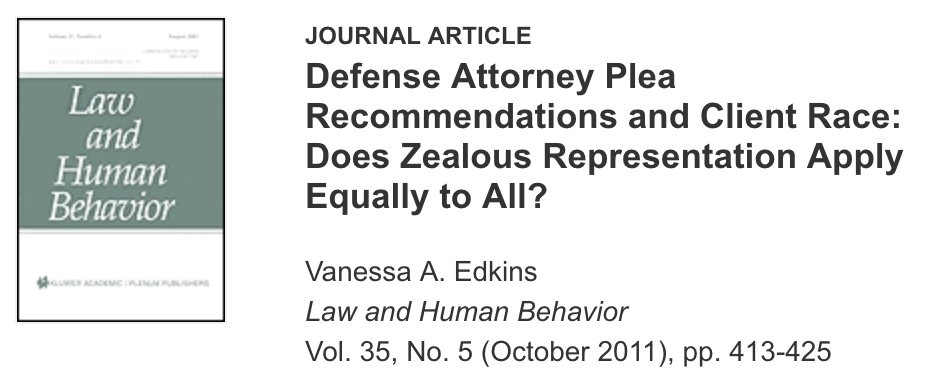

![42/ "[W]hile we do not find evidence of racial discrimination in the application of enhancements, they do act to pronounce the already large disparities in sentencing." 42/ "[W]hile we do not find evidence of racial discrimination in the application of enhancements, they do act to pronounce the already large disparities in sentencing."](https://pbs.twimg.com/media/EZroKh9WsAACr6W.jpg)
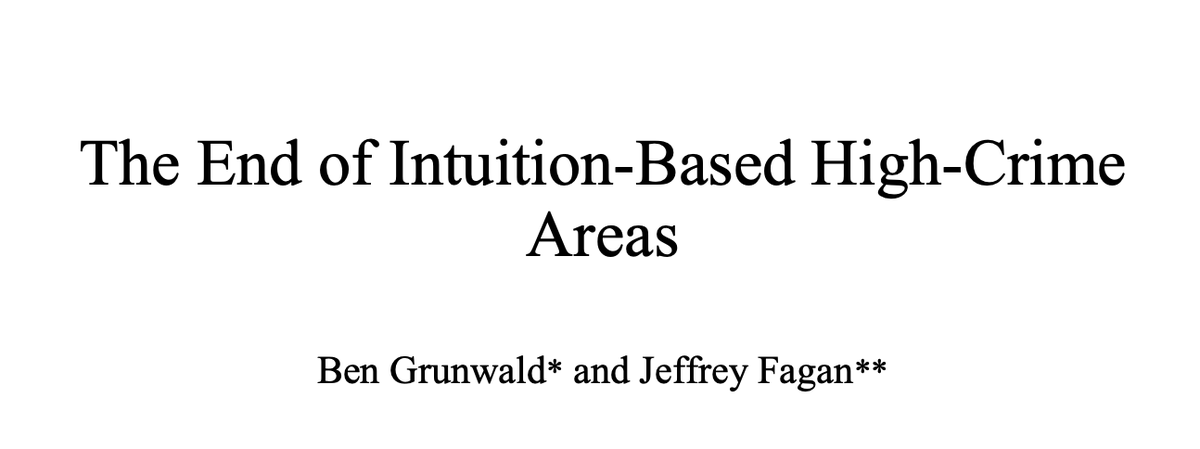


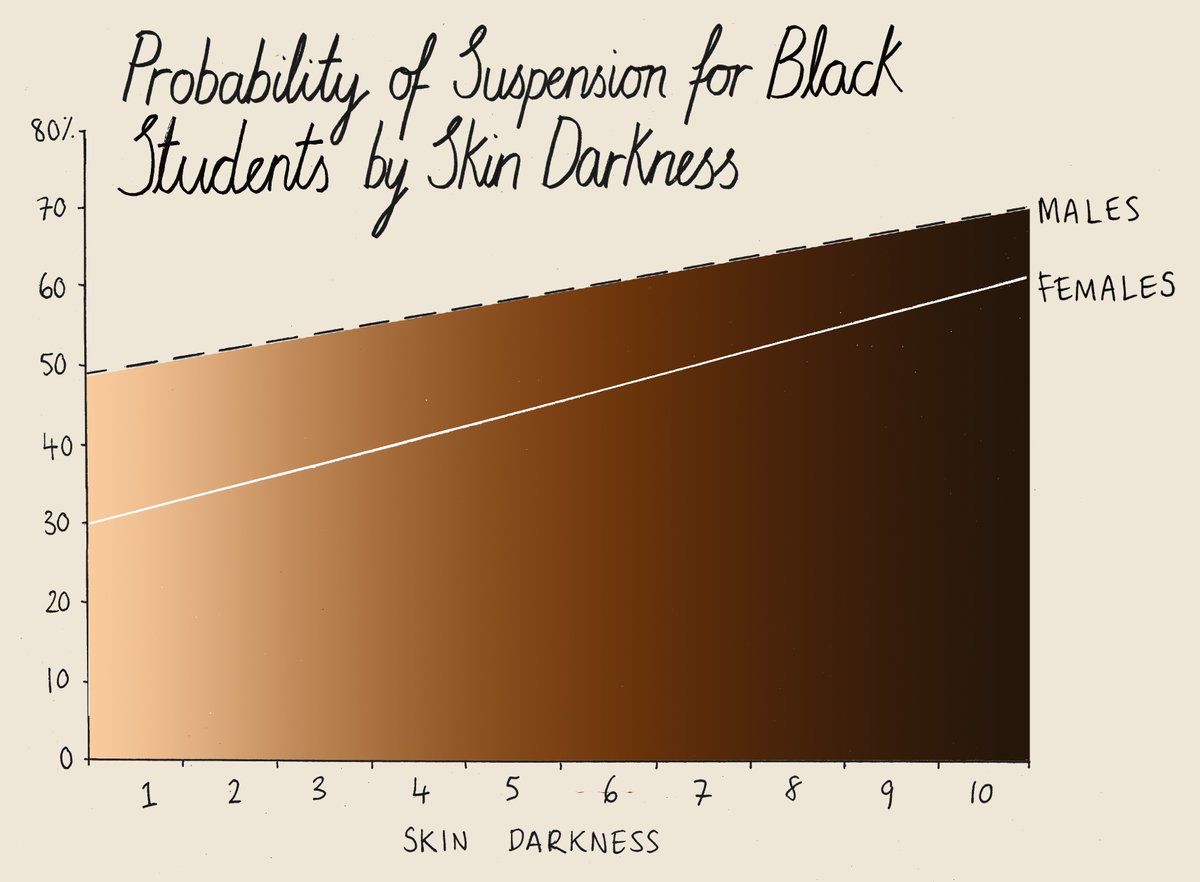
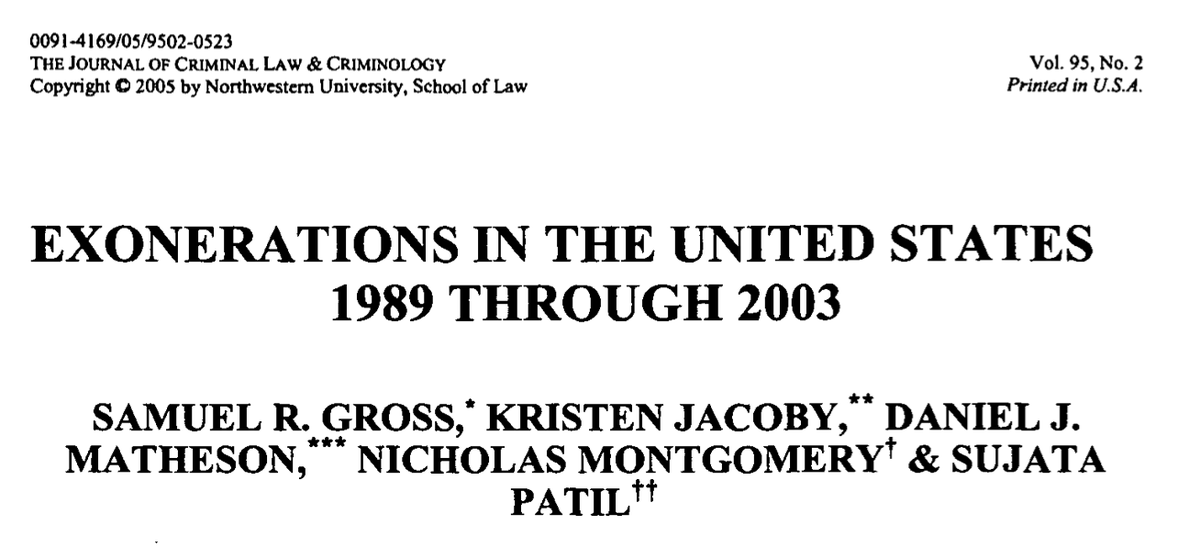
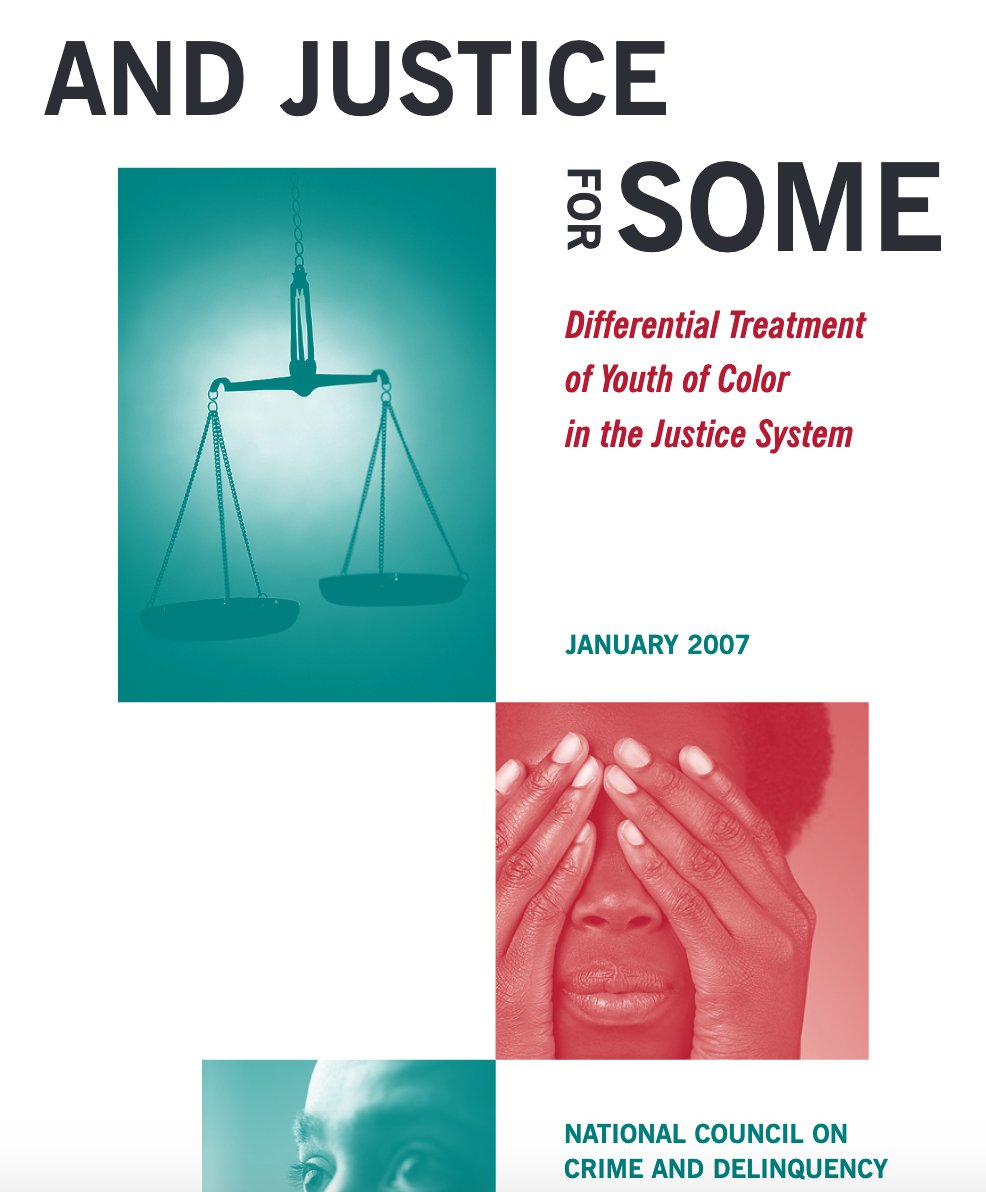
![50/ "Our investigation uncovered direct evidence of racial bias in the communications of influential Ferguson [PD] decision makers... The content of these communications is unequivocally derogatory,dehumanizing, and demonstrative of impermissible bias." - DOJ 50/ "Our investigation uncovered direct evidence of racial bias in the communications of influential Ferguson [PD] decision makers... The content of these communications is unequivocally derogatory,dehumanizing, and demonstrative of impermissible bias." - DOJ](https://pbs.twimg.com/media/EZr9y9fXYAEItrX.jpg)
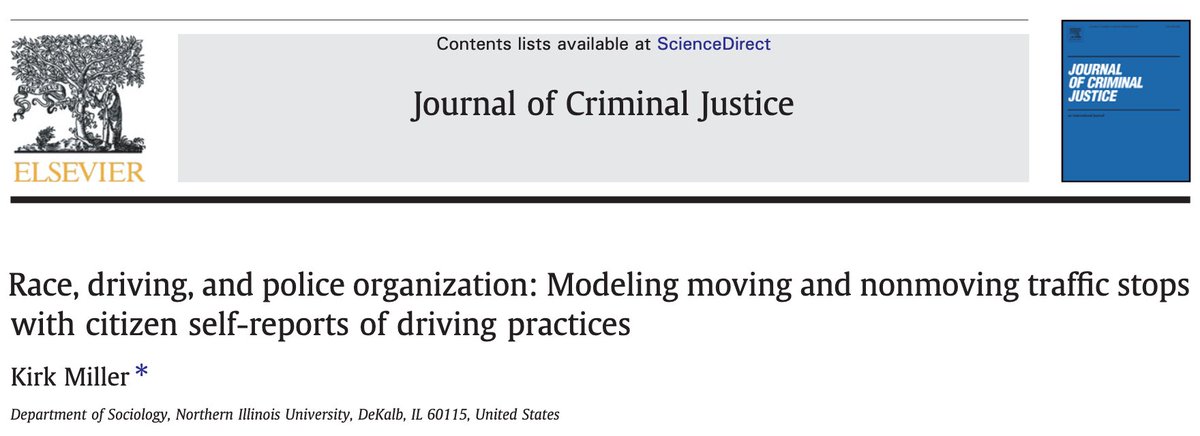
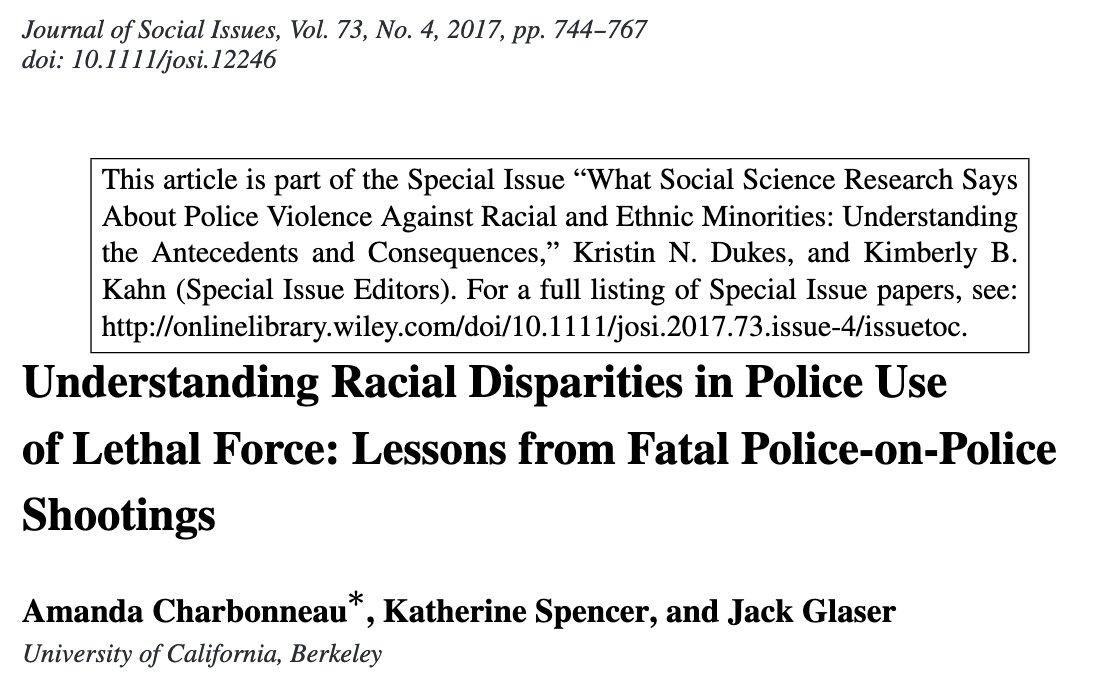
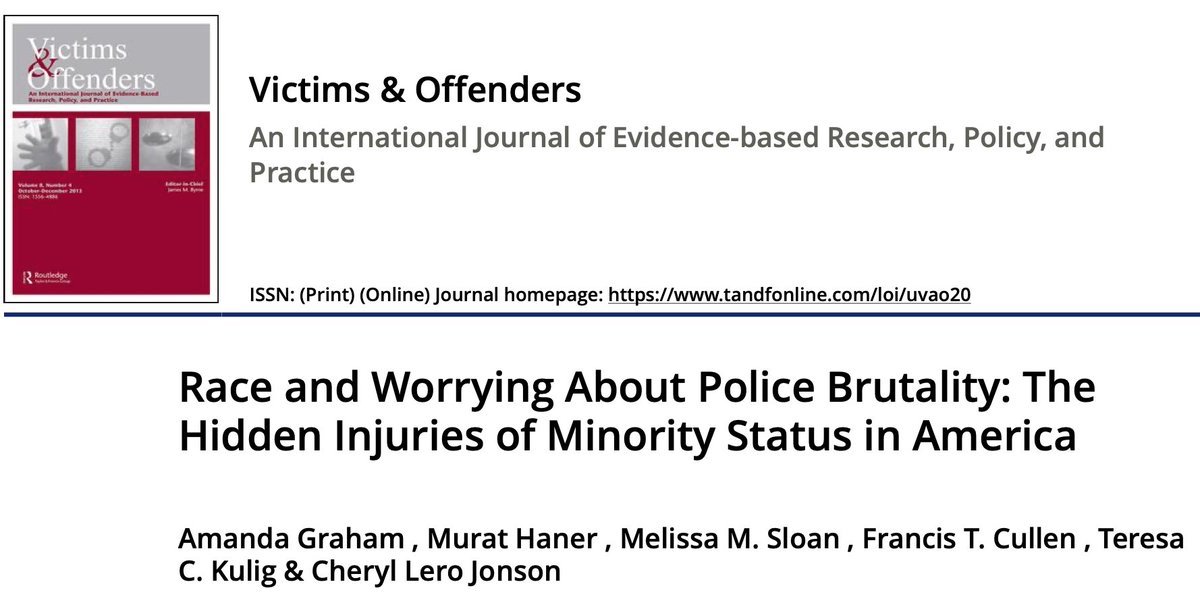
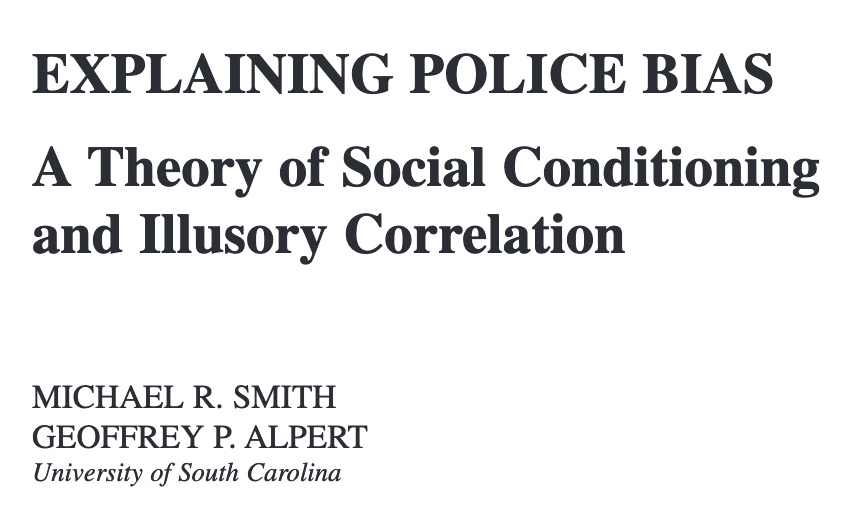
![58/ "Although our results do indicate that racial unevenness is associated with the arrest disparities for 'softer' crimes such as drugs and weapons violations, it is not entirely clear whether this effect reflects implicit or explicit biases rooted in race, class, or [both]." 58/ "Although our results do indicate that racial unevenness is associated with the arrest disparities for 'softer' crimes such as drugs and weapons violations, it is not entirely clear whether this effect reflects implicit or explicit biases rooted in race, class, or [both]."](https://pbs.twimg.com/media/EZwY2e3WoAEWMGC.jpg)

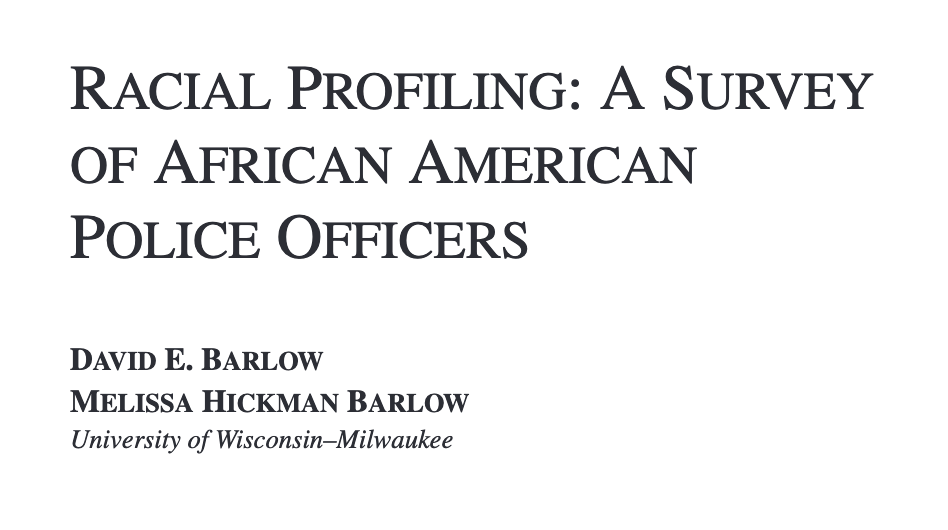
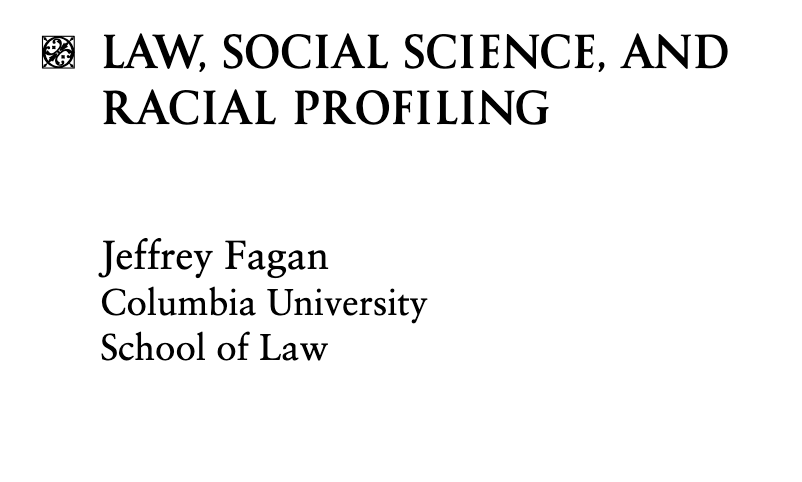
![62/ [an older article, but feels relevant now] "Although police brutality heightened white sensitivity to specific kinds of police brutality ... it did not lead more whites to conclude that racism is prevalent in America." 62/ [an older article, but feels relevant now] "Although police brutality heightened white sensitivity to specific kinds of police brutality ... it did not lead more whites to conclude that racism is prevalent in America."](https://pbs.twimg.com/media/EZwdsNVXYAEsecr.png)
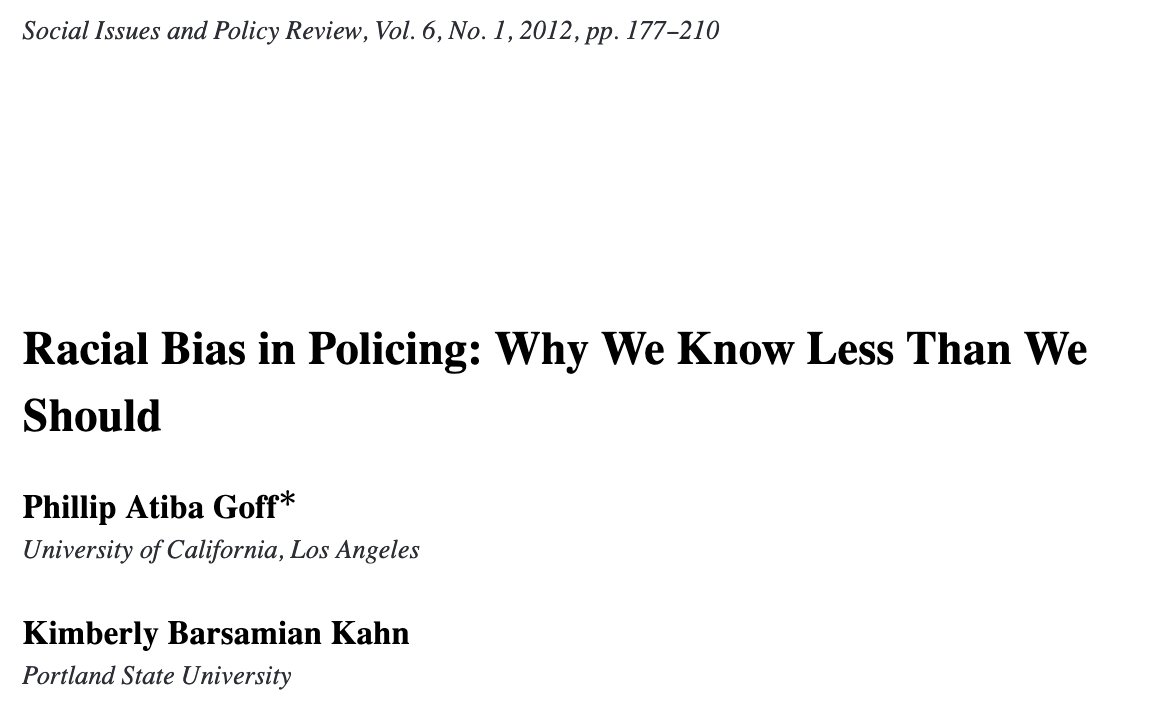
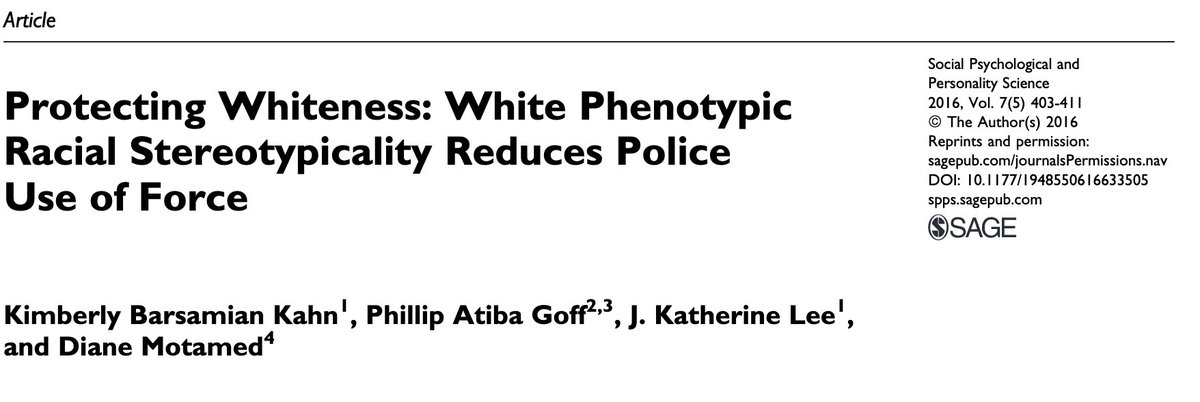
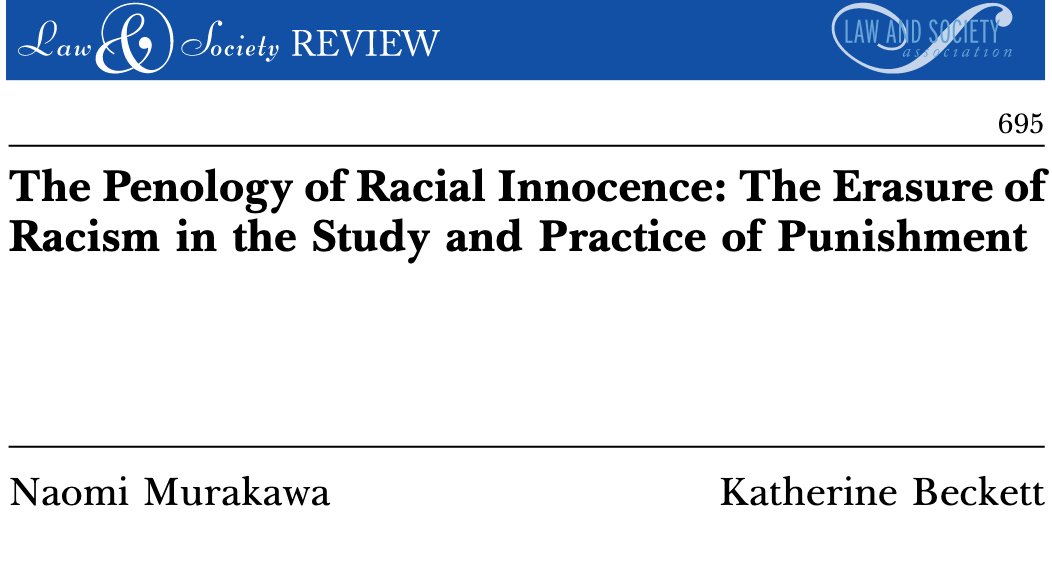
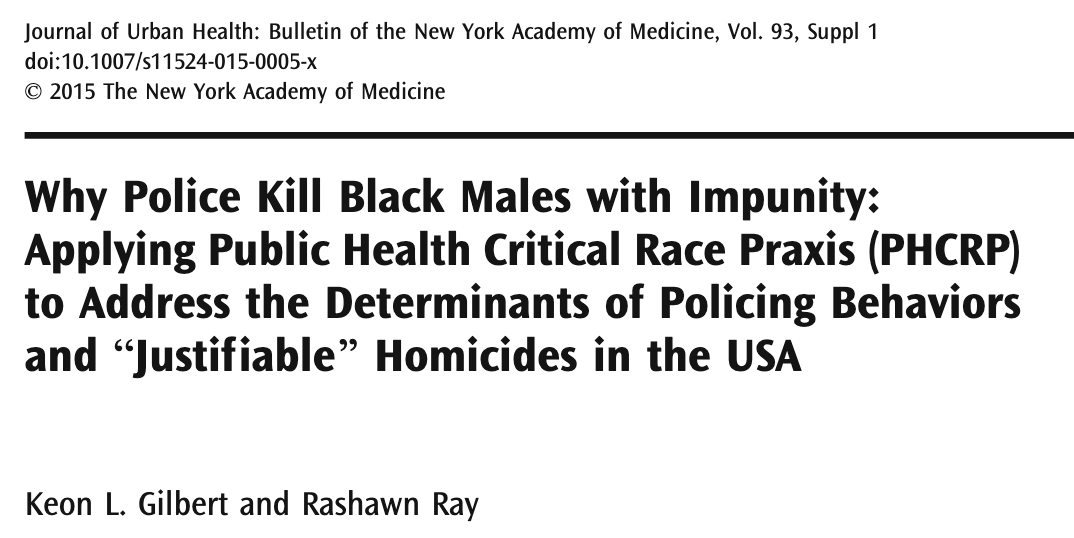
![67/ "Differential policing and differential perceptions of the police may in turn be relevant to explaining crime differences between neighborhoods of different race/ethnic compositions... [and] further deteriorate the neighborhood’s capacity to address problems like crime." 67/ "Differential policing and differential perceptions of the police may in turn be relevant to explaining crime differences between neighborhoods of different race/ethnic compositions... [and] further deteriorate the neighborhood’s capacity to address problems like crime."](https://pbs.twimg.com/media/EZwlhOcWoAEnqrz.png)
![68/ "Disparities between blacks and whites are prominent in most [Vermont] jurisdictions, with blacks facing a higher probability of being stopped, of receiving harsher penalties, and of being arrested and searched." 68/ "Disparities between blacks and whites are prominent in most [Vermont] jurisdictions, with blacks facing a higher probability of being stopped, of receiving harsher penalties, and of being arrested and searched."](https://pbs.twimg.com/media/EZwnCuhWAAAvoEM.jpg)
![69/ "Using street stops [as the denominator], black citizens were approximately 2.5 times as likely to be fatally shot in 2015 and 2016, and about 2.4 times as likely to be fatally shot in 2017." 69/ "Using street stops [as the denominator], black citizens were approximately 2.5 times as likely to be fatally shot in 2015 and 2016, and about 2.4 times as likely to be fatally shot in 2017."](https://pbs.twimg.com/media/EZwolIaXgAIVEOQ.jpg)
![70/ "While both high and low performing [Cincinnati officer] groups disproportionately stopped Black drivers, the low performing group had a significantly higher rate of racial disproportionality than the high performing group." 70/ "While both high and low performing [Cincinnati officer] groups disproportionately stopped Black drivers, the low performing group had a significantly higher rate of racial disproportionality than the high performing group."](https://pbs.twimg.com/media/EZwr8PMXYAE_IYI.jpg)

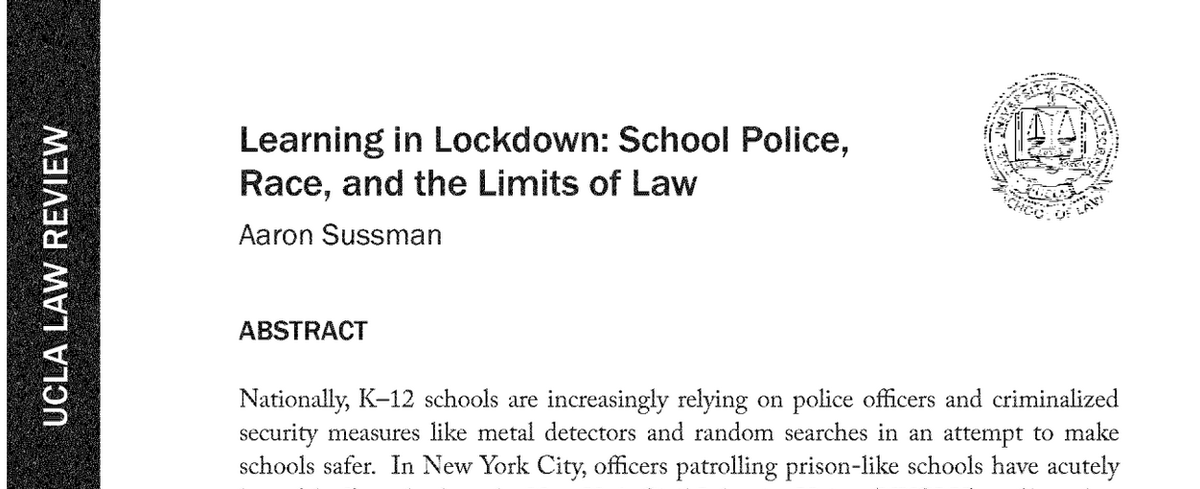
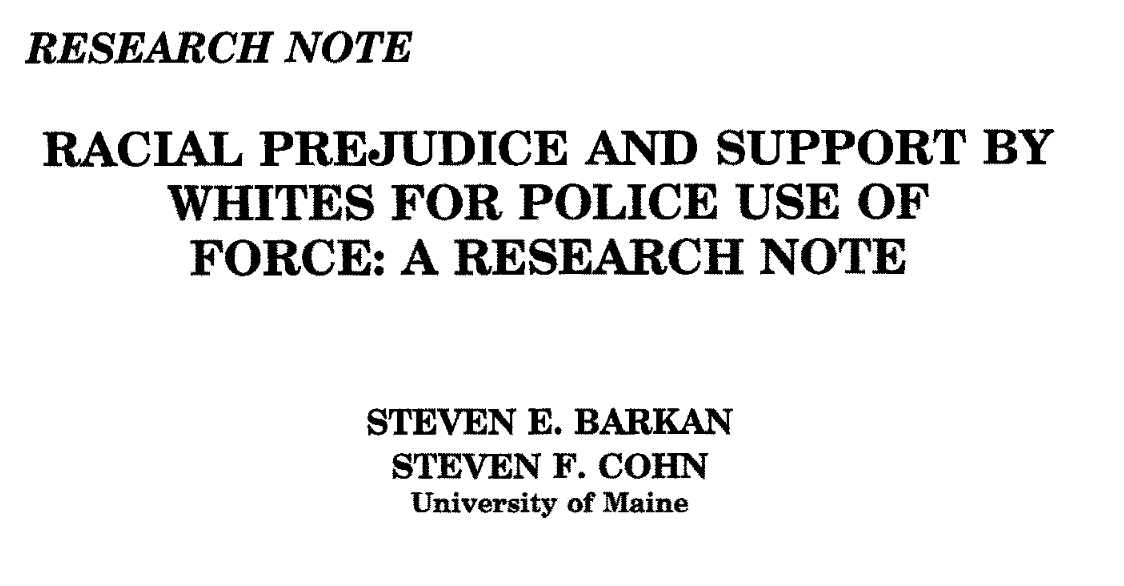
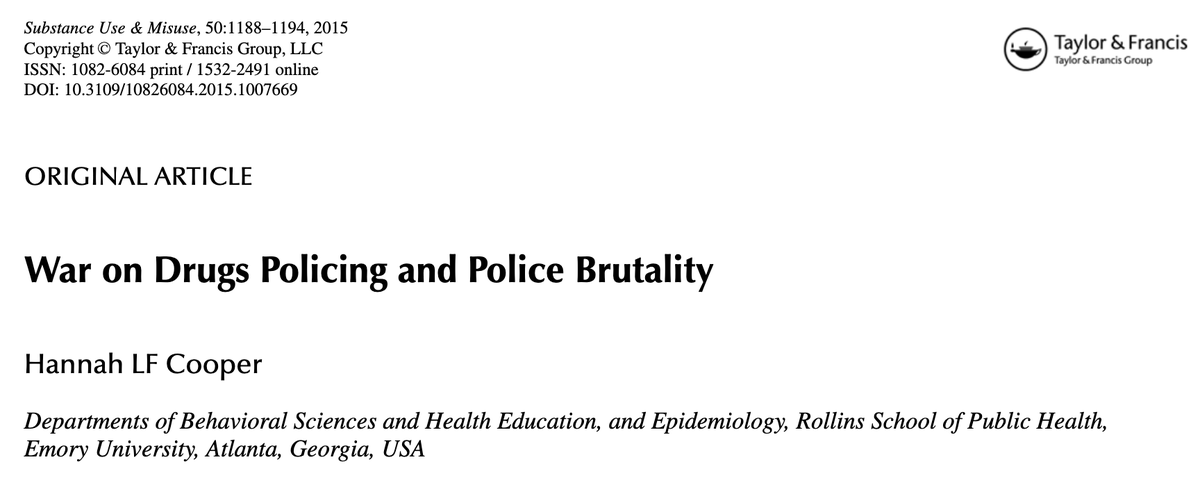
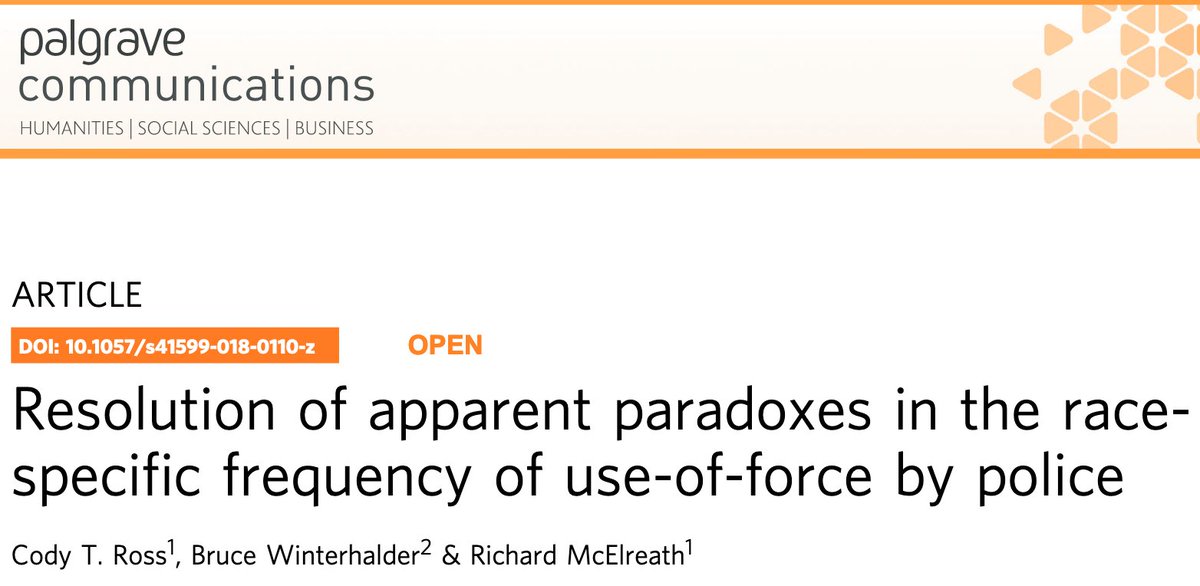
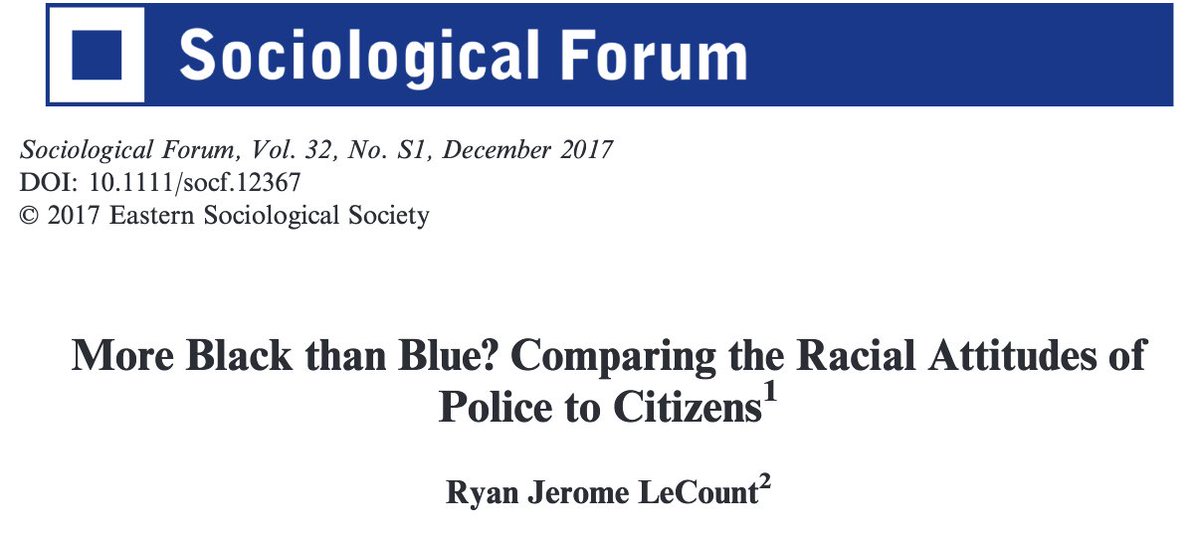
![79/ "The burden of [Marijuana in Public View] arrest has been falling disproportionately on blacks and Hispanics and that members of these minority groups, on average, have been receiving harsher treatment within the criminal justice system." 79/ "The burden of [Marijuana in Public View] arrest has been falling disproportionately on blacks and Hispanics and that members of these minority groups, on average, have been receiving harsher treatment within the criminal justice system."](https://pbs.twimg.com/media/EZ2LoHqWkAQWtcF.png)
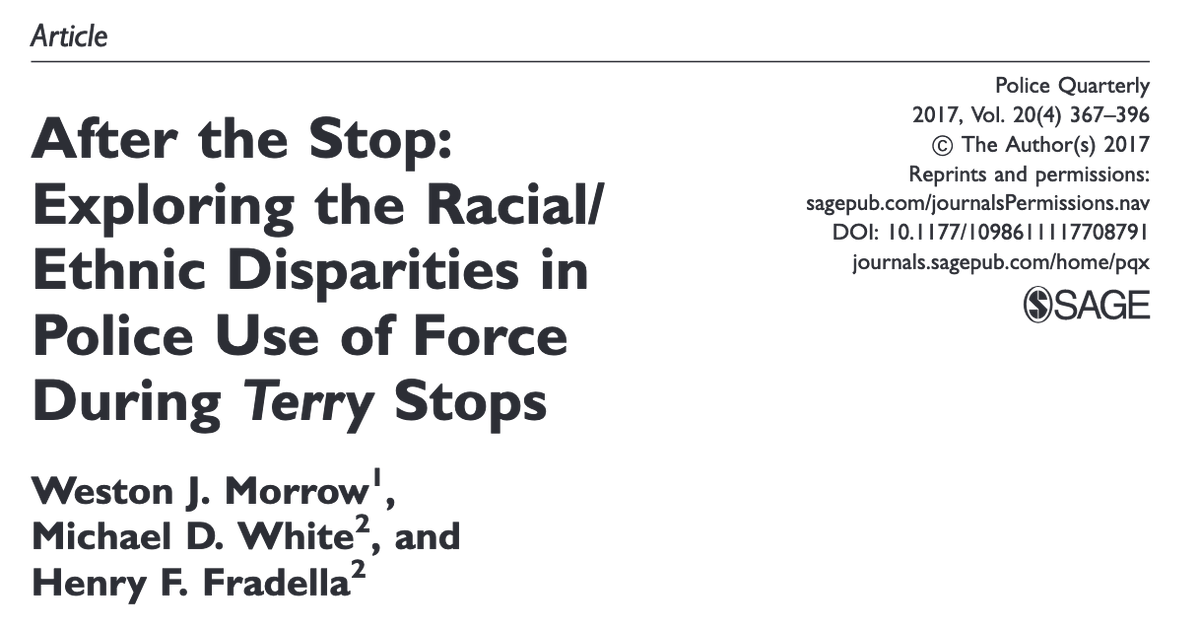


![83/ "Beat cops generally show no evidence of SDT bias in our [simulated threat] task. The special-unit officers, however, showed robust bias." 83/ "Beat cops generally show no evidence of SDT bias in our [simulated threat] task. The special-unit officers, however, showed robust bias."](https://pbs.twimg.com/media/EZ2mqeCXkAAkWa0.png)
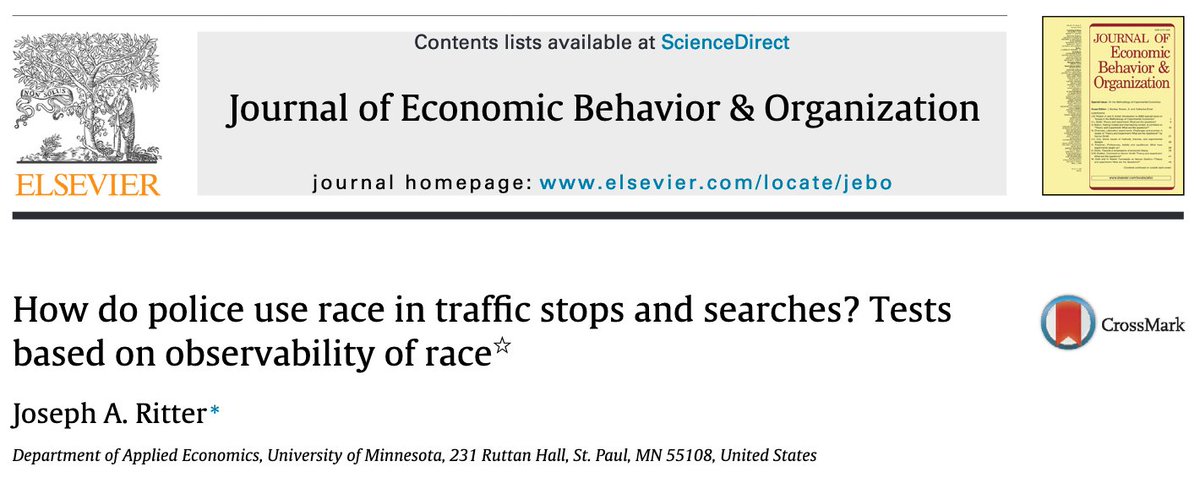
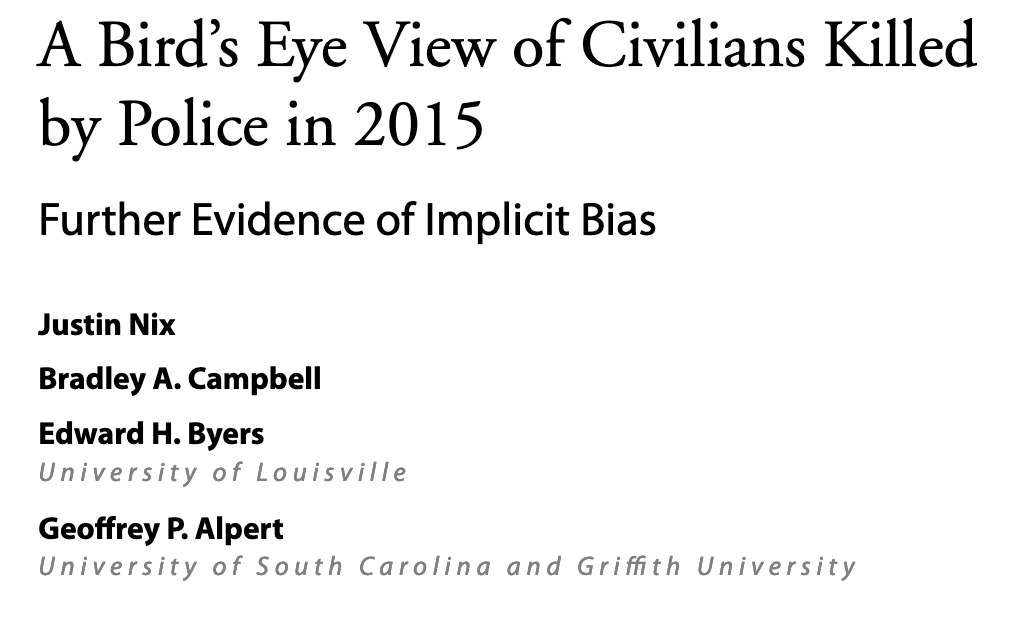
![86/ "Rather than addressing those underlying conditions, ... policy-makers have chosen to respond with a policy that [] stigmatizes minority residents, that has limited crime-control benefits, and that imposes large negative spillovers on disadvantaged neighborhoods." ( @aziz_huq) 86/ "Rather than addressing those underlying conditions, ... policy-makers have chosen to respond with a policy that [] stigmatizes minority residents, that has limited crime-control benefits, and that imposes large negative spillovers on disadvantaged neighborhoods." ( @aziz_huq)](https://pbs.twimg.com/media/EZ2t5OoX0AAaxAz.png)
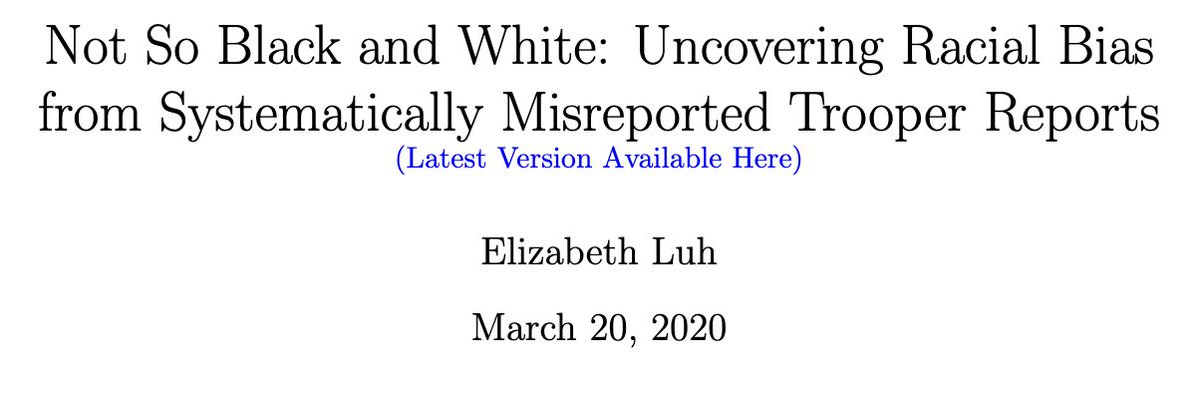
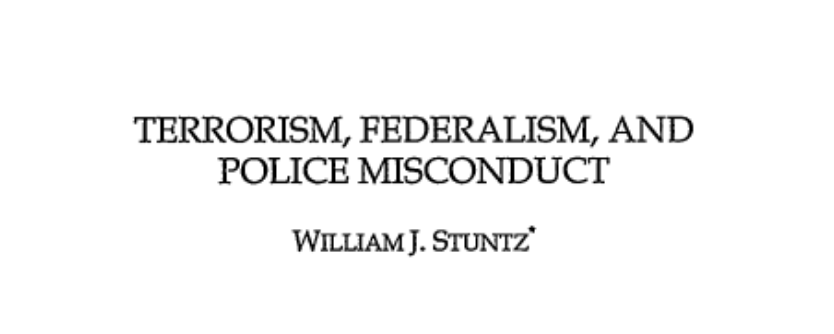

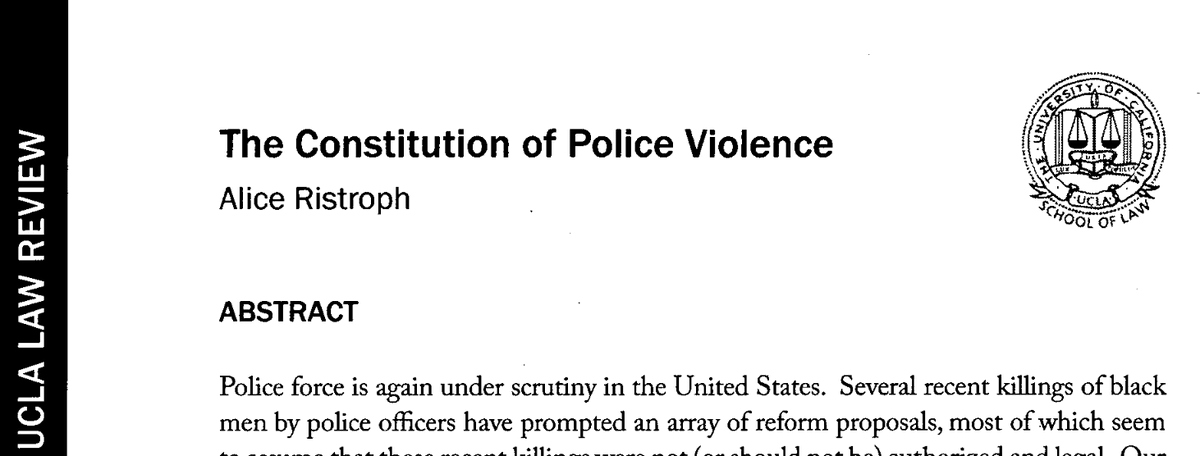
![94/ "The research above highlights the potentially widespread effects of implicit racial biases in policing... [Police] may be more inclined to pay particular attention to non-White individuals when they are on patrol." 94/ "The research above highlights the potentially widespread effects of implicit racial biases in policing... [Police] may be more inclined to pay particular attention to non-White individuals when they are on patrol."](https://pbs.twimg.com/media/EZ7YrtSWsAIFVrU.jpg)
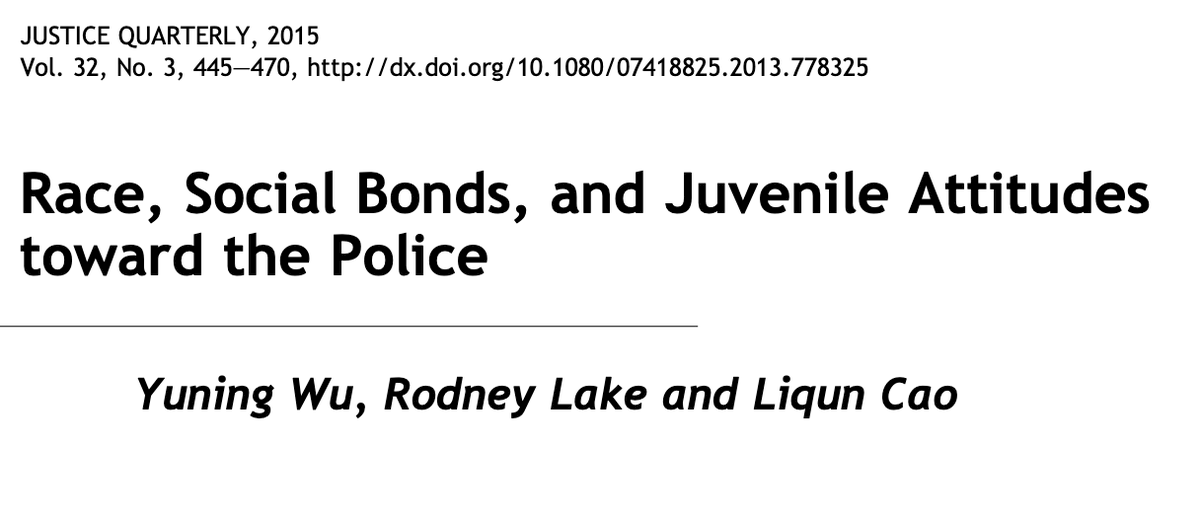
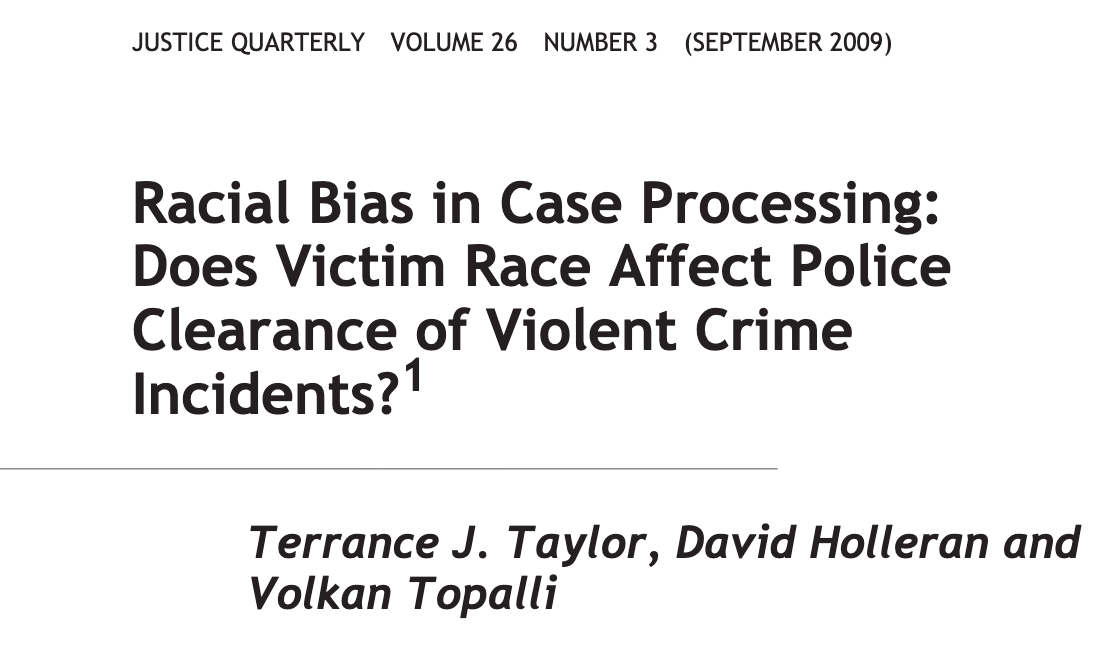
![97/ "For a sample of Syracuse Police stop data... The odds of a black driver being stopped (relative to nonblack drivers) increase 15% in daylight [when race is more easily observed] as compared to darkness." 97/ "For a sample of Syracuse Police stop data... The odds of a black driver being stopped (relative to nonblack drivers) increase 15% in daylight [when race is more easily observed] as compared to darkness."](https://pbs.twimg.com/media/EZ7dOauXgAAMwOB.png)
![98/ "Police discretion enables officers to make decisions based partially on stereo-types and reputations, resulting in overselection of people of color in stops and arrests. In addition... White youth tend to receive more second chances [than] youth of color." 98/ "Police discretion enables officers to make decisions based partially on stereo-types and reputations, resulting in overselection of people of color in stops and arrests. In addition... White youth tend to receive more second chances [than] youth of color."](https://pbs.twimg.com/media/EZ7e_6tWsAEYN85.png)
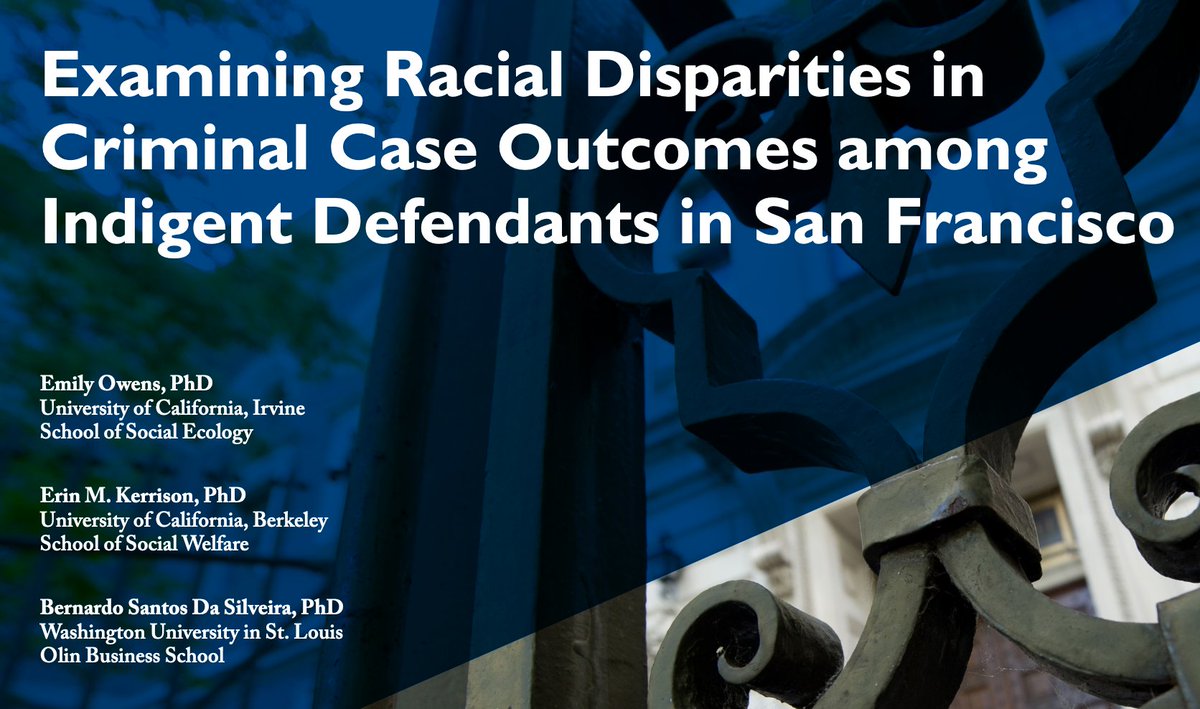

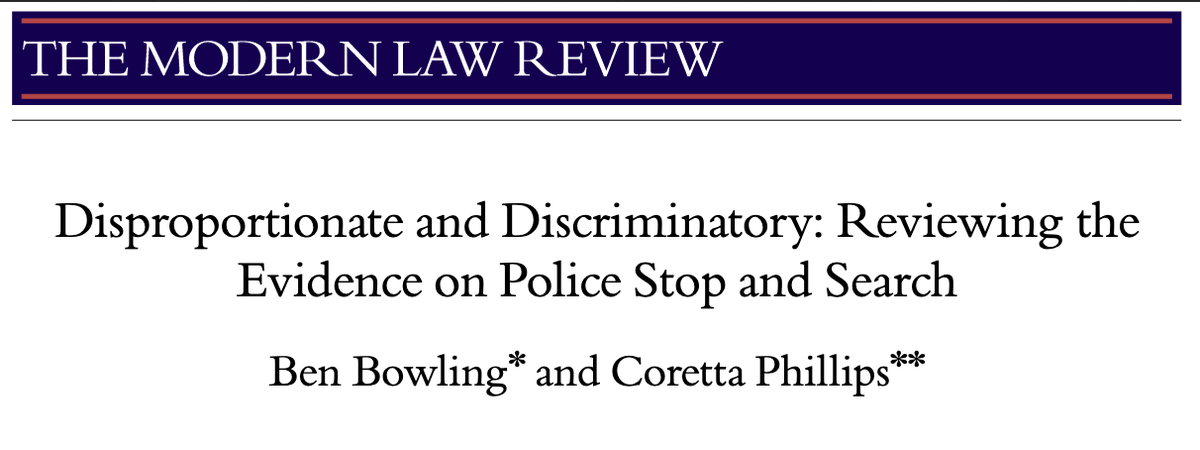
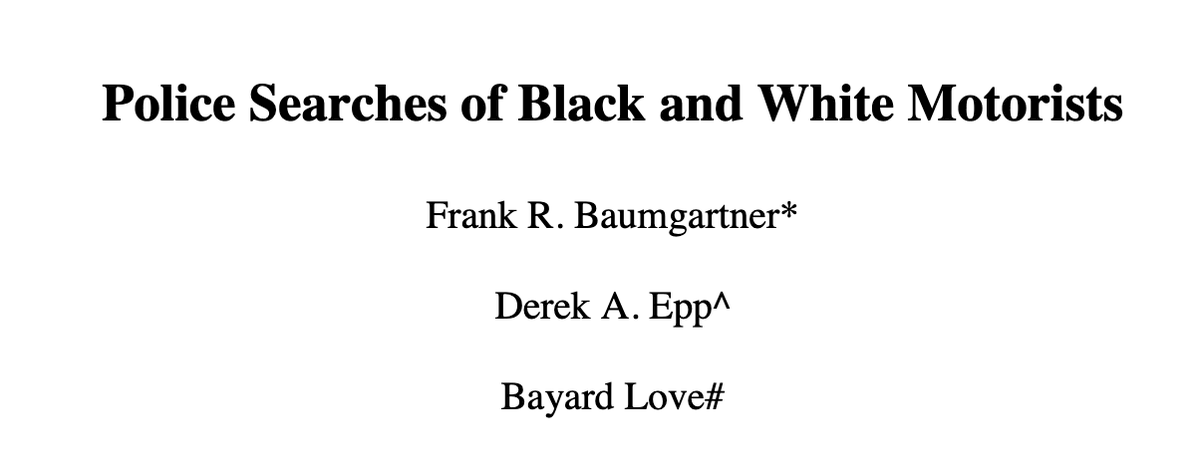
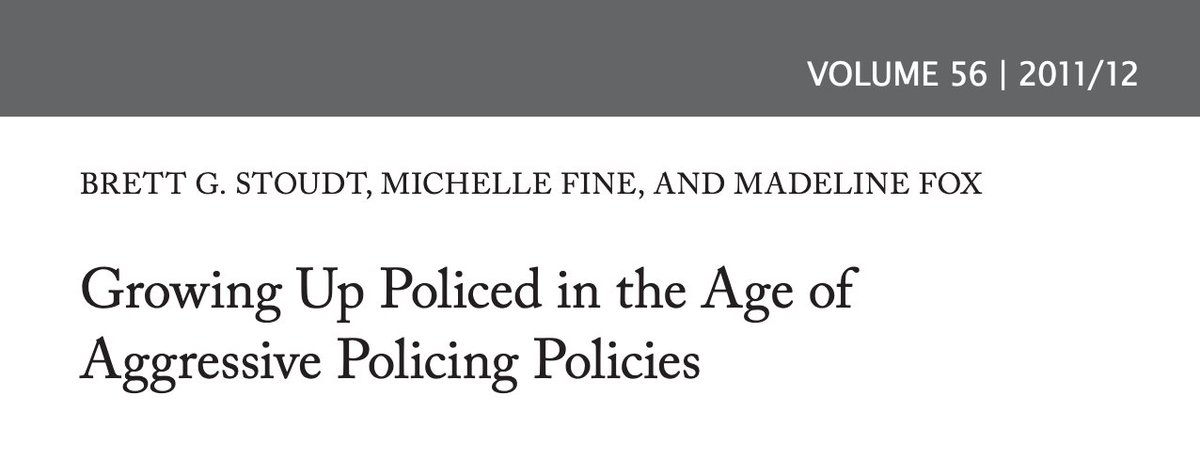
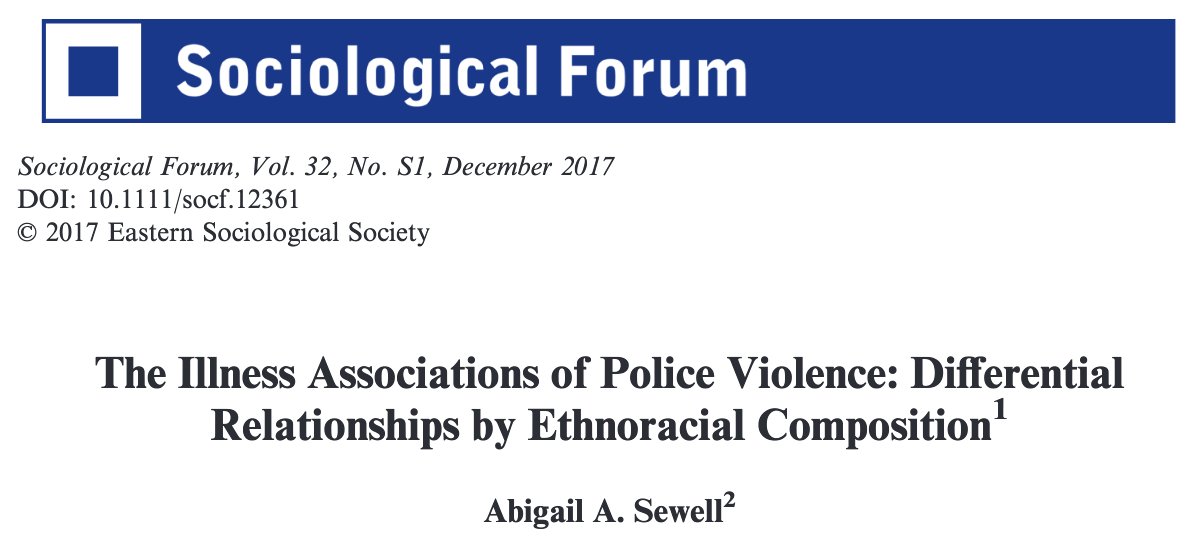



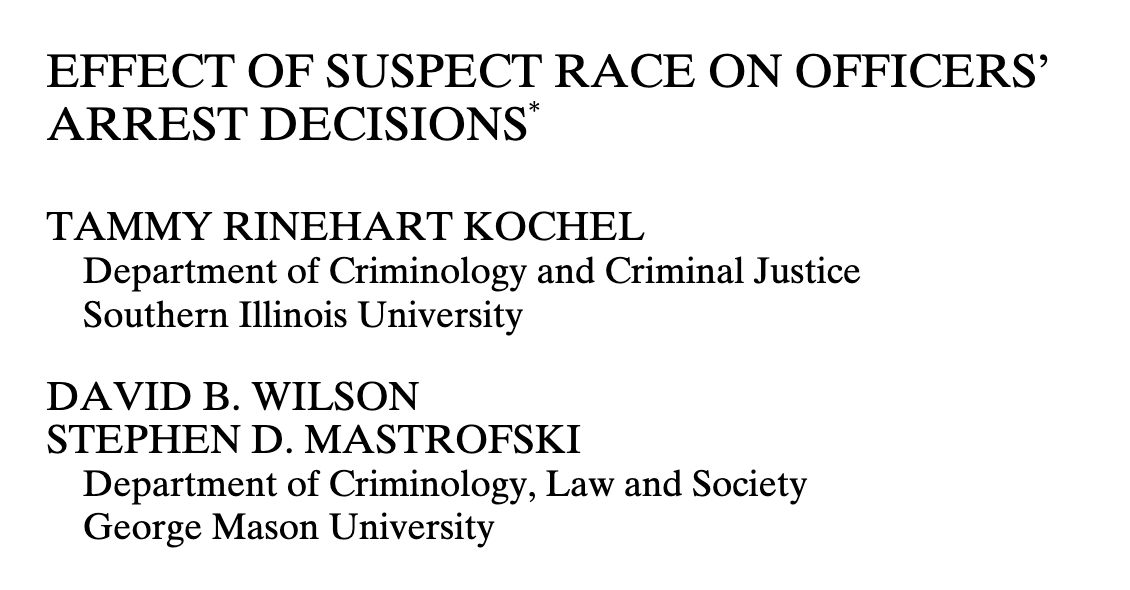
![115/ "Whites’ fear of crime increase linearly as the relative size of the black population increases [which, for minority black areas, is then]... translated into additional police officers... These findings emerge net of a wide array of control variables." 115/ "Whites’ fear of crime increase linearly as the relative size of the black population increases [which, for minority black areas, is then]... translated into additional police officers... These findings emerge net of a wide array of control variables."](https://pbs.twimg.com/media/EaBGYp7X0AghFs6.png)

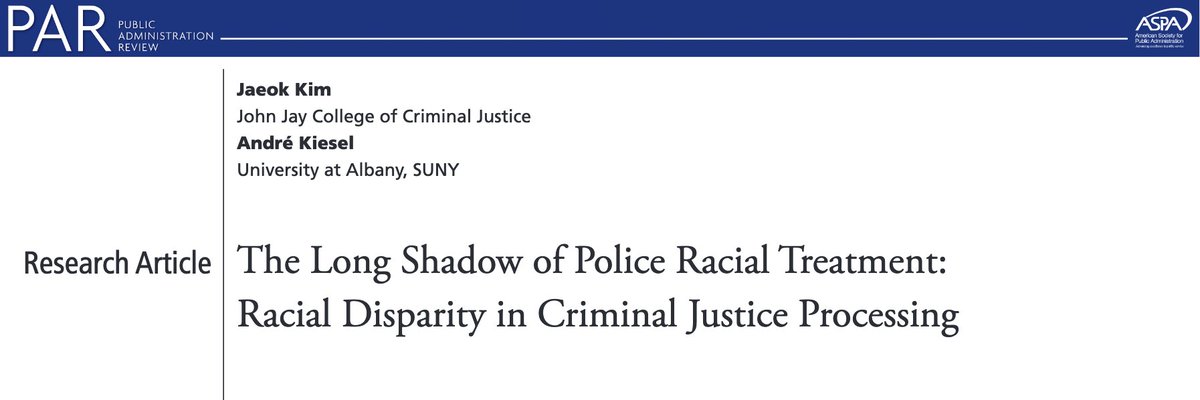
![118/ "Fram[ing] excessive force as a problem that derives from rogue police officers ... obscures the structural dimensions of police violence and ignores ... that conscious racial animosity likely accounts for a small percentage of racially-inflicted police conduct." 118/ "Fram[ing] excessive force as a problem that derives from rogue police officers ... obscures the structural dimensions of police violence and ignores ... that conscious racial animosity likely accounts for a small percentage of racially-inflicted police conduct."](https://pbs.twimg.com/media/EaCDKjWWkAAJcht.png)

![121/ "Increasingly, racial boundaries are maintained through deployment of law enforcement to police racialized boundaries... While the racially restrictive covenant and ... policing employ different strategies, the result ... [is] Black exclusion from white-identified enclaves." 121/ "Increasingly, racial boundaries are maintained through deployment of law enforcement to police racialized boundaries... While the racially restrictive covenant and ... policing employ different strategies, the result ... [is] Black exclusion from white-identified enclaves."](https://pbs.twimg.com/media/EaCLJzYX0AUC9_L.jpg)
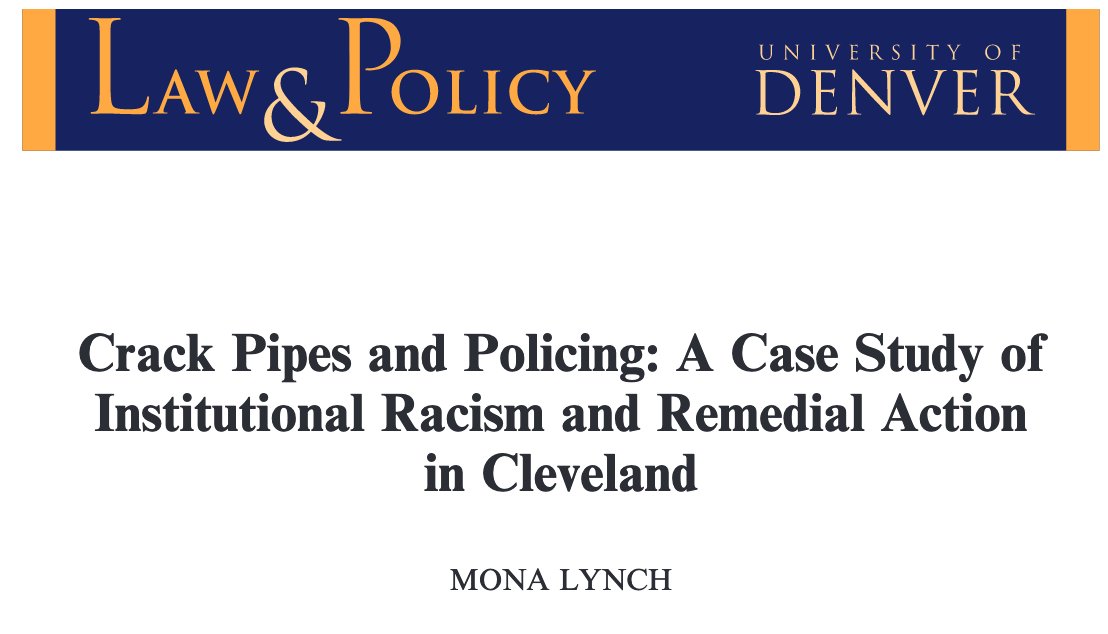
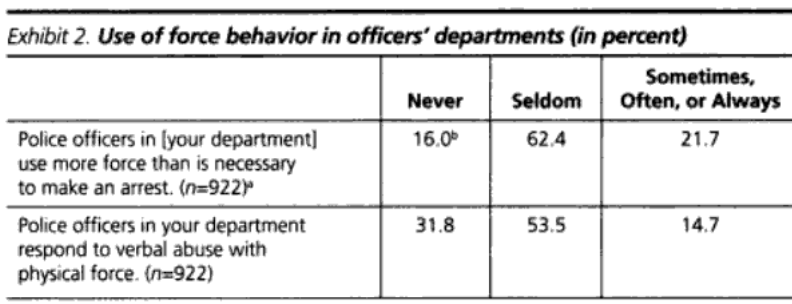

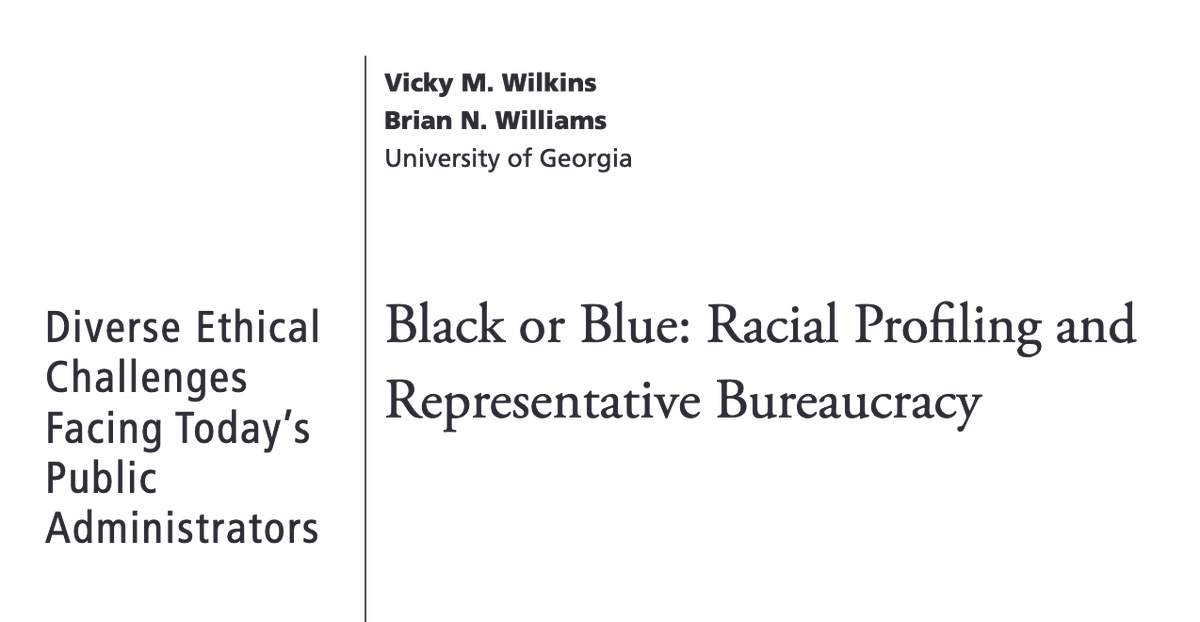

![126/ "Another example is ... [the] phrase 'quality of life,' which is used to give a humanitarian gloss to ... urban policing... One might well question exactly whose quality of life is being protected. Young people of color are among the most affected by [more] policing." 126/ "Another example is ... [the] phrase 'quality of life,' which is used to give a humanitarian gloss to ... urban policing... One might well question exactly whose quality of life is being protected. Young people of color are among the most affected by [more] policing."](https://pbs.twimg.com/media/EaEwqOKWkAMJx6I.png)

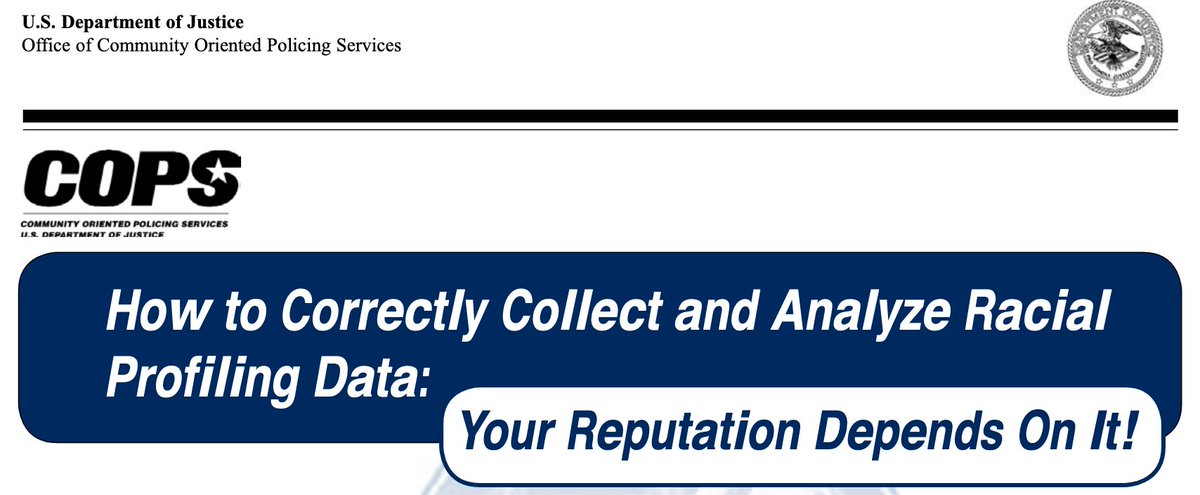
![129/ "[I was] a public defender, as ... [NYC] transformed [to] ... zero-tolerance policing that was confined almost entirely to communities of color and vulnerable populations..." and "This policing favors the rich and disfavors ... particularly poor people of color." 129/ "[I was] a public defender, as ... [NYC] transformed [to] ... zero-tolerance policing that was confined almost entirely to communities of color and vulnerable populations..." and "This policing favors the rich and disfavors ... particularly poor people of color."](https://pbs.twimg.com/media/EaFXrUYXgAY1PaN.png)
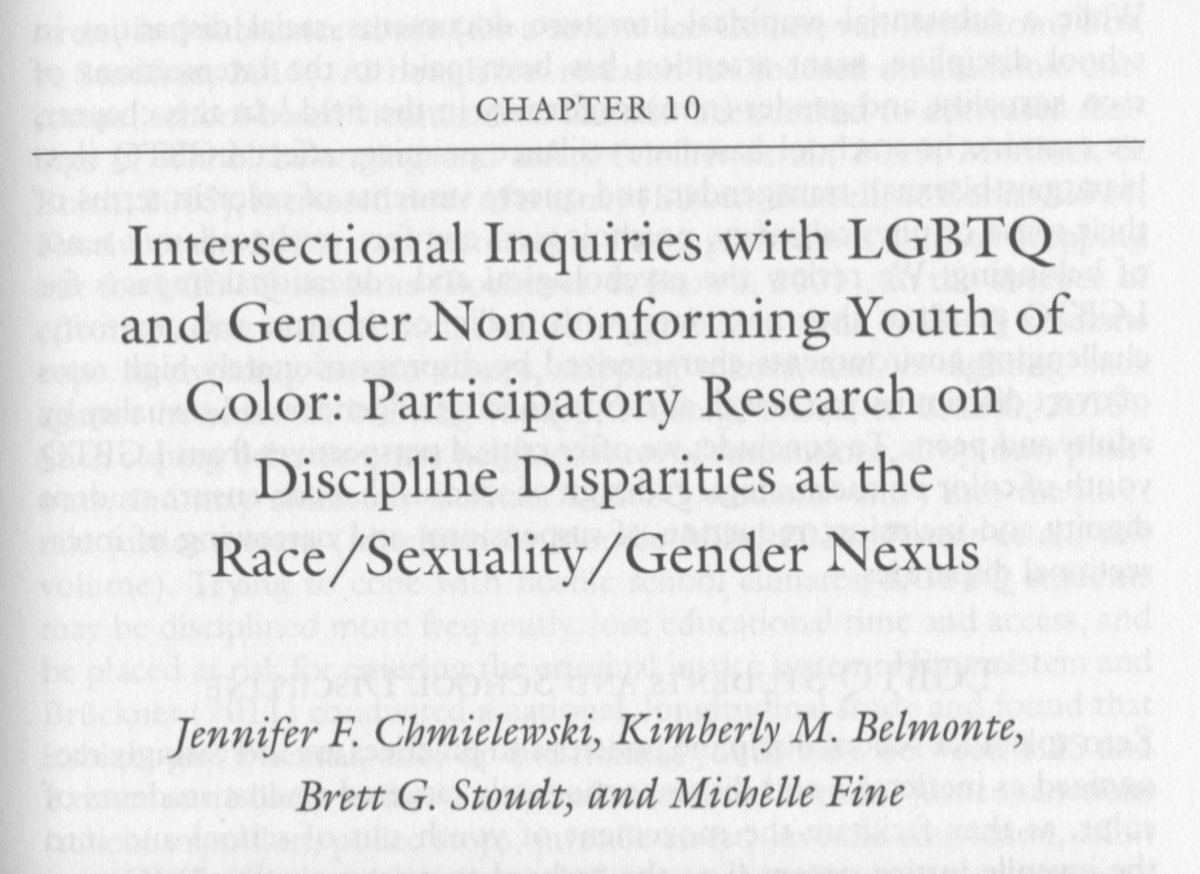

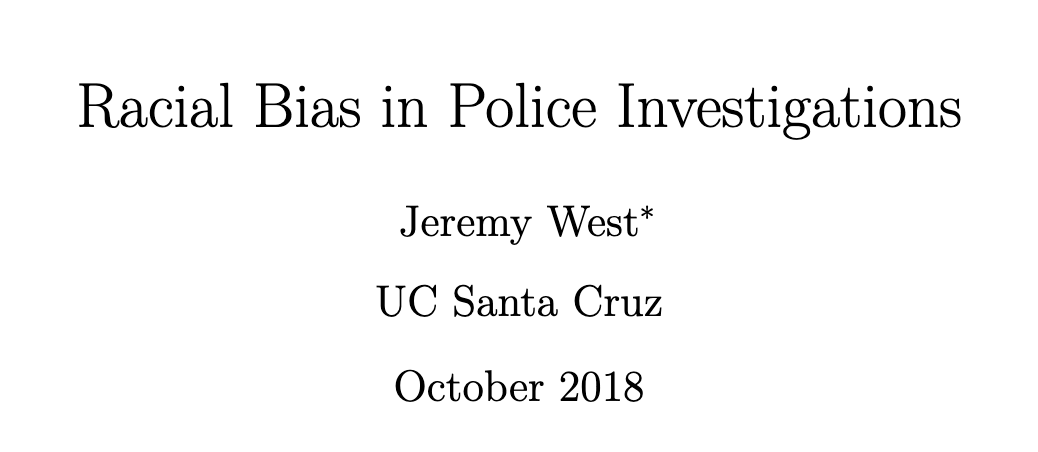
![133/ "The overwhelming majority of SWAT raids it studied were for ... serving a search warrant in drug cases, not cases involving violence. [This] erodes public trust, particularly in communities of color, and turns what should be a peaceful encounter into a paramilitary raid." 133/ "The overwhelming majority of SWAT raids it studied were for ... serving a search warrant in drug cases, not cases involving violence. [This] erodes public trust, particularly in communities of color, and turns what should be a peaceful encounter into a paramilitary raid."](https://pbs.twimg.com/media/EaGKgmEXQAk0OdV.png)
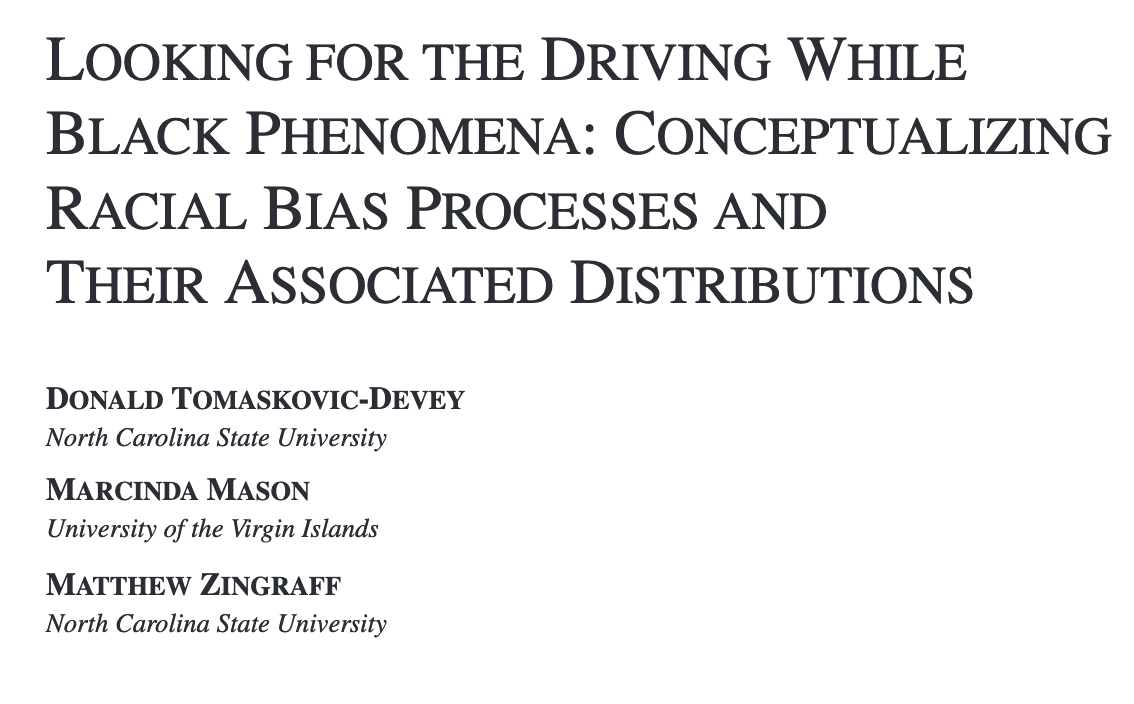
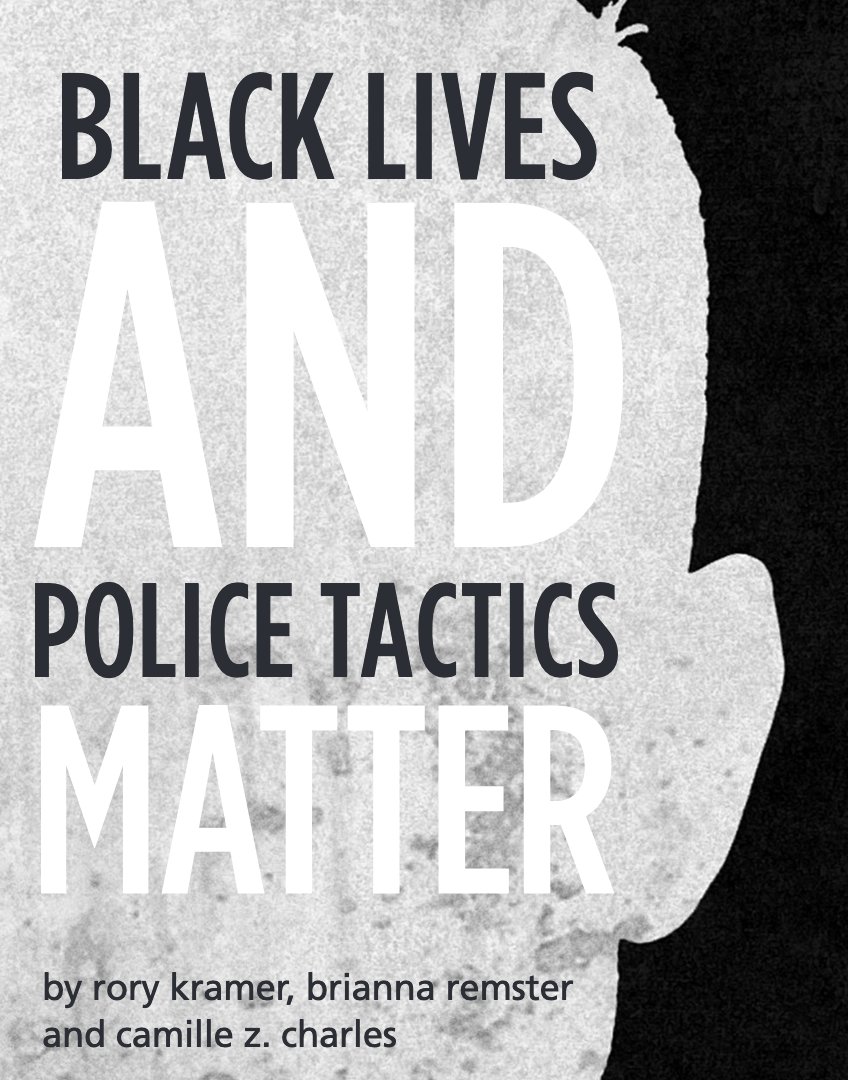
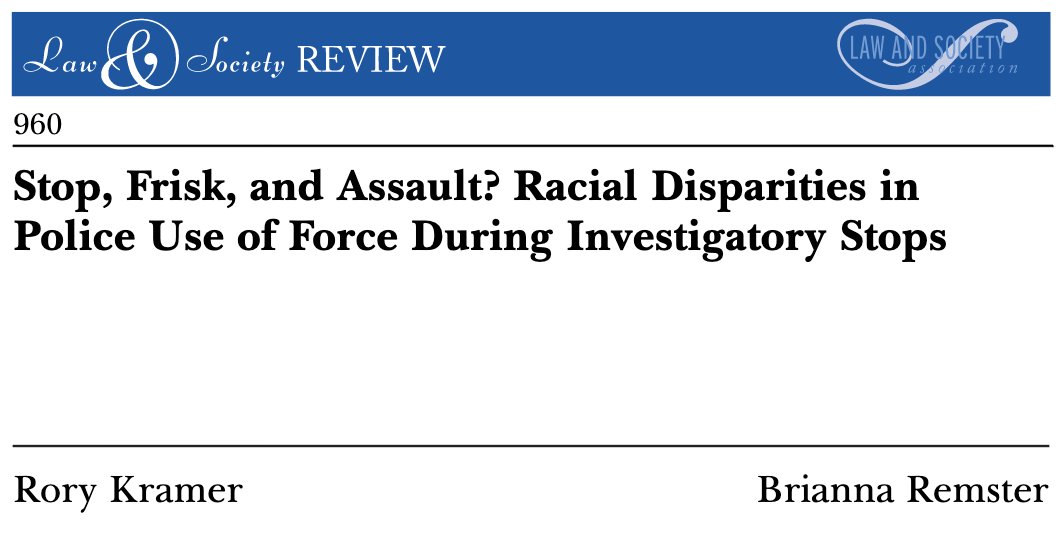
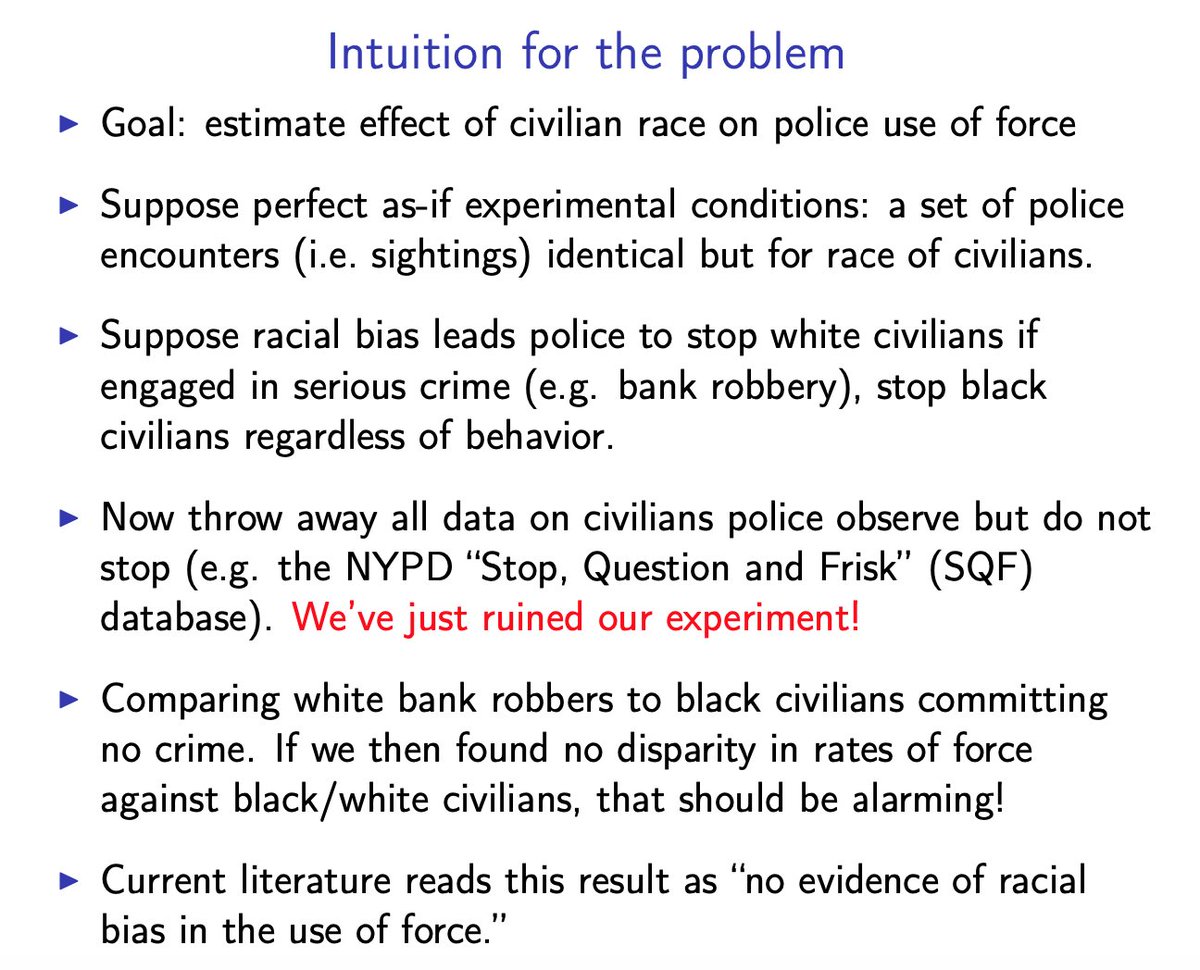
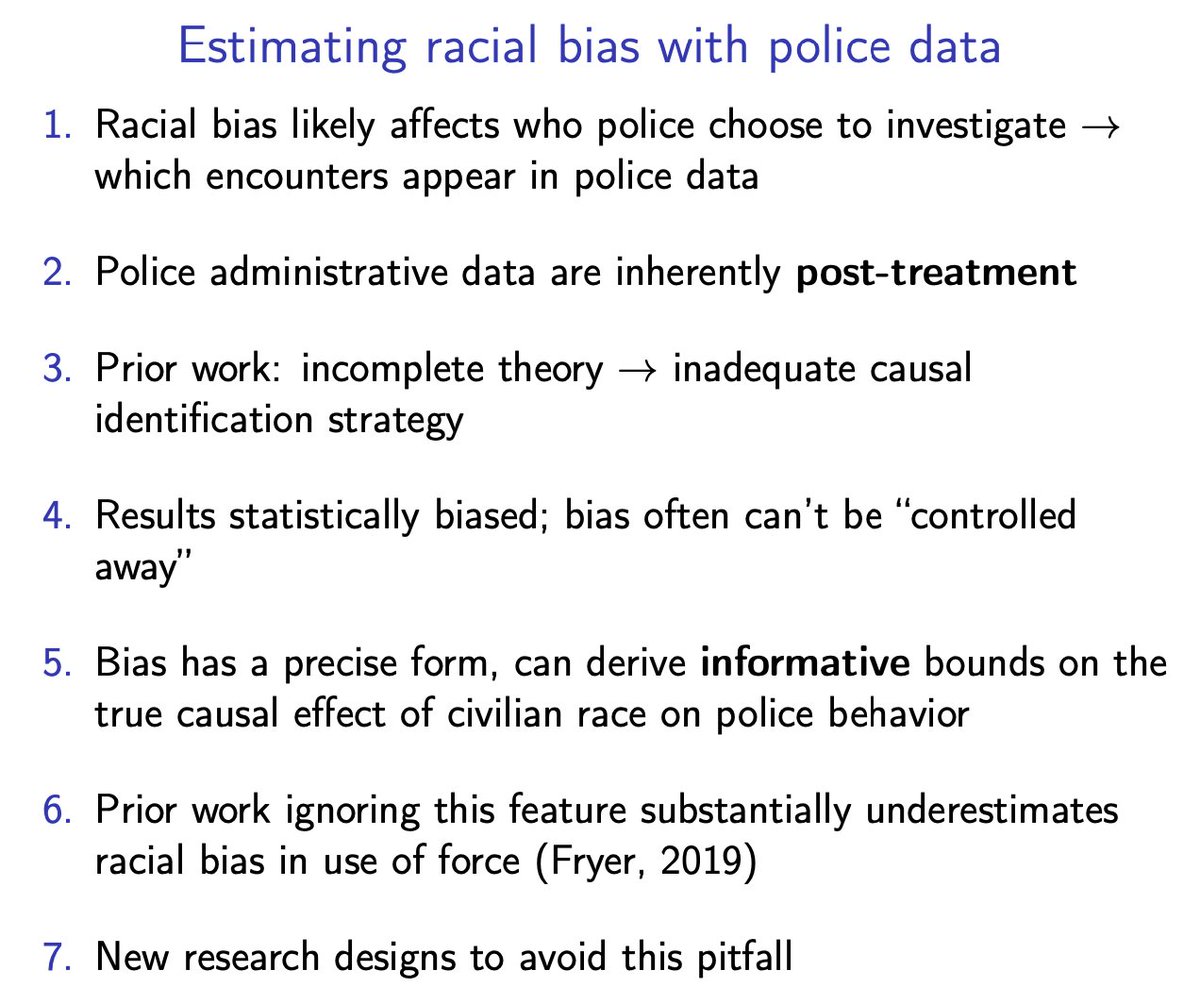
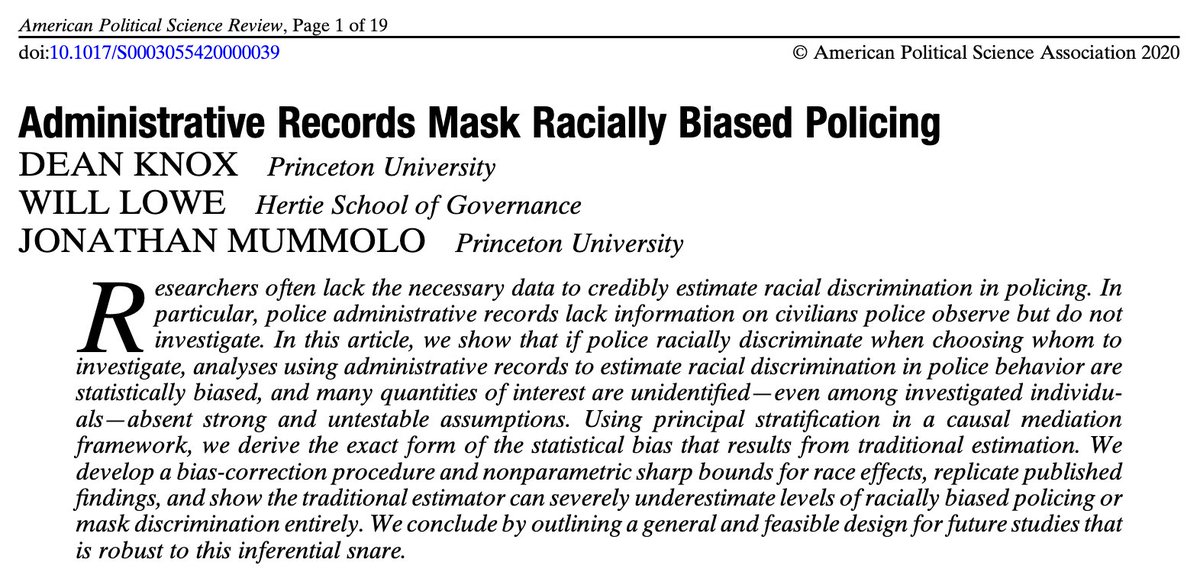
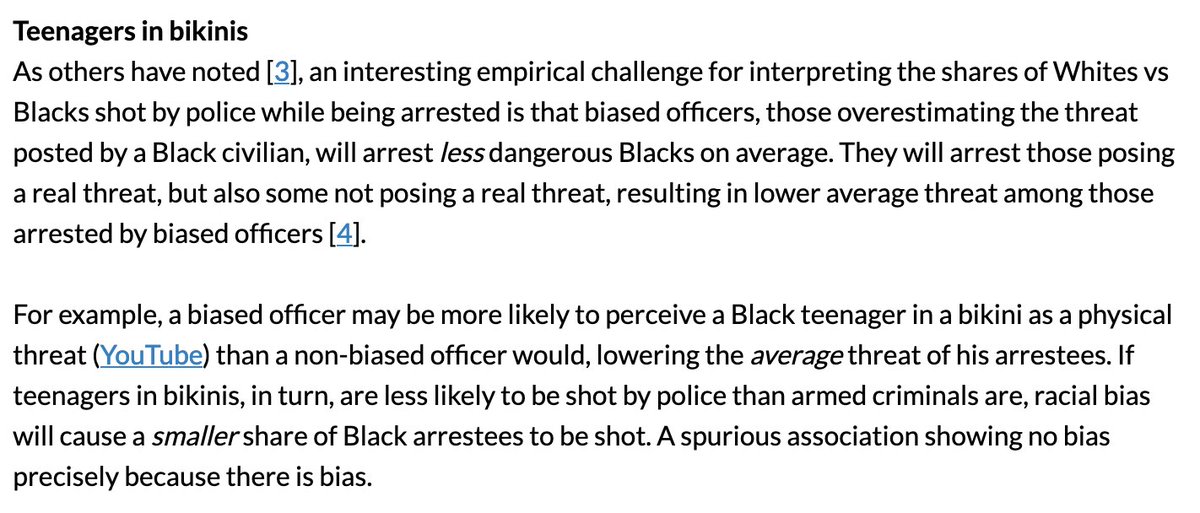


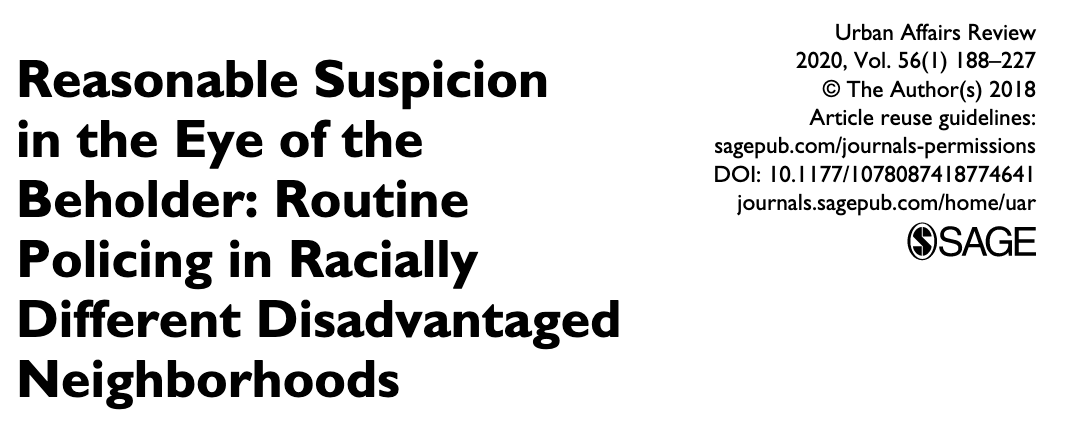
![145/ "After controlling for a myriad of factors, it is clear that certain racial, gender, age, and class groups are much more heavily targeted [for vehicle searches] than others. Racially, black and Latinx drivers are targeted most heavily." 145/ "After controlling for a myriad of factors, it is clear that certain racial, gender, age, and class groups are much more heavily targeted [for vehicle searches] than others. Racially, black and Latinx drivers are targeted most heavily."](https://pbs.twimg.com/media/EaLRlbwX0AY58VW.jpg)



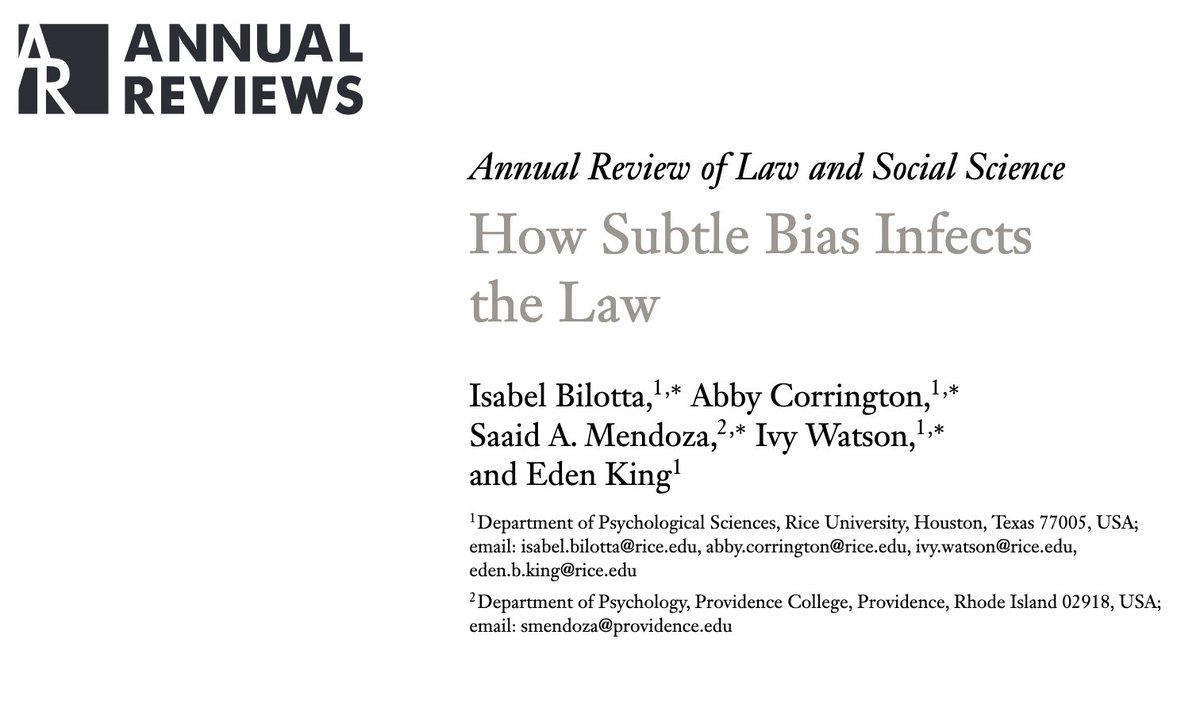


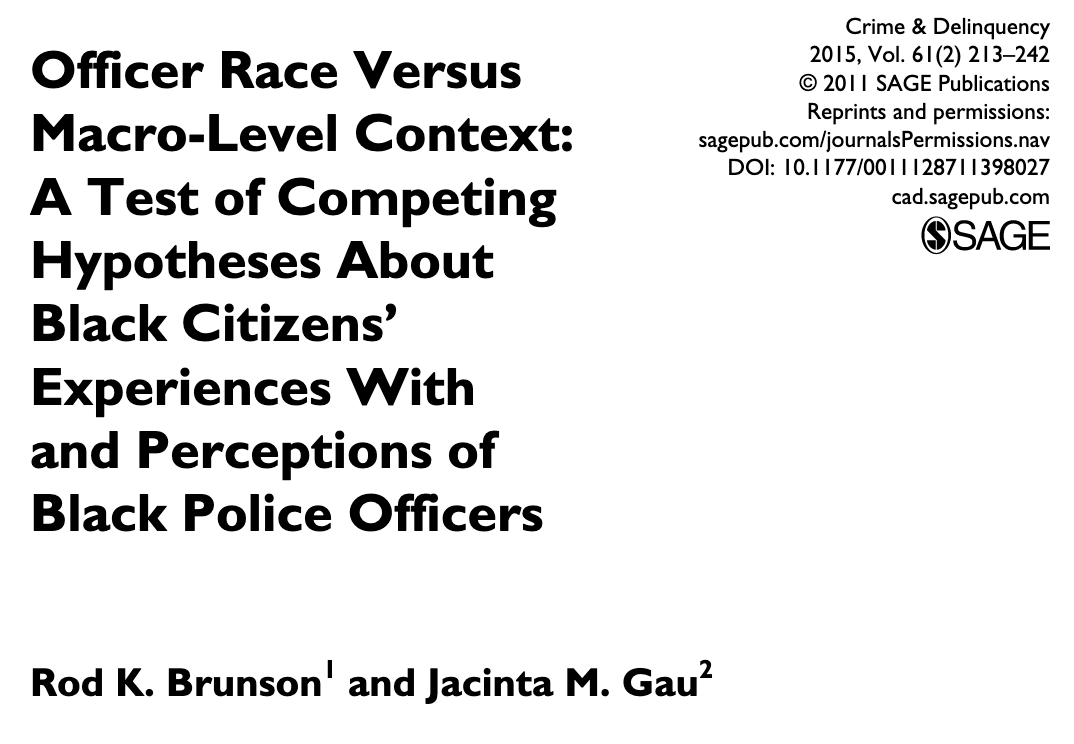


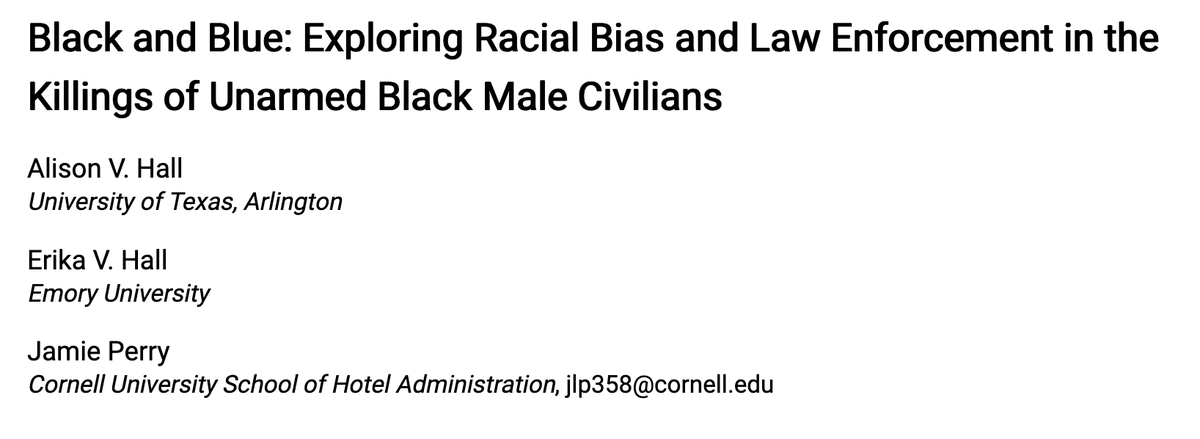
![160/ "The findings here indicate a potential that [police] stereotype those they might encounter on the street. It is difficult ... to determine if this finding confirms that respondents are either 'profiling' the person described in the vignette or experiencing implicit bias." 160/ "The findings here indicate a potential that [police] stereotype those they might encounter on the street. It is difficult ... to determine if this finding confirms that respondents are either 'profiling' the person described in the vignette or experiencing implicit bias."](https://pbs.twimg.com/media/EaVrm5iXsAIbVDQ.jpg)



![165/ "Black Americans were grossly over-represented in ... Newark’s drug arrests. When controlling for legally relevant factors ... Black arrests reflected racialized policing. ... [and] increased in communities with greater White ... populations." ( @DrShytierra) 165/ "Black Americans were grossly over-represented in ... Newark’s drug arrests. When controlling for legally relevant factors ... Black arrests reflected racialized policing. ... [and] increased in communities with greater White ... populations." ( @DrShytierra)](https://pbs.twimg.com/media/Eaf0YvDWsAELULt.png)
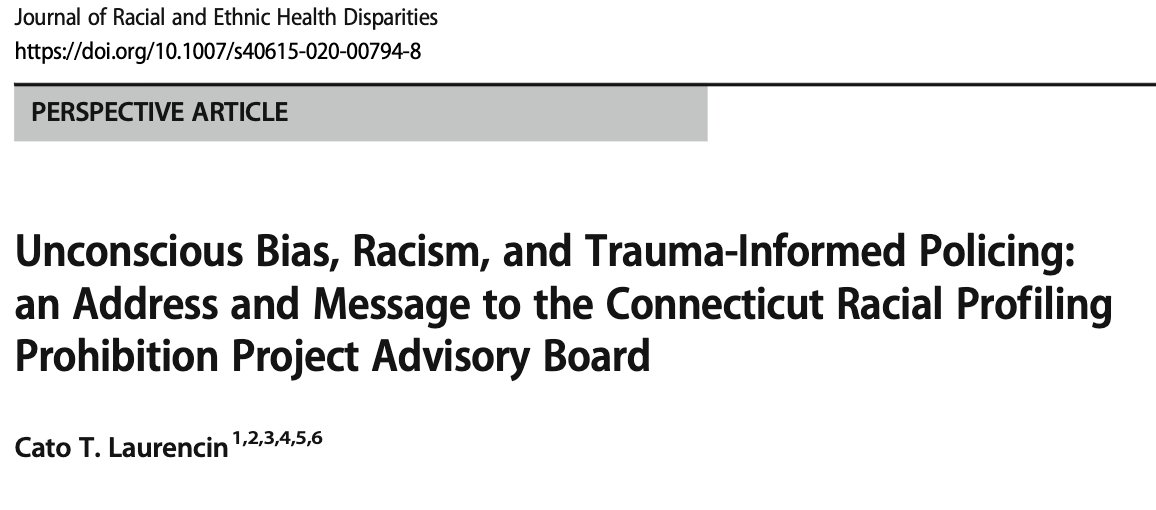
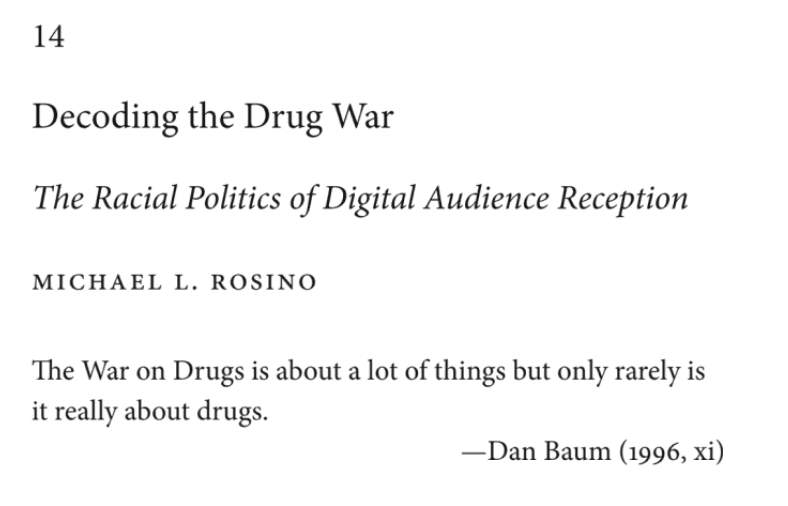
![168/ "[As of 2019], the intensive policing practices in poor Black communities show no sign of having been eased and have probably been reinstated in many places with federal support." 168/ "[As of 2019], the intensive policing practices in poor Black communities show no sign of having been eased and have probably been reinstated in many places with federal support."](https://pbs.twimg.com/media/Eaf-znVX0AUDiAV.png)
![169/ "If it is simply 'driving while different' that explains the attention given to minorities in majority White places, one would expect to find equal[] ... police response for White people... in Black neighborhoods... Results imply bias that only runs... against Black people." 169/ "If it is simply 'driving while different' that explains the attention given to minorities in majority White places, one would expect to find equal[] ... police response for White people... in Black neighborhoods... Results imply bias that only runs... against Black people."](https://pbs.twimg.com/media/EagGZ6NXYAItKy5.jpg)

![171/ "People in the community used to think it was going to be great when Blacks and gays and women are in the force. [But they were] teaching that institutional loyalty over personal integrity. If people show moral courage, we don’t give them awards. We ... call them 'rats.'" 171/ "People in the community used to think it was going to be great when Blacks and gays and women are in the force. [But they were] teaching that institutional loyalty over personal integrity. If people show moral courage, we don’t give them awards. We ... call them 'rats.'"](https://pbs.twimg.com/media/EagT-mXXkAAj3Sa.jpg)
![171/ "People in the community used to think it was going to be great when Blacks and gays and women are in the force. [But they were] teaching that institutional loyalty over personal integrity. If people show moral courage, we don’t give them awards. We ... call them 'rats.'" 171/ "People in the community used to think it was going to be great when Blacks and gays and women are in the force. [But they were] teaching that institutional loyalty over personal integrity. If people show moral courage, we don’t give them awards. We ... call them 'rats.'"](https://pbs.twimg.com/media/EagUGn0WkAEySCm.jpg)

![173/ "Grand jurors [must] contemplate the relevance of race in ... the officer’s decision to kill... Correcting a colorblind vision also will help grand jurors to understand what is often cast as the evasive and uncooperative actions of the black victim of police violence." 173/ "Grand jurors [must] contemplate the relevance of race in ... the officer’s decision to kill... Correcting a colorblind vision also will help grand jurors to understand what is often cast as the evasive and uncooperative actions of the black victim of police violence."](https://pbs.twimg.com/media/Eaga3npWsAUA02m.png)
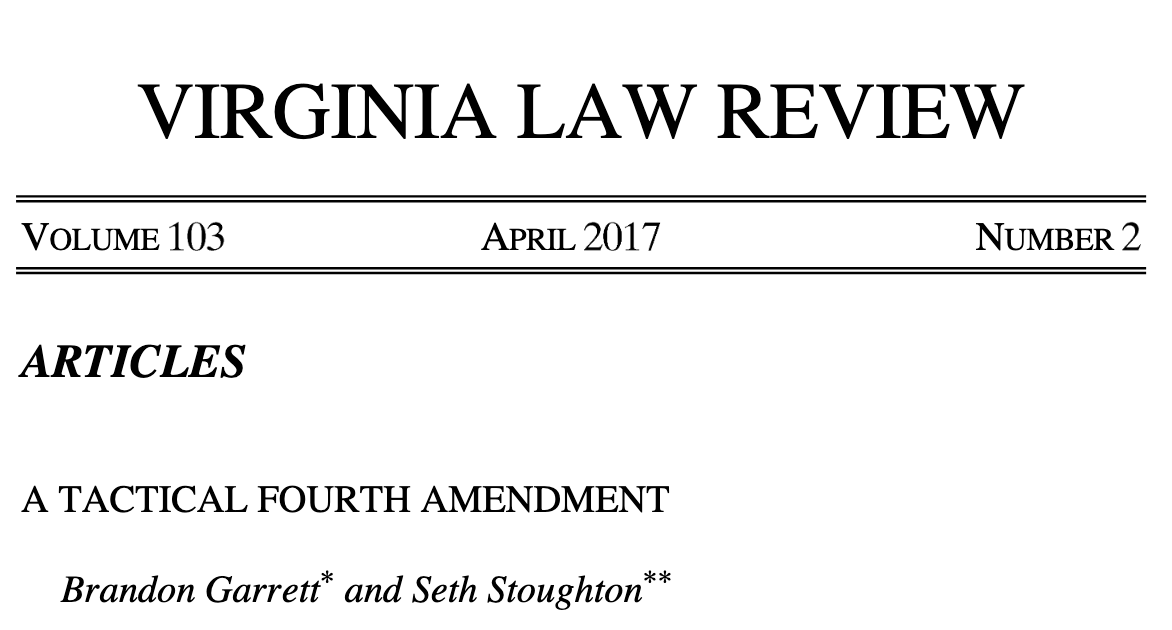
![175/ [UK] "In this paper we have discussed a series of Bayesian tools for application to the UK Stop-and-Search database... We find conclusively that racial bias are present within stop-and-searches and provide a tool for analysing this at Force by Force basis." 175/ [UK] "In this paper we have discussed a series of Bayesian tools for application to the UK Stop-and-Search database... We find conclusively that racial bias are present within stop-and-searches and provide a tool for analysing this at Force by Force basis."](https://pbs.twimg.com/media/EagdedkXsAYYGGe.png)
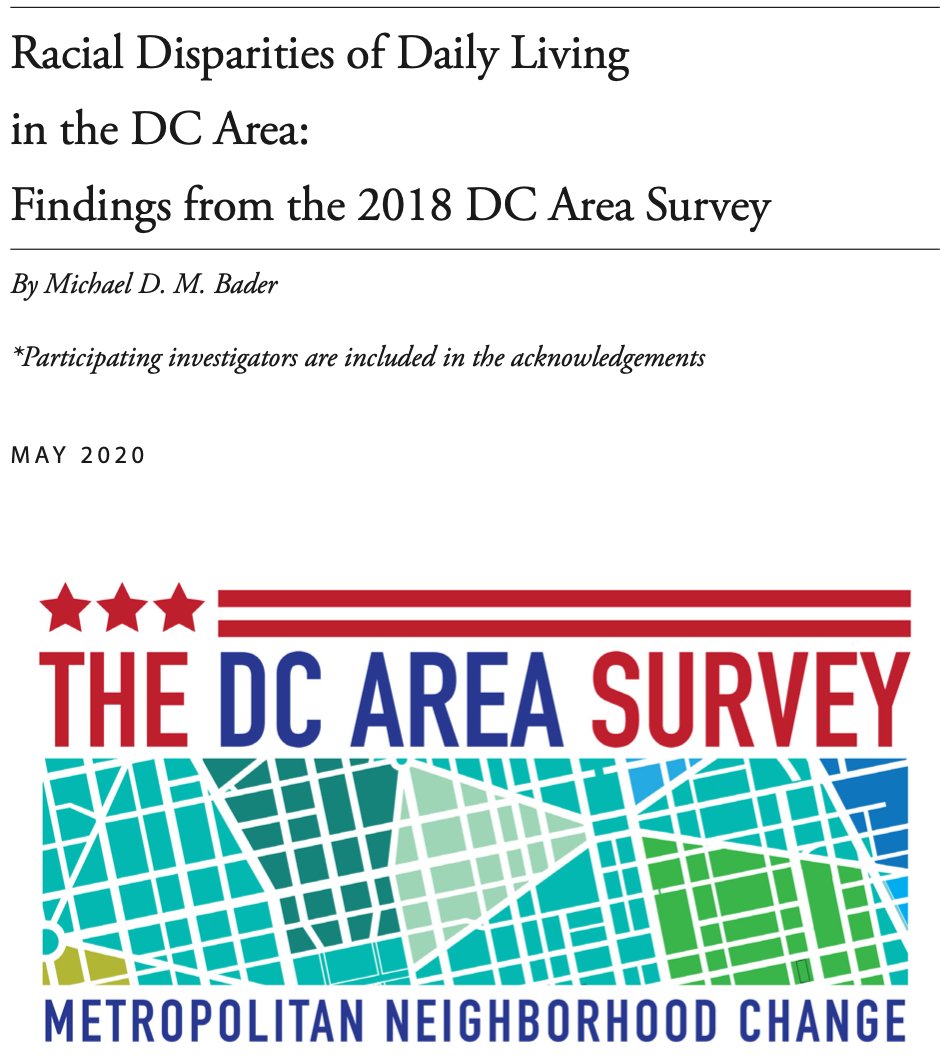
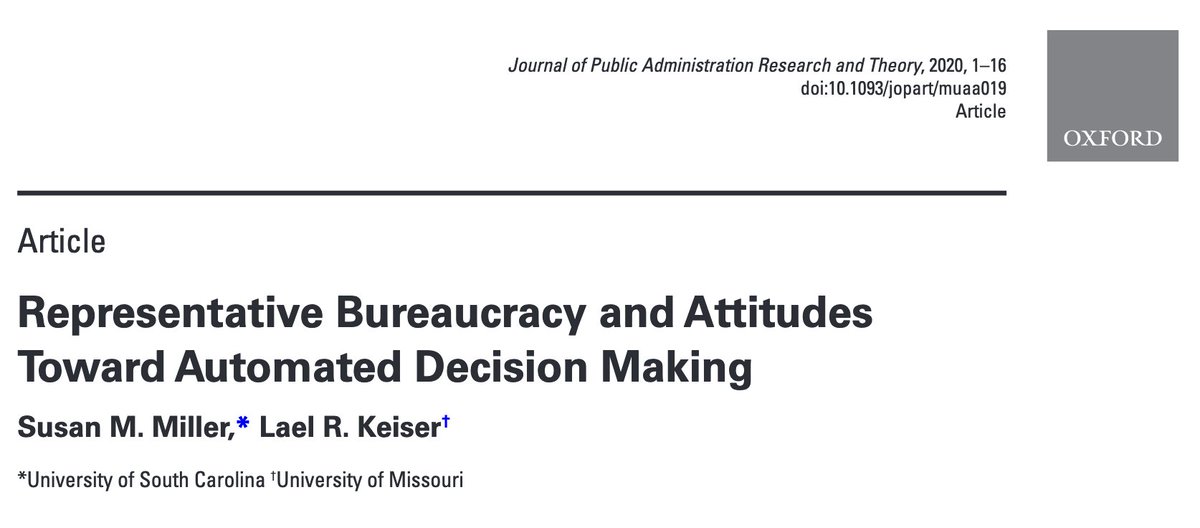
![178/ "White officers are 1.28 times more likely to use higher levels of force on Black civilians in Dallas [than on white civilians]." & "Officers use higher levels of force on civilians as officer years of service increase." 178/ "White officers are 1.28 times more likely to use higher levels of force on Black civilians in Dallas [than on white civilians]." & "Officers use higher levels of force on civilians as officer years of service increase."](https://pbs.twimg.com/media/EagyMU8XkAA98zv.jpg)
![179/ "Severe racial disparities [are] often an inevitable result of of the tactics the police adopt." & "When police are called to the scene they bring with them what they have been trained to do: deploy force and law. Yet, these are often the wrong responses to ... a situation." 179/ "Severe racial disparities [are] often an inevitable result of of the tactics the police adopt." & "When police are called to the scene they bring with them what they have been trained to do: deploy force and law. Yet, these are often the wrong responses to ... a situation."](https://pbs.twimg.com/media/Eag3S3OXsAAyTyx.png)
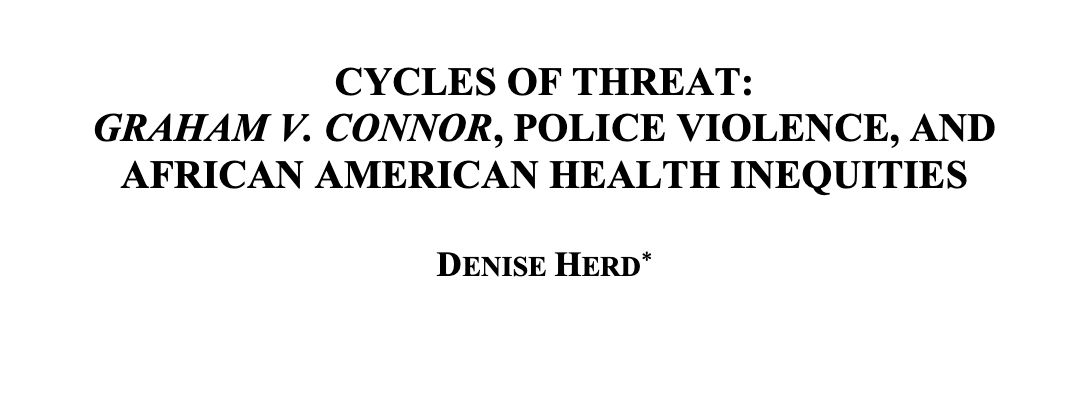


![183/ "[Many] believe that black and brown youths buy, sell, and use drugs at a higher rate ... when in fact youths of all races buy, sell, and use drugs at roughly the same rate and the disproportionate incarceration ... owes to biases in legislation, policing, and sentencing" 183/ "[Many] believe that black and brown youths buy, sell, and use drugs at a higher rate ... when in fact youths of all races buy, sell, and use drugs at roughly the same rate and the disproportionate incarceration ... owes to biases in legislation, policing, and sentencing"](https://pbs.twimg.com/media/EajGF69XsAI_4ej.jpg)
![184/ "While the majority of white respondents who read about a white victim blamed the officer (56.0%), white respondents who read a[n identical] story about an African American young man were almost 20 percentage points less likely to fault the officer (37.7%)." ( @ErnestMcGowen) 184/ "While the majority of white respondents who read about a white victim blamed the officer (56.0%), white respondents who read a[n identical] story about an African American young man were almost 20 percentage points less likely to fault the officer (37.7%)." ( @ErnestMcGowen)](https://pbs.twimg.com/media/EajJ2bJWkAA7h_t.jpg)
![185/ "Although these numbers were small, white children with fractures of indeterminate origin were less likely to be reported to CPS [Child Protective Services]... Differential reporting of abuse to CPS by race was seen among toddlers with accidental and indeterminate injuries." 185/ "Although these numbers were small, white children with fractures of indeterminate origin were less likely to be reported to CPS [Child Protective Services]... Differential reporting of abuse to CPS by race was seen among toddlers with accidental and indeterminate injuries."](https://pbs.twimg.com/media/EajNLUOXsAA5I2G.jpg)
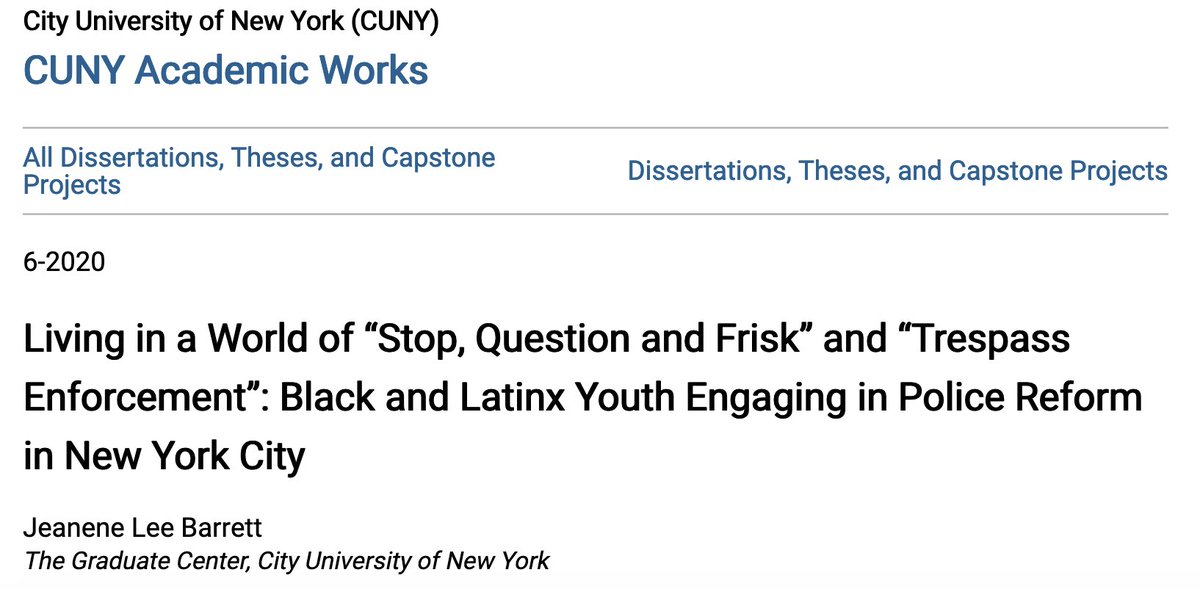
![187/ "Were the[y]... to protest, they risk being met with violent, racially disparate police responses ... Racially biased policing in the United States thus forces...African Americans ... to choose between their standing up for themselves and risking their personal safety." 187/ "Were the[y]... to protest, they risk being met with violent, racially disparate police responses ... Racially biased policing in the United States thus forces...African Americans ... to choose between their standing up for themselves and risking their personal safety."](https://pbs.twimg.com/media/Eajkan8WsAE-3xN.png)
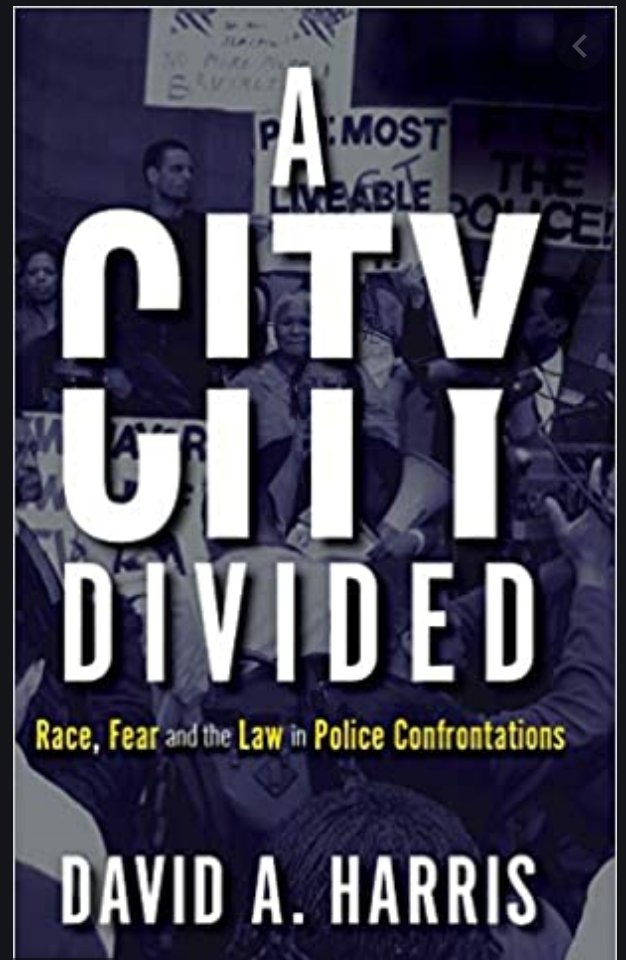

![190/ "The longstanding practice of deferring to the reasonableness of police officers’ expertise fails to effectively protect persons of color by allowing racial bias to influence an officer’s use of deadly force." & "... [R]acial stereotypes [can] distort assessments of threat" 190/ "The longstanding practice of deferring to the reasonableness of police officers’ expertise fails to effectively protect persons of color by allowing racial bias to influence an officer’s use of deadly force." & "... [R]acial stereotypes [can] distort assessments of threat"](https://pbs.twimg.com/media/EajtbR-WkAAQpri.png)
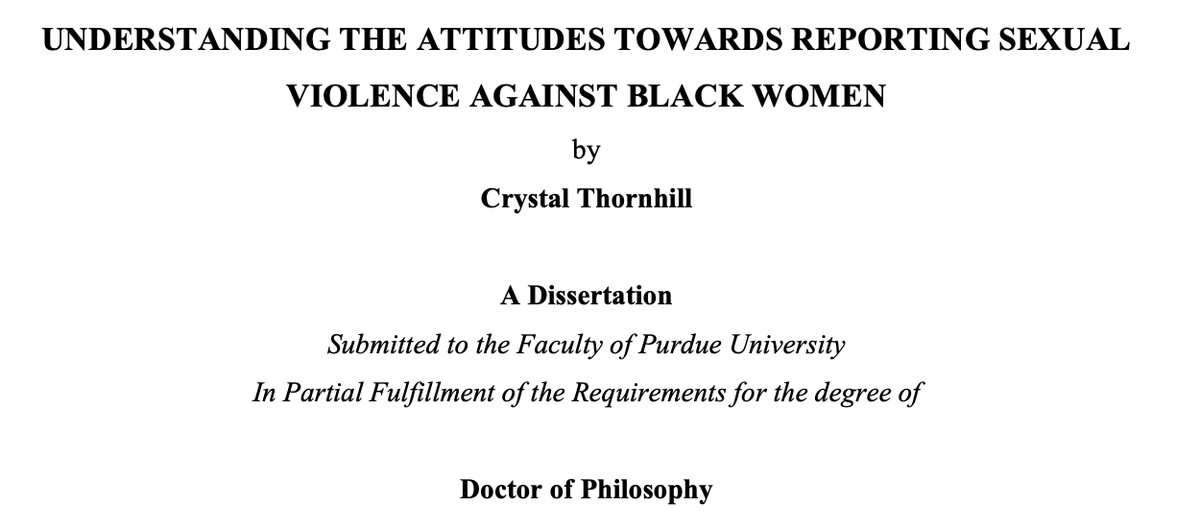
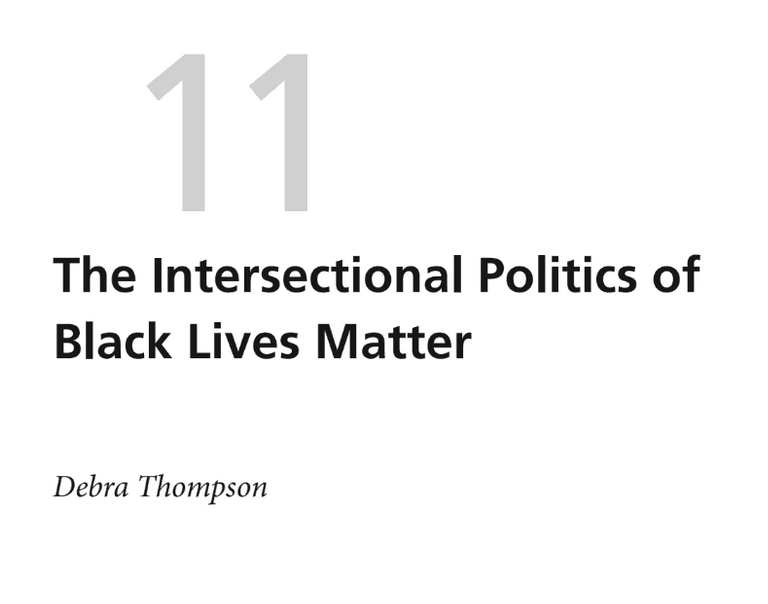
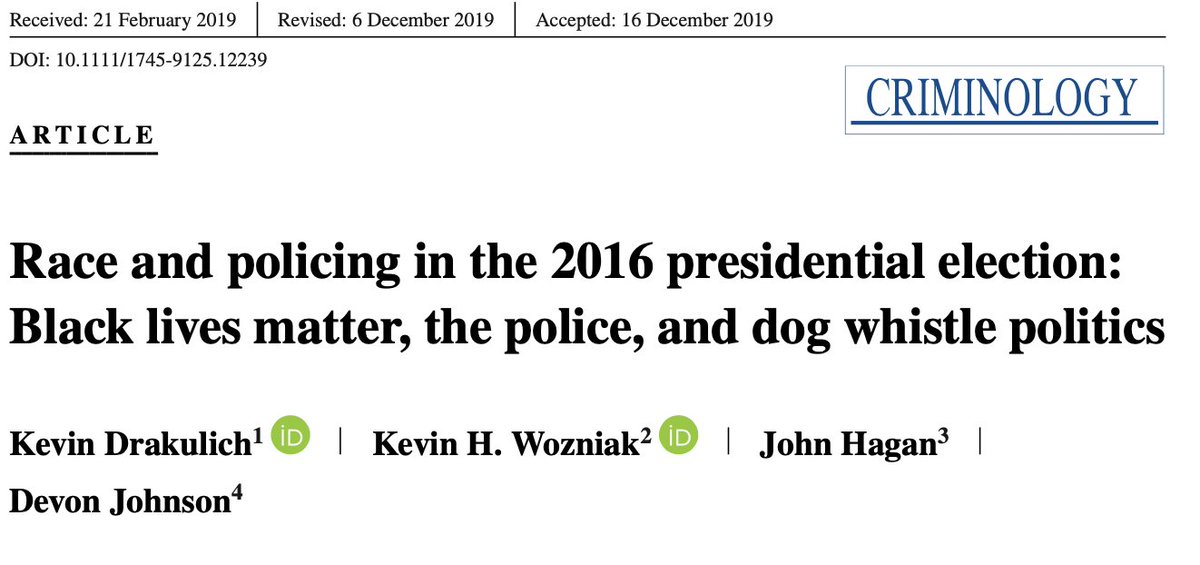
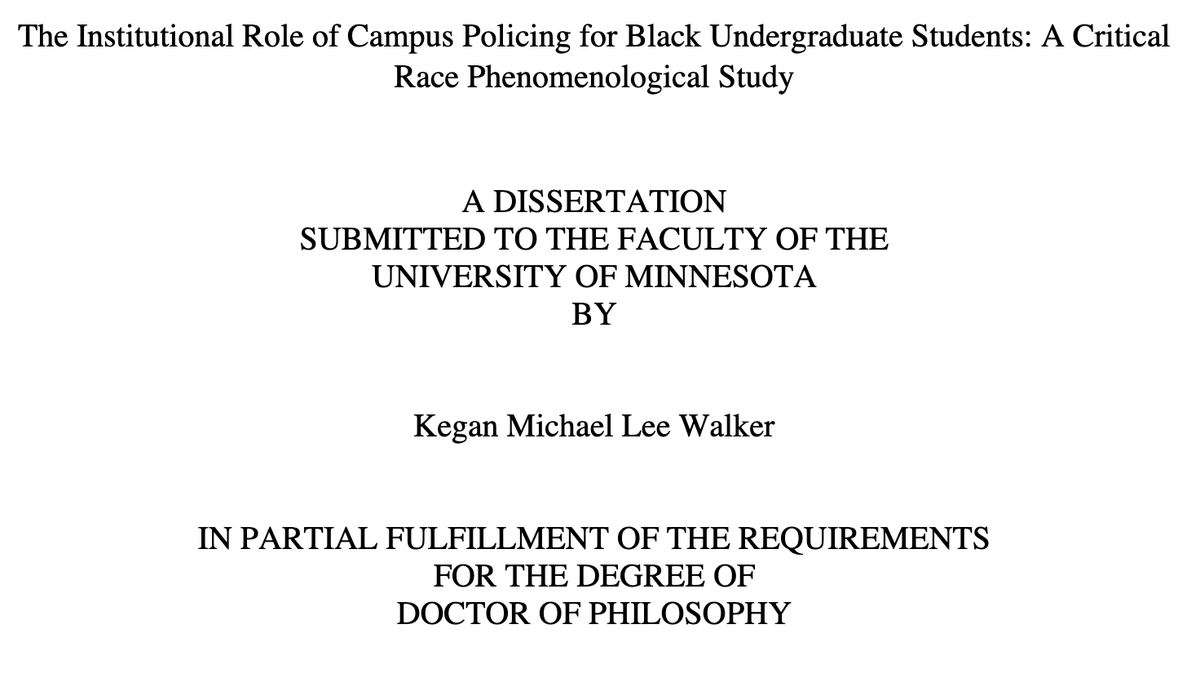
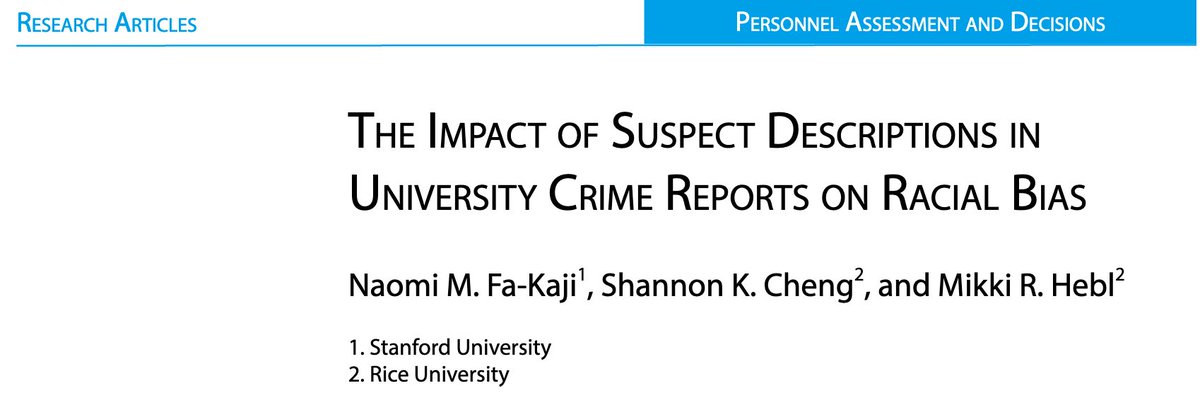
![196/ "Police legitimacy and legal authoritarian attitudes significantly predicted [teachers'] belief that the Black student—but not the White student—should be punished [and] ... are particularly likely to condone police violence if the victimized student is Black." 196/ "Police legitimacy and legal authoritarian attitudes significantly predicted [teachers'] belief that the Black student—but not the White student—should be punished [and] ... are particularly likely to condone police violence if the victimized student is Black."](https://pbs.twimg.com/media/EakXuGaXYAA6F80.jpg)

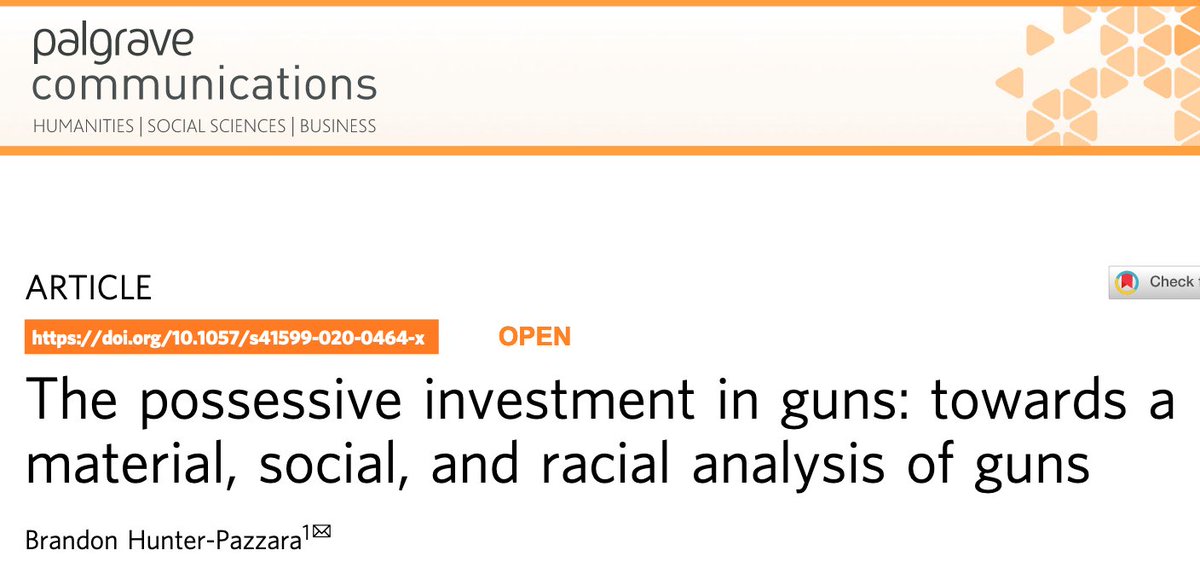
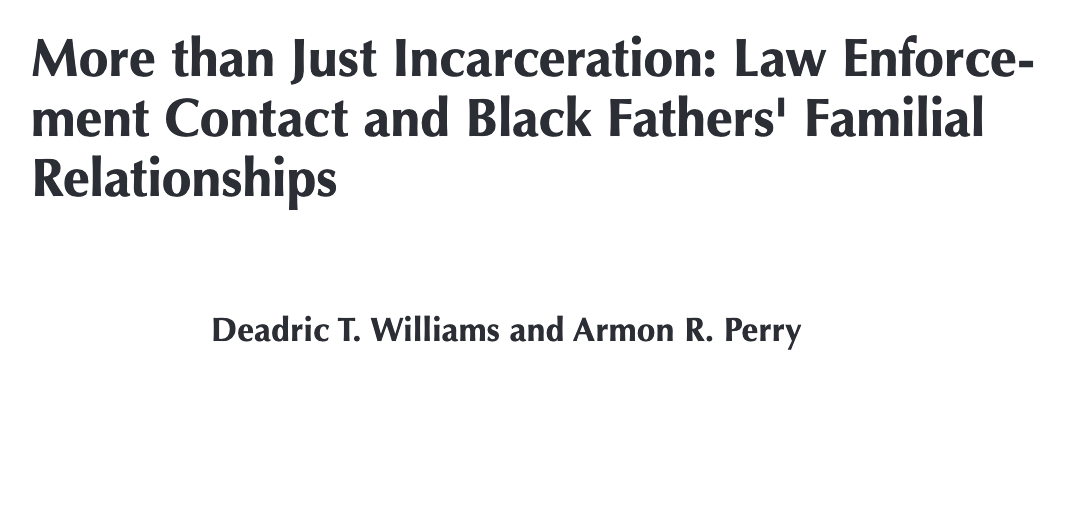
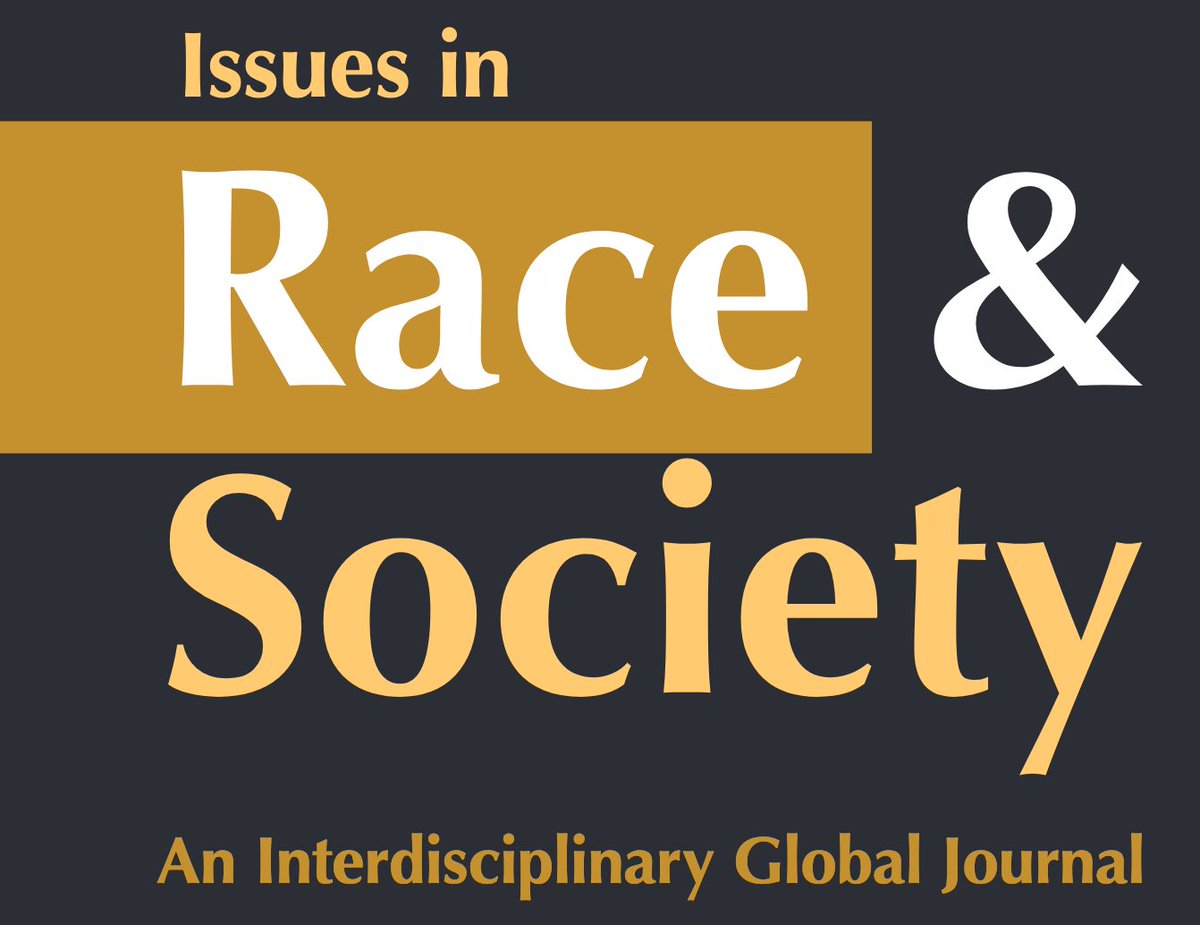
![200/ "Police and law enforcement discrimination is common among Black [sexual minority men] as about 43% of participants reported it over the past year... Rates of police and law enforcement discrimination were ... associated with both psychological distress and sexual HIV risk." 200/ "Police and law enforcement discrimination is common among Black [sexual minority men] as about 43% of participants reported it over the past year... Rates of police and law enforcement discrimination were ... associated with both psychological distress and sexual HIV risk."](https://pbs.twimg.com/media/EalVRWTX0AclK_T.jpg)
![201/ "As [a state's] liberal population increased 1% point, the likelihood of Black police killings decreased at a rate of 3.700% (0.963)... as the size of the Black population increases across states, there is a subsequent decrease in police shootings at a rate of 16.500%." 201/ "As [a state's] liberal population increased 1% point, the likelihood of Black police killings decreased at a rate of 3.700% (0.963)... as the size of the Black population increases across states, there is a subsequent decrease in police shootings at a rate of 16.500%."](https://pbs.twimg.com/media/EalZ3I4WkA0tzsY.jpg)

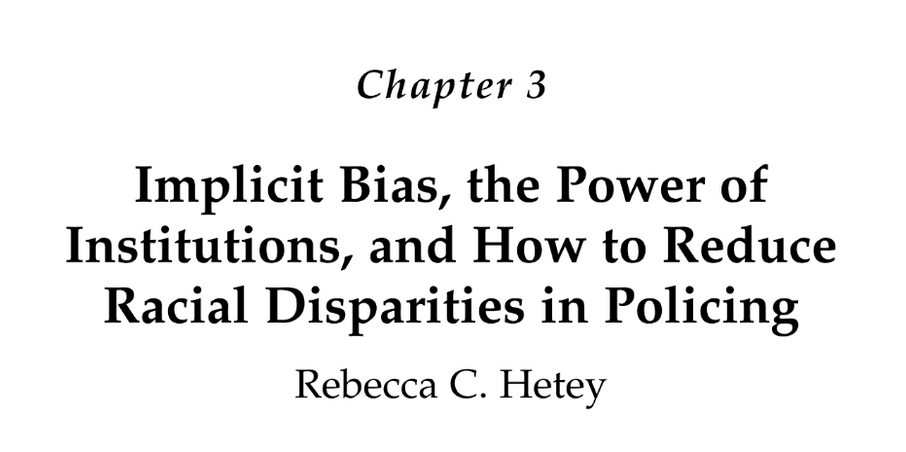

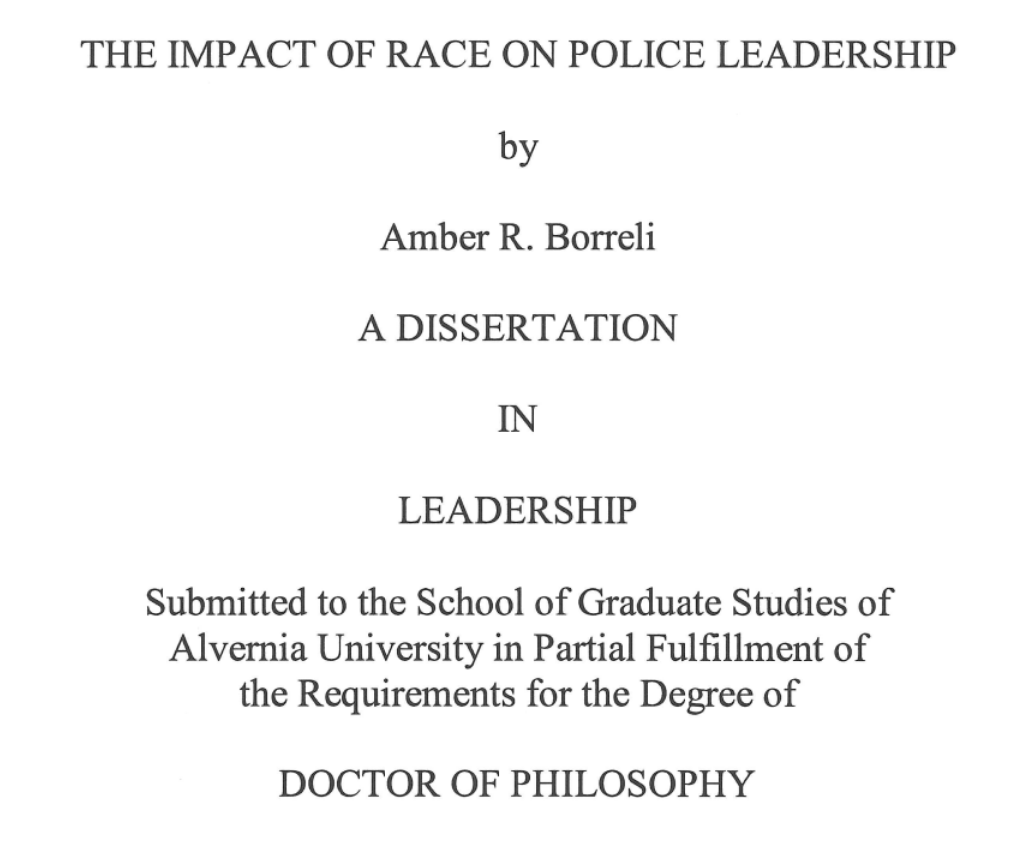
![207/ "[Black officers] emphatically believe the blue shield impedes transparency and silences them from sharing their true feelings regarding the deadly force shooting involving their White counterparts... [One] feels the symbolic blue shield is meant to absolve police officers." 207/ "[Black officers] emphatically believe the blue shield impedes transparency and silences them from sharing their true feelings regarding the deadly force shooting involving their White counterparts... [One] feels the symbolic blue shield is meant to absolve police officers."](https://pbs.twimg.com/media/EamIWSzXYAE_qzA.png)


![210/ "Suspect resistance exerts the strongest effects on the odds of [police] force being used... We also observed statistically significant differences in the application of force by suspect age, sex, race, and mental illness—above and beyond the effects of resistance." 210/ "Suspect resistance exerts the strongest effects on the odds of [police] force being used... We also observed statistically significant differences in the application of force by suspect age, sex, race, and mental illness—above and beyond the effects of resistance."](https://pbs.twimg.com/media/EapSG0OXQAECFqN.jpg)

![212/ "Articles related to the BLM movement in... leading newspapers reveal[] a disproportionate focus on the negative effects... on police despite mixed findings about such effects in the scholarly research. Missing... is any discussion of the [movement's] positive consequences." 212/ "Articles related to the BLM movement in... leading newspapers reveal[] a disproportionate focus on the negative effects... on police despite mixed findings about such effects in the scholarly research. Missing... is any discussion of the [movement's] positive consequences."](https://pbs.twimg.com/media/EapZMiwWsAMWXr3.jpg)
![213/ "This finding comports with prior LIH ["Legal Intervention Homicide" by police] research that finds that black Americans are not only disproportionately likely to be killed by law enforcement but are disproportionately unlikely to present an objective threat of deadly force" 213/ "This finding comports with prior LIH ["Legal Intervention Homicide" by police] research that finds that black Americans are not only disproportionately likely to be killed by law enforcement but are disproportionately unlikely to present an objective threat of deadly force"](https://pbs.twimg.com/media/Eapa0vLWsAAdKli.png)
![214/ "Compared with [police misconduct] allegations filed by white complainants, allegations from black complainants were 0.499 times less likely to be sustained. ... Allegations made by [police] were sustained at a rate 21.6 times higher than allegations made by outsiders." 214/ "Compared with [police misconduct] allegations filed by white complainants, allegations from black complainants were 0.499 times less likely to be sustained. ... Allegations made by [police] were sustained at a rate 21.6 times higher than allegations made by outsiders."](https://pbs.twimg.com/media/Eapewm_WAAISqvS.jpg)
![215/ "[Chicago] PD has tolerated racially discriminatory conduct that not only undermines police legitimacy, but also contributes to the pattern of unreasonable force... illegal and unconstitutional patterns of force on minority communities." -- Department of Justice, 2017 215/ "[Chicago] PD has tolerated racially discriminatory conduct that not only undermines police legitimacy, but also contributes to the pattern of unreasonable force... illegal and unconstitutional patterns of force on minority communities." -- Department of Justice, 2017](https://pbs.twimg.com/media/EapgDZIXkAEhAwp.jpg)
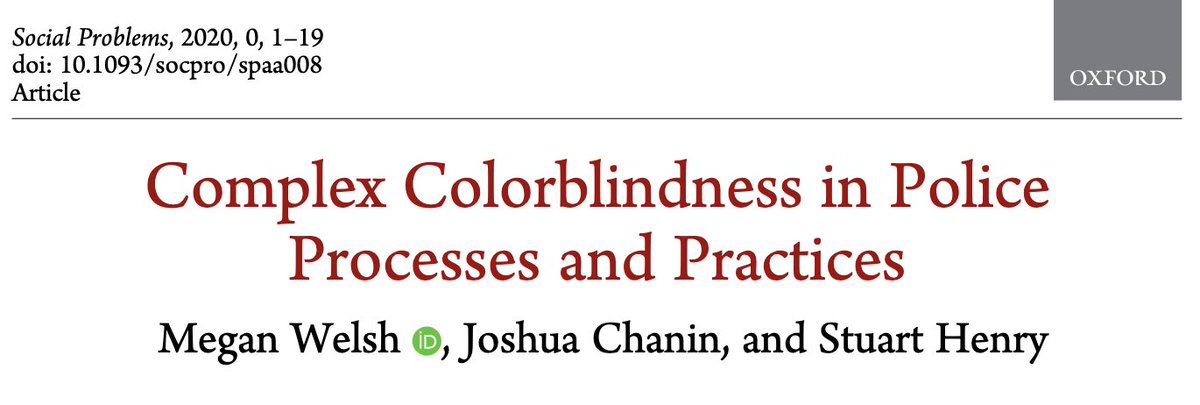
![217/ "Our analysis can reconcile the distinction Fryer Jr. (2016) documents between lethal and non-lethal force against civilians.... Black civilians should be disproportionately subject to non-lethal force but not necessarily ... [to] lethal encounters with police." 217/ "Our analysis can reconcile the distinction Fryer Jr. (2016) documents between lethal and non-lethal force against civilians.... Black civilians should be disproportionately subject to non-lethal force but not necessarily ... [to] lethal encounters with police."](https://pbs.twimg.com/media/EapyY0WXsAA0gzW.png)
![219/ "Our results strongly suggest that officers are more likely to conduct a search if the race of the motorist differs from the race of the officer... Preference-based discrimination plays a substantial role in explaining differences in...[searches of] different racial groups." 219/ "Our results strongly suggest that officers are more likely to conduct a search if the race of the motorist differs from the race of the officer... Preference-based discrimination plays a substantial role in explaining differences in...[searches of] different racial groups."](https://pbs.twimg.com/media/EaqUOafXkAIK7qO.png)
![220/ "The number of deaths [by police] per million population among non-Hispanic Black and Hispanic males were 2.8 and 1.7 times higher, respectively, than among White males... Fryer’s assessment of disparities in the use of lethal force was possible for only 1 city." 220/ "The number of deaths [by police] per million population among non-Hispanic Black and Hispanic males were 2.8 and 1.7 times higher, respectively, than among White males... Fryer’s assessment of disparities in the use of lethal force was possible for only 1 city."](https://pbs.twimg.com/media/EaqZtDHWoAUW4L4.jpg)


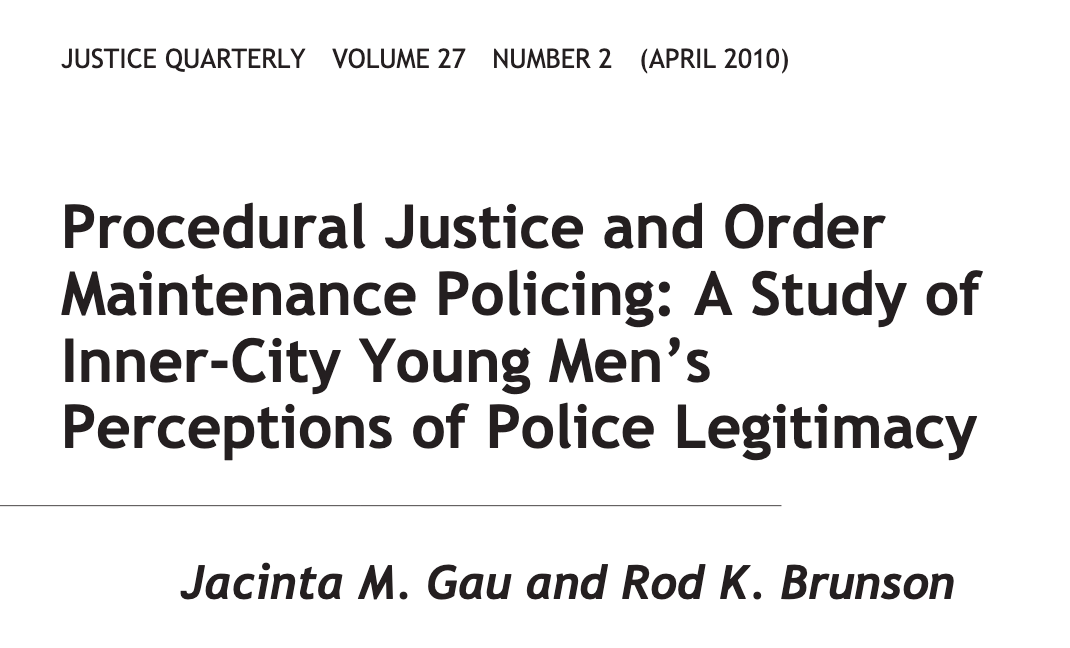


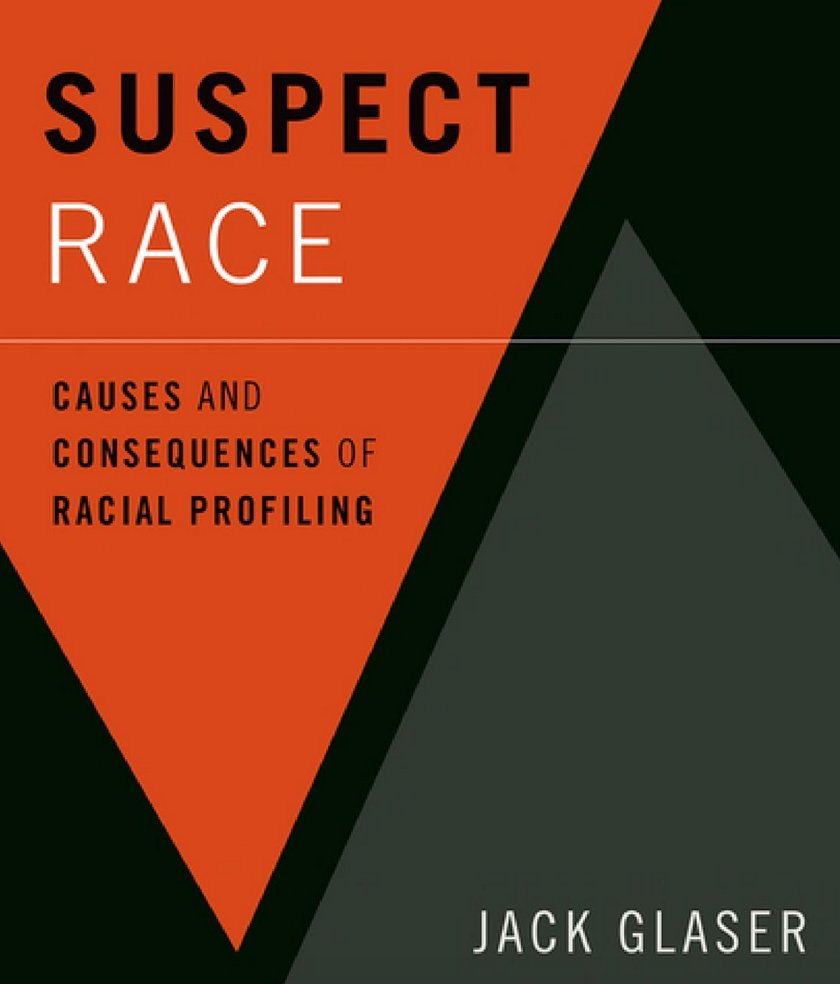
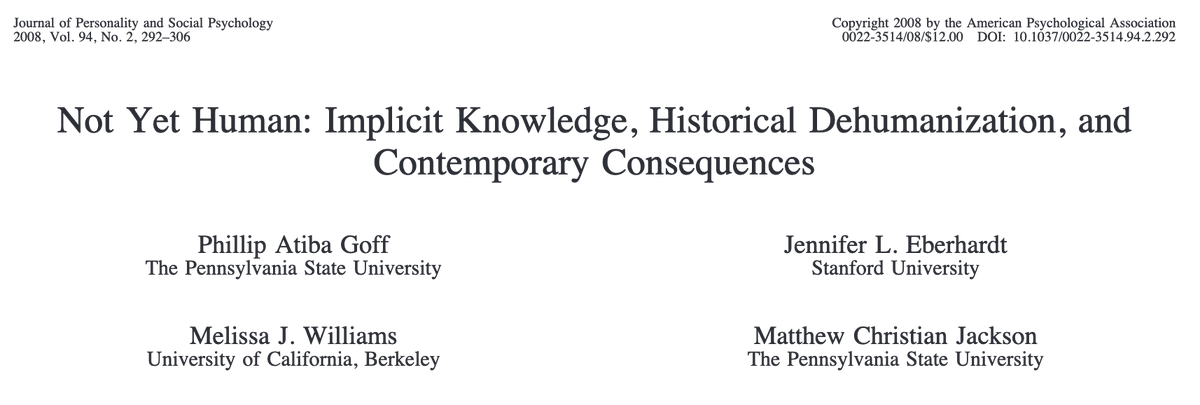
![228/ "65.3% [of emergency physicians] estimated recognising two or more cases of suspected excessive use of force [by police] per year among their patients." & "EPs have legal responsibilities for reporting many types of assaultive injuries [but not] by police officers." 228/ "65.3% [of emergency physicians] estimated recognising two or more cases of suspected excessive use of force [by police] per year among their patients." & "EPs have legal responsibilities for reporting many types of assaultive injuries [but not] by police officers."](https://pbs.twimg.com/media/Eauev36XYAMAuLc.png)
![229/ "Whereas police fear seemingly triggers most police killings, some of them result from police officers deliberately putting themselves in situations where deadly force becomes reasonable or permissible." & "Forms of racism are likely important [but not]... the whole story." 229/ "Whereas police fear seemingly triggers most police killings, some of them result from police officers deliberately putting themselves in situations where deadly force becomes reasonable or permissible." & "Forms of racism are likely important [but not]... the whole story."](https://pbs.twimg.com/media/EauhiwcWsAERfsU.jpg)
![230/ "Rationale and intent to harm by an assailant in general assaults differs substantially from those of law enforcement personnel [yet] the severity of the injuries suffered by the patients in both groups are nearly identical, [despite police]... training to minimize harm." 230/ "Rationale and intent to harm by an assailant in general assaults differs substantially from those of law enforcement personnel [yet] the severity of the injuries suffered by the patients in both groups are nearly identical, [despite police]... training to minimize harm."](https://pbs.twimg.com/media/EaujxEQWAAYvcEC.jpg)
![231/ "Female officers and same-gender female-female officer pairs generally use less force in police-citizen encounters than do their male counter-parts." & "Officer injury might be more likely to occur when officers engage in [above-average use of force]." 231/ "Female officers and same-gender female-female officer pairs generally use less force in police-citizen encounters than do their male counter-parts." & "Officer injury might be more likely to occur when officers engage in [above-average use of force]."](https://pbs.twimg.com/media/EauoC3nXkAAhj__.png)

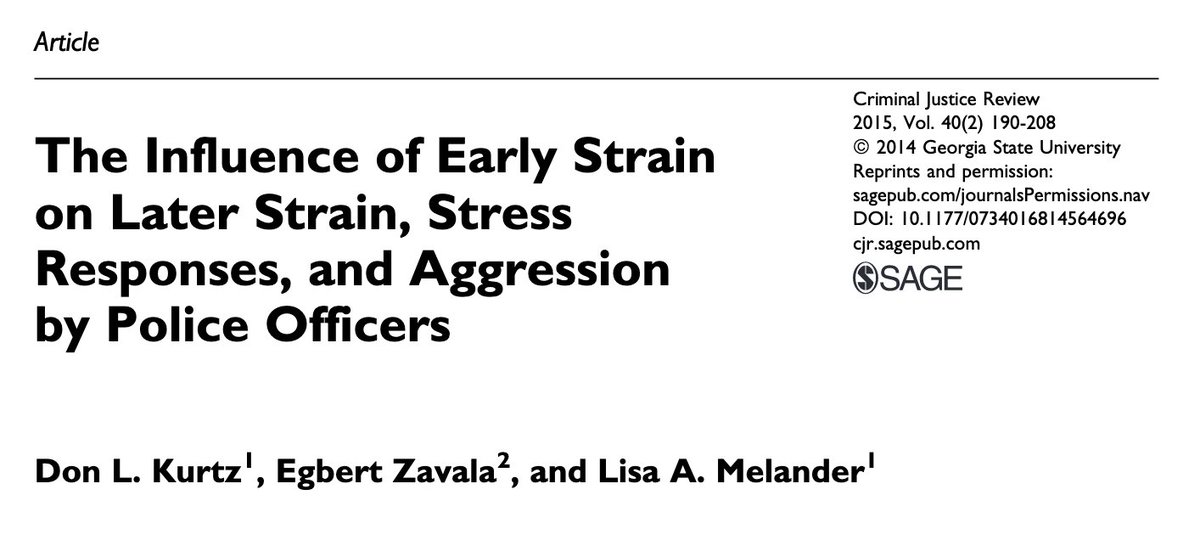

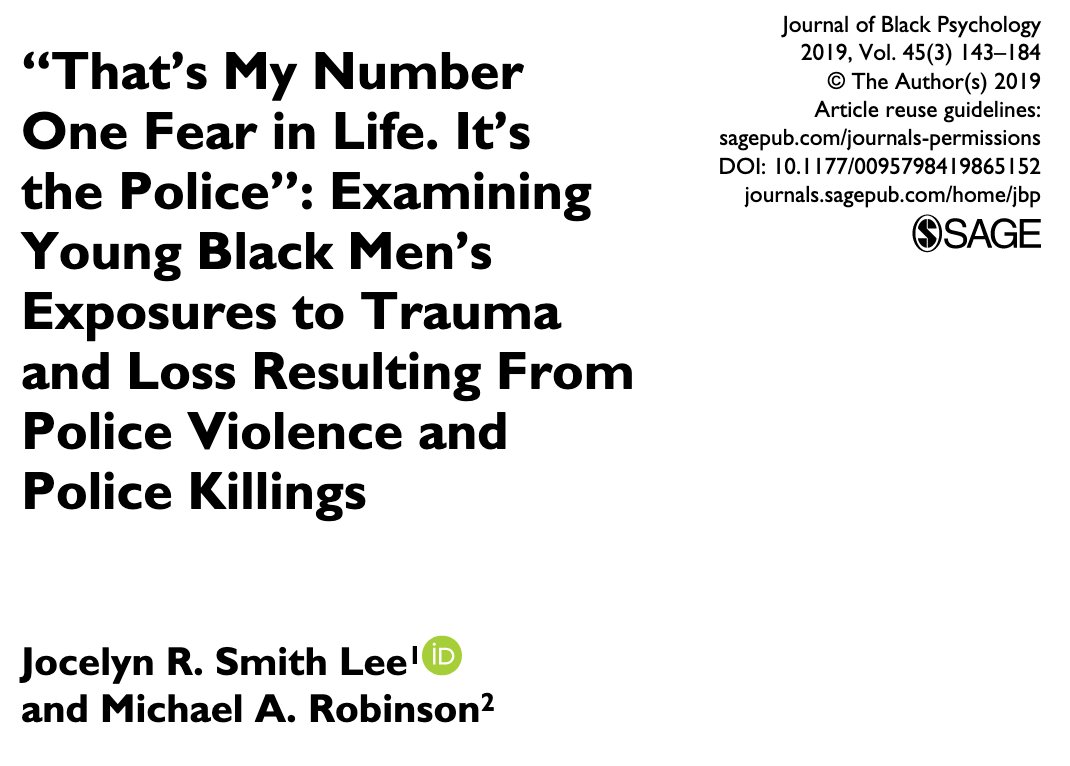

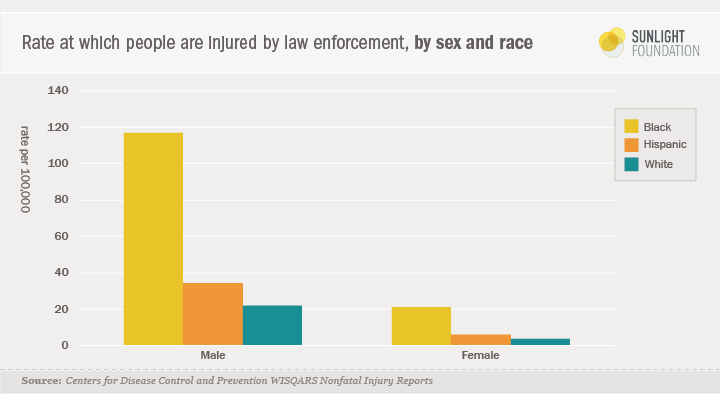
![240/ "The minority threat hypothesis states that the greater the percent minority in a city, the greater the employment of coercive control strategies by the police. That hypothesis is clearly supported in this study." & "We included control variables [for] violent crime rate." 240/ "The minority threat hypothesis states that the greater the percent minority in a city, the greater the employment of coercive control strategies by the police. That hypothesis is clearly supported in this study." & "We included control variables [for] violent crime rate."](https://pbs.twimg.com/media/EavO_CsXkAINbGg.png)
![241/ "OISs [Officer Involved Shootings] preceded by officer-initiated contacts are more likely to involve unarmed suspects than... e.g., call for service... Black OIS suspects are more likely to [be] stopped on the officer’s initiation than non-black OIS suspects." 241/ "OISs [Officer Involved Shootings] preceded by officer-initiated contacts are more likely to involve unarmed suspects than... e.g., call for service... Black OIS suspects are more likely to [be] stopped on the officer’s initiation than non-black OIS suspects."](https://pbs.twimg.com/media/EavR7L2X0AMwf7g.jpg)
![241/ "OISs [Officer Involved Shootings] preceded by officer-initiated contacts are more likely to involve unarmed suspects than... e.g., call for service... Black OIS suspects are more likely to [be] stopped on the officer’s initiation than non-black OIS suspects." 241/ "OISs [Officer Involved Shootings] preceded by officer-initiated contacts are more likely to involve unarmed suspects than... e.g., call for service... Black OIS suspects are more likely to [be] stopped on the officer’s initiation than non-black OIS suspects."](https://pbs.twimg.com/media/EavSMMLWAAAq9ls.png)
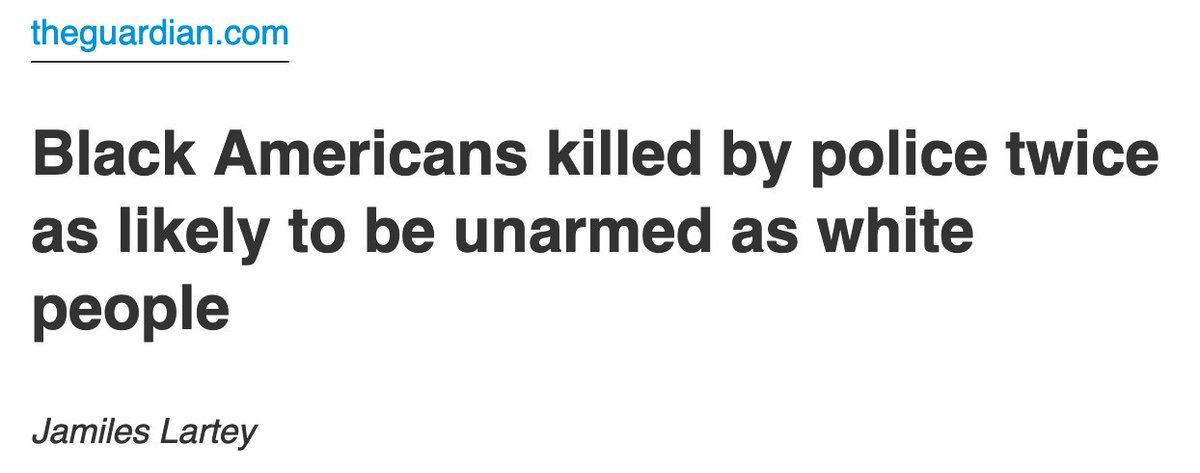
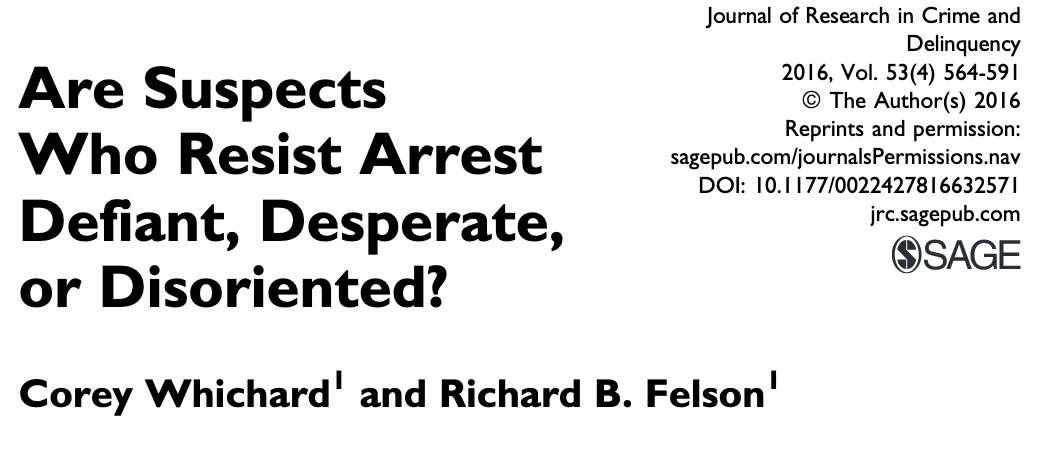
![244/ "Whites tend to stereotype black individuals and neighborhoods as crime-prone ... [and] tend to equate black neighborhoods with poverty and high crime rates and white neighborhoods with affluence and low crime rate without considering low-crime, affluent black communities." 244/ "Whites tend to stereotype black individuals and neighborhoods as crime-prone ... [and] tend to equate black neighborhoods with poverty and high crime rates and white neighborhoods with affluence and low crime rate without considering low-crime, affluent black communities."](https://pbs.twimg.com/media/Eava4HFXQAcEQp1.png)
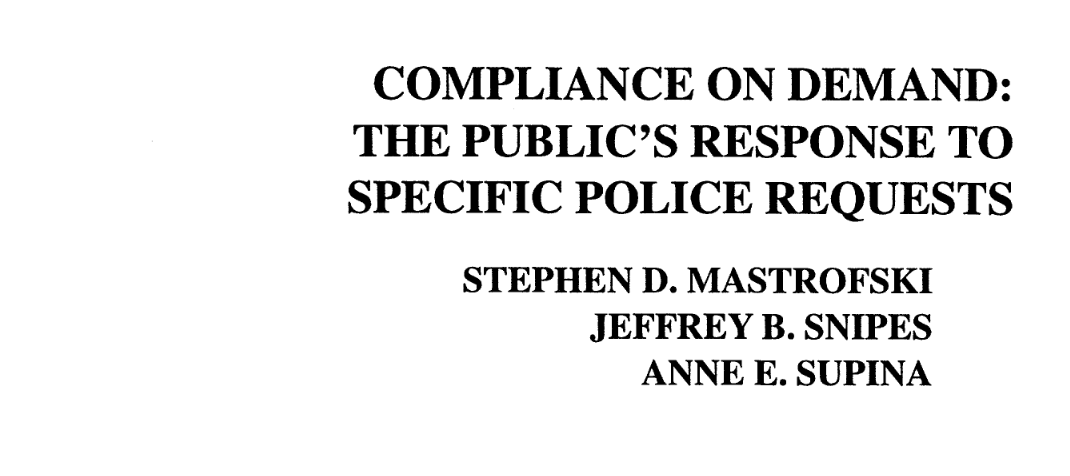

![247/ "Officers... kill a substantial number of civilians who do not pose a lethal threat and these civilians are disproportionately people of color." & "Nearly half of the time that an officer kills a civilian, the civilian is either unarmed or armed with a [less lethal] weapon." 247/ "Officers... kill a substantial number of civilians who do not pose a lethal threat and these civilians are disproportionately people of color." & "Nearly half of the time that an officer kills a civilian, the civilian is either unarmed or armed with a [less lethal] weapon."](https://pbs.twimg.com/media/EawZbKiWAAIRuX3.png)
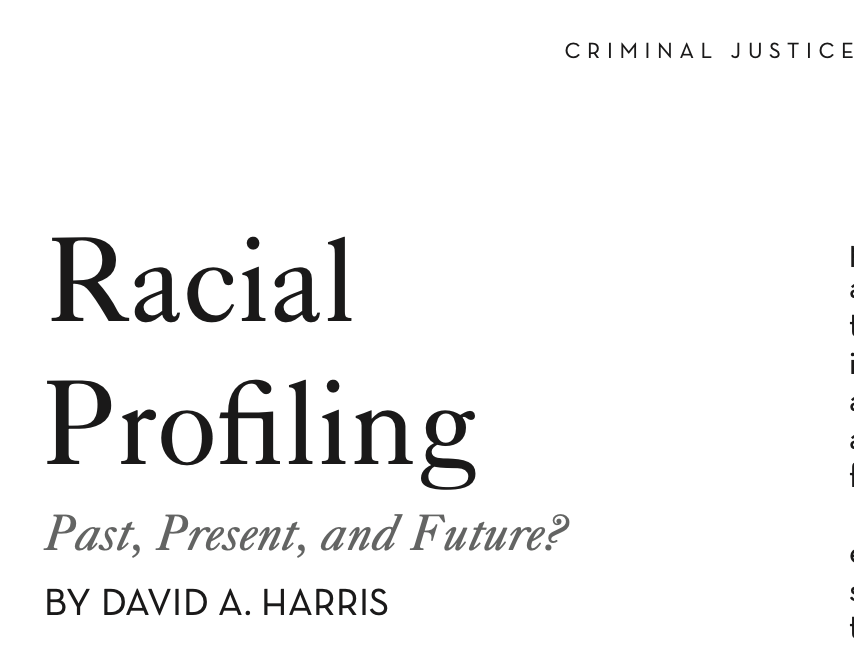
![250/ "For all complaints to the [Chicago] PD, African-Americans are less likely to see their complaints sustained... For officers, male African-American officers are more likely to have complaints levied against them sustained." 250/ "For all complaints to the [Chicago] PD, African-Americans are less likely to see their complaints sustained... For officers, male African-American officers are more likely to have complaints levied against them sustained."](https://pbs.twimg.com/media/Eawqw18WAAIcJl7.png)

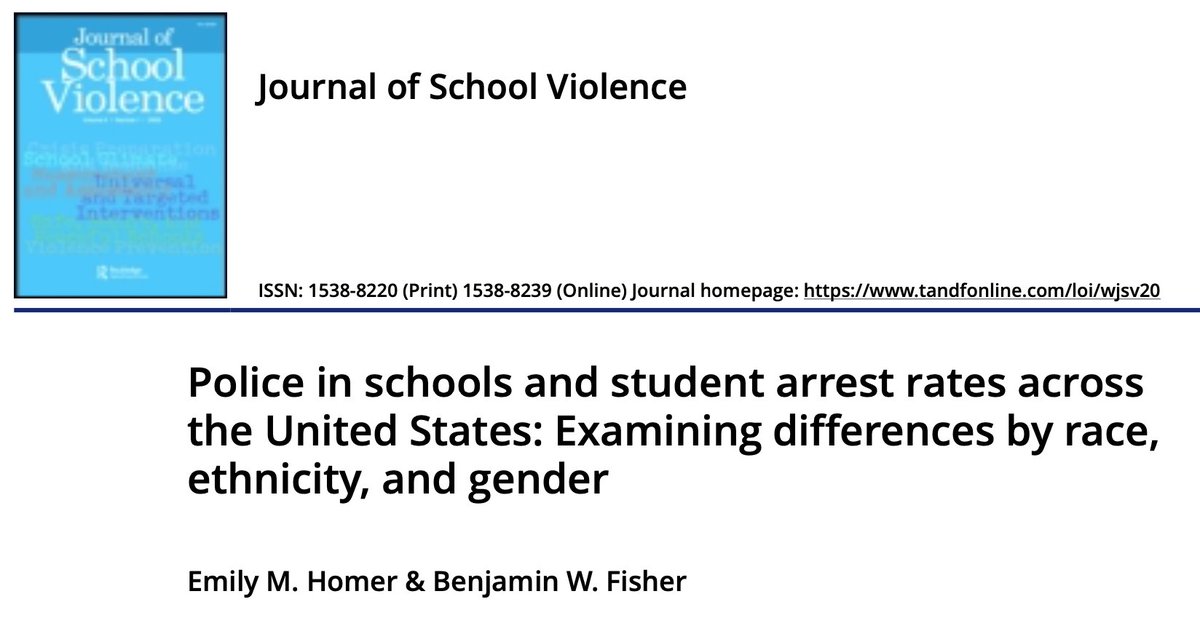
![254/ "These studies have demonstrated that the decision to shoot may be influenced by a target person’s ethnicity. In four studies, [non-police] participants showed a bias to shoot African American targets more rapidly and/or more frequently than White targets." 254/ "These studies have demonstrated that the decision to shoot may be influenced by a target person’s ethnicity. In four studies, [non-police] participants showed a bias to shoot African American targets more rapidly and/or more frequently than White targets."](https://pbs.twimg.com/media/EazWx0uWsAE-82P.jpg)
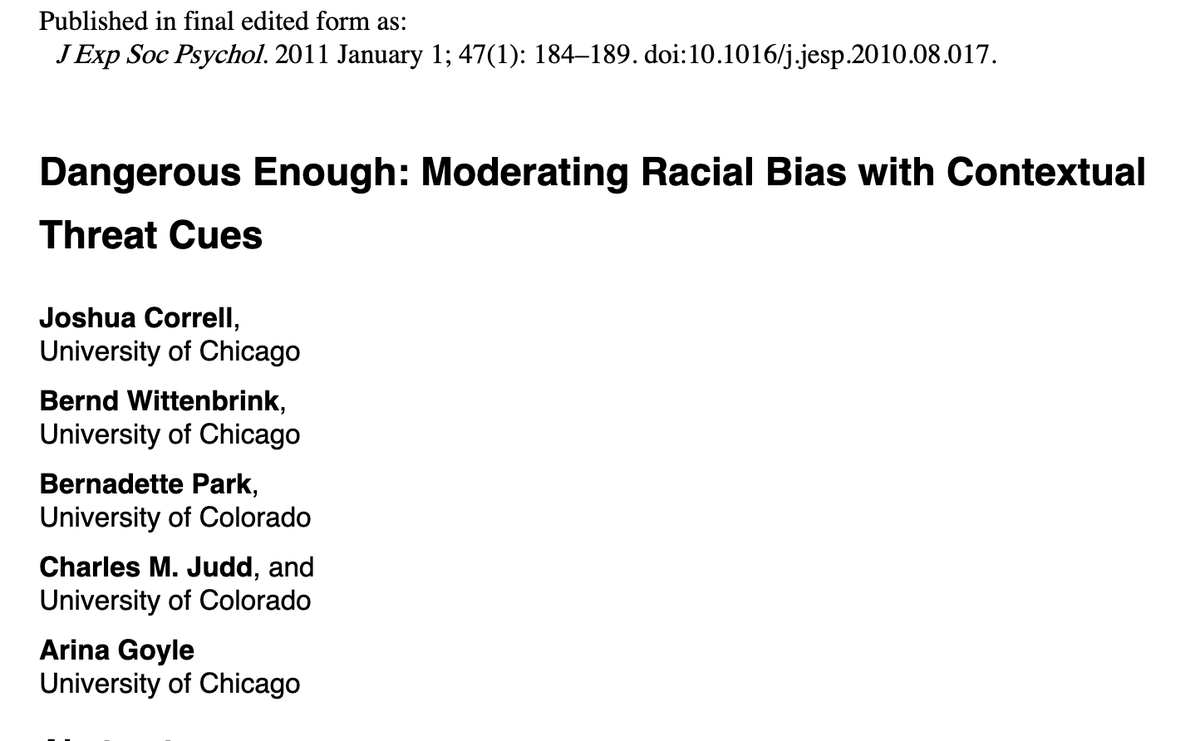
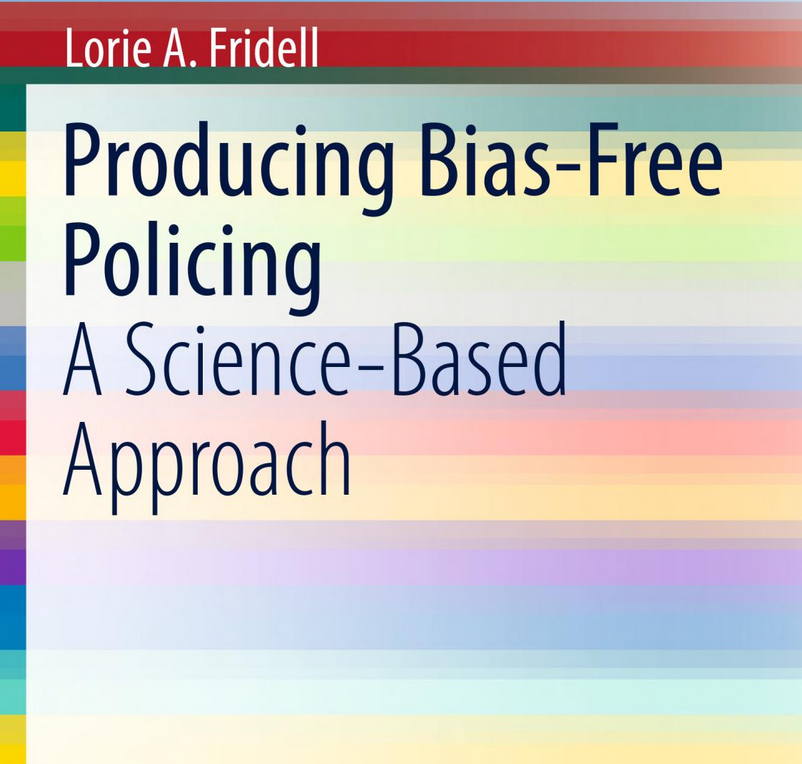
![257/ "White owned bars with exactly the same license and inspection violations as minority owned bars were treated differently... [Despite] numerous... shootings... and fights... [white owned bars] had never been subject to the hyper-scrutiny [and] ongoing police surveillance." 257/ "White owned bars with exactly the same license and inspection violations as minority owned bars were treated differently... [Despite] numerous... shootings... and fights... [white owned bars] had never been subject to the hyper-scrutiny [and] ongoing police surveillance."](https://pbs.twimg.com/media/EazvFbnWkAEceJz.png)

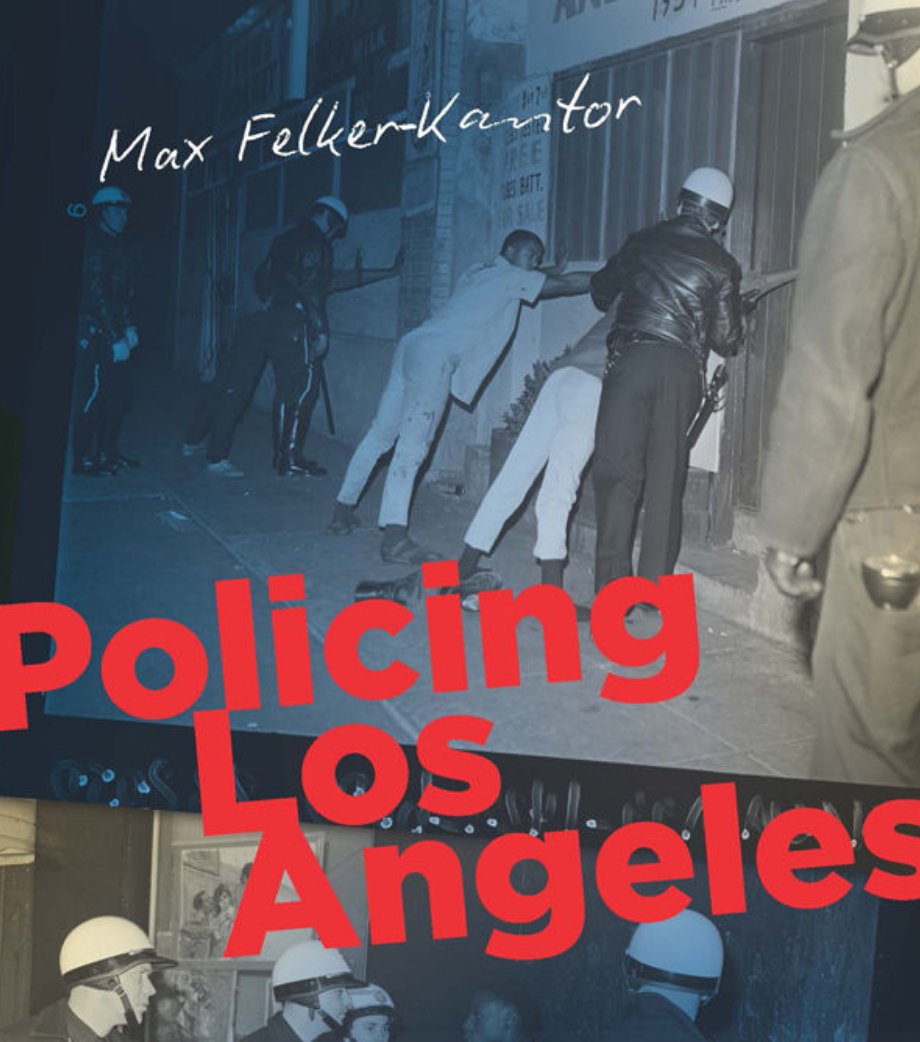
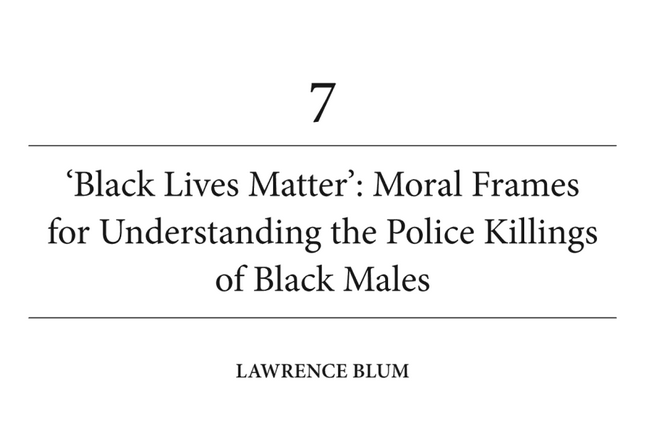
![263/ "Denial of race or racial prejudice as a factor in such incidents functions to further instantiate white supremacy... [When] race is successfully denied, then structural racism need not be challenged or eradicated... Denial of racism is... 'fundamental' to its persistence." 263/ "Denial of race or racial prejudice as a factor in such incidents functions to further instantiate white supremacy... [When] race is successfully denied, then structural racism need not be challenged or eradicated... Denial of racism is... 'fundamental' to its persistence."](https://pbs.twimg.com/media/Ea5NzZfX0Aw0BL3.jpg)
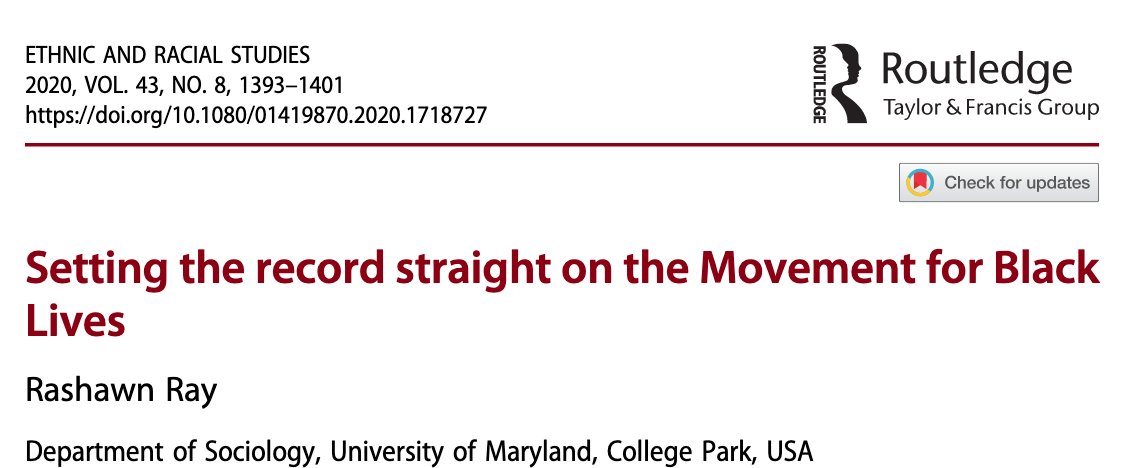


![268/ "Police were 1.65 times more likely to use the ECD [e.g., Taser] against Black subjects in non-high-violent-crime areas." & "Having a Black subject was positively related to police use of ECDs instead of soft hand control." 268/ "Police were 1.65 times more likely to use the ECD [e.g., Taser] against Black subjects in non-high-violent-crime areas." & "Having a Black subject was positively related to police use of ECDs instead of soft hand control."](https://pbs.twimg.com/media/Ea5jlXCXgAYMfWO.jpg)


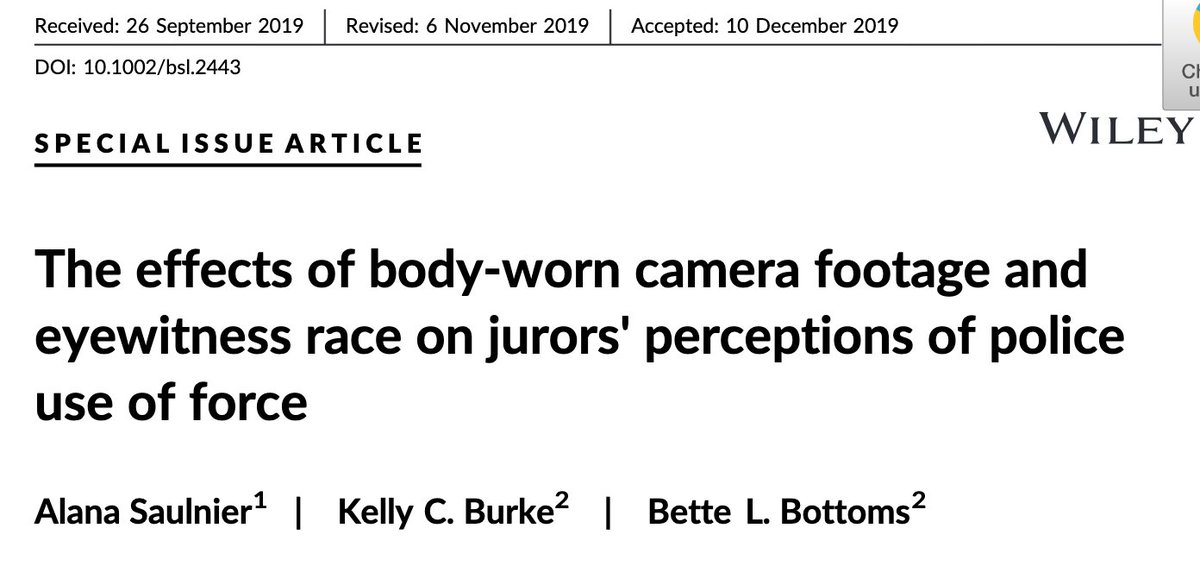
![272/ "[Homeless] participants... could not rely on the police for protection and support... Participants who identified as transgender and as youth of color in particular reported situations in which they believed they were targeted because of their intersecting identities." 272/ "[Homeless] participants... could not rely on the police for protection and support... Participants who identified as transgender and as youth of color in particular reported situations in which they believed they were targeted because of their intersecting identities."](https://pbs.twimg.com/media/Ea5se8ZX0AA0kjo.jpg)
![273/ "As with the All Lives Matter narrative, Blue Lives Matter sought to construct [BLM] as selfish and ungrateful for the protections police courageously provide them." & "With few exceptions, these counter narratives framed those killed as at fault for their own deaths." 273/ "As with the All Lives Matter narrative, Blue Lives Matter sought to construct [BLM] as selfish and ungrateful for the protections police courageously provide them." & "With few exceptions, these counter narratives framed those killed as at fault for their own deaths."](https://pbs.twimg.com/media/Ea5xXQIWoAEDL3y.png)
![273/ "As with the All Lives Matter narrative, Blue Lives Matter sought to construct [BLM] as selfish and ungrateful for the protections police courageously provide them." & "With few exceptions, these counter narratives framed those killed as at fault for their own deaths." 273/ "As with the All Lives Matter narrative, Blue Lives Matter sought to construct [BLM] as selfish and ungrateful for the protections police courageously provide them." & "With few exceptions, these counter narratives framed those killed as at fault for their own deaths."](https://pbs.twimg.com/media/Ea5xv_7WoAIcytR.png)
![274/ "Police unions have fought to shield their members from public scrutiny and legal accountability. And police unions repeatedly have rallied behind politicians hostile to criminal justice reform, racial justice, and labor rights." [Proposes more nuanced discussion of unions] 274/ "Police unions have fought to shield their members from public scrutiny and legal accountability. And police unions repeatedly have rallied behind politicians hostile to criminal justice reform, racial justice, and labor rights." [Proposes more nuanced discussion of unions]](https://pbs.twimg.com/media/Ea6f-E_X0AEGKx9.png)
![275/ "Throughout American history, police have gravitated to right-wing, law-and- order politicians and ethnocentric groups... The FOP [Fraternal Order of Police] has a racially fraught history." & "[FOP] lodge density is associated with a... swing from Romney to Trump." 275/ "Throughout American history, police have gravitated to right-wing, law-and- order politicians and ethnocentric groups... The FOP [Fraternal Order of Police] has a racially fraught history." & "[FOP] lodge density is associated with a... swing from Romney to Trump."](https://pbs.twimg.com/media/Ea6i_qpXQAMsr9s.jpg)
![276/ "Baltimore’s police department... is 44% black, but its FOP has never had a black leader. The D.C. FOP chapter board is mainly white, even though the Metropolitan [PD] is predominately black. The Chicago FOP has no black officers on the executive leadership team." 276/ "Baltimore’s police department... is 44% black, but its FOP has never had a black leader. The D.C. FOP chapter board is mainly white, even though the Metropolitan [PD] is predominately black. The Chicago FOP has no black officers on the executive leadership team."](https://pbs.twimg.com/media/Ea6j5UbXkAYVaQo.jpg)


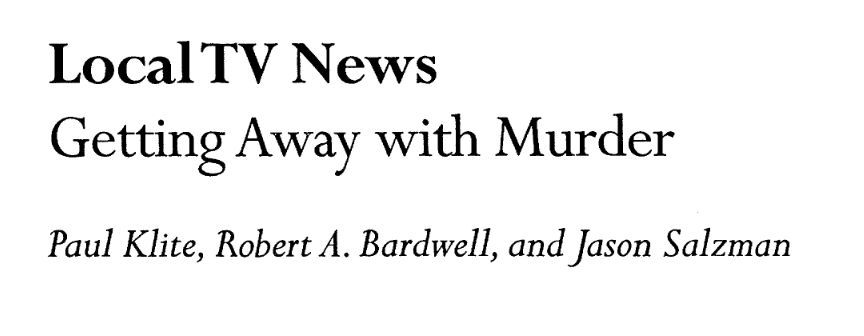
![280/ "The ever-popular response [is] that 'Black on Black' crime justifies countless policing injustices... A similarly overwhelming number of crimes suffered by White victims are committed by White perpetrators... [but] the phrase 'White on White' crime has no social salience." 280/ "The ever-popular response [is] that 'Black on Black' crime justifies countless policing injustices... A similarly overwhelming number of crimes suffered by White victims are committed by White perpetrators... [but] the phrase 'White on White' crime has no social salience."](https://pbs.twimg.com/media/Ea7AZCCWoAIhF8p.png)
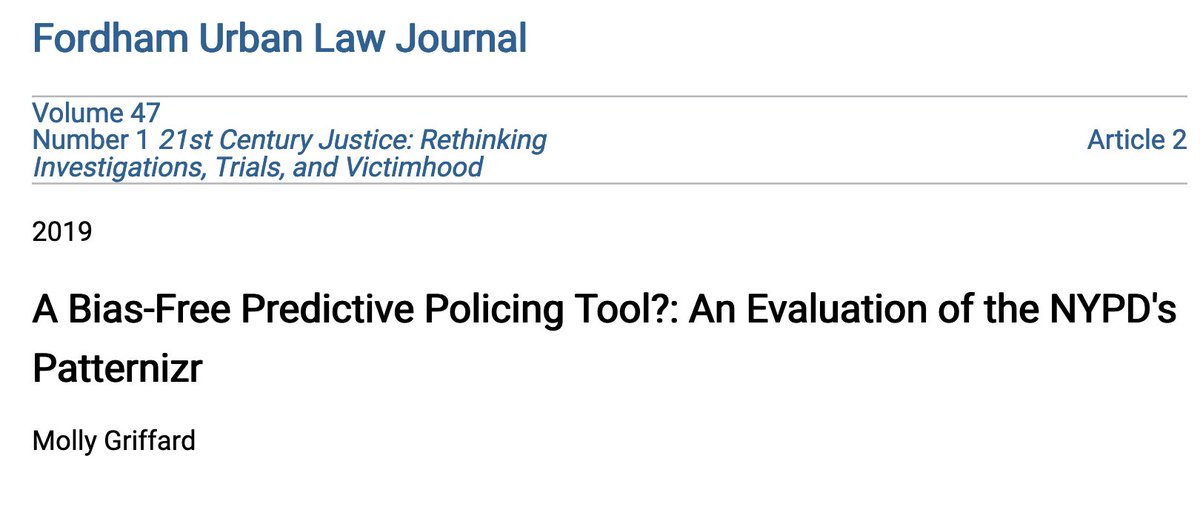


![284/ "[Bureau of Justice Statistics] ARD program captured approximately 49% of law enforcement homicides, while the [FBI's] SHR captured 46%. An estimated 28% of the law enforcement homicides in the United States are not captured by either system." 284/ "[Bureau of Justice Statistics] ARD program captured approximately 49% of law enforcement homicides, while the [FBI's] SHR captured 46%. An estimated 28% of the law enforcement homicides in the United States are not captured by either system."](https://pbs.twimg.com/media/Ea-PdhmWkAc79Bu.png)
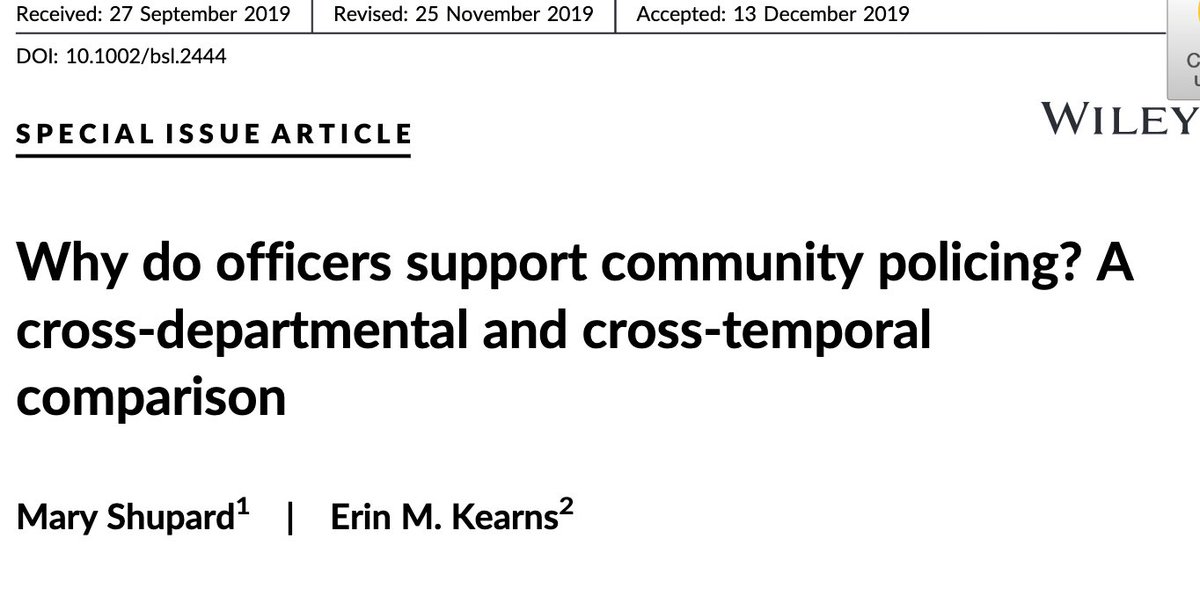
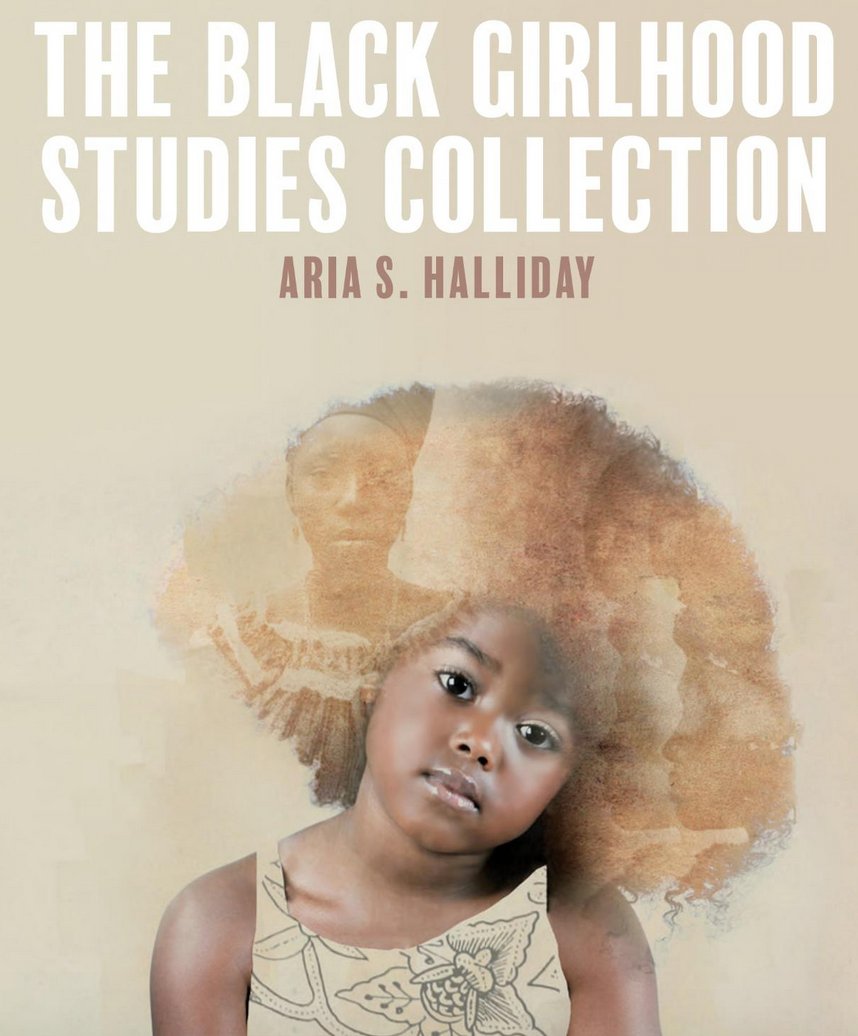
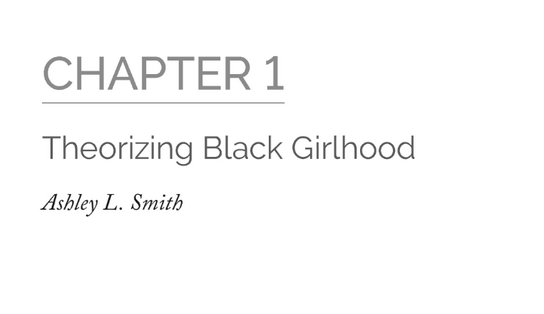
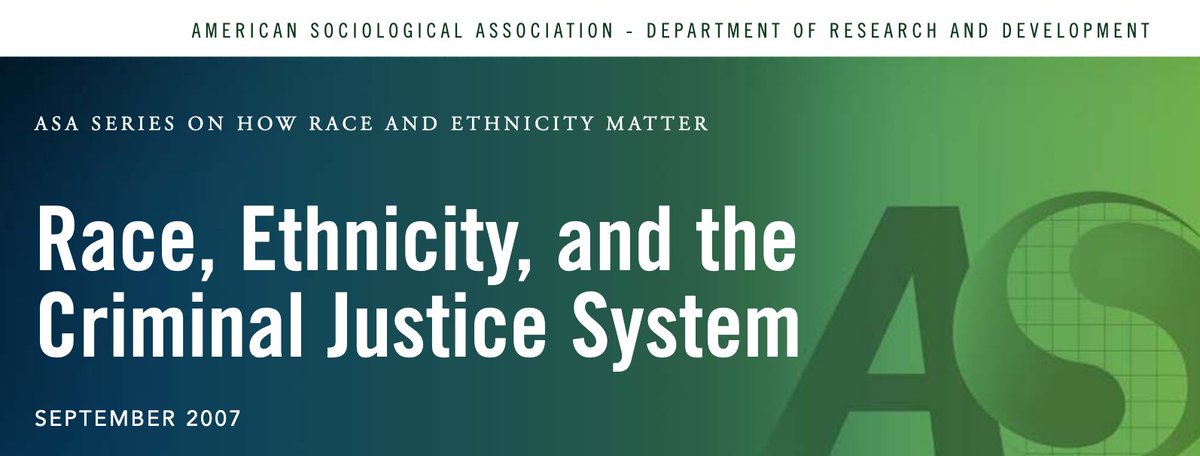

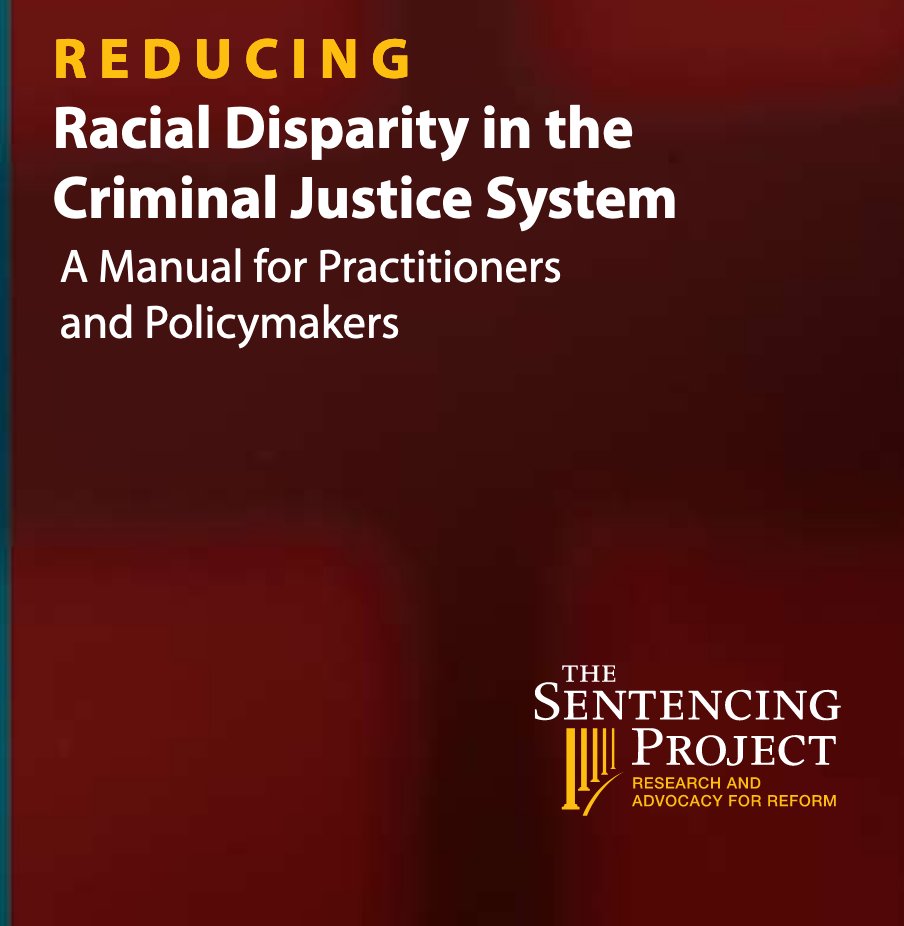
![290/ "There is a significant history in the United States of white people calling the police on innocent people of color... [One explanation is that] these individuals are... utilizing law enforcement as their own personal race police." 290/ "There is a significant history in the United States of white people calling the police on innocent people of color... [One explanation is that] these individuals are... utilizing law enforcement as their own personal race police."](https://pbs.twimg.com/media/EbASbuvXkAERXwW.png)

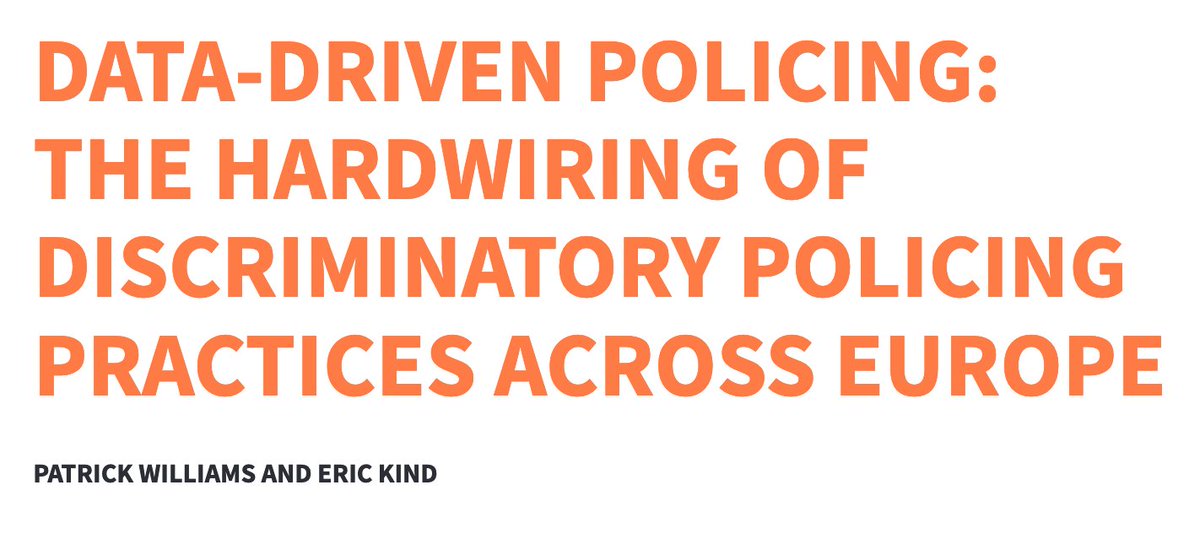
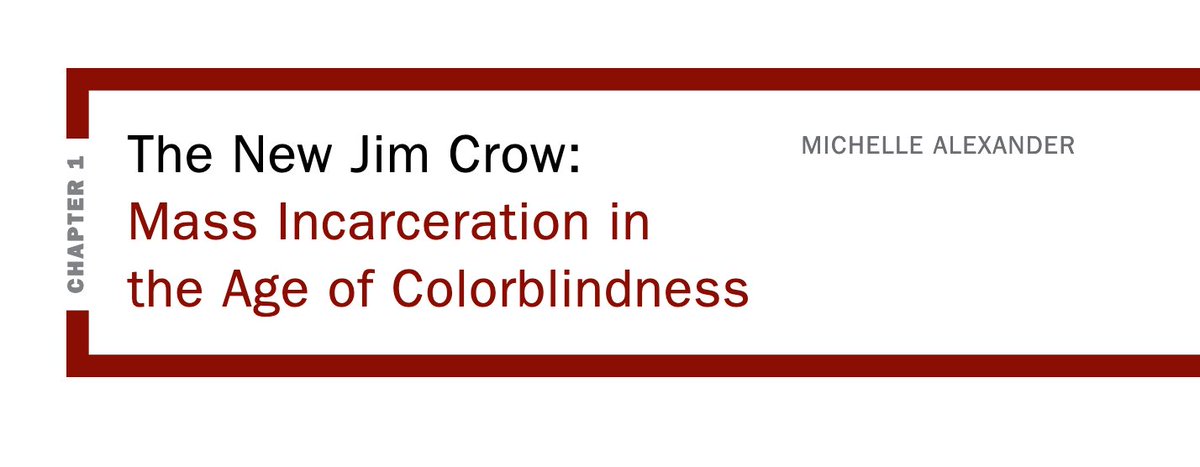
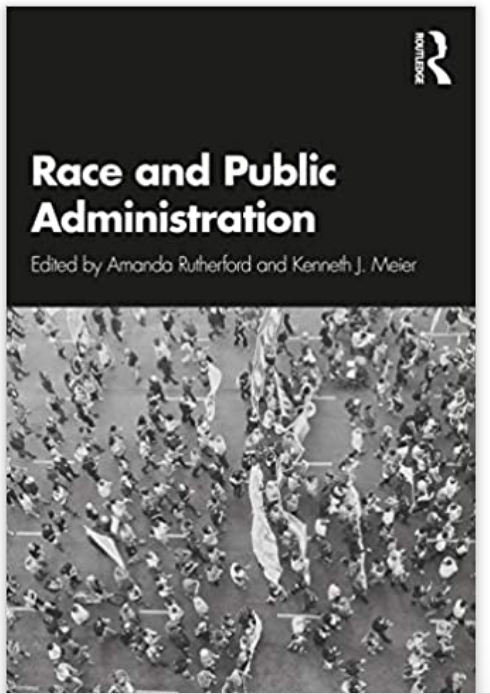

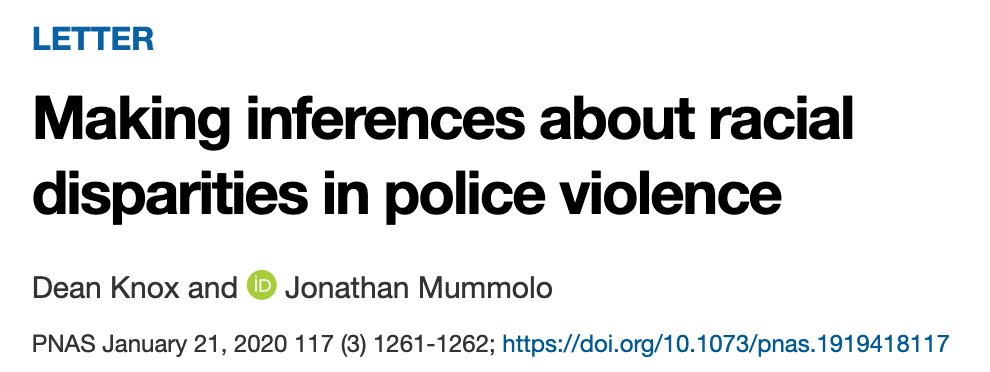
![296/ Same PNAS paper fails to control for population, demographic, and suicidality rates. "Contrary to [Johnson et al.'s] claim, their data are entirely consistent with the public perception that young male victims of fatal use of force are disproportionally Black." 296/ Same PNAS paper fails to control for population, demographic, and suicidality rates. "Contrary to [Johnson et al.'s] claim, their data are entirely consistent with the public perception that young male victims of fatal use of force are disproportionally Black."](https://pbs.twimg.com/media/EbDrrMKX0AMbdUW.jpg)
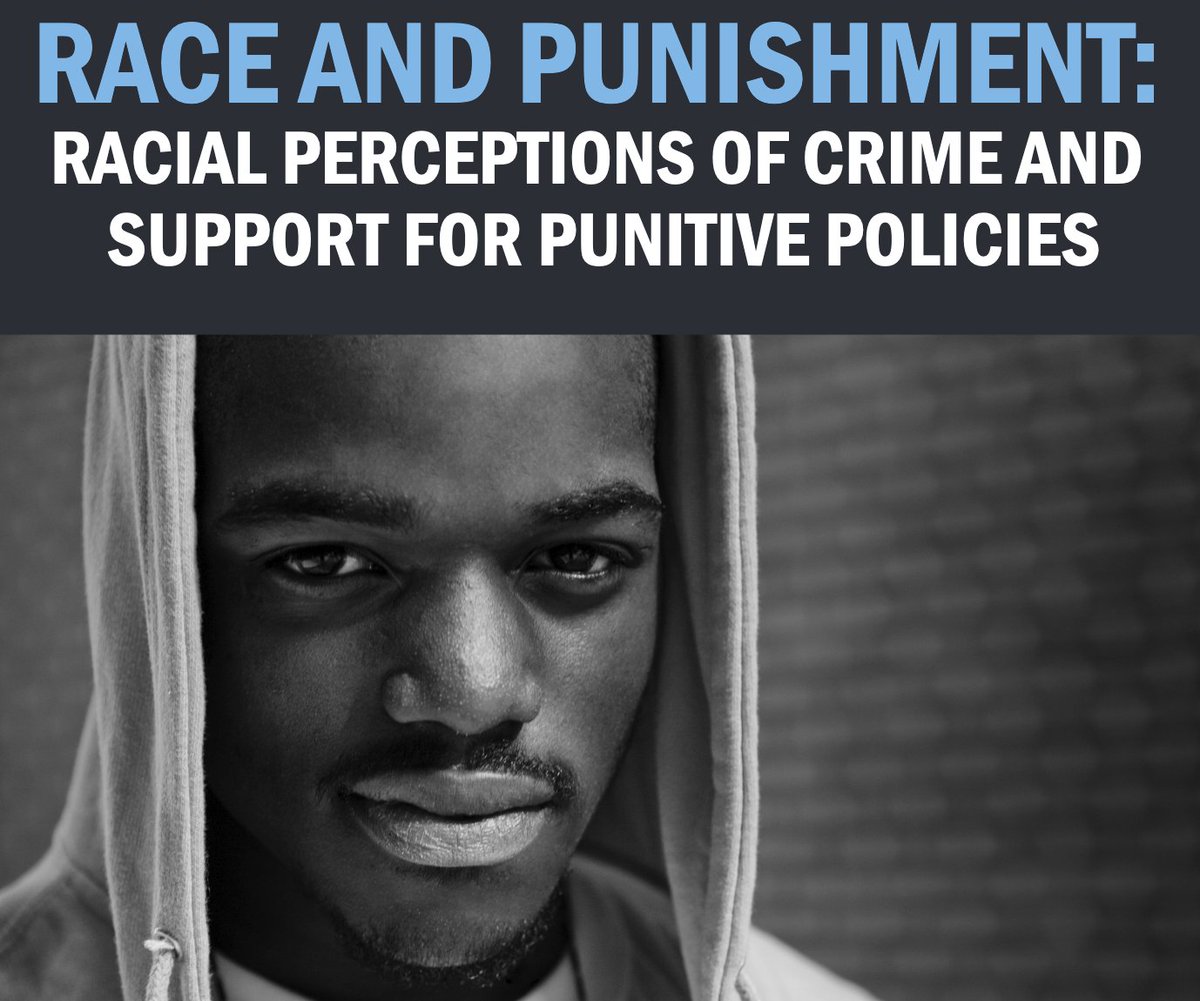
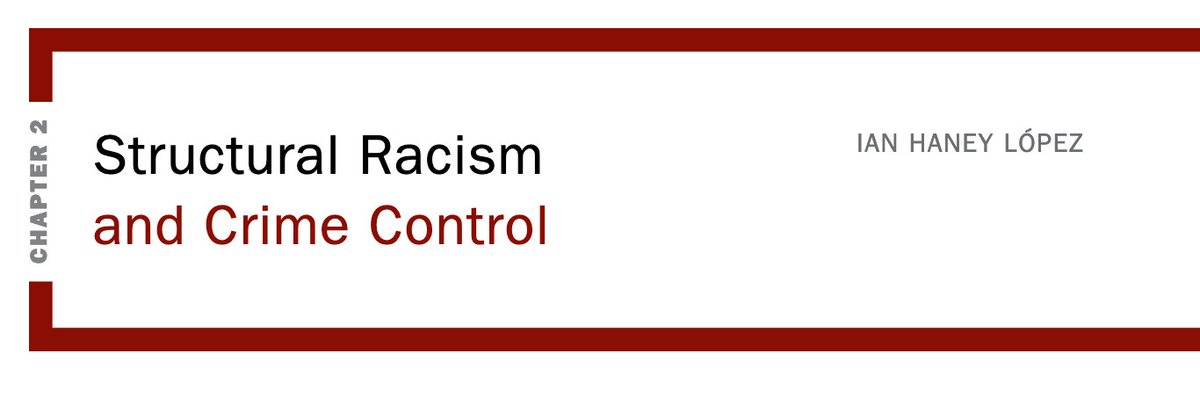
![299/ "Black [Canadian] youth are more likely to be charged and less likely to be cautioned than White youth. ... Racial discrimination may play a role in how police select youth to be diverted from the formal court system for minor offenses in Canada." 299/ "Black [Canadian] youth are more likely to be charged and less likely to be cautioned than White youth. ... Racial discrimination may play a role in how police select youth to be diverted from the formal court system for minor offenses in Canada."](https://pbs.twimg.com/media/EbDxQWOX0AQe4A2.jpg)


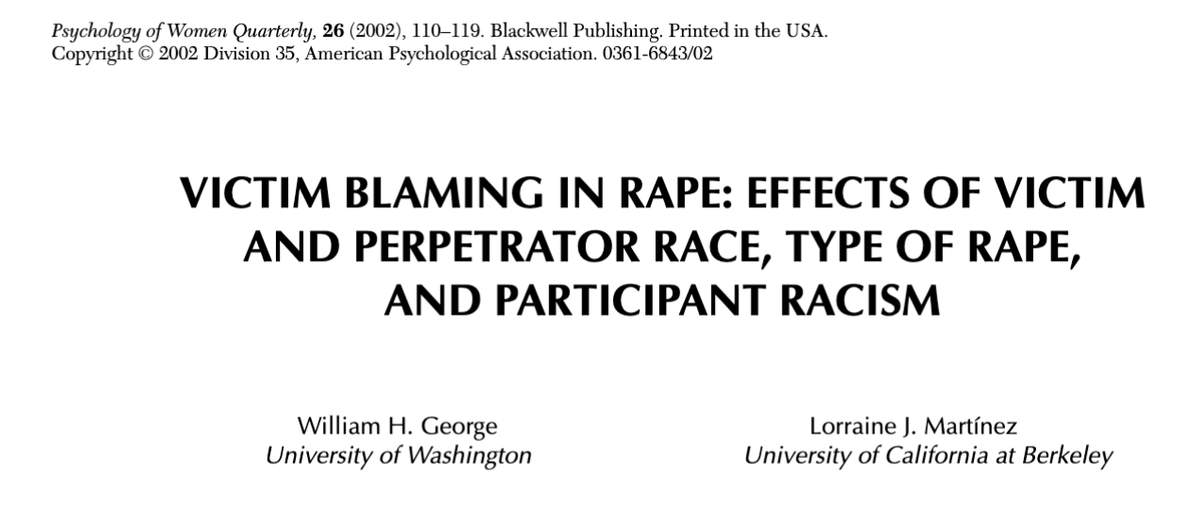
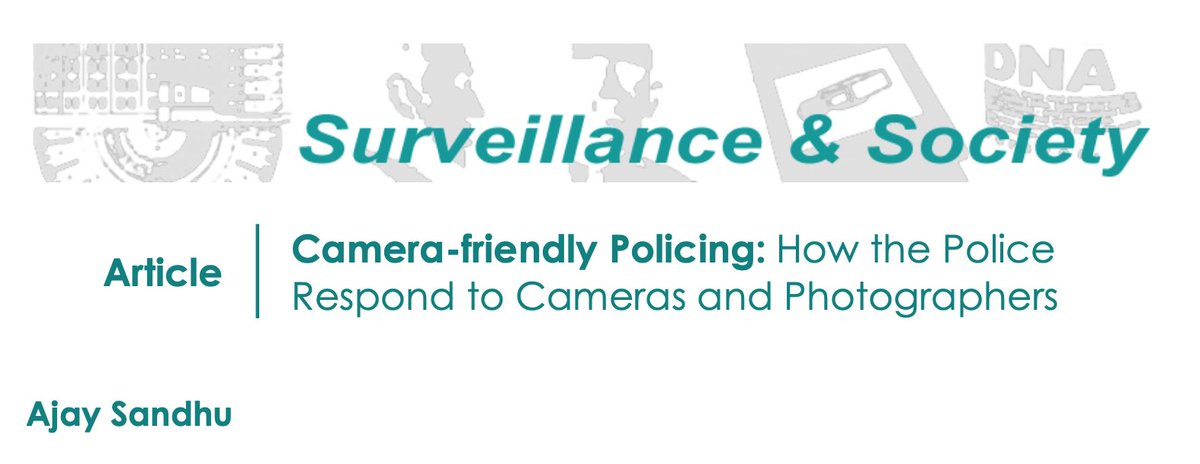
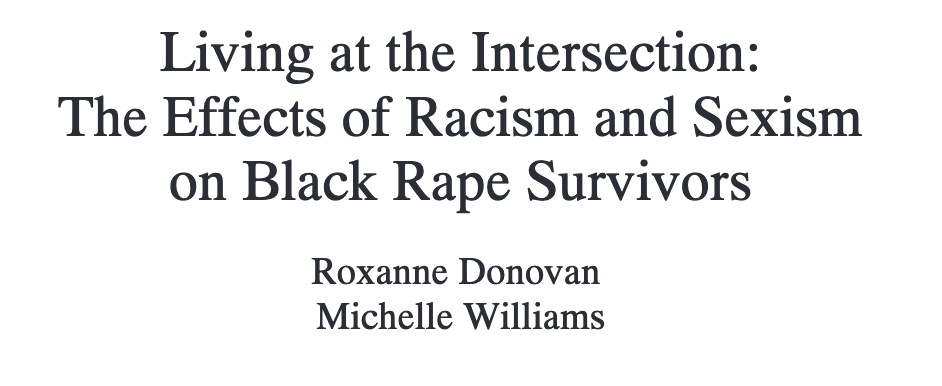
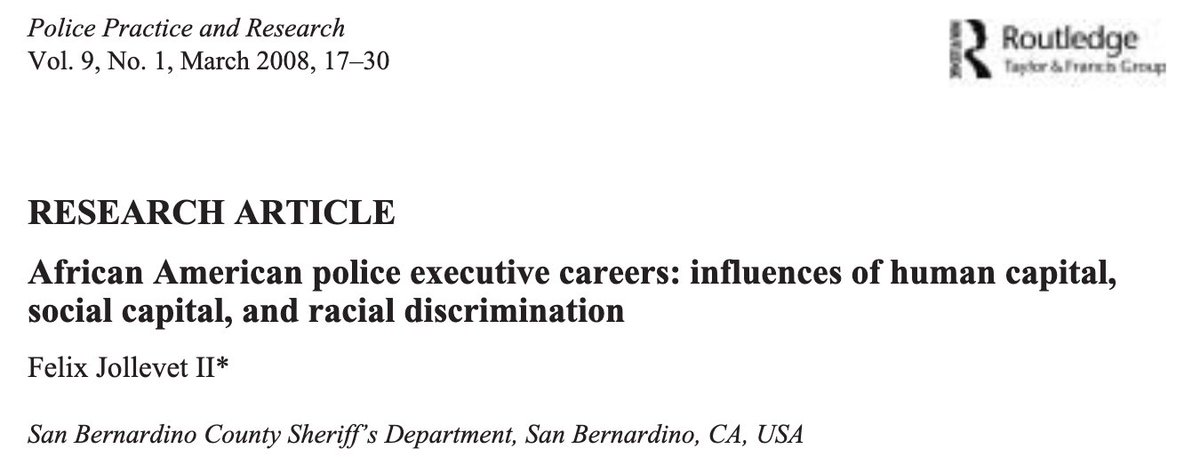
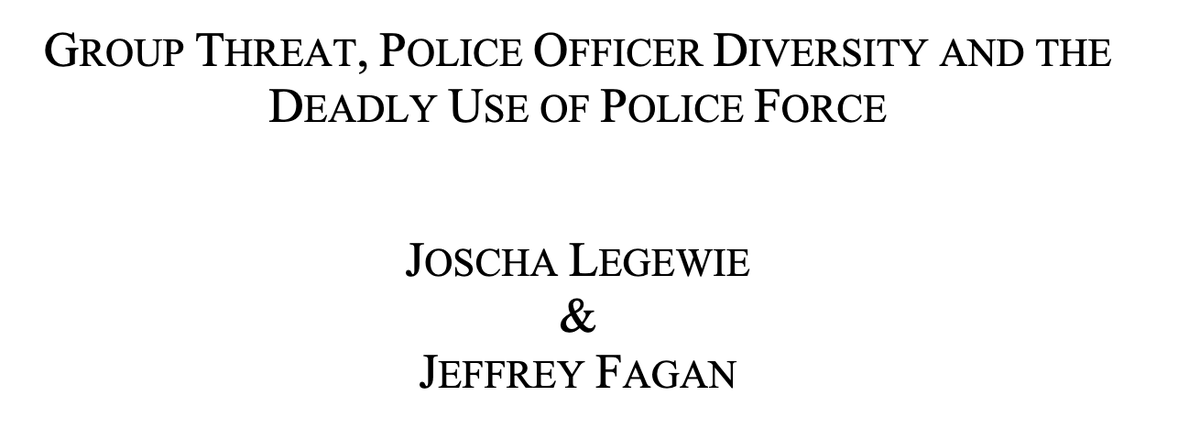

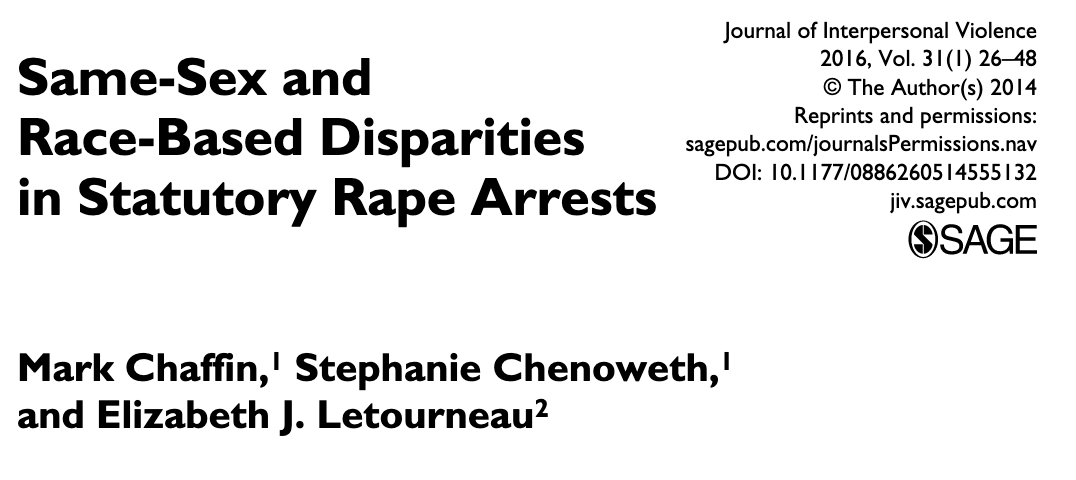

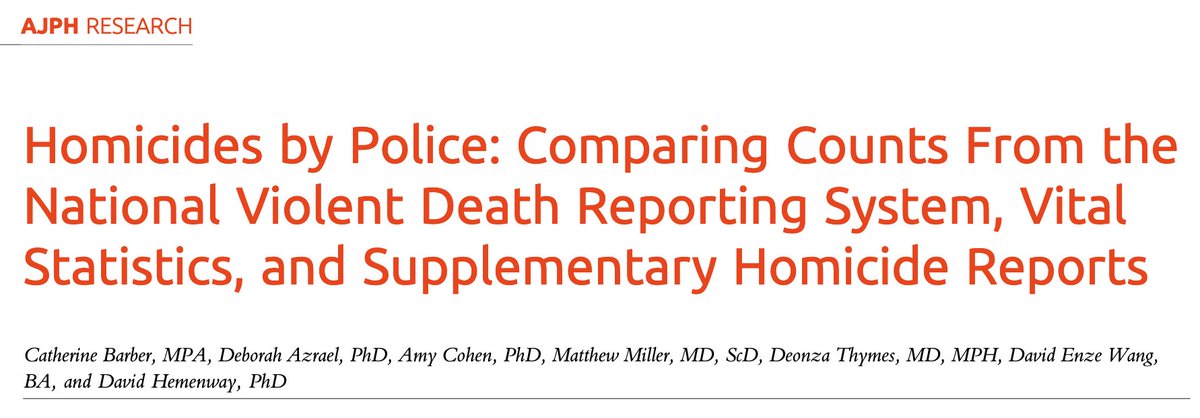
![311/ "[Journalists'] recycled metaphors and modifiers such as jungle, predator, epidemic, infested, viral, and bred or breeding tell us that the places and people we are encountering are somehow bestial, pestilent, or otherwise uncivilized... conditions that 'breed' crime." 311/ "[Journalists'] recycled metaphors and modifiers such as jungle, predator, epidemic, infested, viral, and bred or breeding tell us that the places and people we are encountering are somehow bestial, pestilent, or otherwise uncivilized... conditions that 'breed' crime."](https://pbs.twimg.com/media/EbI2CuyX0AIEVag.jpg)
![312/ Externalities of police killings on neighborhoods: "Women living in lethally surveilled neighborhoods [more police killings] face a greater risk of morbidity than comparable women living in less lethal neighborhoods." (forthcoming @ERSjournal; @aasewell @DrKLG4Health) 312/ Externalities of police killings on neighborhoods: "Women living in lethally surveilled neighborhoods [more police killings] face a greater risk of morbidity than comparable women living in less lethal neighborhoods." (forthcoming @ERSjournal; @aasewell @DrKLG4Health)](https://pbs.twimg.com/media/EbJGeXuWAAMYZb4.jpg)


![316/ "Across almost all counties, individuals who were unarmed and shot by police had a much higher probability of being black or hispanic than being white... [Those] shot by police had a higher median probability of being unarmed black individuals than being armed white[s]." 316/ "Across almost all counties, individuals who were unarmed and shot by police had a much higher probability of being black or hispanic than being white... [Those] shot by police had a higher median probability of being unarmed black individuals than being armed white[s]."](https://pbs.twimg.com/media/EbKlQaAWkAEamO-.jpg)
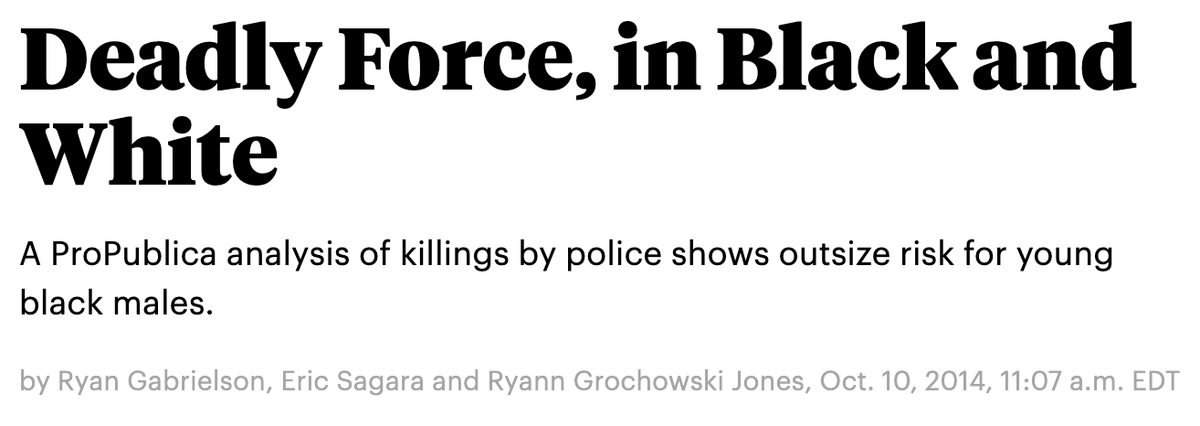
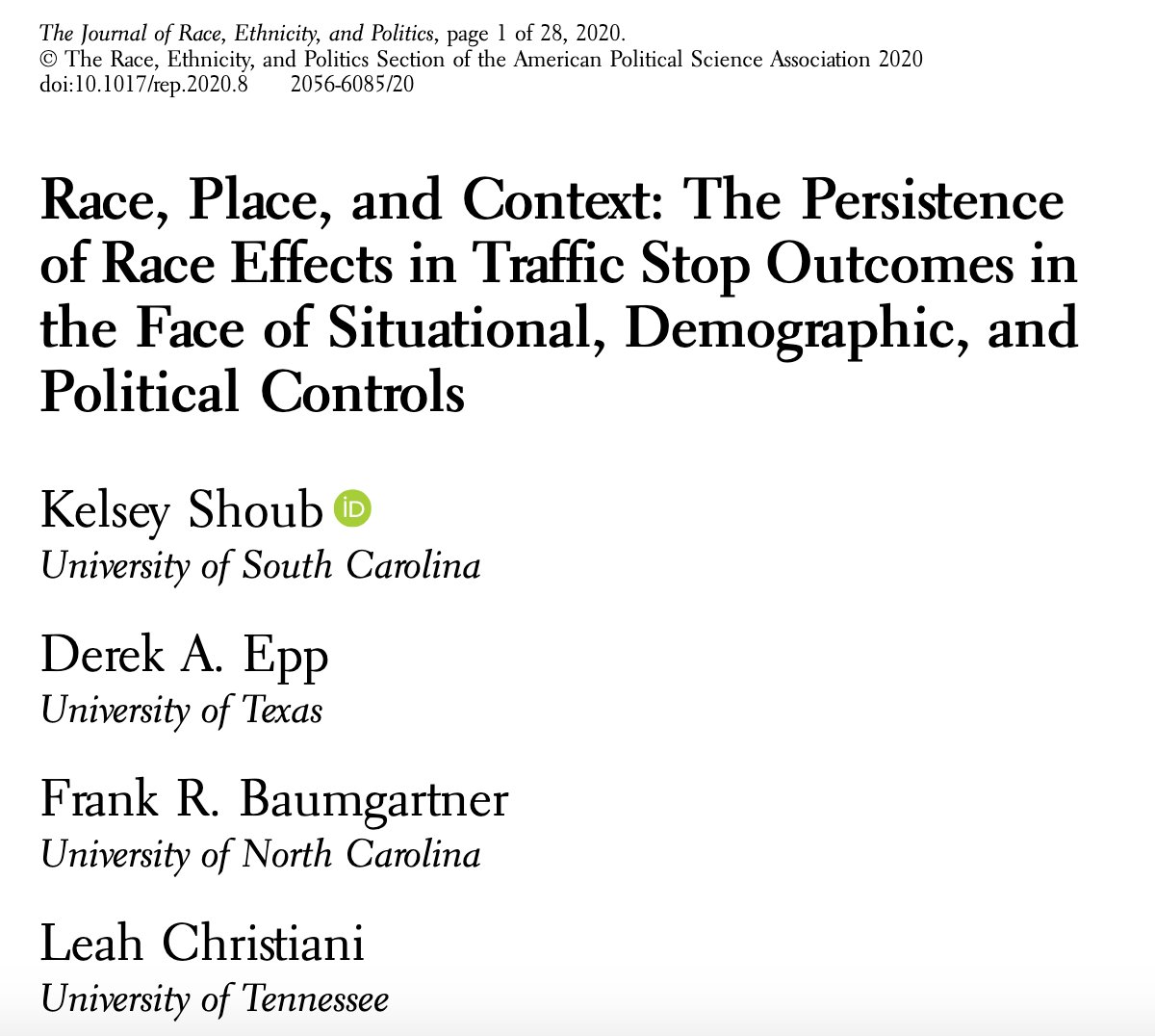

![320/ "Negative sentiments toward Blacks were observed frequently during gatherings of White [police] recruits... leading officers to believe that ... inclusion of African Americans in policing represent a decline in standards." 320/ "Negative sentiments toward Blacks were observed frequently during gatherings of White [police] recruits... leading officers to believe that ... inclusion of African Americans in policing represent a decline in standards."](https://pbs.twimg.com/media/EbNc5PWXkAIskGP.png)
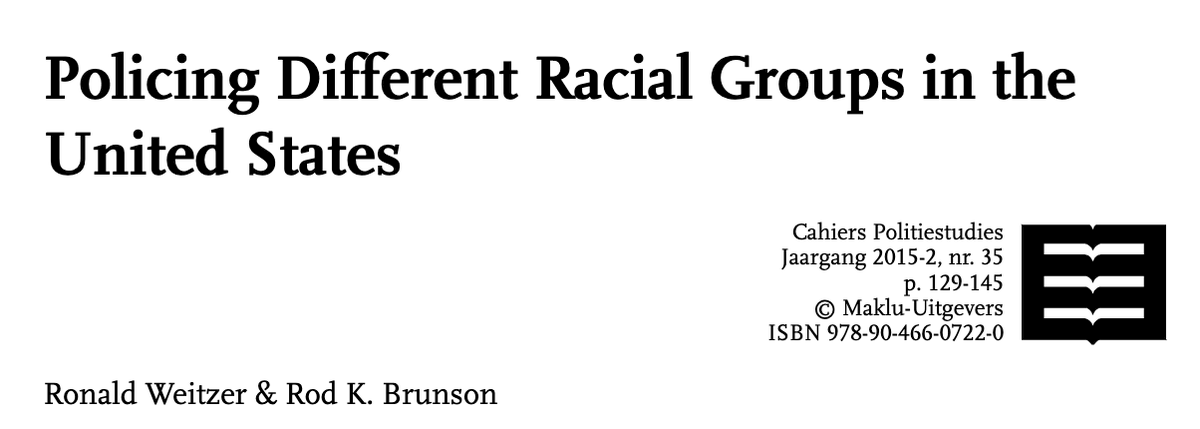
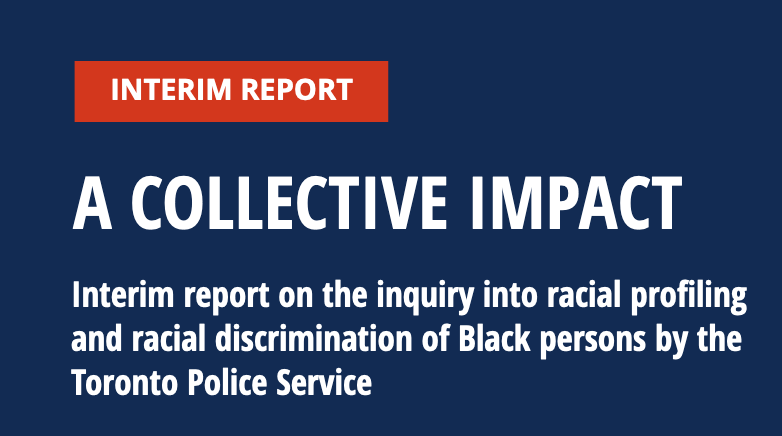
![324/ By focusing traffic stops on actual moving violations rather than officer "investigatory" stops, "Both measures of Black non-Hispanic traffic stop disparities were reduced" & "All three measures of negative traffic outcomes [crashes, injuries, fatalities] were also reduced." 324/ By focusing traffic stops on actual moving violations rather than officer "investigatory" stops, "Both measures of Black non-Hispanic traffic stop disparities were reduced" & "All three measures of negative traffic outcomes [crashes, injuries, fatalities] were also reduced."](https://pbs.twimg.com/media/EbS9wQRWkAArI5-.jpg)


![327/ "Concerns about [police officers] being killed on the job, although serious, have been greatly over exaggerated to warrant dramatic increases in police shootings and killing of unarmed suspects of color." 327/ "Concerns about [police officers] being killed on the job, although serious, have been greatly over exaggerated to warrant dramatic increases in police shootings and killing of unarmed suspects of color."](https://pbs.twimg.com/media/EbTE7QlWkAoCASv.jpg)
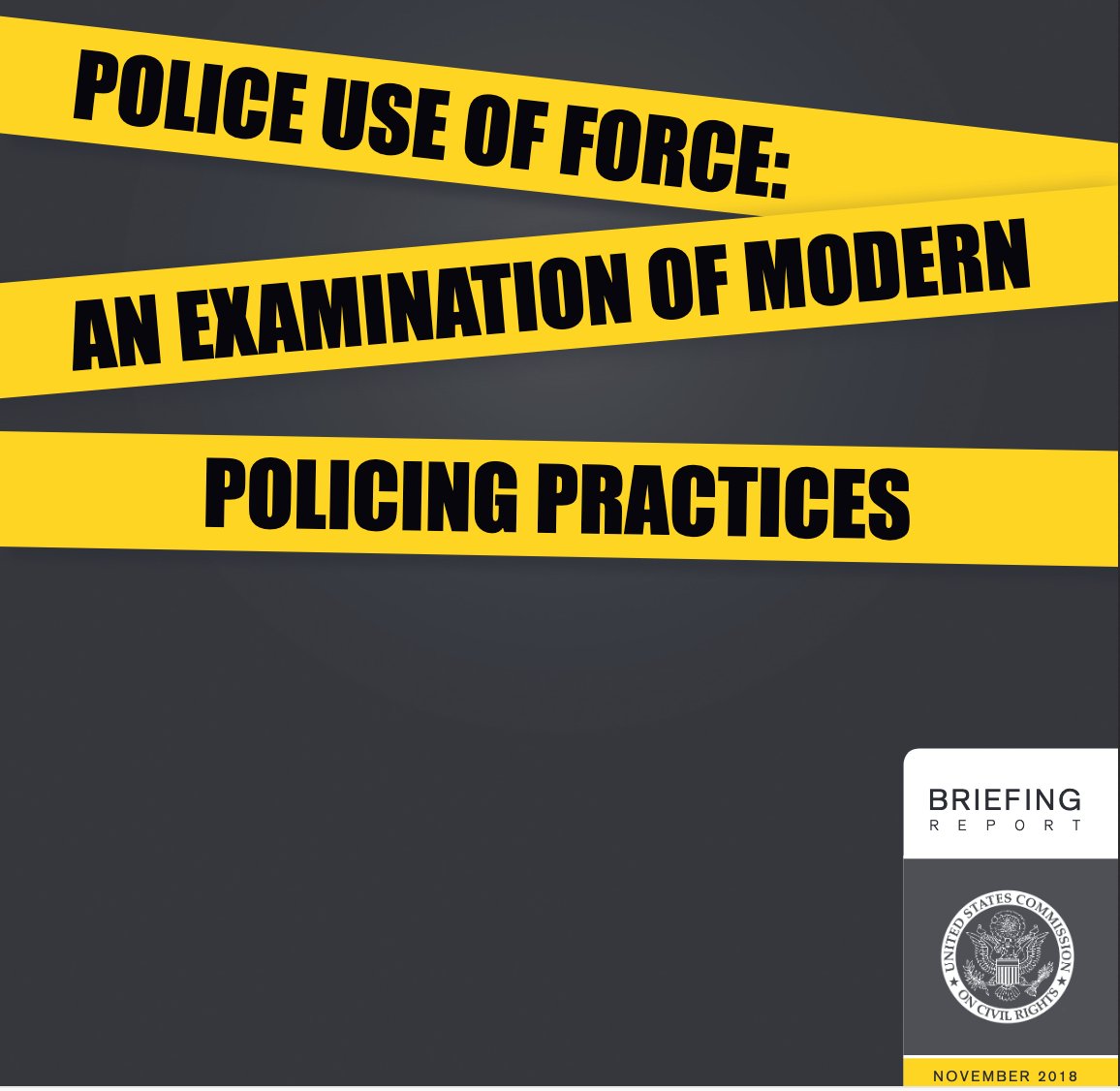
![331/ "We can document very clearly the extent and nature of those [law enforcement] racial disparities that do exist. These are substantial, growing, and unjustified by the crime-fighting value of the policies that lead to them." 331/ "We can document very clearly the extent and nature of those [law enforcement] racial disparities that do exist. These are substantial, growing, and unjustified by the crime-fighting value of the policies that lead to them."](https://pbs.twimg.com/media/EbTltlvX0AAve2c.jpg)
![332/ "These findings demonstrate disproportionate rates of incarceration among transgender women, especially among women of color [who]... were not only incarcerated at higher rates than White non-Hispanic transgender women, but also experienced higher rates of victimization." 332/ "These findings demonstrate disproportionate rates of incarceration among transgender women, especially among women of color [who]... were not only incarcerated at higher rates than White non-Hispanic transgender women, but also experienced higher rates of victimization."](https://pbs.twimg.com/media/EbTrAWTX0AAVx2i.png)
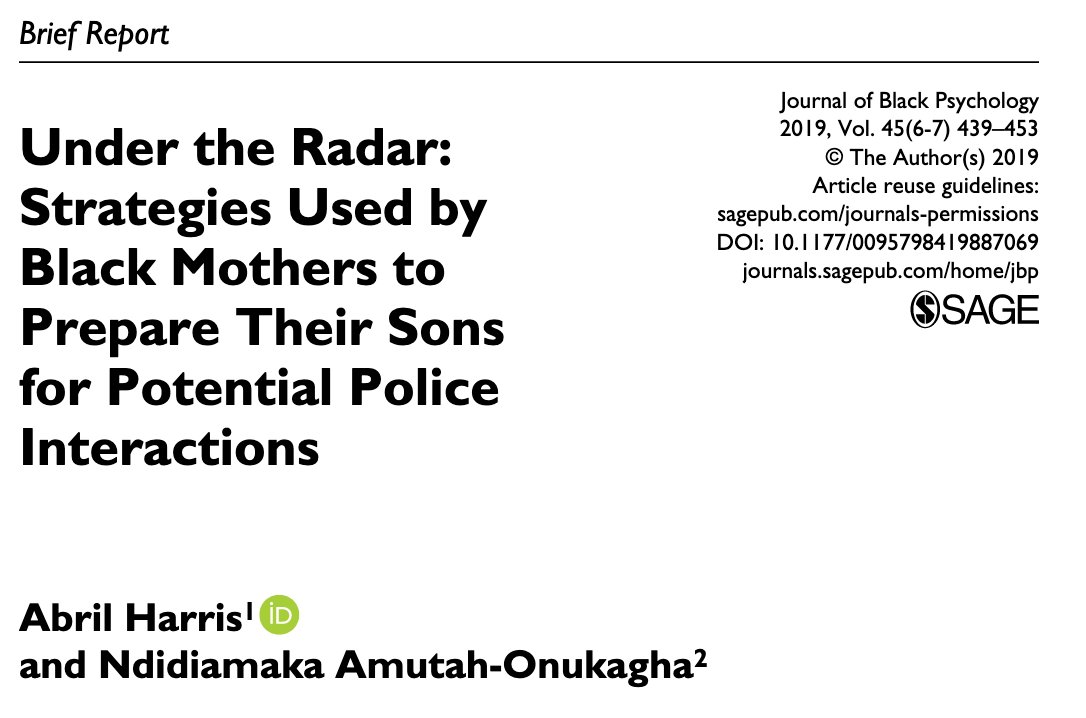
![334/ "Our comparison of fruitless searches to arrest rates also allows us to assess the efficiency or accuracy of whatever demographic targeting the police may be doing. In all this, we find that White male officers are in a category of their own [often searching fruitlessly]." 334/ "Our comparison of fruitless searches to arrest rates also allows us to assess the efficiency or accuracy of whatever demographic targeting the police may be doing. In all this, we find that White male officers are in a category of their own [often searching fruitlessly]."](https://pbs.twimg.com/media/EbUdej5WAAI7so1.jpg)
![335/ "Many African Americans have ties to the police that would appear to be informal and friendly... living in an urban area with crime decreased the chances of knowing an officer. ... [W]here the need for informal ties ... is most pressing, they are least likely to exist." 335/ "Many African Americans have ties to the police that would appear to be informal and friendly... living in an urban area with crime decreased the chances of knowing an officer. ... [W]here the need for informal ties ... is most pressing, they are least likely to exist."](https://pbs.twimg.com/media/EbXs7wQXkAIKycX.jpg)


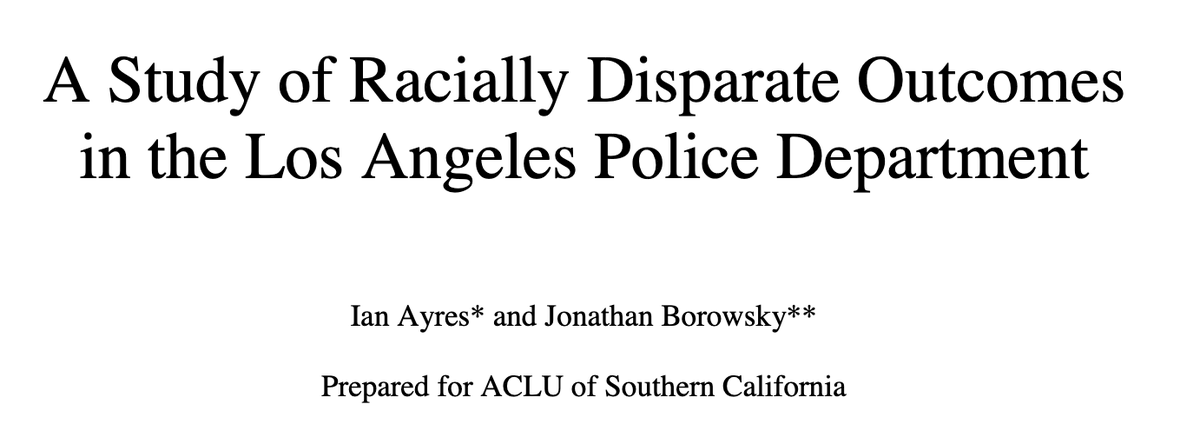
![340/ "Hassling by the police that is perceived as being racist also appears to promote ... illegal behavior for some Black adolescents, especially those who are high in RP [racial pride]... In the absence of police discrimination, RP is associated with less illegal behavior." 340/ "Hassling by the police that is perceived as being racist also appears to promote ... illegal behavior for some Black adolescents, especially those who are high in RP [racial pride]... In the absence of police discrimination, RP is associated with less illegal behavior."](https://pbs.twimg.com/media/EbYDUR4X0AAbTwg.jpg)

![342/ "We found that the frequency of police stops [of black and Latino adolescents] predicted more frequent engagement in delinquent behavior 6, 12, and 18 mo later, whereas delinquent behavior did not predict subsequent reports of police stops." 342/ "We found that the frequency of police stops [of black and Latino adolescents] predicted more frequent engagement in delinquent behavior 6, 12, and 18 mo later, whereas delinquent behavior did not predict subsequent reports of police stops."](https://pbs.twimg.com/media/EbYdjOBWAAEeojS.jpg)

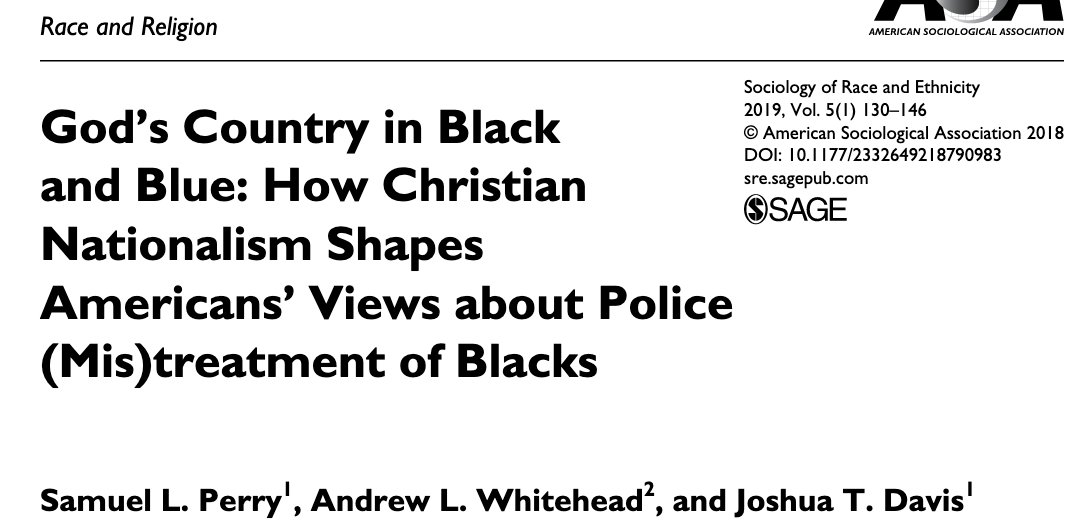
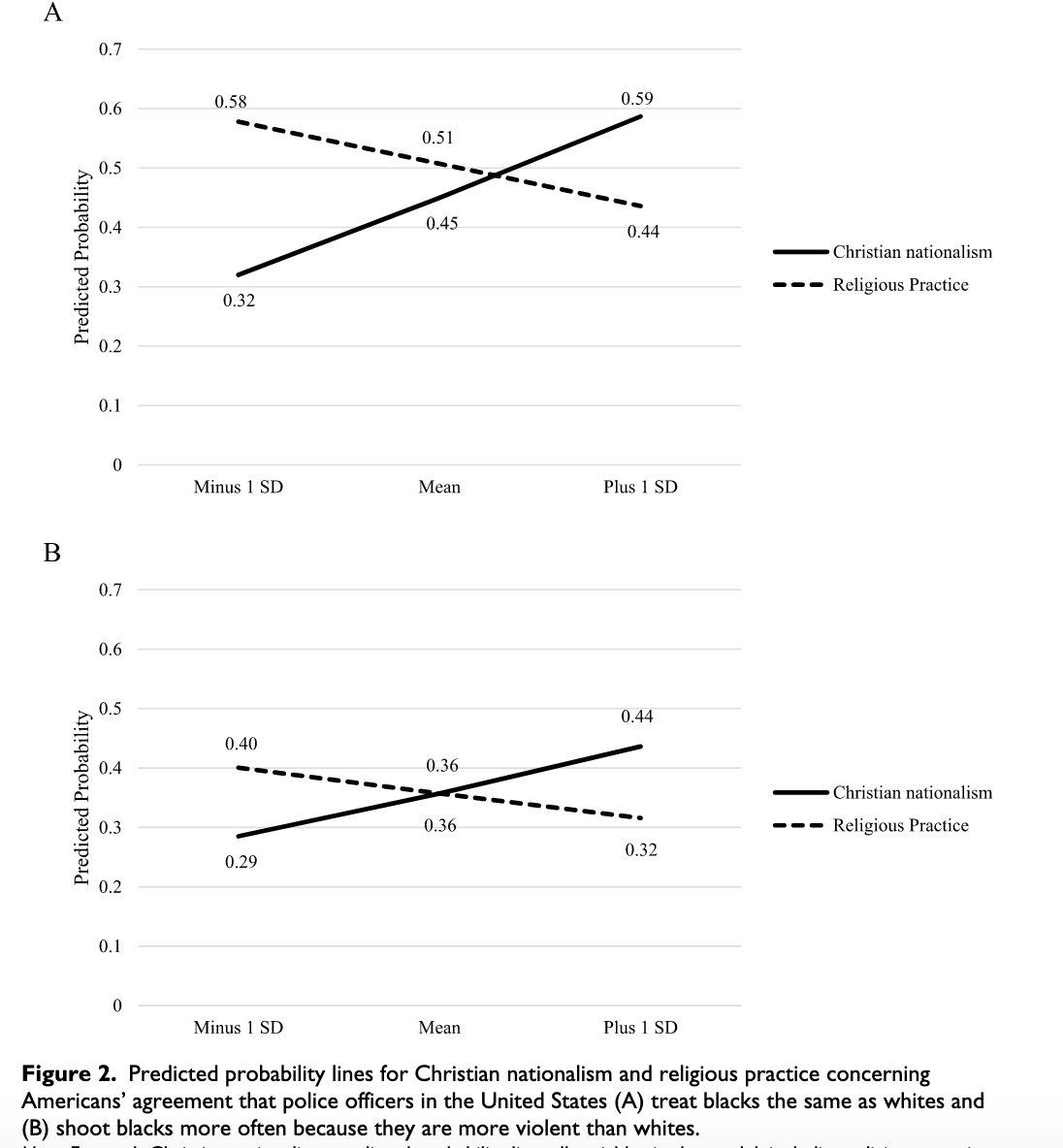
![345/ "Black male [offender]s were... less likely to have been diagnosed with ADHD, than White males, despite controlling for... behavioral indicators, and prior offending... Black males were approximately 60% as likely to receive psychiatric treatment." 345/ "Black male [offender]s were... less likely to have been diagnosed with ADHD, than White males, despite controlling for... behavioral indicators, and prior offending... Black males were approximately 60% as likely to receive psychiatric treatment."](https://pbs.twimg.com/media/EbZZTO7XgAAvPDT.jpg)
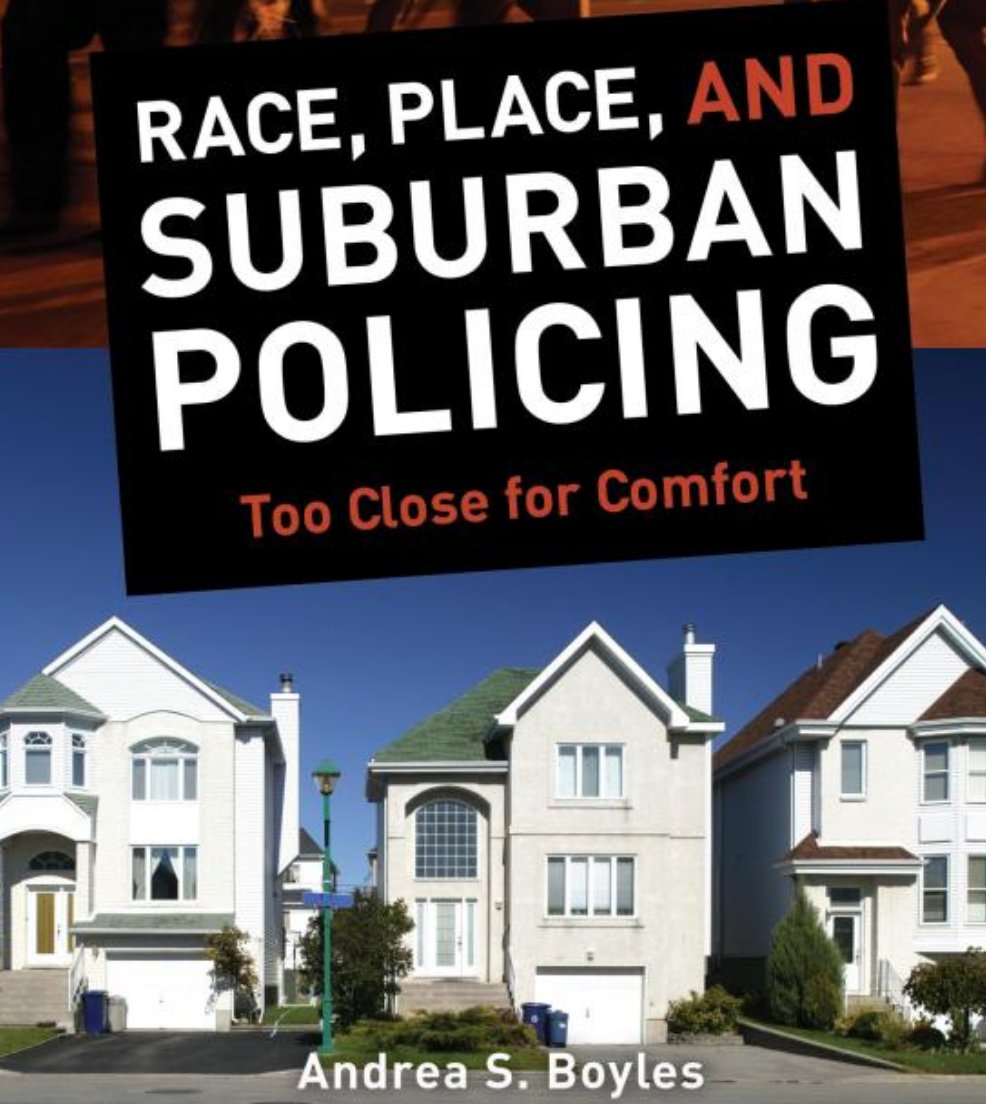
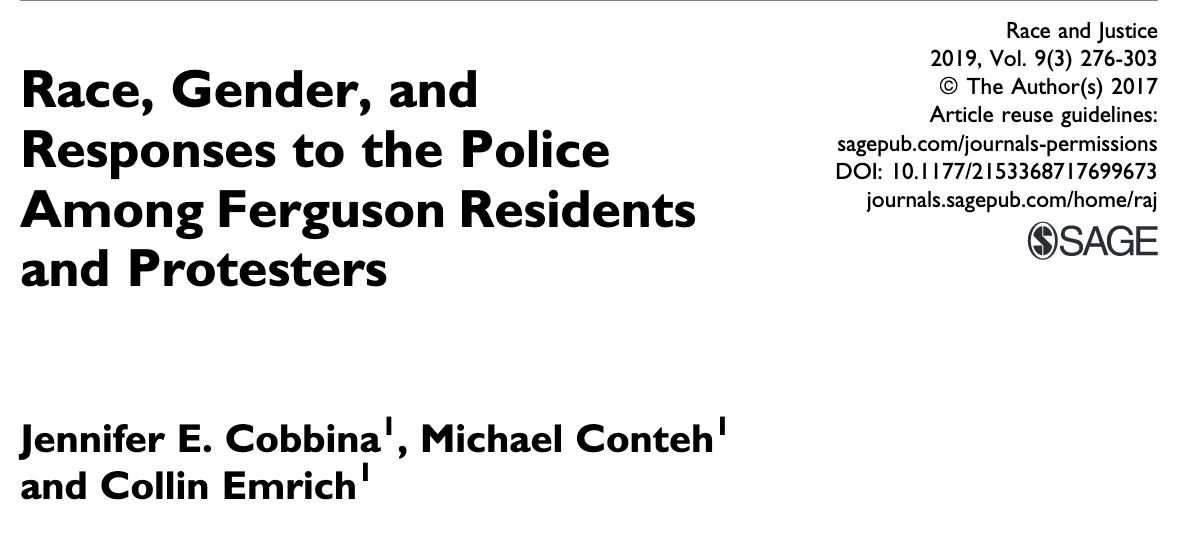
![348/ "The current study findings lend support to the notion that transgender people, and particularly transgender [Latina] people of colour, are frequent victims of verbal, physical, and sexual abuse perpetrated by law enforcement officers." 348/ "The current study findings lend support to the notion that transgender people, and particularly transgender [Latina] people of colour, are frequent victims of verbal, physical, and sexual abuse perpetrated by law enforcement officers."](https://pbs.twimg.com/media/Ebd8gSkXYAIg5hb.jpg)


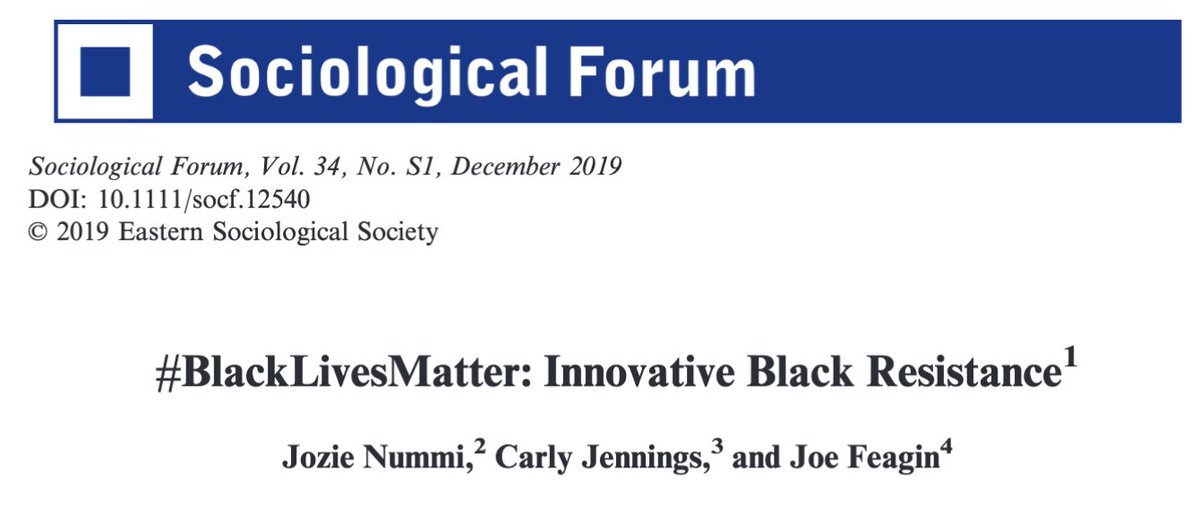
![352/ "After controlling for available incident and officer characteristics... black and Latino complainants [of Chicago police misconduct] were 87 percent and 51 percent less likely, respectively, to see their allegations sustained... the disparity... widens in black... areas." 352/ "After controlling for available incident and officer characteristics... black and Latino complainants [of Chicago police misconduct] were 87 percent and 51 percent less likely, respectively, to see their allegations sustained... the disparity... widens in black... areas."](https://pbs.twimg.com/media/EbiJx2gXQAIkeHa.jpg)
![353/ "A unique paradox for Black women [victims]: the fear of unjust harm to their partners through... [a] racially motivated police response and the simultaneous sense of futility in a justice system that may not sufficiently prioritize [Intimate partner and sexual violence]." 353/ "A unique paradox for Black women [victims]: the fear of unjust harm to their partners through... [a] racially motivated police response and the simultaneous sense of futility in a justice system that may not sufficiently prioritize [Intimate partner and sexual violence]."](https://pbs.twimg.com/media/EbiM7LkX0AI8CnR.png)
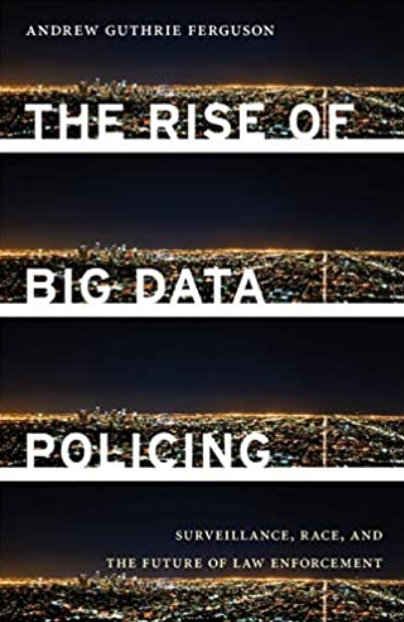
![355/ A ten-minute in-home "positive, non-enforcement police–public interaction" improves attitudes toward police, especially "among racial minorities and those who held the most negative views toward police at baseline. [This] underscores the power of positive contact." 355/ A ten-minute in-home "positive, non-enforcement police–public interaction" improves attitudes toward police, especially "among racial minorities and those who held the most negative views toward police at baseline. [This] underscores the power of positive contact."](https://pbs.twimg.com/media/EbibYK0X0AAWAZF.jpg)
![356/ "Poorly performing police were evaluated more positively when operating in a predominantly African American community than when... operating in a predominantly White community... It may be that participants expect less... from police... [in] African American communities." 356/ "Poorly performing police were evaluated more positively when operating in a predominantly African American community than when... operating in a predominantly White community... It may be that participants expect less... from police... [in] African American communities."](https://pbs.twimg.com/media/EbiwrhtXkAAephZ.jpg)
![357/ "News coverage did not emphasize the peaceful [BLM protest] activities; instead, activities were most often covered when conflict occurred." & "It is much harder for peaceful protests... to get any media attention... Media gave less space to the... agendas of protesters." 357/ "News coverage did not emphasize the peaceful [BLM protest] activities; instead, activities were most often covered when conflict occurred." & "It is much harder for peaceful protests... to get any media attention... Media gave less space to the... agendas of protesters."](https://pbs.twimg.com/media/Ebi1UB7WsAAAeA0.jpg)
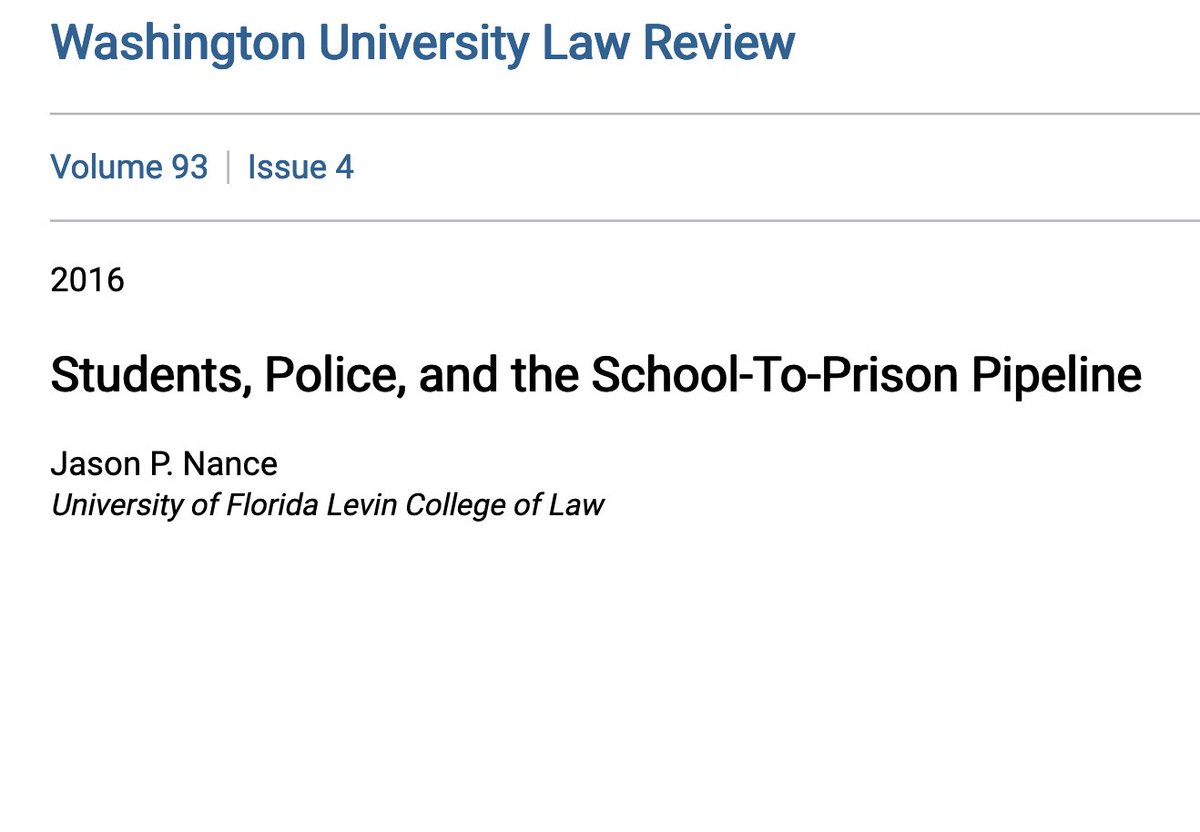
![359/ "Whites have long been overrepresented in ... white-collar crime such as corporate crime, investment fraud, and securities fraud." & "We have... a view of race as having a single impact on crime based on disadvantage, without examining... crime... [based on] advantage." 359/ "Whites have long been overrepresented in ... white-collar crime such as corporate crime, investment fraud, and securities fraud." & "We have... a view of race as having a single impact on crime based on disadvantage, without examining... crime... [based on] advantage."](https://pbs.twimg.com/media/Ebj5Kd_WAAglpu5.jpg)
![360/ "Readers' memories of Afrocentric features are significantly more pronounced when the news stories concern ... violent crime... [In reconstructing photos displayed in crime stories] Afrocentric features were significantly more pronounced than the actual photograph depicted." 360/ "Readers' memories of Afrocentric features are significantly more pronounced when the news stories concern ... violent crime... [In reconstructing photos displayed in crime stories] Afrocentric features were significantly more pronounced than the actual photograph depicted."](https://pbs.twimg.com/media/EbkMcabWAAEZkrn.jpg)
![361/ "[We] examine the effects of a lethal force incident on ... assessments of police... The police shooting and [its] handling civil unrest... resulted in no major initial shifts in attitude by non-Black residents... African Americans felt considerably more distrustful." 361/ "[We] examine the effects of a lethal force incident on ... assessments of police... The police shooting and [its] handling civil unrest... resulted in no major initial shifts in attitude by non-Black residents... African Americans felt considerably more distrustful."](https://pbs.twimg.com/media/EbnVw0PXsAAoBW5.png)
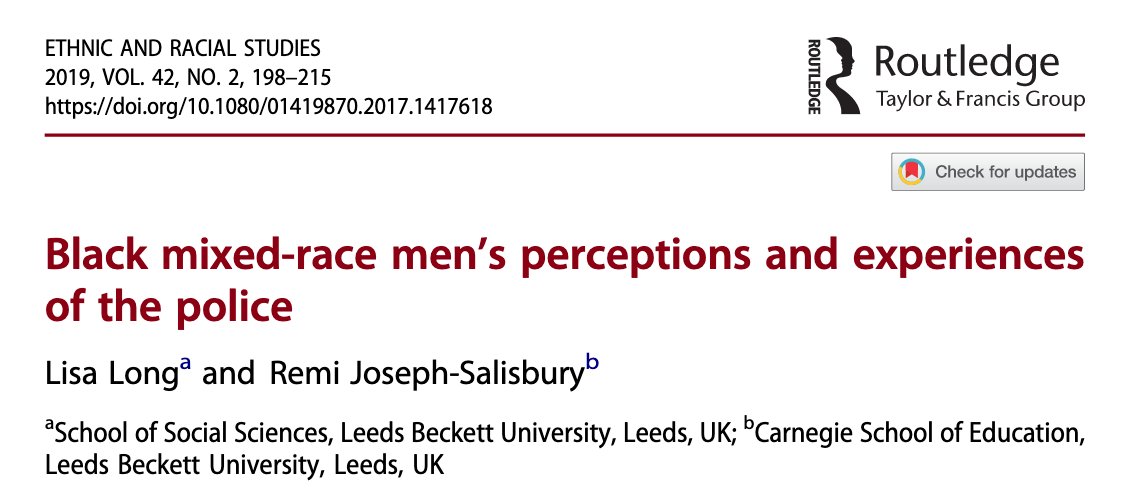
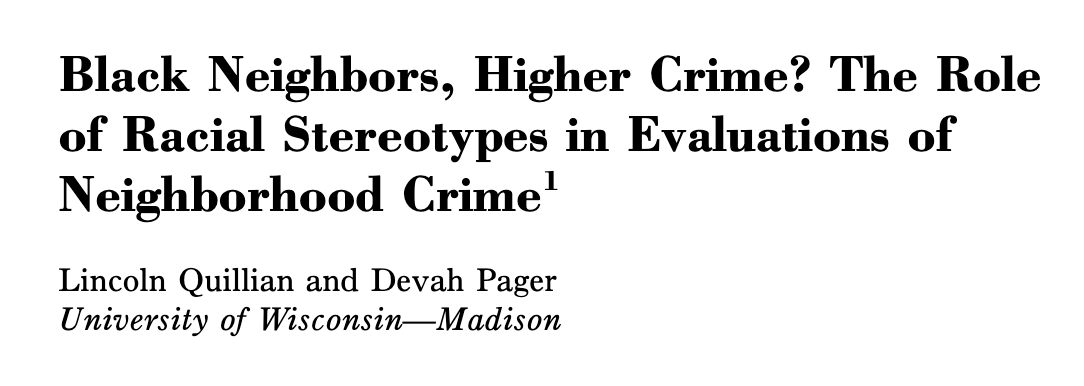
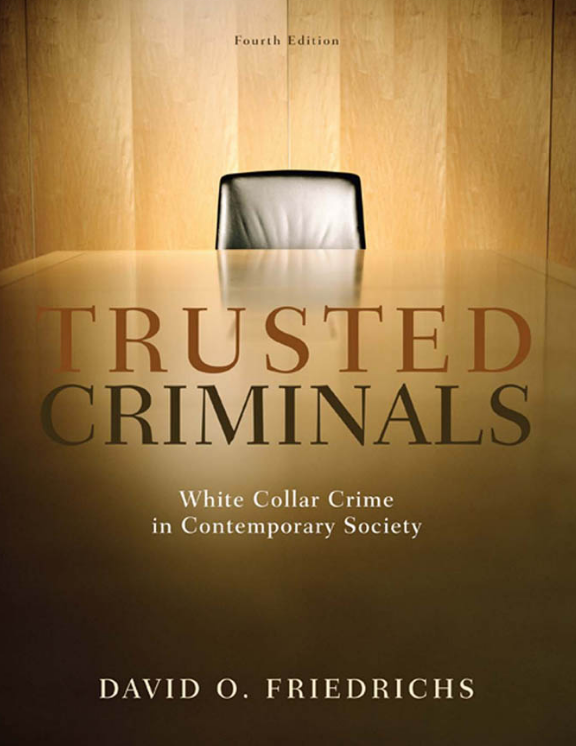

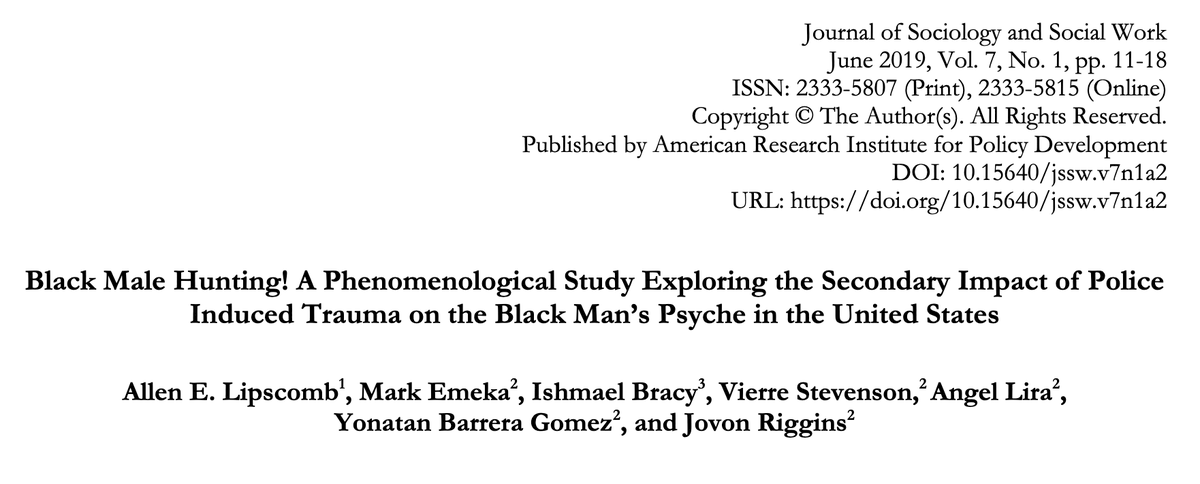
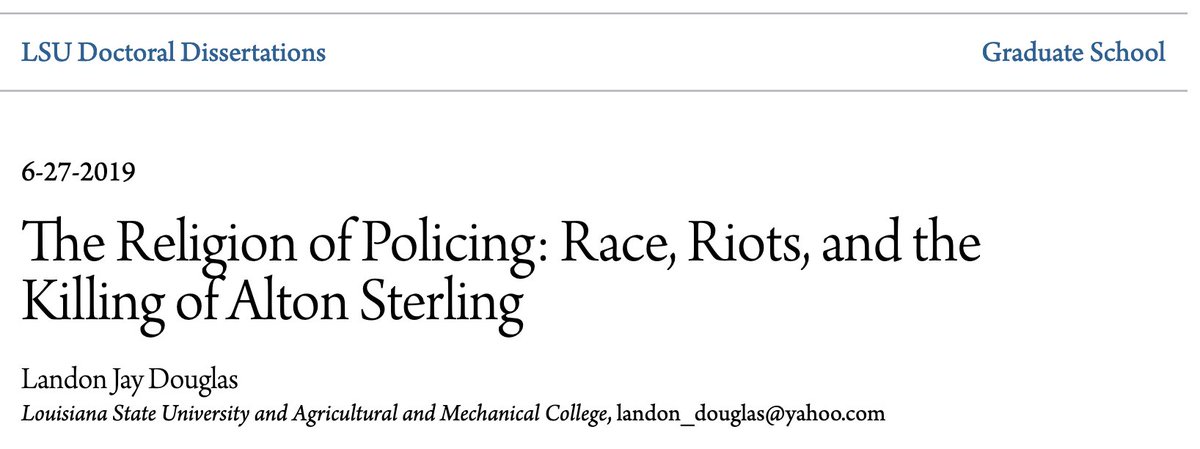
![368/ "We present the first causal evidence suggesting that [broken-windows policing], which emphasizes extensive police contact at low levels of suspicious behavior, can lower the educational performance of African American boys, with implications for ... racial inequality." 368/ "We present the first causal evidence suggesting that [broken-windows policing], which emphasizes extensive police contact at low levels of suspicious behavior, can lower the educational performance of African American boys, with implications for ... racial inequality."](https://pbs.twimg.com/media/EbsXuD0WsAEebJ1.png)
![369/ "Police data generated by the unlawful or biased practices and policies of a specific police department or division can corrupt practices and data in other jurisdictions ... [who] incorporate such data into their own predictive policing systems." ( @Lawgeek @katecrawford) 369/ "Police data generated by the unlawful or biased practices and policies of a specific police department or division can corrupt practices and data in other jurisdictions ... [who] incorporate such data into their own predictive policing systems." ( @Lawgeek @katecrawford)](https://pbs.twimg.com/media/EbscErjXQAMkKCh.png)
![370/ "Race is not a causal factor for [middle school] disciplinary findings... Reporting racial statistics, in isolation without proper context, is misleading and reinforces a perspective that may... lead to over-policing schools with high numbers of Black... students." 370/ "Race is not a causal factor for [middle school] disciplinary findings... Reporting racial statistics, in isolation without proper context, is misleading and reinforces a perspective that may... lead to over-policing schools with high numbers of Black... students."](https://pbs.twimg.com/media/EbseXBqXQAEv192.jpg)
![372/ "Black middle and high school students are over three times more likely [than white students] to attend a school with more security staff than mental health personnel." @KHarper_edulove @DrDebTemkin 372/ "Black middle and high school students are over three times more likely [than white students] to attend a school with more security staff than mental health personnel." @KHarper_edulove @DrDebTemkin](https://pbs.twimg.com/media/EbssZT7X0AE7FcN.jpg)
![373/ "60 percent [of black adults] reported that they or a family member have been unfairly stopped or treated by the police because they are black... 31 percent reported that they have avoided calling the police because of concerns of discrimination." 373/ "60 percent [of black adults] reported that they or a family member have been unfairly stopped or treated by the police because they are black... 31 percent reported that they have avoided calling the police because of concerns of discrimination."](https://pbs.twimg.com/media/Ebs31f0X0AI4TGo.jpg)
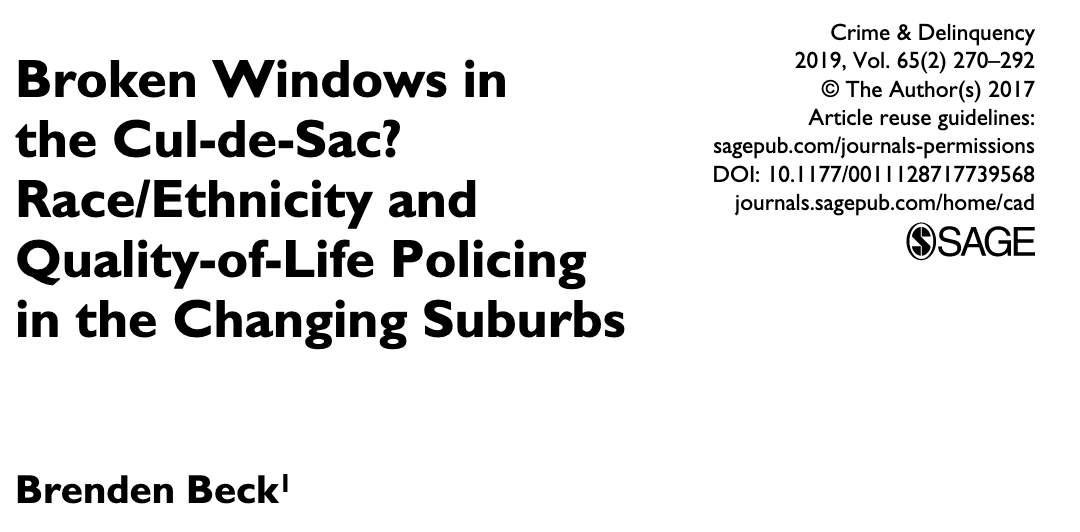
![375/ "If [policing] data ... was collected and produced in a racially biased fashion, then the predictions that are generated by the algorithm will reflect these biases." & "Predictive policing depends on a closed, racialized past and produces a closed, racialized future." 375/ "If [policing] data ... was collected and produced in a racially biased fashion, then the predictions that are generated by the algorithm will reflect these biases." & "Predictive policing depends on a closed, racialized past and produces a closed, racialized future."](https://pbs.twimg.com/media/EbuRGD0WoAIGMOy.jpg)
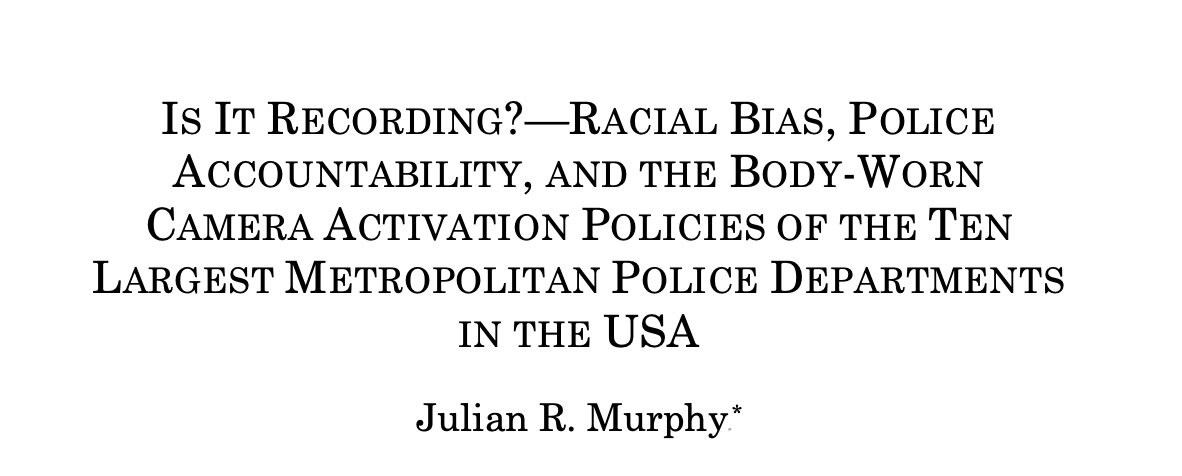
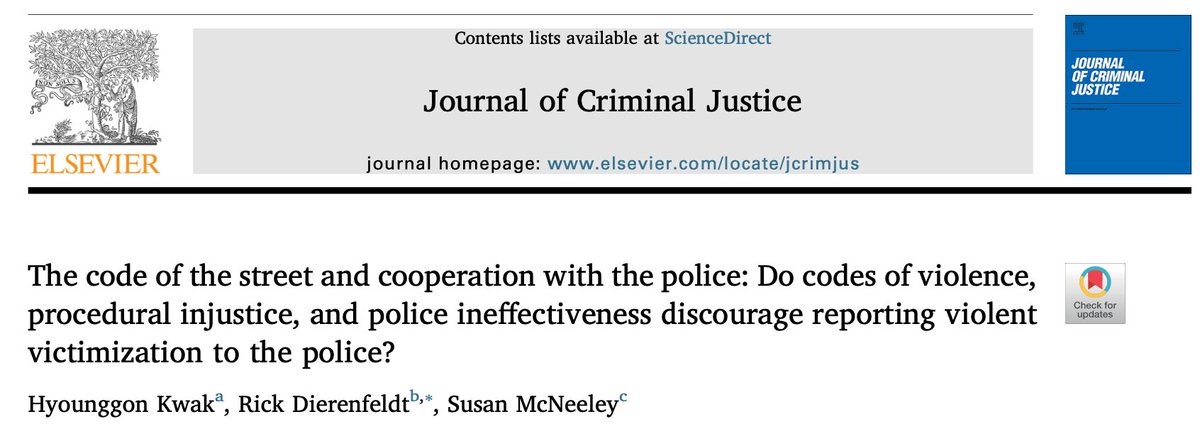
![378/ "A female offender's race/ethnicity was the strongest predictor of a [news] story's overall tone... Stories about white female offenders were more likely to have neutral or favorable tones than stories about minority female offenders." 378/ "A female offender's race/ethnicity was the strongest predictor of a [news] story's overall tone... Stories about white female offenders were more likely to have neutral or favorable tones than stories about minority female offenders."](https://pbs.twimg.com/media/EbuabWhXgAA78Mp.jpg)
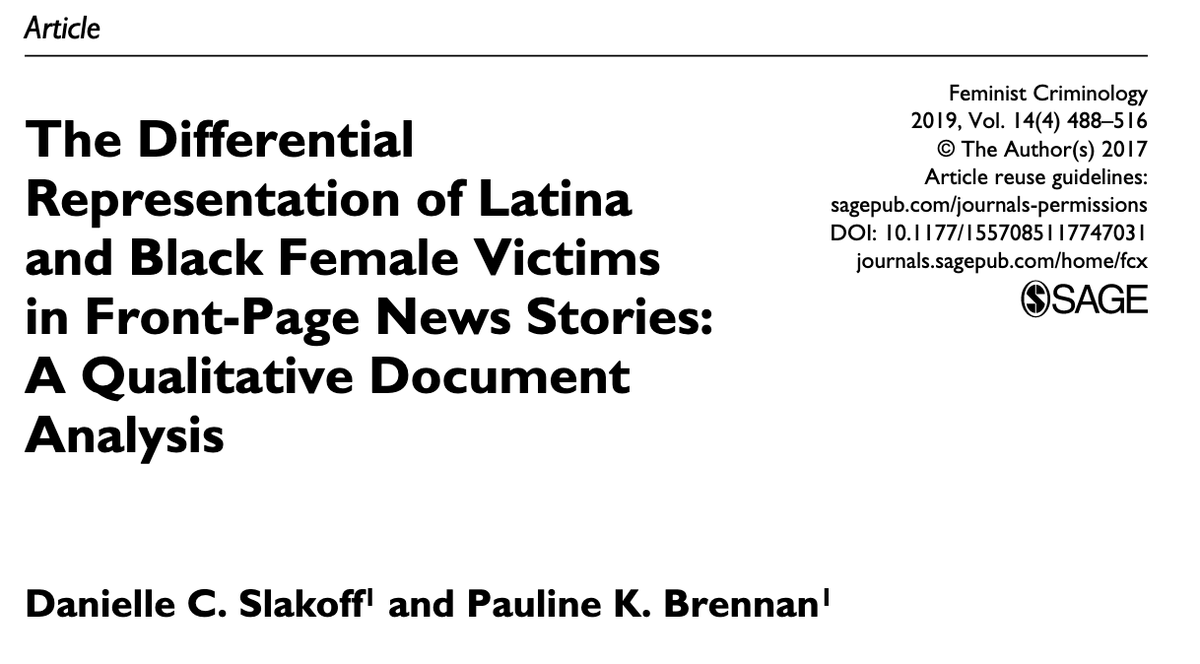
![380/ "The over-policing that criminality (real and perceived) is used to justify... supports the notion that [Black people] are inherently crime-prone, and saddles many with the markers of a criminal record, thus ... hampering future economic prospects." 380/ "The over-policing that criminality (real and perceived) is used to justify... supports the notion that [Black people] are inherently crime-prone, and saddles many with the markers of a criminal record, thus ... hampering future economic prospects."](https://pbs.twimg.com/media/EbxKh4zU8AECHg2.png)
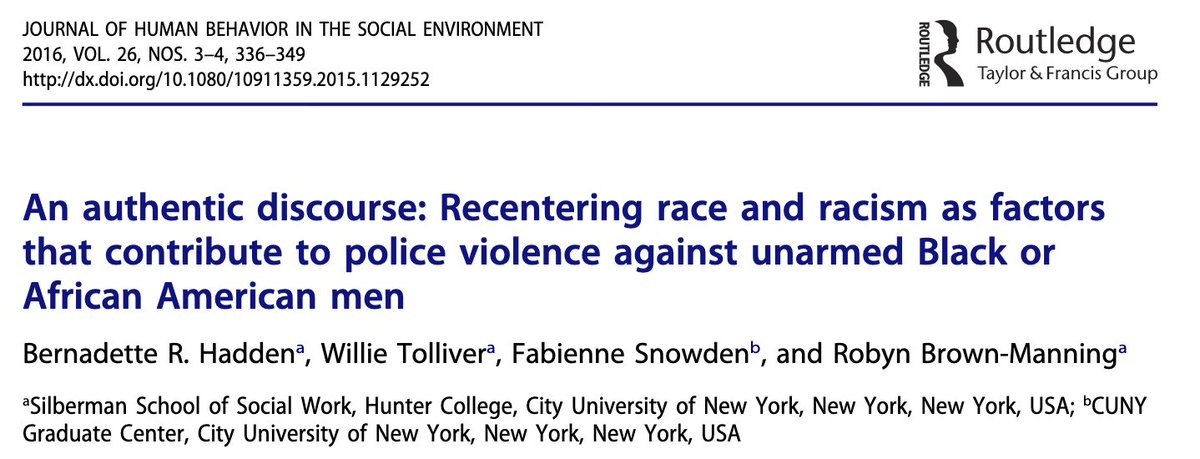
![383/ "The two studies provide[] compelling evidence that blacks in highly segregated cities experience greater exposure to police violence... Large cities are divided into 'free-fire zones' where police violence is prevalent and acceptable, and 'sleepy hollows' where it is not." 383/ "The two studies provide[] compelling evidence that blacks in highly segregated cities experience greater exposure to police violence... Large cities are divided into 'free-fire zones' where police violence is prevalent and acceptable, and 'sleepy hollows' where it is not."](https://pbs.twimg.com/media/EbxQQB5WAAELTxp.jpg)

![385/ "White individuals...tend to view criticism of police...as threats to their...dominant status." & "White youth who identified as Republican consistently reported more positive perceptions of law enforcement than [those] who identify as Democratic." @Adam_D_Fine @ZRRowan 385/ "White individuals...tend to view criticism of police...as threats to their...dominant status." & "White youth who identified as Republican consistently reported more positive perceptions of law enforcement than [those] who identify as Democratic." @Adam_D_Fine @ZRRowan](https://pbs.twimg.com/media/EbxaZweWsAEuVf7.jpg)
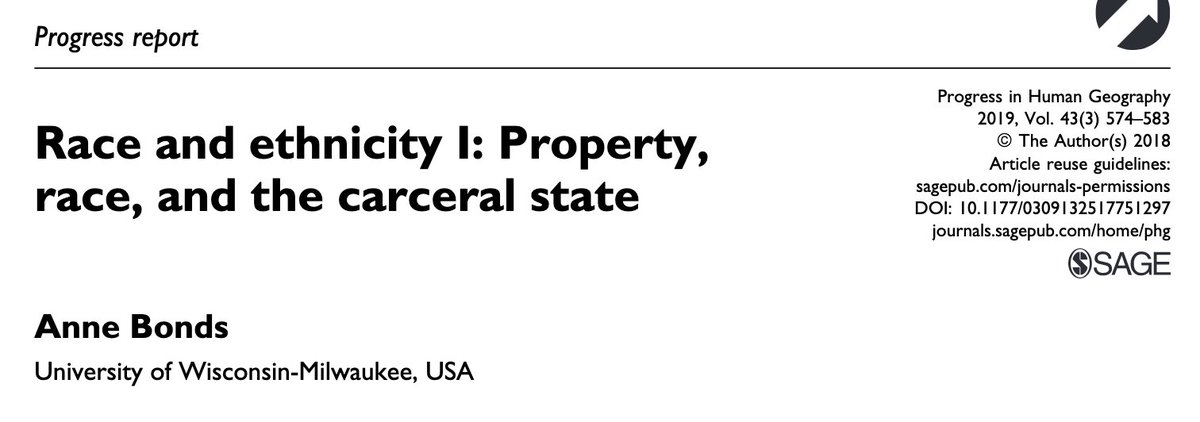

![388/ "The contemporary constitutional law framework for police violence ['framing it as a series of...individual disputes'] is part of the web of law ... that enables police violence to remain an ingrained ... form of structural harm that communities of color are subjected to." 388/ "The contemporary constitutional law framework for police violence ['framing it as a series of...individual disputes'] is part of the web of law ... that enables police violence to remain an ingrained ... form of structural harm that communities of color are subjected to."](https://pbs.twimg.com/media/EbxkakVXkAEd6tg.png)


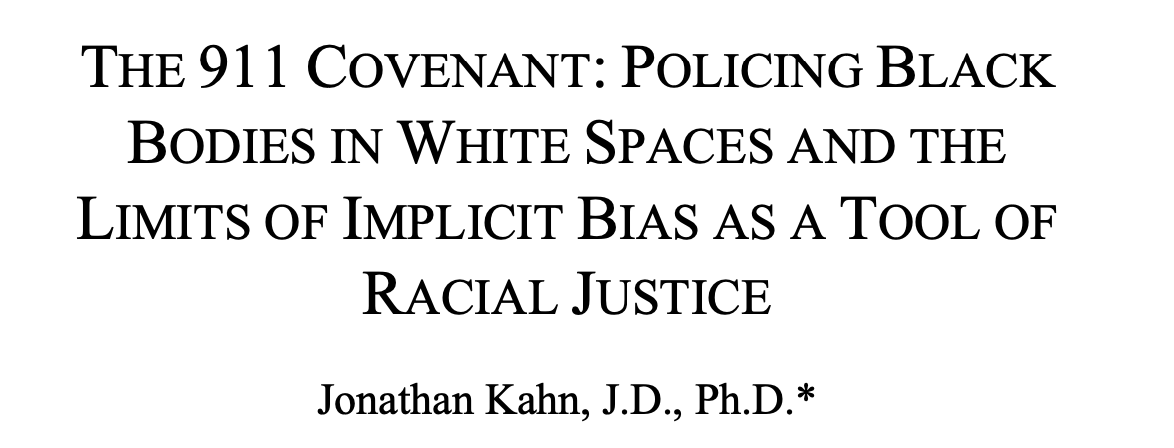
![392/ "State self-defense laws provide a legal mechanism through which residents of a neighborhood can...intimidate, punish...effectively allowing residents of White neighborhoods to police people who stand out...because of their race and ensuring that [they] never fully belong." 392/ "State self-defense laws provide a legal mechanism through which residents of a neighborhood can...intimidate, punish...effectively allowing residents of White neighborhoods to police people who stand out...because of their race and ensuring that [they] never fully belong."](https://pbs.twimg.com/media/Ebxq8vKWoAATD62.png)
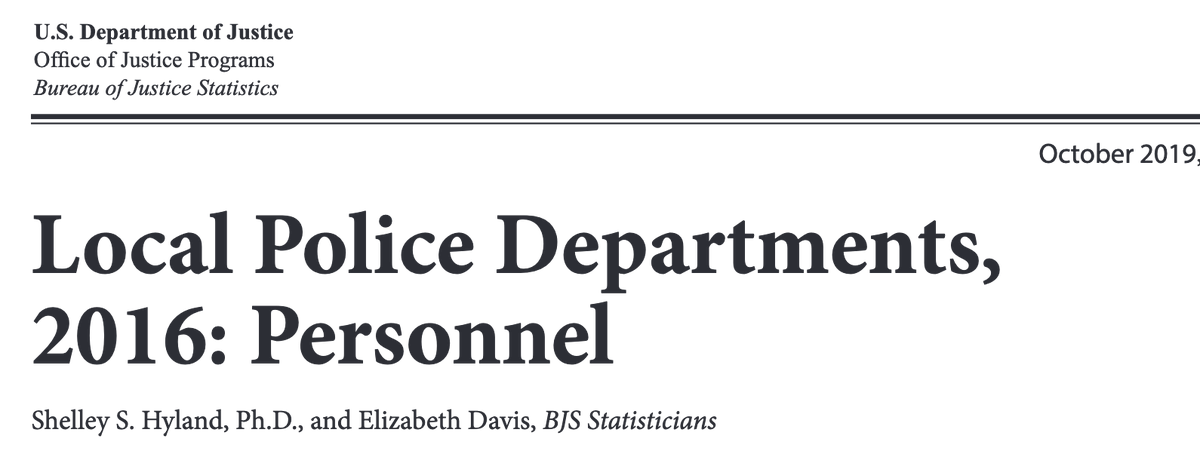
![394/ "Controlling for the severity of the offense... law enforcement is significantly less likely to take a report and significantly less likely to make an arrest when the crime is hate motivated." & "Police response to hate crime...[is] very differently from non-hate... crimes." 394/ "Controlling for the severity of the offense... law enforcement is significantly less likely to take a report and significantly less likely to make an arrest when the crime is hate motivated." & "Police response to hate crime...[is] very differently from non-hate... crimes."](https://pbs.twimg.com/media/Ebx8L8pX0AwEvft.jpg)
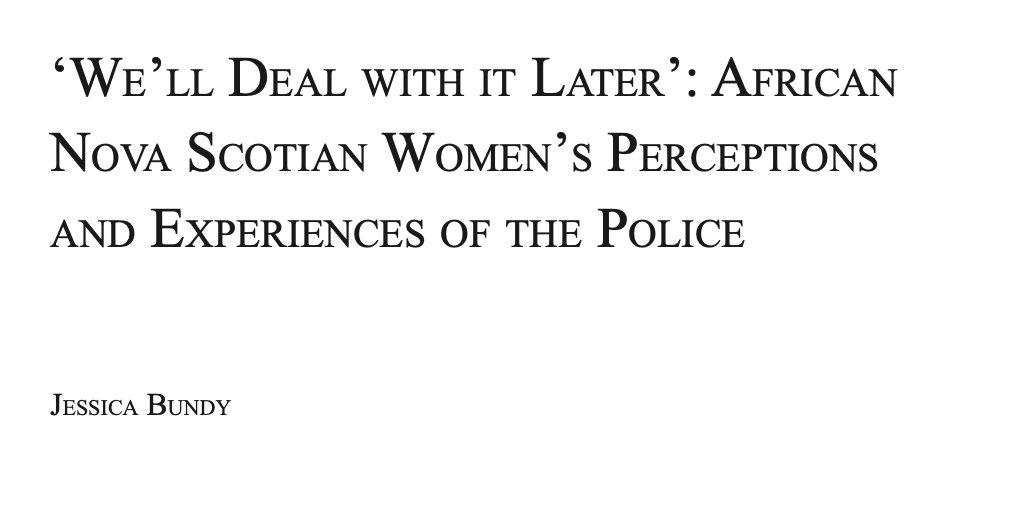
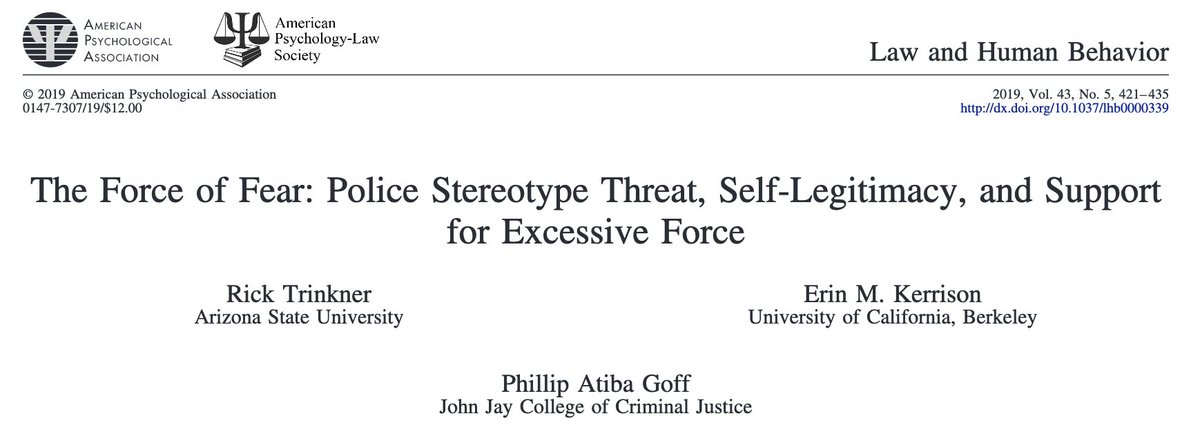
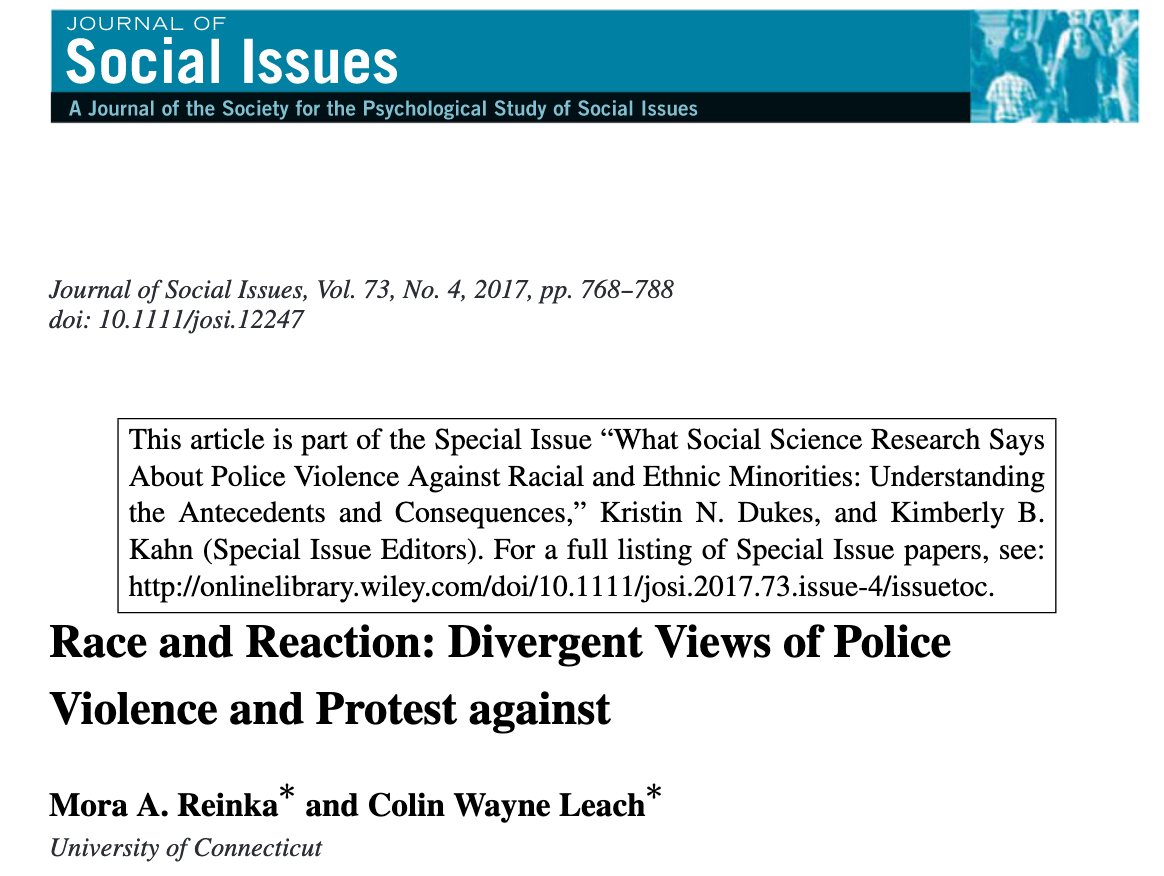
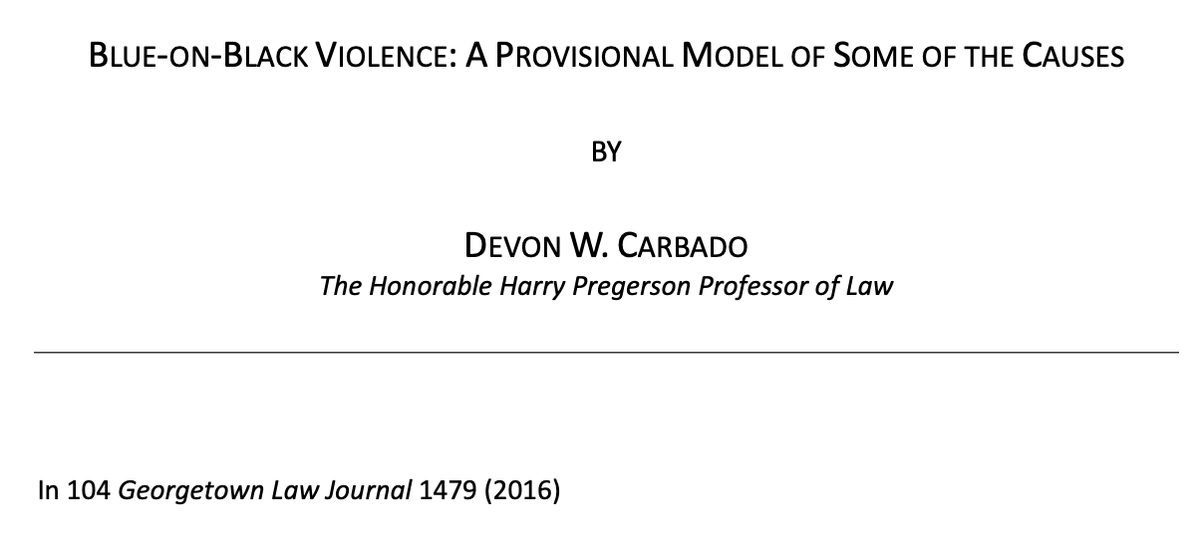
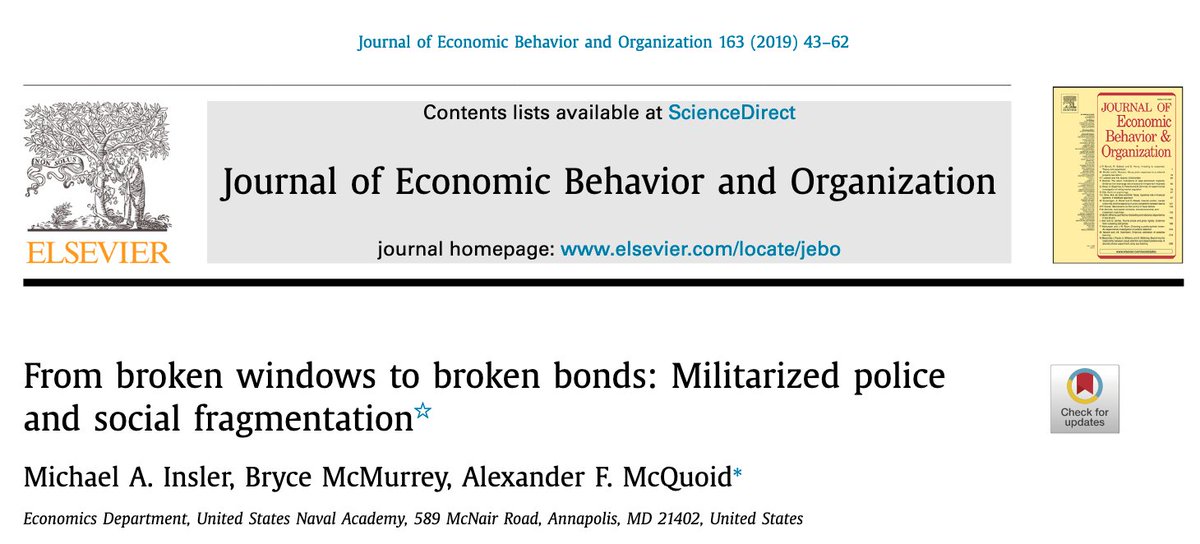

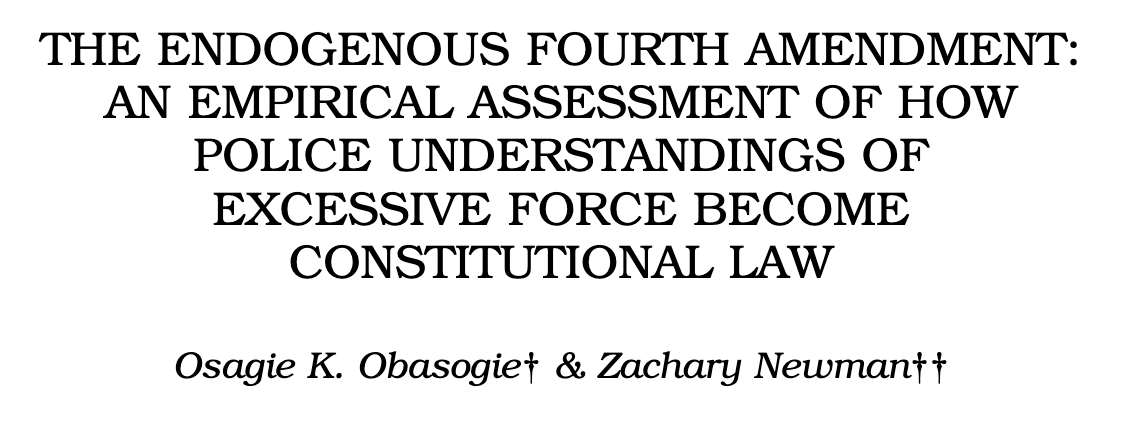
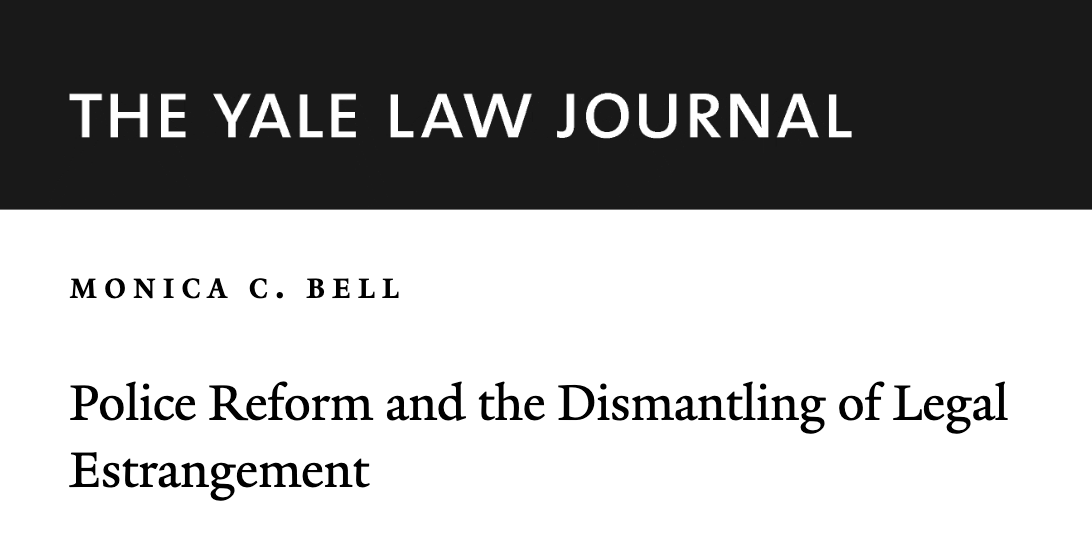
![404/ "Black Lives Matter does not focus on a binary and absolute understanding of victimhood... Rather, they emphasize the humanity of each person—victim or potential victim, criminal or not—derived from discourses of human rights... deaths [the] consequence of a social problem." 404/ "Black Lives Matter does not focus on a binary and absolute understanding of victimhood... Rather, they emphasize the humanity of each person—victim or potential victim, criminal or not—derived from discourses of human rights... deaths [the] consequence of a social problem."](https://pbs.twimg.com/media/Eb25x0sWsAA86Tv.jpg)
![404/ "Black Lives Matter does not focus on a binary and absolute understanding of victimhood... Rather, they emphasize the humanity of each person—victim or potential victim, criminal or not—derived from discourses of human rights... deaths [the] consequence of a social problem." 404/ "Black Lives Matter does not focus on a binary and absolute understanding of victimhood... Rather, they emphasize the humanity of each person—victim or potential victim, criminal or not—derived from discourses of human rights... deaths [the] consequence of a social problem."](https://pbs.twimg.com/media/Eb26B7vXQAUUL8d.jpg)
![405/ "Young [Black] men... made frequent reference to officers' inability to apprehend...assailants... Study participants also ascribed the small probability that suspects would be arrested to their prevailing view that police did not care about making communities of color safe." 405/ "Young [Black] men... made frequent reference to officers' inability to apprehend...assailants... Study participants also ascribed the small probability that suspects would be arrested to their prevailing view that police did not care about making communities of color safe."](https://pbs.twimg.com/media/Eb3BXGPX0AA__dK.jpg)
![406/ "This string of constitutional precedent ... expand[s] the concept of 'driving while black' to include 'parking while black' ... the effect of it being next to impossible to limit seizures based on racial profiling justified by reasonable suspicion of a parking violation." 406/ "This string of constitutional precedent ... expand[s] the concept of 'driving while black' to include 'parking while black' ... the effect of it being next to impossible to limit seizures based on racial profiling justified by reasonable suspicion of a parking violation."](https://pbs.twimg.com/media/Eb7eKj0U8AAFvM6.png)
![407/ "The [DOJ] reports demonstrate that officers frequently subjected [African Americans] to verbal abuse... Investigators found that officers' use of racially-charged language and crude jokes created a culture where blacks were dehumanized." ( @RonWeitzer) 407/ "The [DOJ] reports demonstrate that officers frequently subjected [African Americans] to verbal abuse... Investigators found that officers' use of racially-charged language and crude jokes created a culture where blacks were dehumanized." ( @RonWeitzer)](https://pbs.twimg.com/media/Eb7kvPyVcAAymHh.png)

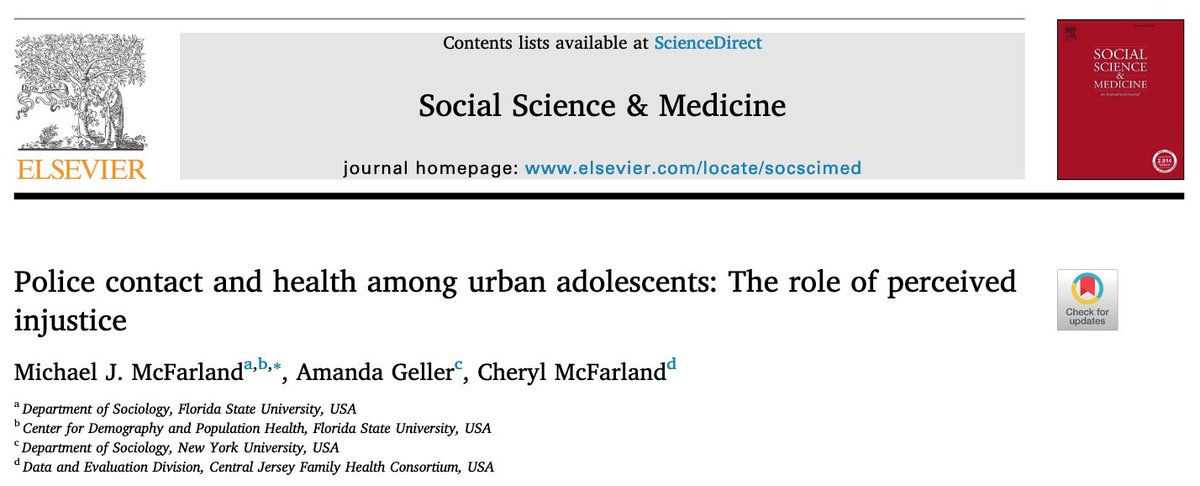
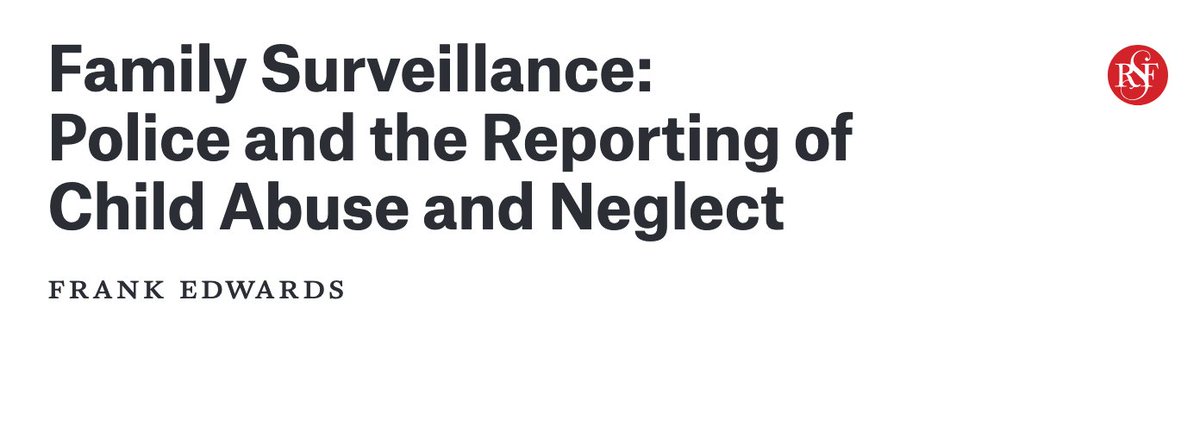
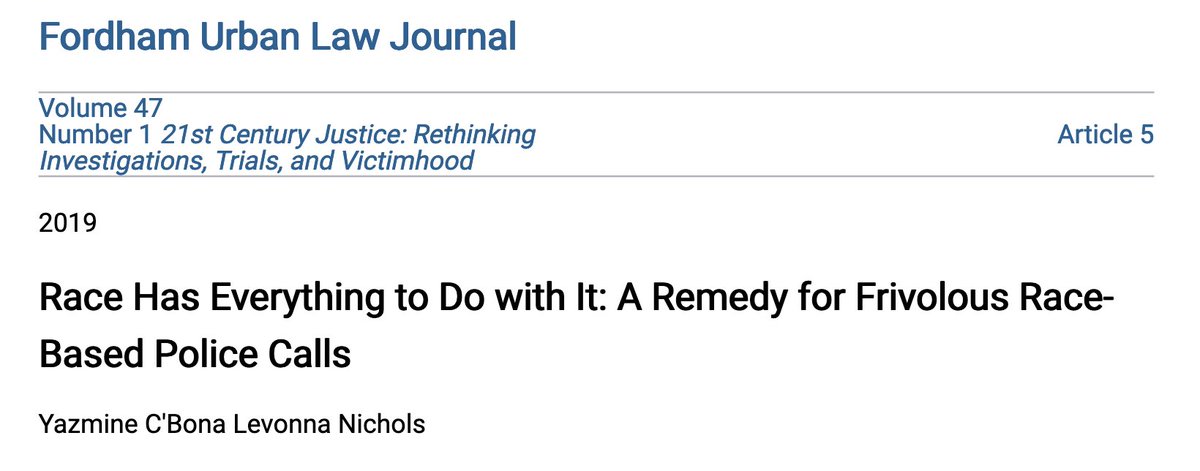
![412/ "Using a sample of 12,376 sworn law enforcement officers in 98 agencies... Officers perceiving [low public support of police] ... become much more distrustful of the public, and are more likely to justify the use of coercive tactics in the course of police work." 412/ "Using a sample of 12,376 sworn law enforcement officers in 98 agencies... Officers perceiving [low public support of police] ... become much more distrustful of the public, and are more likely to justify the use of coercive tactics in the course of police work."](https://pbs.twimg.com/media/Eb7_ojUVcAEVEVD.jpg)
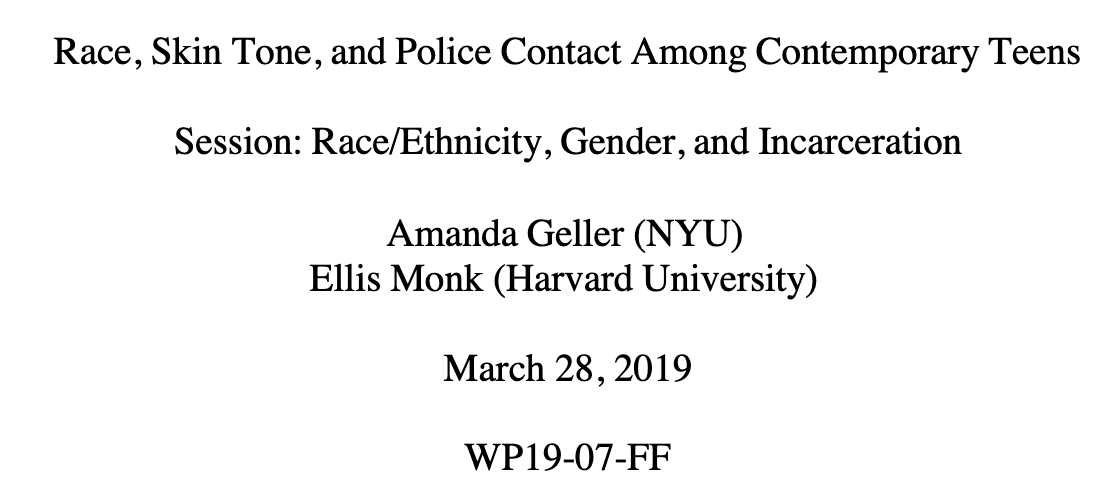
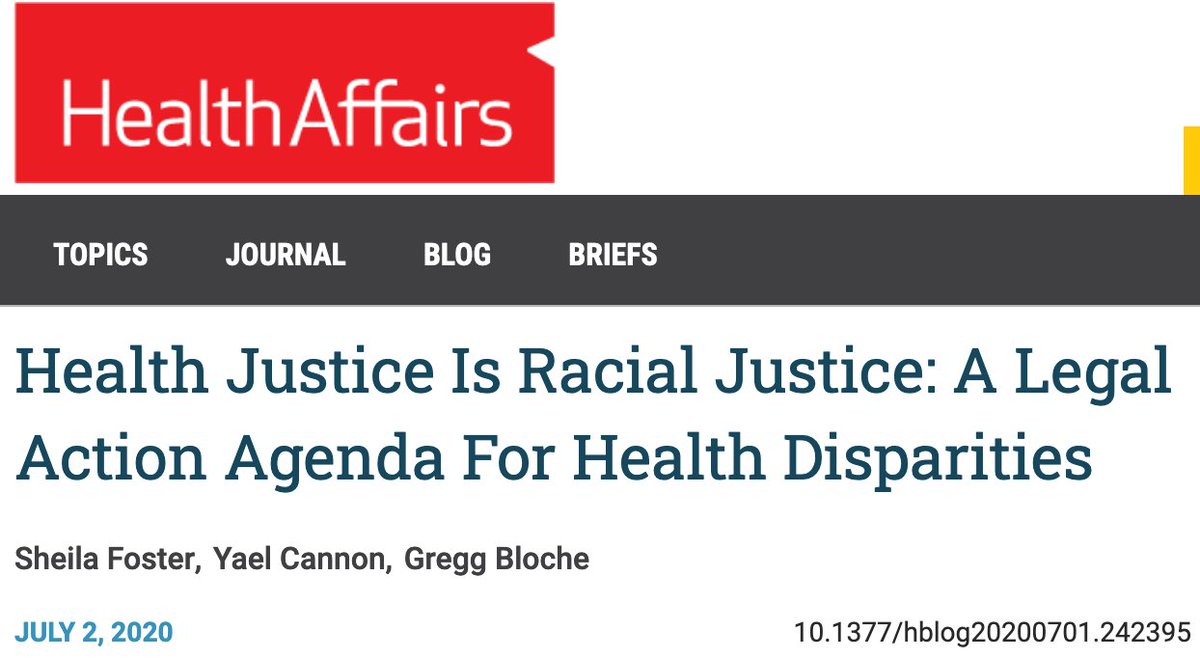
![415/ [Brazil] "Controlling for all the considered individual level characteristics, verbal and physical victimization probability is statistically ... higher for darker skin tone individuals... This pattern confirms ... discrimination in the use of police force." 415/ [Brazil] "Controlling for all the considered individual level characteristics, verbal and physical victimization probability is statistically ... higher for darker skin tone individuals... This pattern confirms ... discrimination in the use of police force."](https://pbs.twimg.com/media/Eb8Wi4GXgAAvJrg.jpg)

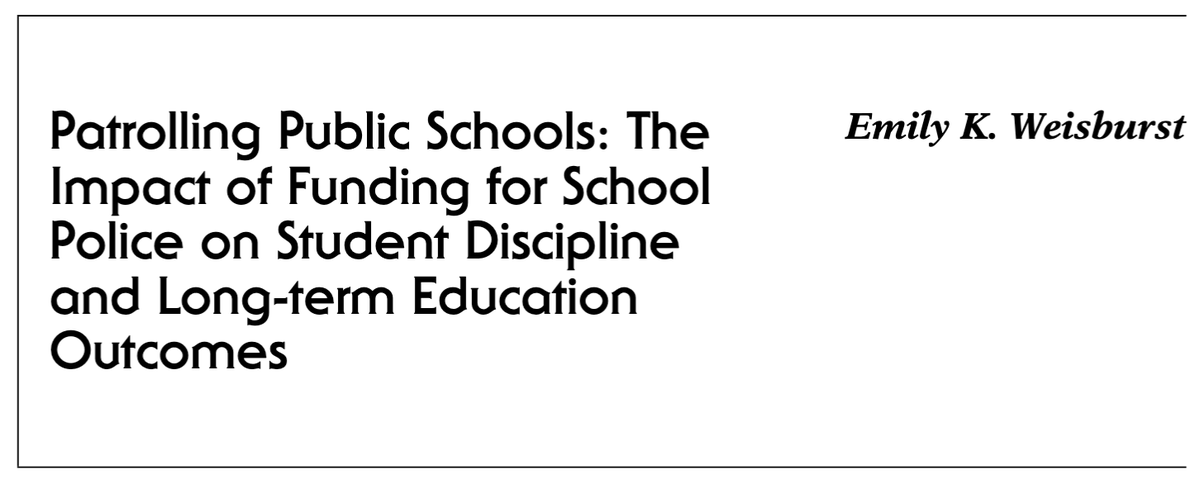


![420/ "Asserting one's rights and symbolic resistance were uncommon strategies for both [Black] male and female respondents. This finding is expected given what we know about 'the talk'—a set of instructions traditionally passed down from black parent to child." ( @bfoxwilliams) 420/ "Asserting one's rights and symbolic resistance were uncommon strategies for both [Black] male and female respondents. This finding is expected given what we know about 'the talk'—a set of instructions traditionally passed down from black parent to child." ( @bfoxwilliams)](https://pbs.twimg.com/media/EcBBZmFXsAA0p4o.jpg)
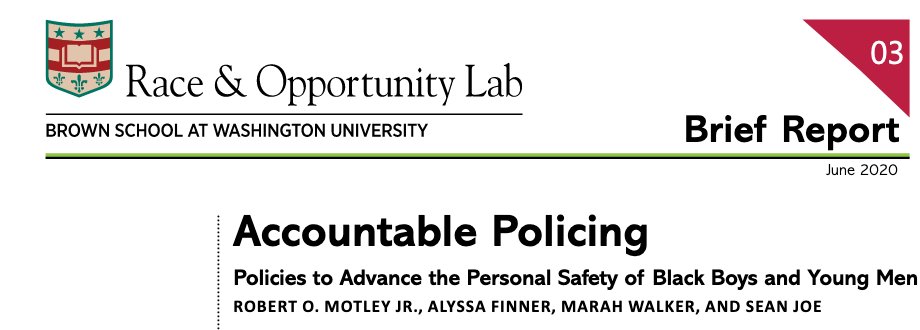

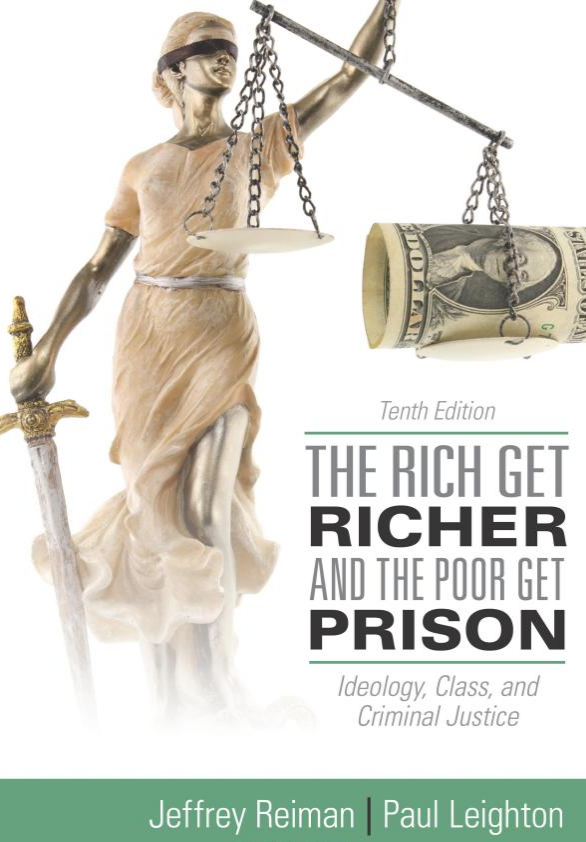

![425/ "In the last decade, approximately 76% of [Oakland's] homicide victims were black. During that time period, police made arrests in approximately 40% of Oakland homicides involving black victims and approximately 80% of homicides involving white victims." 425/ "In the last decade, approximately 76% of [Oakland's] homicide victims were black. During that time period, police made arrests in approximately 40% of Oakland homicides involving black victims and approximately 80% of homicides involving white victims."](https://pbs.twimg.com/media/EcGgu9eWsAIpQmO.png)
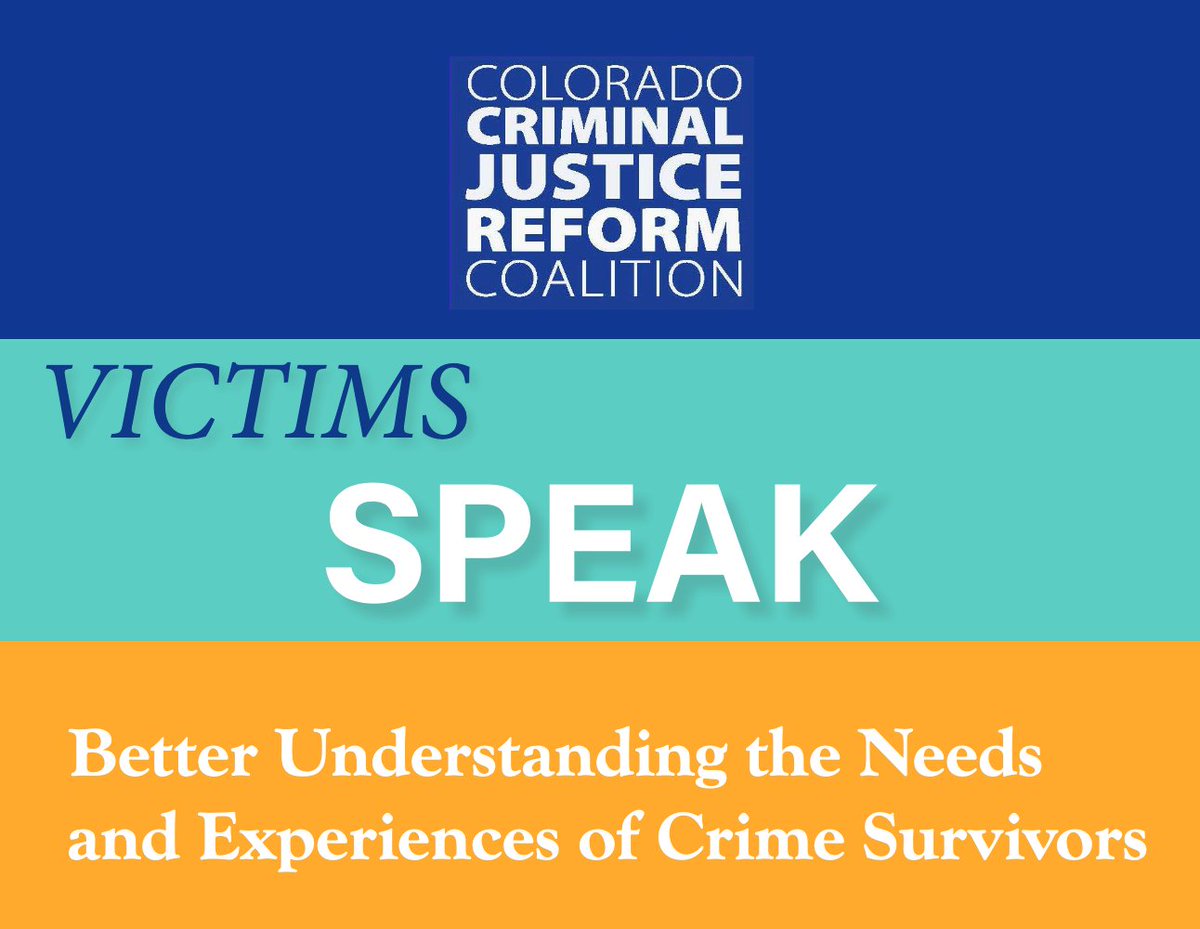

![428/ "Black drug arrests are likelier in predominantly White ... neighborhoods. Unlike their White counterparts, ... Black drug offenders [don't] travel to White neighborhoods to engage in drug offending... Officers' raised suspicion of Blacks in White areas..." ( @DrShytierra) 428/ "Black drug arrests are likelier in predominantly White ... neighborhoods. Unlike their White counterparts, ... Black drug offenders [don't] travel to White neighborhoods to engage in drug offending... Officers' raised suspicion of Blacks in White areas..." ( @DrShytierra)](https://pbs.twimg.com/media/EcGp96XWAAI_k6e.png)


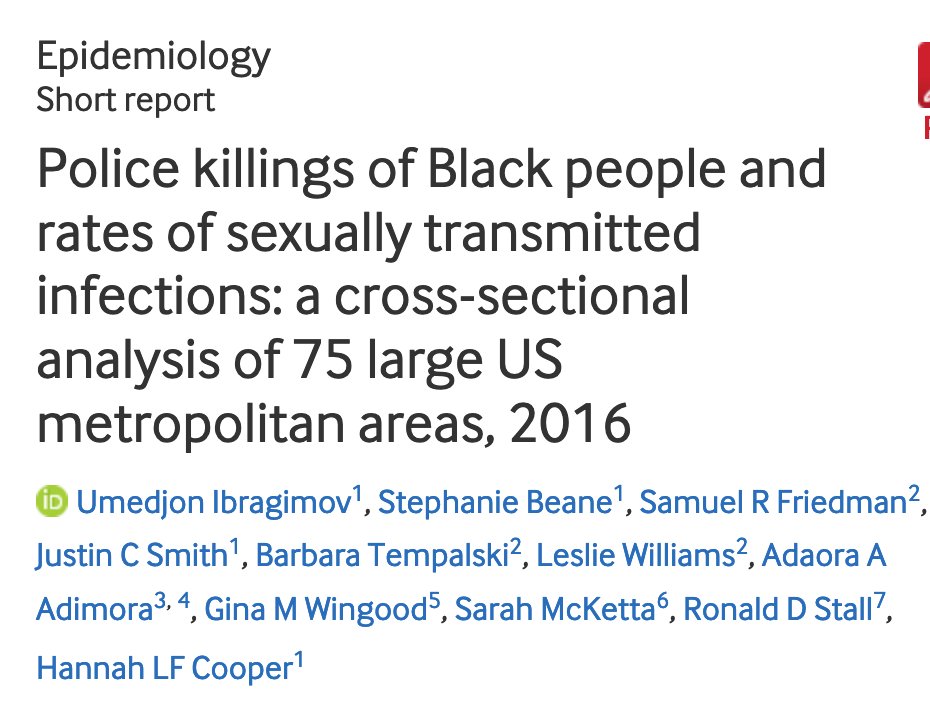
![432/ "The science tells us that if you hire from the human race, you’re going to be hiring biased individuals. There’s an extensive and growing body of research across all professions—... yes, police as well... [But] the stakes for policing are so incredibly high." 432/ "The science tells us that if you hire from the human race, you’re going to be hiring biased individuals. There’s an extensive and growing body of research across all professions—... yes, police as well... [But] the stakes for policing are so incredibly high."](https://pbs.twimg.com/media/EcHZFADXkAAxqCQ.jpg)
![433/ "Pervasive stereotypes linking Blacks and Latinos with violence, crime, and even specifically weapons are likely to cause [police] to make misattributions in...the intentions and behaviors of citizens. This can lead to racially disparate rates of...arrests and use of force." 433/ "Pervasive stereotypes linking Blacks and Latinos with violence, crime, and even specifically weapons are likely to cause [police] to make misattributions in...the intentions and behaviors of citizens. This can lead to racially disparate rates of...arrests and use of force."](https://pbs.twimg.com/media/EcHceGkXsAAUc0_.jpg)

![435/ "[Bias] training may actually normalize stereotyping by promoting the notion that implicit bias is common and expected, thereby decreasing trainees' guilt and motivation to overcome it. ... This possibility could have catastrophic implications for law enforcement." 435/ "[Bias] training may actually normalize stereotyping by promoting the notion that implicit bias is common and expected, thereby decreasing trainees' guilt and motivation to overcome it. ... This possibility could have catastrophic implications for law enforcement."](https://pbs.twimg.com/media/EcHiSKCXgAMemYS.jpg)

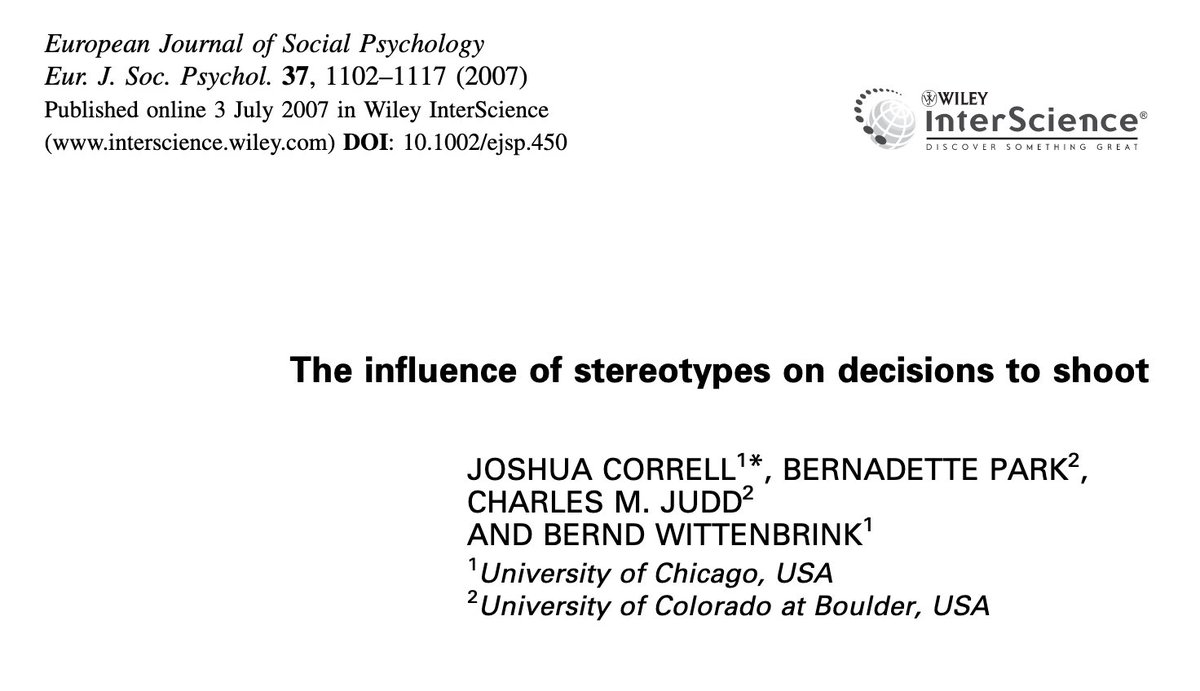
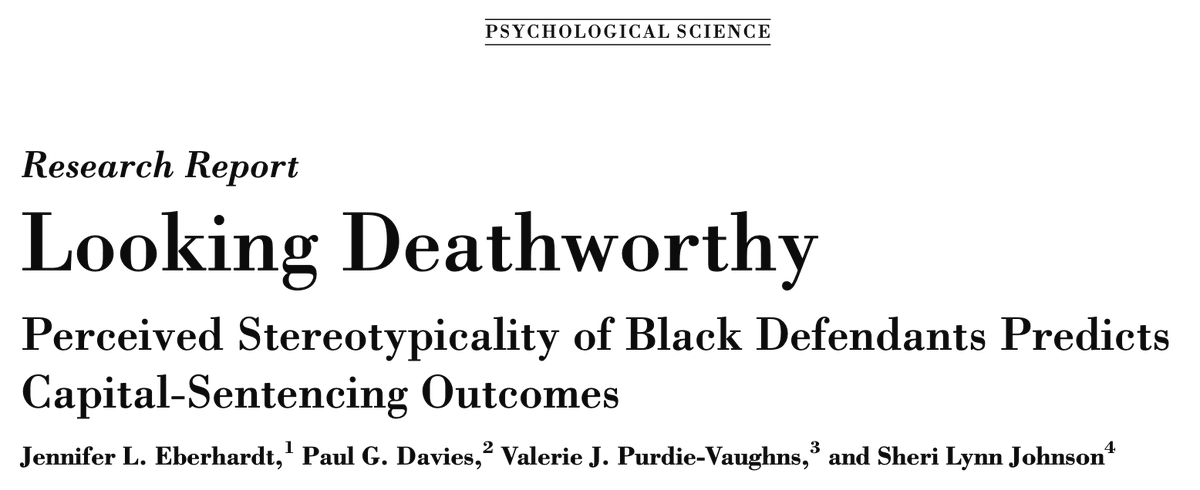

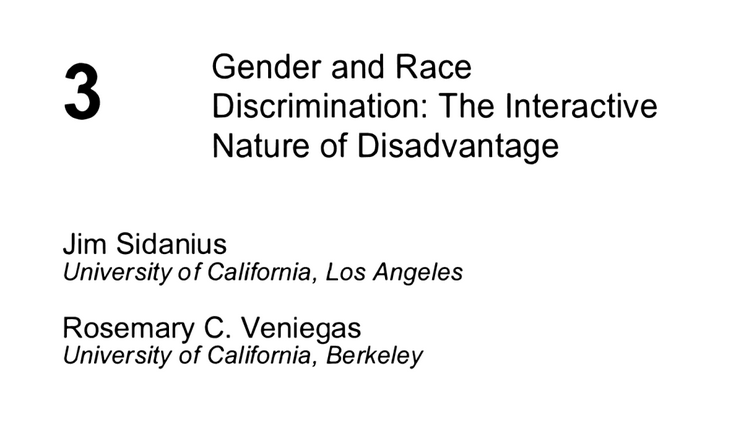
![441/ "Governments paid approximately 99.98% ... [Police] almost never contributed anything to [civil rights violations] settlements or judgments—even when indemnification was prohibited...and even when officers were disciplined, terminated, or prosecuted for their conduct." 441/ "Governments paid approximately 99.98% ... [Police] almost never contributed anything to [civil rights violations] settlements or judgments—even when indemnification was prohibited...and even when officers were disciplined, terminated, or prosecuted for their conduct."](https://pbs.twimg.com/media/EcLVcmiX0AAmJYh.jpg)
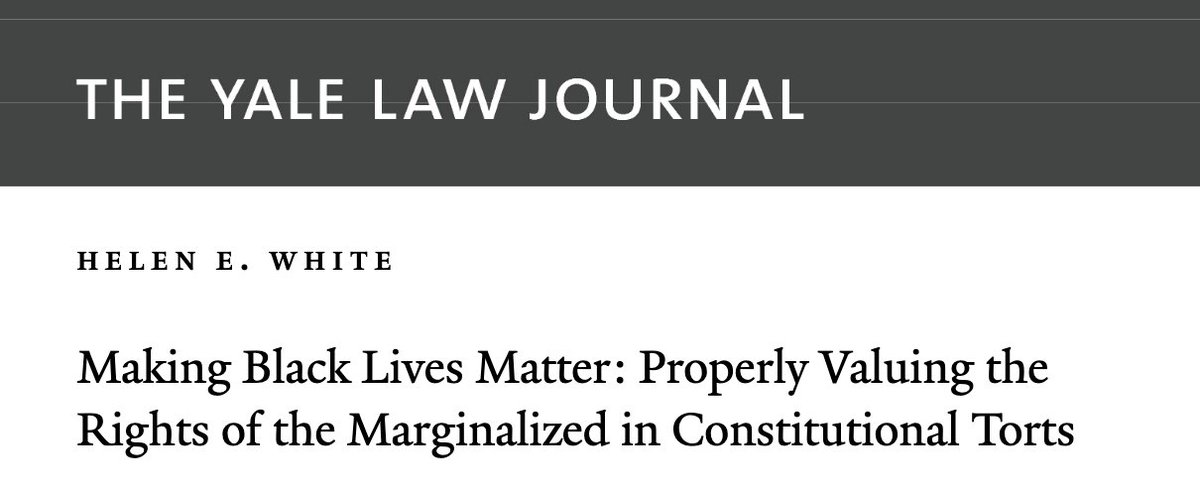
![443/ "Virtually all white officers (92%) but only 29% of their black colleagues say that the country has made the changes needed to assure equal rights for blacks. ... The views of white officers differ from those of their black colleagues ... [and] from those of whites overall." 443/ "Virtually all white officers (92%) but only 29% of their black colleagues say that the country has made the changes needed to assure equal rights for blacks. ... The views of white officers differ from those of their black colleagues ... [and] from those of whites overall."](https://pbs.twimg.com/media/EcLd0wNX0AEQ9Gr.jpg)

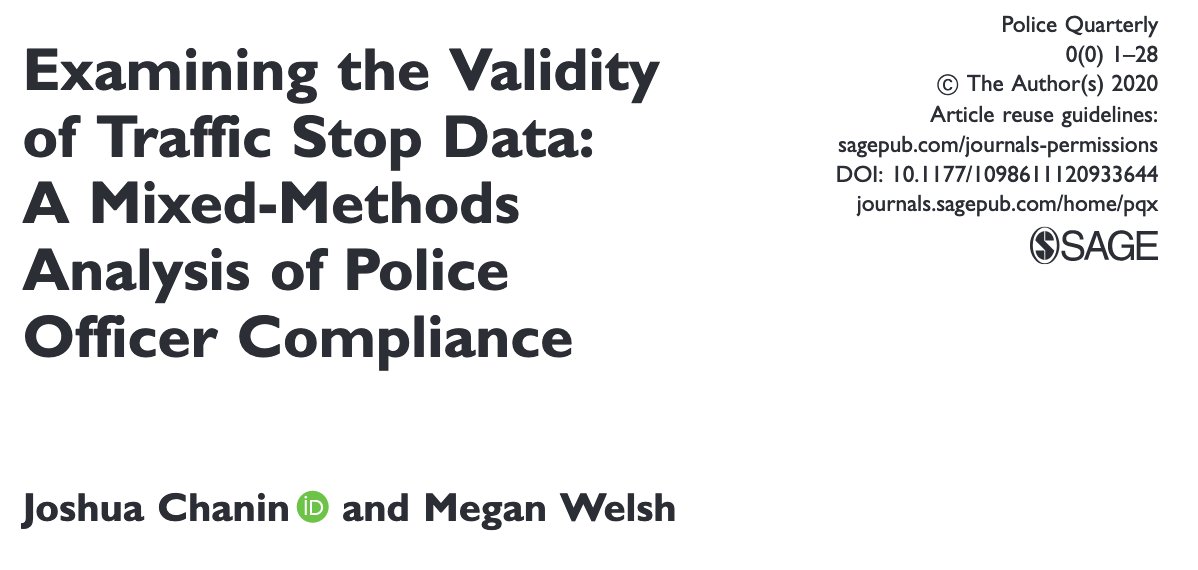




![450/ "Officers...with a greater proportion of colleagues previously named in use of force complaints were more likely to be named in subsequent... complaints." & "Must move beyond a focus on individual officers... [toward] deviant police networks." ( @ML_Ouellet @sadaf_hashimi) 450/ "Officers...with a greater proportion of colleagues previously named in use of force complaints were more likely to be named in subsequent... complaints." & "Must move beyond a focus on individual officers... [toward] deviant police networks." ( @ML_Ouellet @sadaf_hashimi)](https://pbs.twimg.com/media/EcMDwzPXsAIRThk.jpg)
![451/ "Through our study findings, we can paint a clear picture of the declines in dangerousness [of policing]... We can also provide an important historical context for the... perceived 'war on cops' in recent years, and our...findings reveal no evidence to support those claims." 451/ "Through our study findings, we can paint a clear picture of the declines in dangerousness [of policing]... We can also provide an important historical context for the... perceived 'war on cops' in recent years, and our...findings reveal no evidence to support those claims."](https://pbs.twimg.com/media/EcMsyssWAAIzFFY.jpg)


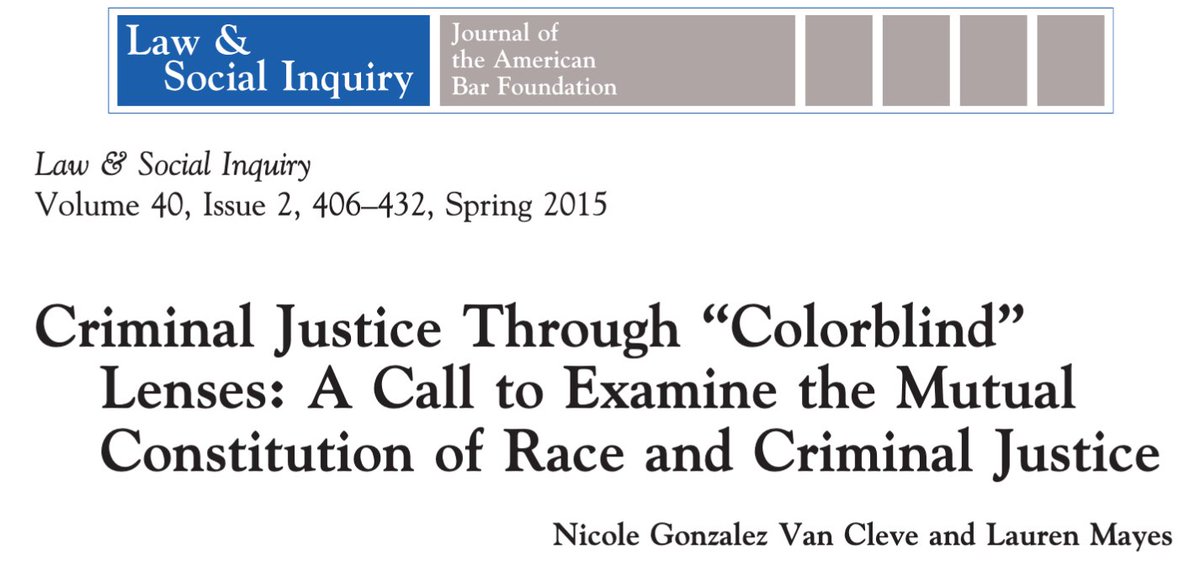

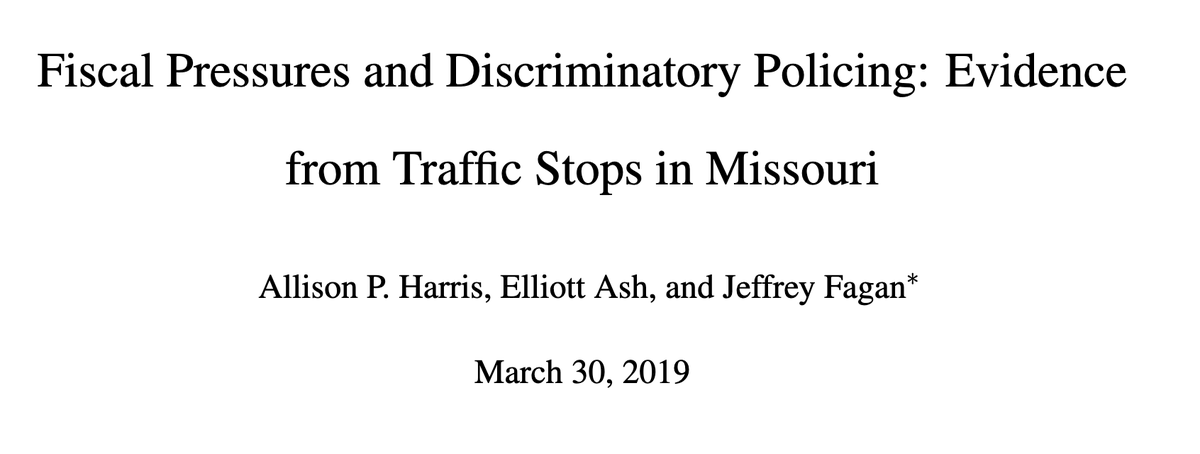
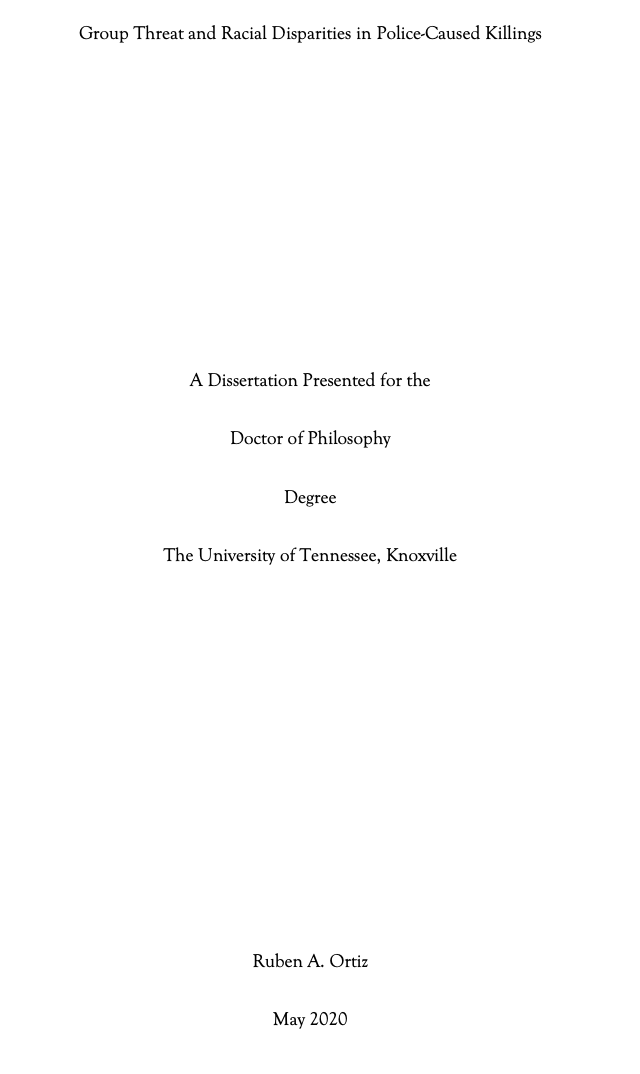

![459/ "Police officers, comedians, and white supremacists all frame their use of racist jokes as an attack against 'political correctness.'" & "Racist humor facilitates bonding...among white officers, at the same time...they engage in the dehumanization of nonwhite [citizens]." 459/ "Police officers, comedians, and white supremacists all frame their use of racist jokes as an attack against 'political correctness.'" & "Racist humor facilitates bonding...among white officers, at the same time...they engage in the dehumanization of nonwhite [citizens]."](https://pbs.twimg.com/media/EcVWprUWsAABw6F.png)
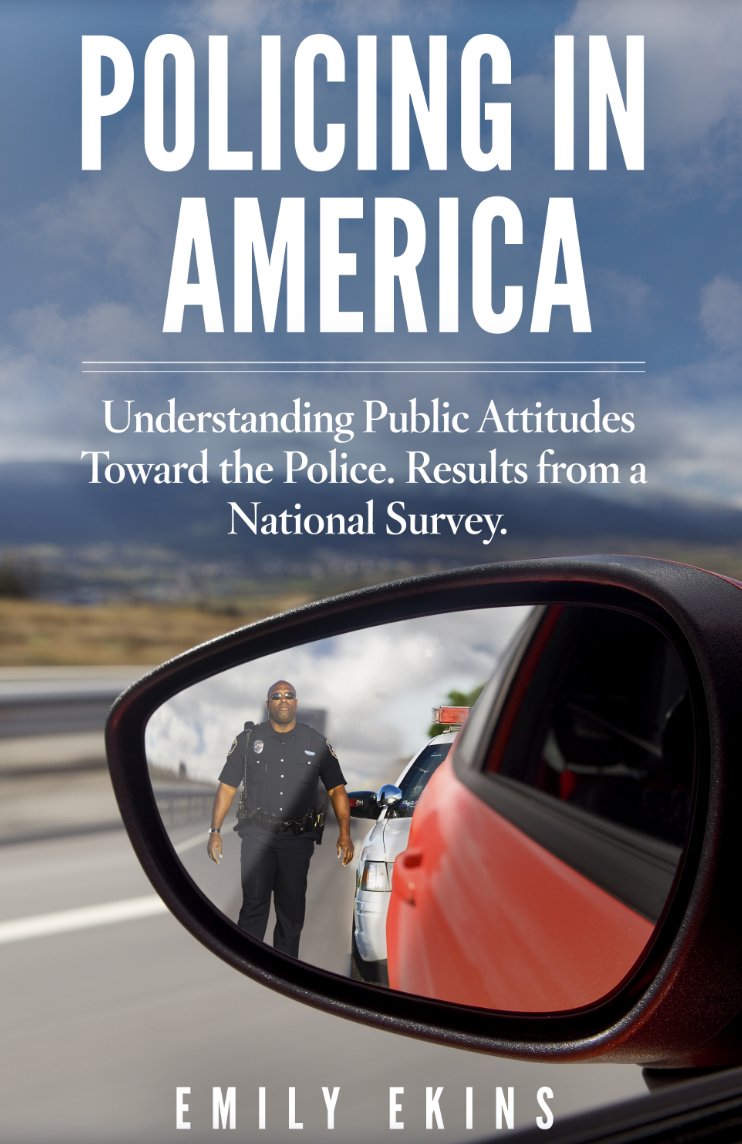
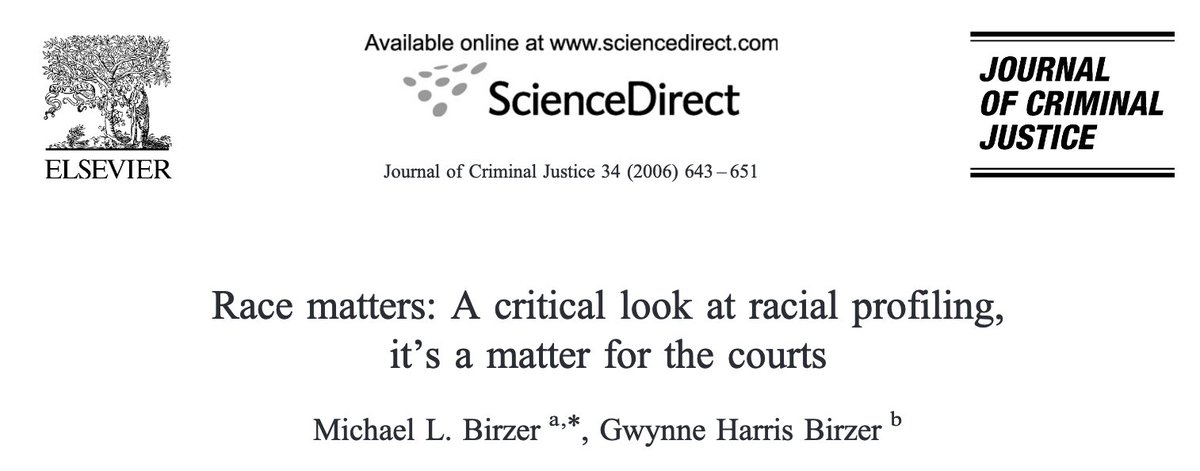
![462/ "African Americans and Latinos who had been stopped and disrespected by the police were less willing to assist them and less likely to believe that the police care ... Contact with the police, by itself, had no negative effects on attitudes... police treatment [did]." 462/ "African Americans and Latinos who had been stopped and disrespected by the police were less willing to assist them and less likely to believe that the police care ... Contact with the police, by itself, had no negative effects on attitudes... police treatment [did]."](https://pbs.twimg.com/media/EcV-r59XkAI0u4F.jpg)
![463/ "Policing of blacks has been disproportionately aggressive for crimes associated with high levels of police discretion... Racial profiling [is] not limited to...unwarranted searches, but extend[s] to a higher propensity to arrest blacks given a marginal amount of evidence." 463/ "Policing of blacks has been disproportionately aggressive for crimes associated with high levels of police discretion... Racial profiling [is] not limited to...unwarranted searches, but extend[s] to a higher propensity to arrest blacks given a marginal amount of evidence."](https://pbs.twimg.com/media/EcWEVQxX0AQ4PS5.png)
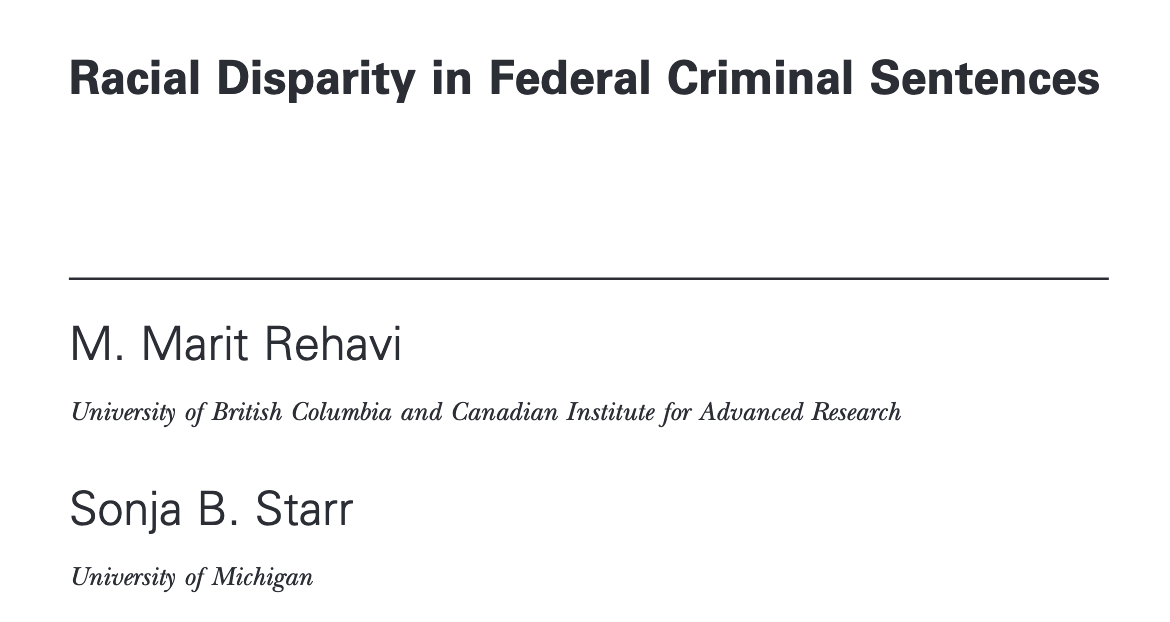
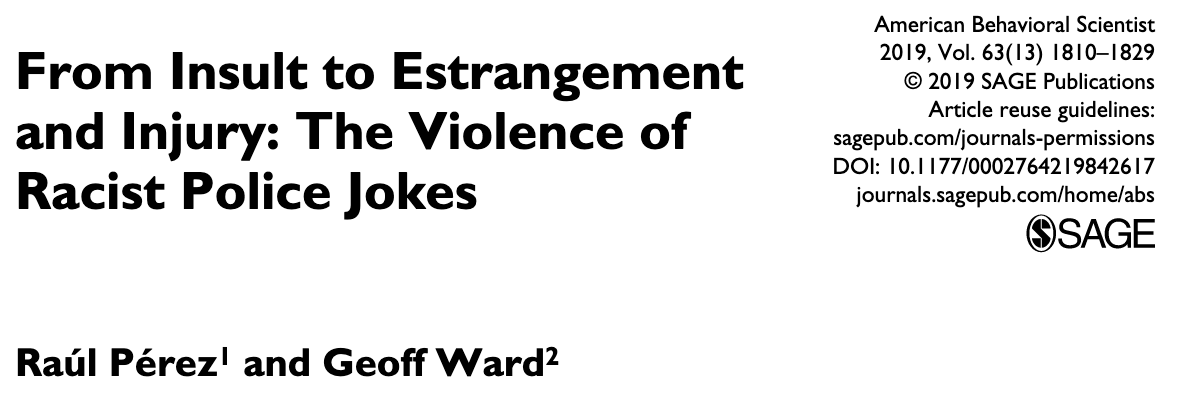
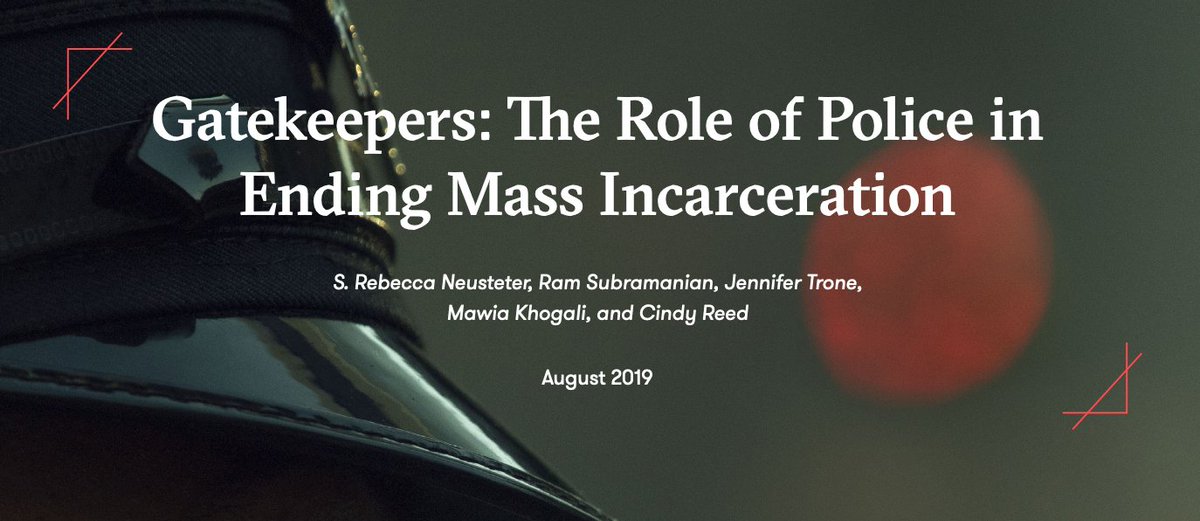
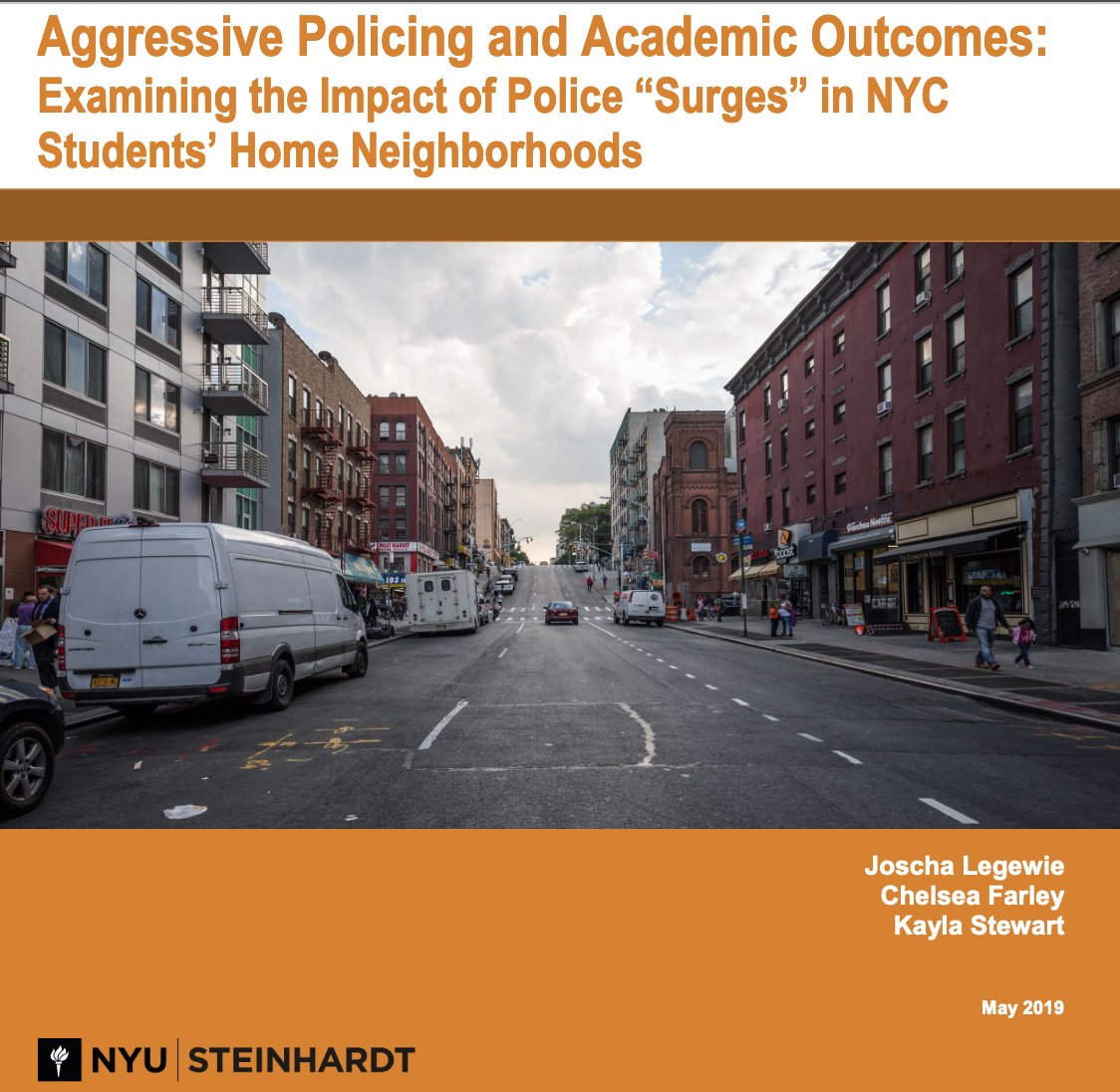


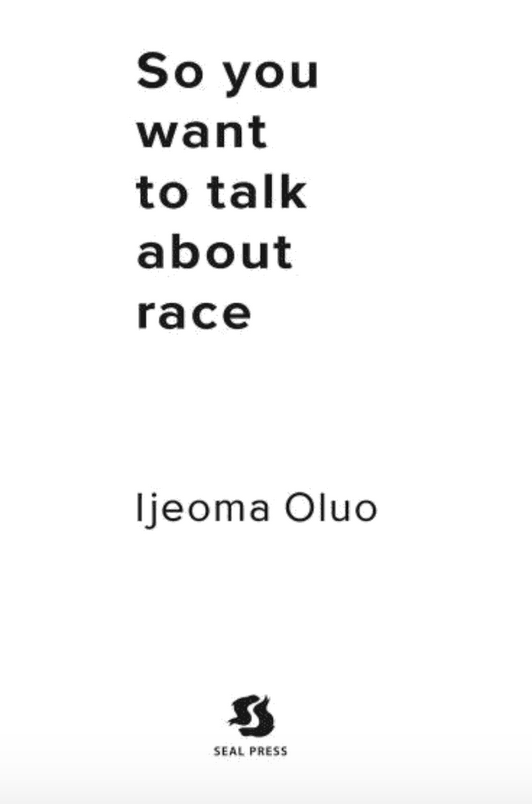

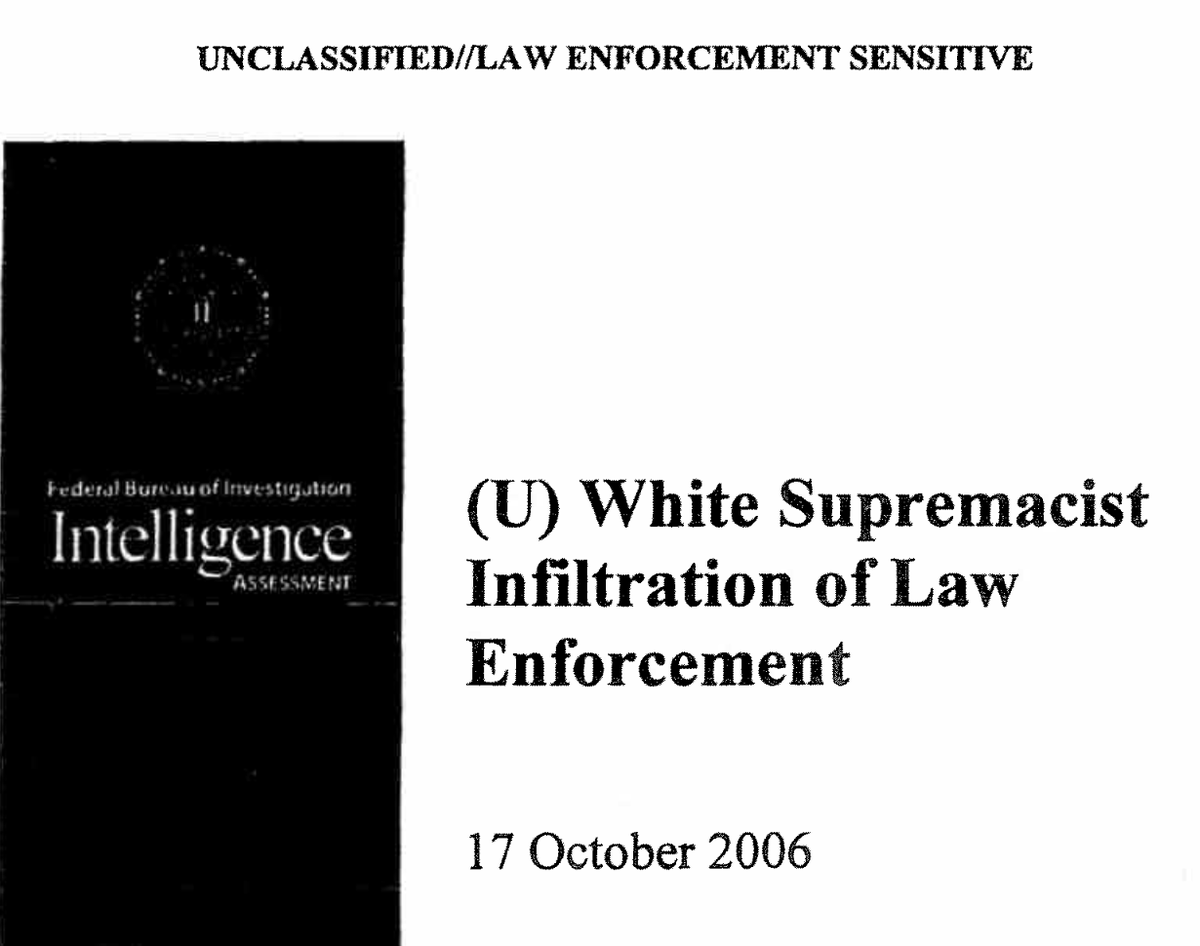
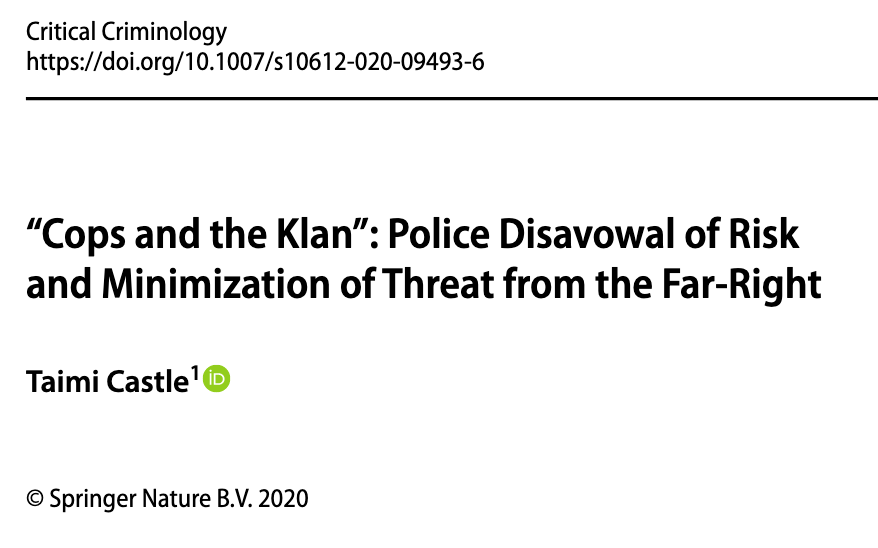
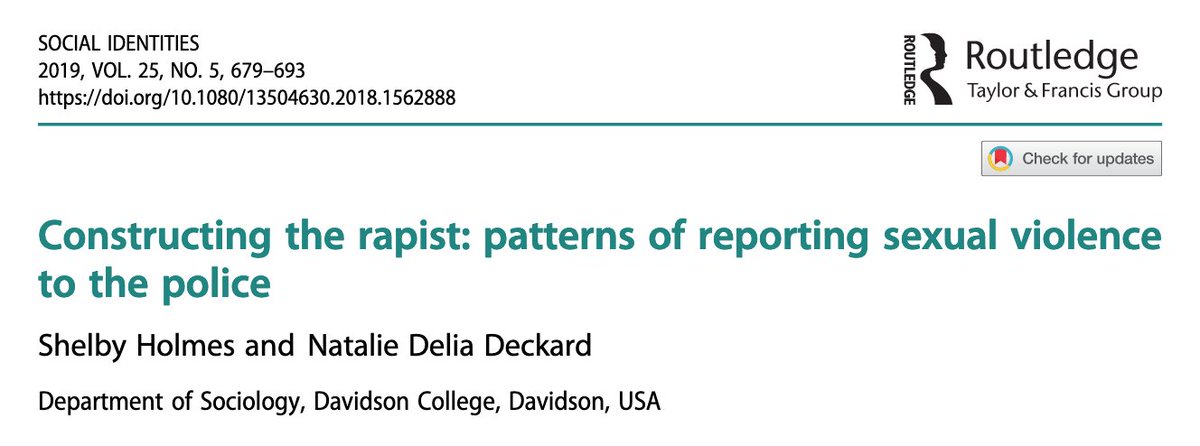
![475/ "The law-and-order policy of the United States... focused only on the visible delinquency of the lower class... as opposed to the veiled criminality of the well-to-do... [targeting] retail sales and consumption of drugs in segregated Black and Latino neighborhoods." 475/ "The law-and-order policy of the United States... focused only on the visible delinquency of the lower class... as opposed to the veiled criminality of the well-to-do... [targeting] retail sales and consumption of drugs in segregated Black and Latino neighborhoods."](https://pbs.twimg.com/media/EccKrraWsAAYJoz.png)
![476/ "Restrict[ing] the federal transfer of military equipment to local police departments...gives the surface appearance of answering the radical challenges presented by insurgent protest [but] it clearly does not actually address the racism and...brutality which sparks revolt." 476/ "Restrict[ing] the federal transfer of military equipment to local police departments...gives the surface appearance of answering the radical challenges presented by insurgent protest [but] it clearly does not actually address the racism and...brutality which sparks revolt."](https://pbs.twimg.com/media/EccLkk5XkAISiZm.png)

![478/ "White male participants viewed the Black victim as more promiscuous than the White victim when the perpetrator was White." & "The [incorrect] stereotype of the Black male sexual predator of White women was prevalent for the majority of the sample." 478/ "White male participants viewed the Black victim as more promiscuous than the White victim when the perpetrator was White." & "The [incorrect] stereotype of the Black male sexual predator of White women was prevalent for the majority of the sample."](https://pbs.twimg.com/media/EccP-CPXkAAKgEA.jpg)
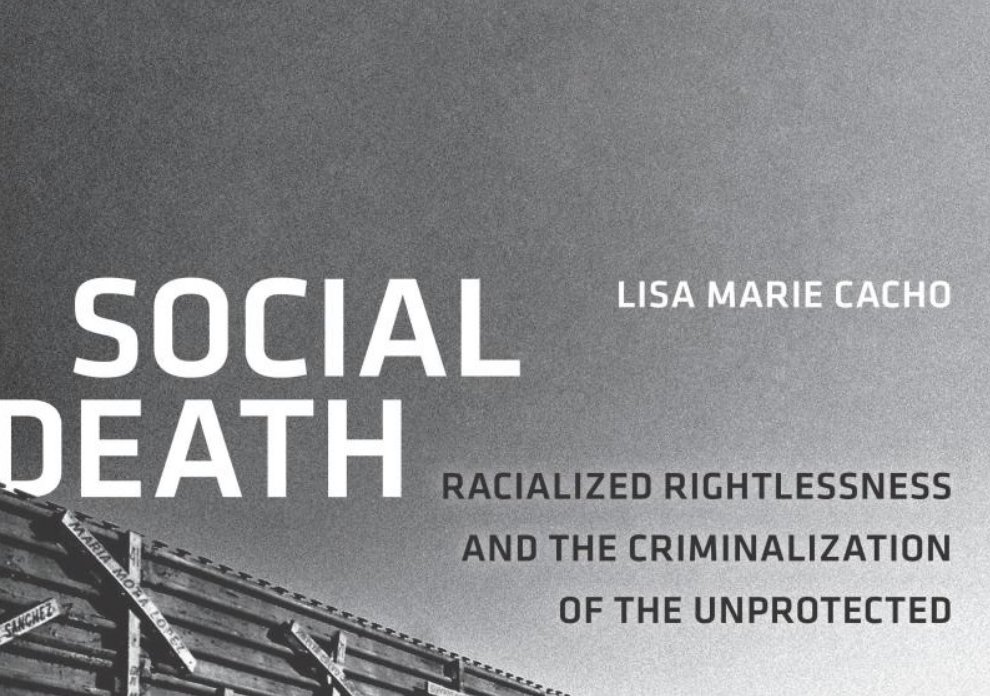
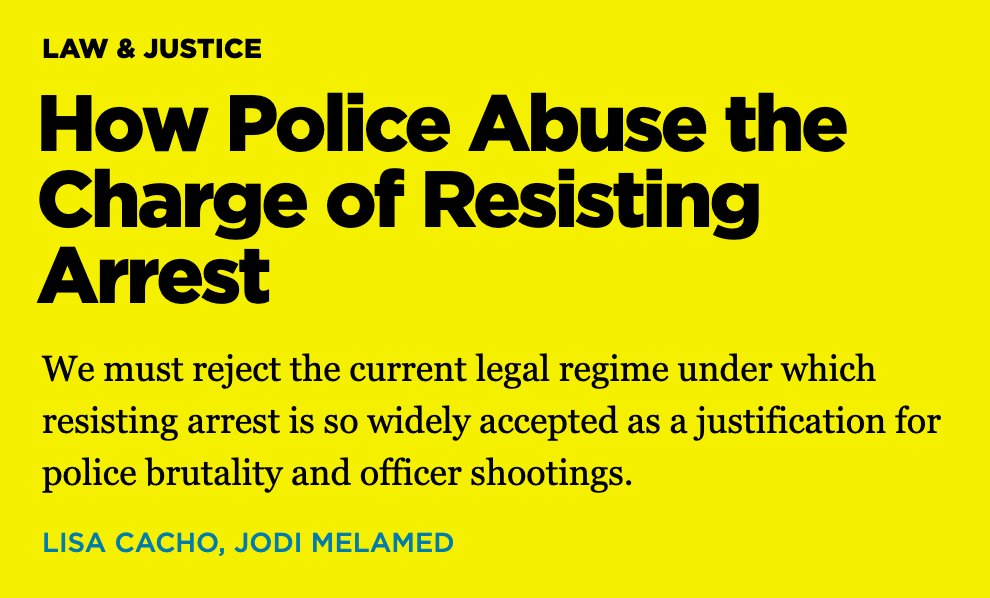
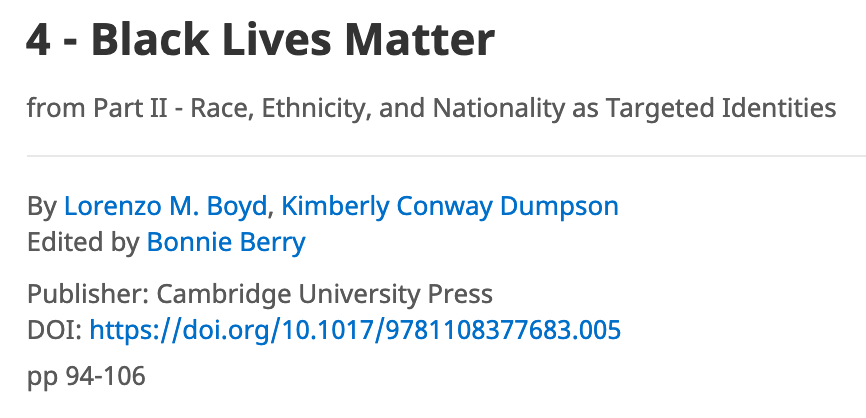

![482/ Geographic information systems [GIS] focus on "microspatial 'hotspots' of crime" & "Contrary to official rhetoric about the objectivity and precision of GIS, there is no evidence that they have had meaningful implications for the racialized character of policing." 482/ Geographic information systems [GIS] focus on "microspatial 'hotspots' of crime" & "Contrary to official rhetoric about the objectivity and precision of GIS, there is no evidence that they have had meaningful implications for the racialized character of policing."](https://pbs.twimg.com/media/Ecfotw_WkAA0BQK.jpg)
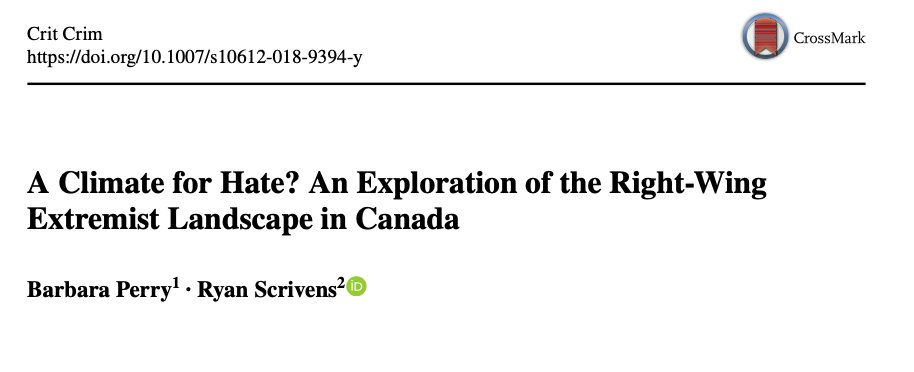




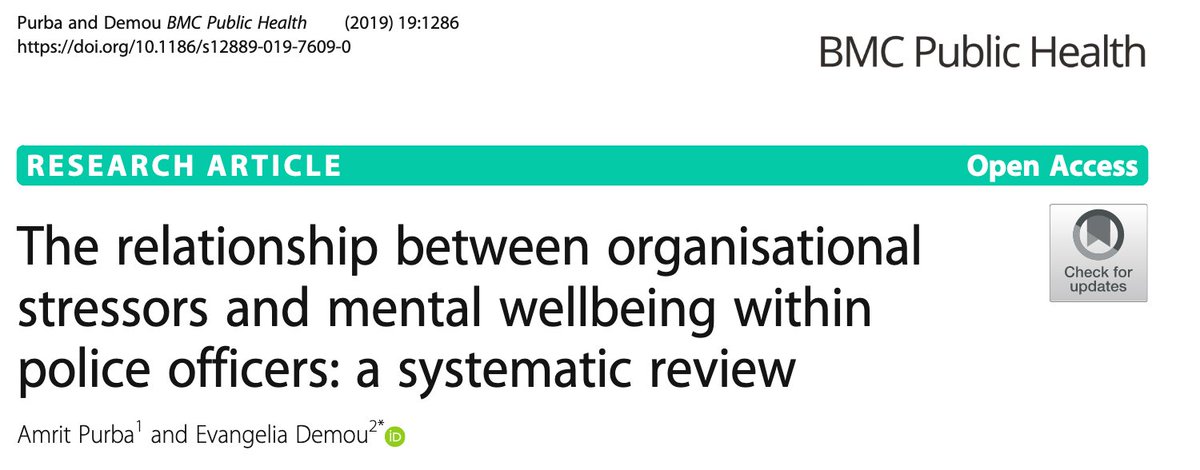

![490/ "Decades of criminology research have shown that crime reports... primarily document law enforcement’s response to the reports they receive... rather than [a]... complete record of ... crimes that occur... As a result, current systems reinforce bias and sanitize injustice." 490/ "Decades of criminology research have shown that crime reports... primarily document law enforcement’s response to the reports they receive... rather than [a]... complete record of ... crimes that occur... As a result, current systems reinforce bias and sanitize injustice."](https://pbs.twimg.com/media/Ecg0spjWAAErBmW.jpg)

![492/ "Racism can impact health via several recognized pathways [including]... contact with police." "Racism is significantly related to ... poor mental health." & "This study is the most comprehensive meta-analysis on racism and health to date." 492/ "Racism can impact health via several recognized pathways [including]... contact with police." "Racism is significantly related to ... poor mental health." & "This study is the most comprehensive meta-analysis on racism and health to date."](https://pbs.twimg.com/media/Ech6oxLWkAA-9il.png)
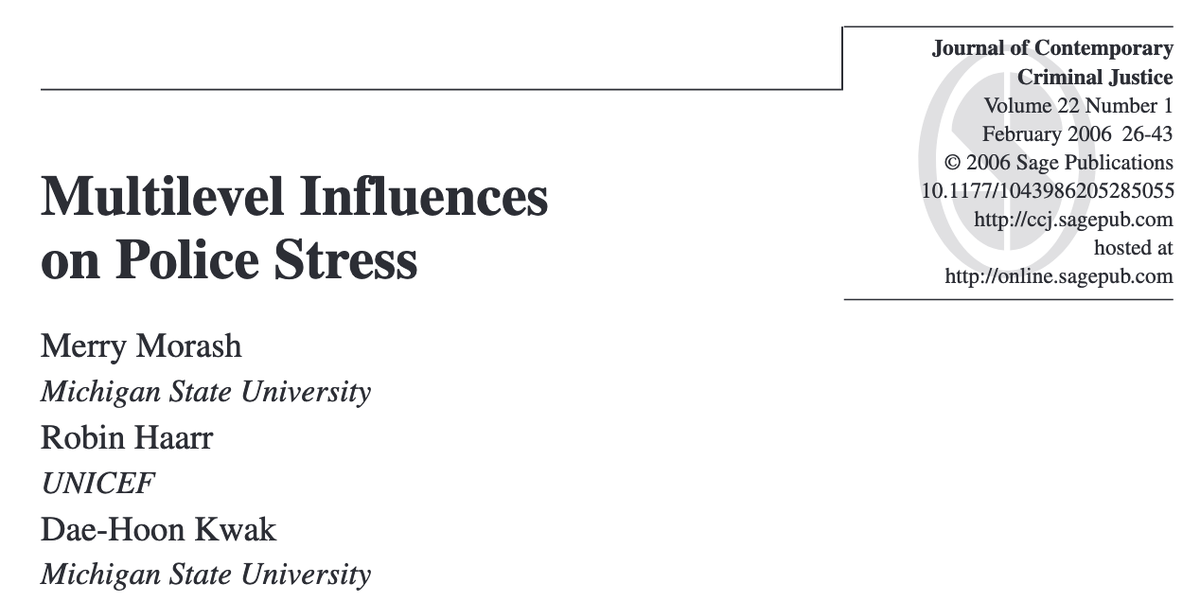

![495/ "In three recent surveys of forensic evaluators [who render reports for judges used for, e.g., criminal responsibility and sentencing decisions], 91–95% of respondents were White." 495/ "In three recent surveys of forensic evaluators [who render reports for judges used for, e.g., criminal responsibility and sentencing decisions], 91–95% of respondents were White."](https://pbs.twimg.com/media/EciE9CdWkAA0L5w.png)

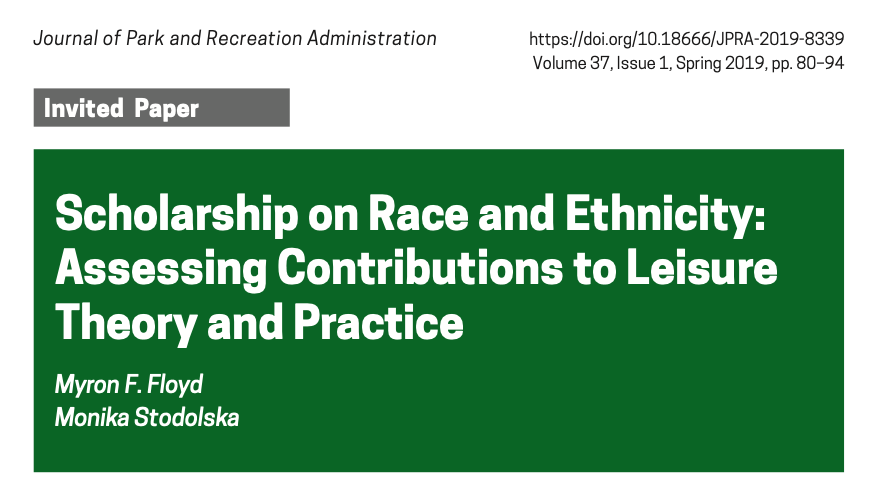

![499/ "We exploit quasirandom variation in supervisor assignment and find that white supervisors are less likely to nominate black officers [for an award] than white... officers... control[ling] for officer characteristics, including experience, arrest record, and misconduct." 499/ "We exploit quasirandom variation in supervisor assignment and find that white supervisors are less likely to nominate black officers [for an award] than white... officers... control[ling] for officer characteristics, including experience, arrest record, and misconduct."](https://pbs.twimg.com/media/EciTR_VXoAEPbAr.png)

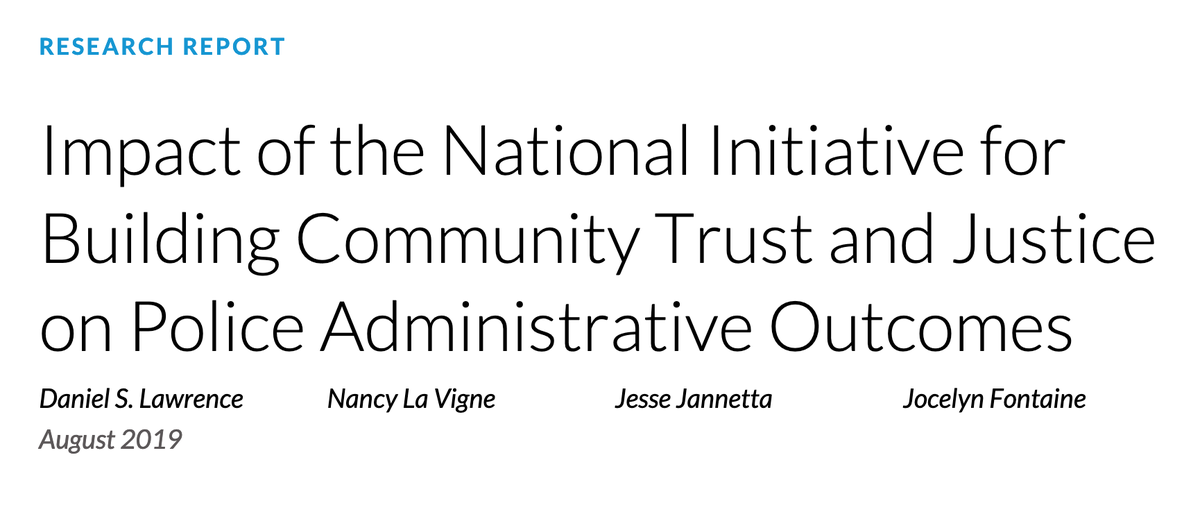

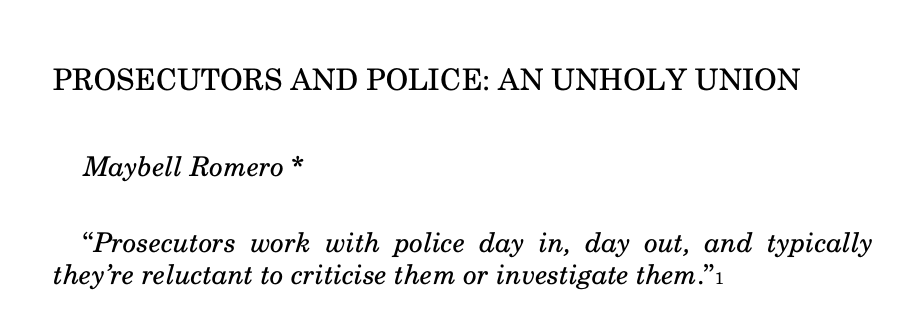
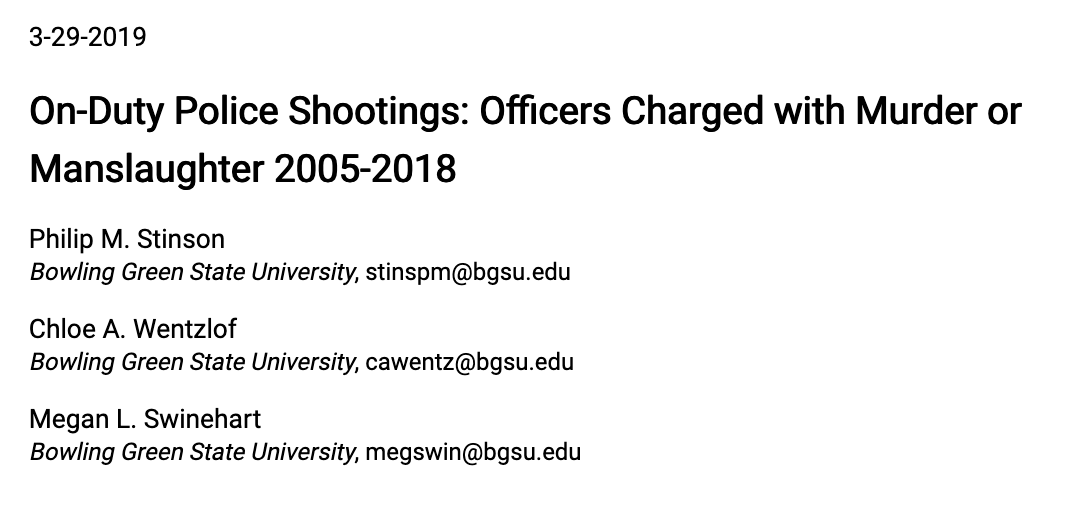
![505/ "[British] Black and minority ethnic officers report finding it more difficult to be promoted or to join specialisms, to have claims of discrimination taken seriously, and to fit into police social circles." 505/ "[British] Black and minority ethnic officers report finding it more difficult to be promoted or to join specialisms, to have claims of discrimination taken seriously, and to fit into police social circles."](https://pbs.twimg.com/media/EclOPGVWoAAZkUM.png)
![506/ "[In Paris,] direct discrimination on the basis of physical appearance is coupled with indirect discrimination based on a set of distinguishing features which... [are] distributed in such a way that ... they result in disparities between the different ethnic groups." 506/ "[In Paris,] direct discrimination on the basis of physical appearance is coupled with indirect discrimination based on a set of distinguishing features which... [are] distributed in such a way that ... they result in disparities between the different ethnic groups."](https://pbs.twimg.com/media/EclQphqXoAEVnkc.png)
![507/ "Higher levels of everyday discrimination were associated with shorter telomeres [marker of premature morbidity] among women who reported that they kept experiences of racism to themselves. There was no association among women who discussed their experiences...with others." 507/ "Higher levels of everyday discrimination were associated with shorter telomeres [marker of premature morbidity] among women who reported that they kept experiences of racism to themselves. There was no association among women who discussed their experiences...with others."](https://pbs.twimg.com/media/EclUQeoWoAAPb4e.png)

![509/ "The models consistently demonstrated that more educated [BA] and White [Texas police] chiefs identified the maintenance of law and order as more important, whereas less educated and non-White chiefs emphasized the maintenance of relationships and adoption of innovations." 509/ "The models consistently demonstrated that more educated [BA] and White [Texas police] chiefs identified the maintenance of law and order as more important, whereas less educated and non-White chiefs emphasized the maintenance of relationships and adoption of innovations."](https://pbs.twimg.com/media/Ecmb9x6XsAsRRz5.png)
![510/ "Getting cover... [is] the appearance of intimacy with young women—for communicating innocence to onlooking officers. If lesbian and gay youth hope to avoid police scrutiny, they must...conform to the standards of heterosexual romance...regulation over gender and sexuality." 510/ "Getting cover... [is] the appearance of intimacy with young women—for communicating innocence to onlooking officers. If lesbian and gay youth hope to avoid police scrutiny, they must...conform to the standards of heterosexual romance...regulation over gender and sexuality."](https://pbs.twimg.com/media/EcmeILdX0AApb3z.png)



